May 31, 2019
El Camino De Santiago || Week One
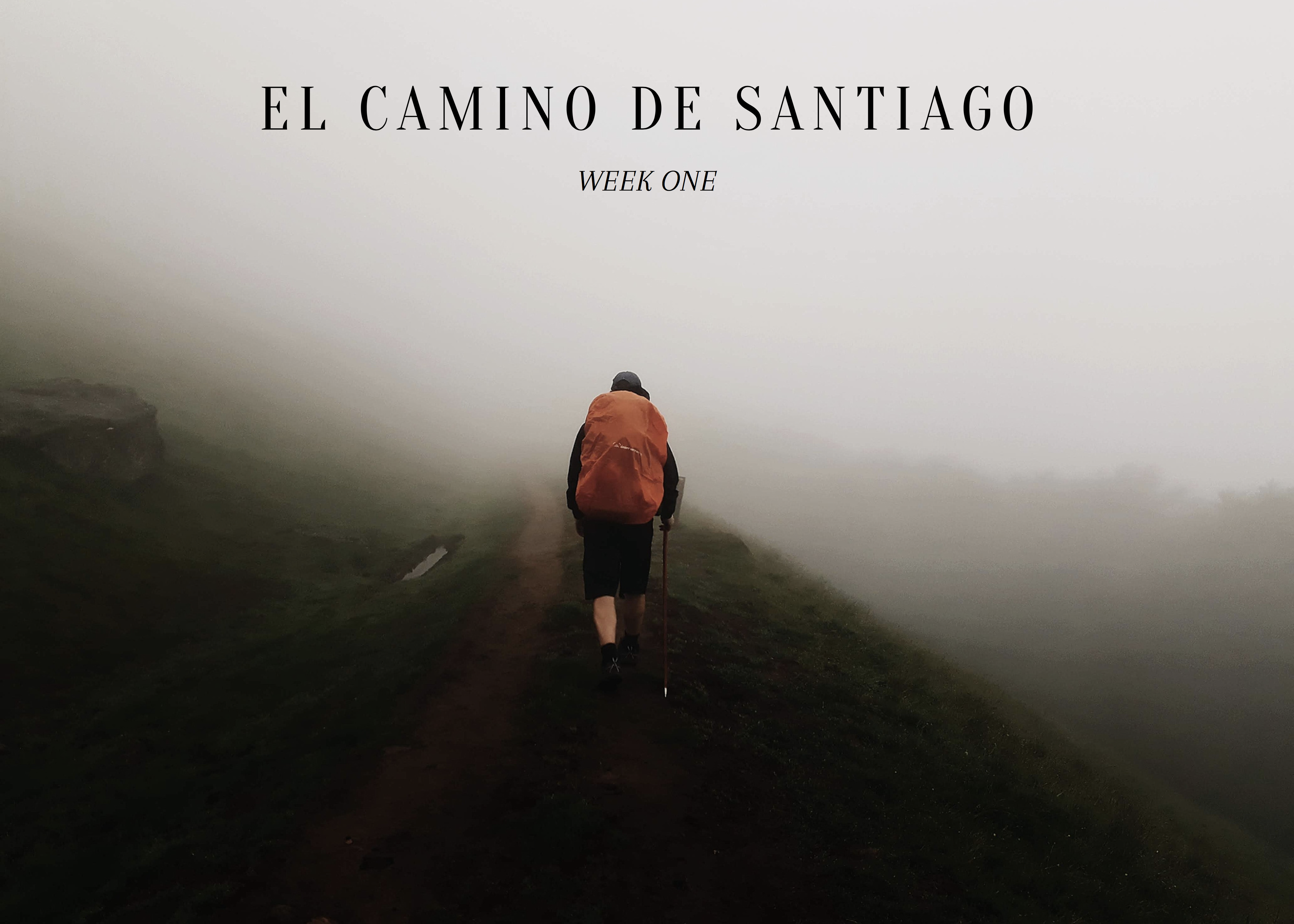
|| Pre-Camino Trip: France || WEEK TWO || WEEK THREE ||
Last summer I did the craziest thing of my life so far: I walked 500 miles across Northern Spain as a pilgrim on the Camino de Santiago. My 18-year-old brother, John Paul, came with me. I had just graduated college and he had just graduated high school so it was the perfect graduation trip for both of us to do together.
I have been thinking about the best way to blog this and I thought it might be simpler to just share a bunch of pictures from the first week in no particular order and do a general re-cap….but my OCD couldn’t really handle that and I realized I had no choice but to share this trip in a sequential and organized manner. So, (as crazy long as this might be) I’m going to break down our entire trip, week by week and day by day with pictures and stories. Each week will be its own separate blog post. Once I’ve blogged the whole trip, I’ll start some blog posts with more specific educational information for anyone who might want to do this trip in the future.
We arrived in St. Jean-Pied-de-port on Wednesday, June 27th in the late afternoon and after finding our very first albergue (the hostels exclusively for pilgrims to use) we made our way to the official Camino office on the main street where we got our “Credencial del Peregrino” aka, our Pilgrim Passport, as well as the shells to put on our backpacks. We stopped in one of the many outfitting stores to buy a few last minute essentials – a rain cover for JP’s backpack (mine had come with one, his hadn’t), a camping spork, and a guidebook. I honestly wasn’t sure if I was going to buy a guidebook but once I was there in the moment and the full weight of what we were about to embark on had hit me, I knew I wanted an actual physical guidebook. I probably could have found one cheaper online if I had bought it ahead of time (this one was 25€) but in the end, I saved myself hours of comparison and worry about getting the perfect guide book seeing as there were only two or three options in English in the store. I don’t remember why this one won out of the three options, but it did and honestly, I loved it. I used it every single day and can’t imagine doing the Camino without it. We didn’t follow it’s recommended stops 100%, as it gets you to Santiago in 31 days and we took 35, but we did follow it the majority of the time and even when we stopped ahead of a particular day’s schedule it was incredibly useful (more on this when I go into details of the Camino in future posts). After all of our shopping was done and we were as prepared as we could be for starting this crazy thing, we spent some time exploring the beautiful town of St. Jean-Pied-de-Port and then treated ourselves to dinner in one of the restaurants in town before heading back to our albergue for an early bedtime.
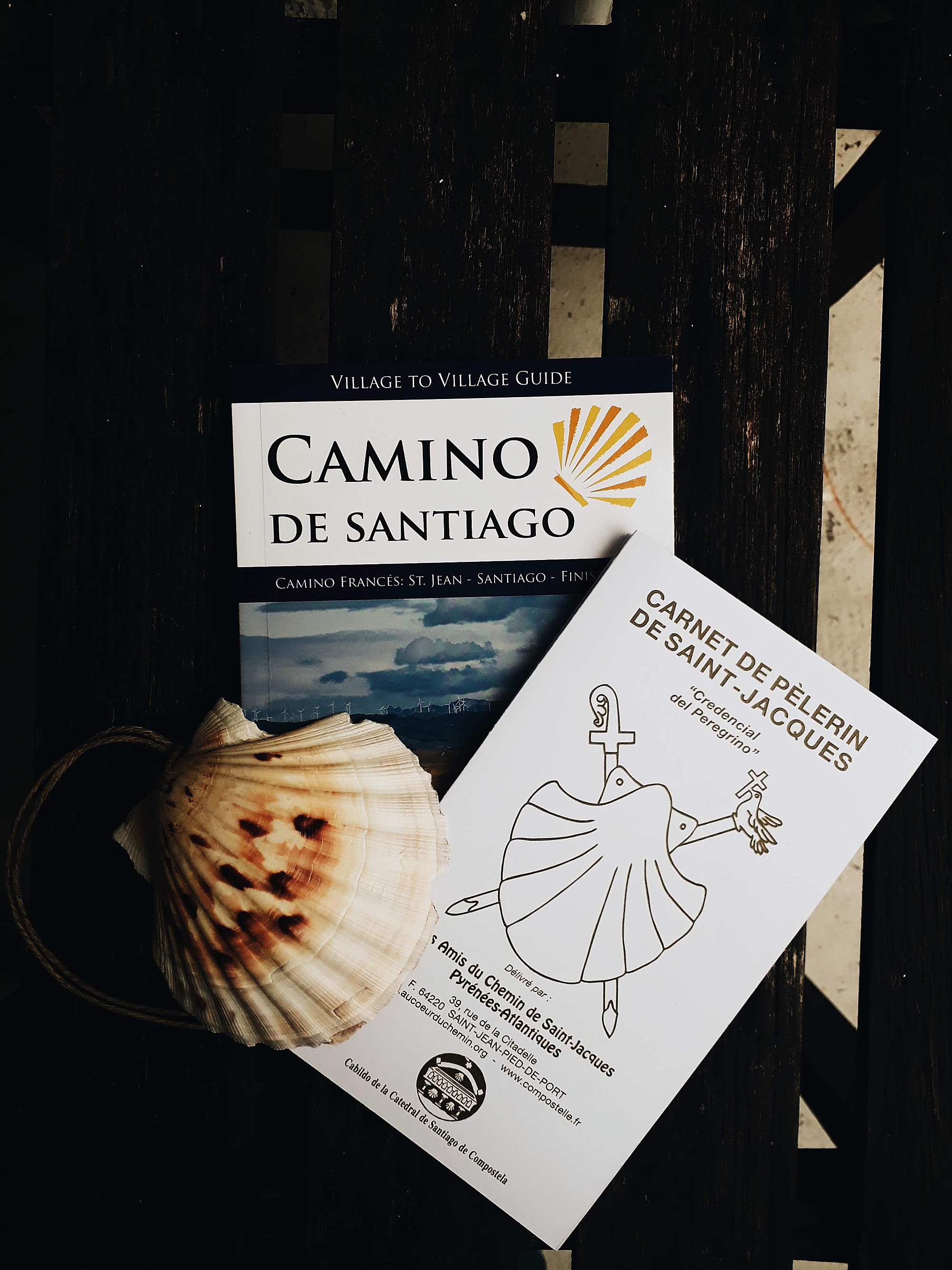
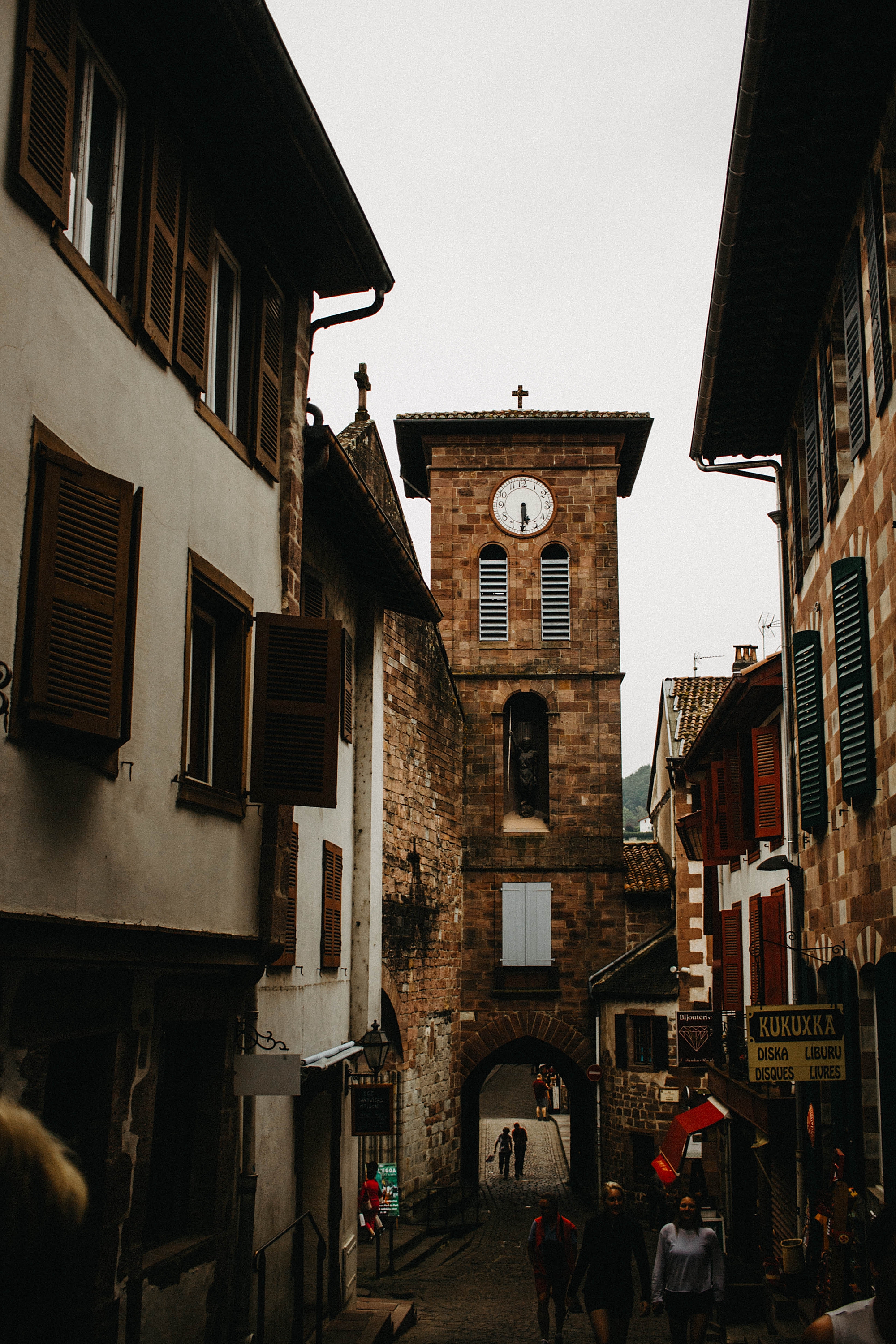
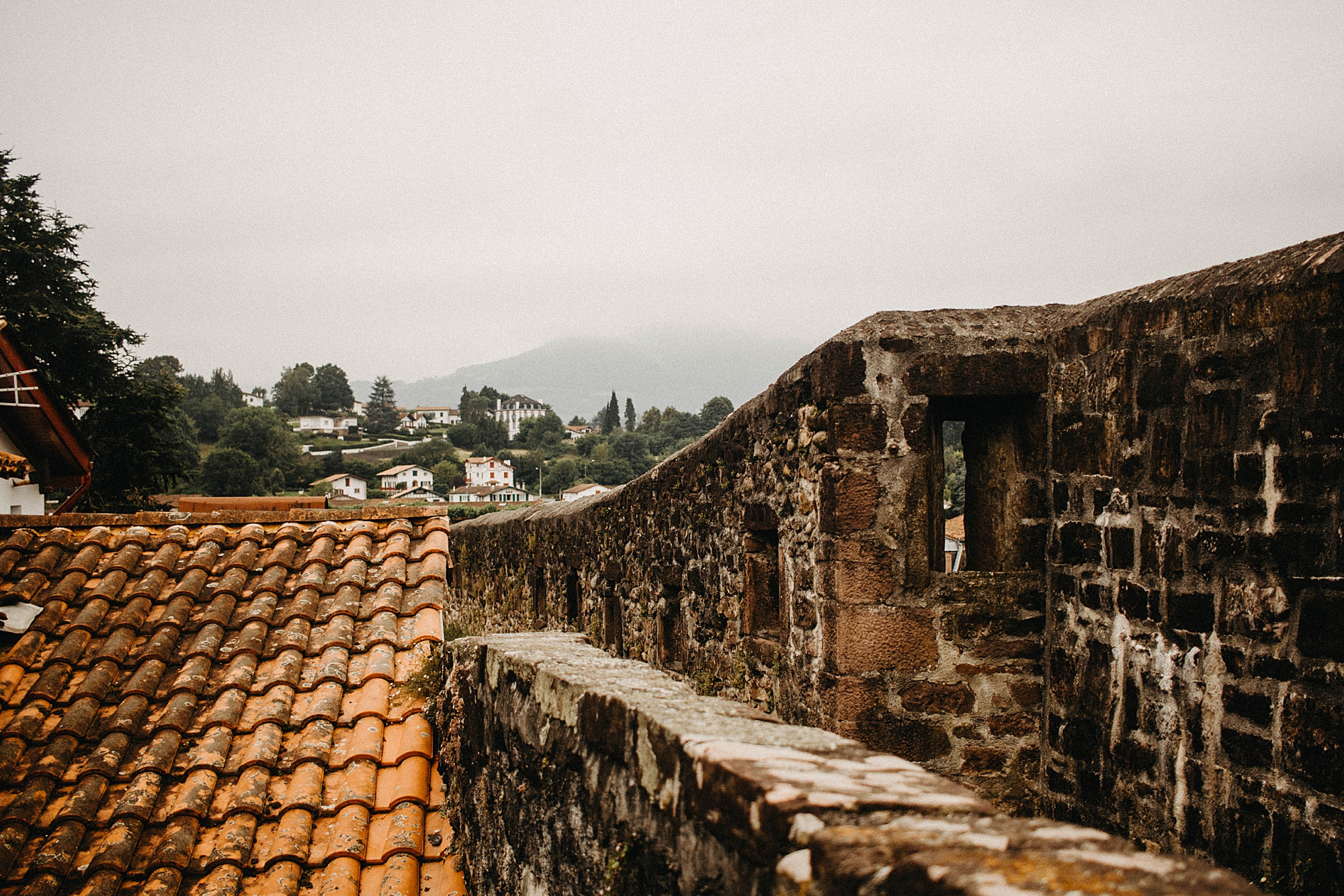
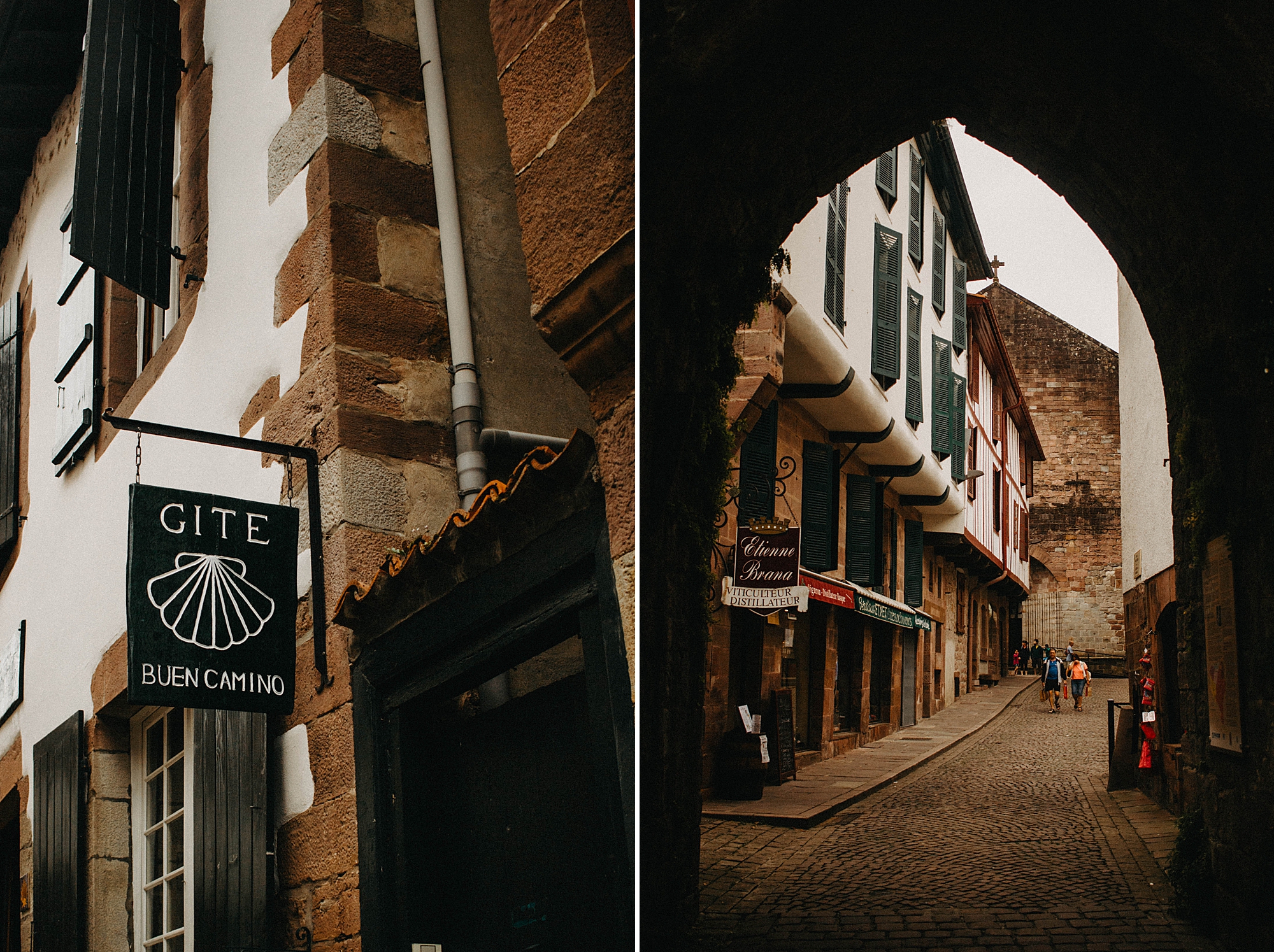

DAY ONE: St. Jean-Pied-de-Port to Roncesvalles || ≈ 26km (16 mi)
Probably the most physically challenging day of the entire Camino just happens to be the very first day. (Maybe it’s the whole, get the worst part out of the way first, idea?) You must cross the Pyrenees mountains (climbing up just under 4000ft and then climbing down another 1300ft) over the course of about 16 miles. There are no towns between St. Jean-pied-de-port and Roncesvalles and only one official stopping point with one cafe and restroom and it’s located only 4-5 miles into your hike, which means the last 11 miles have absolutely no sign of civilization and no places for more food/warmth/comfort/etc. This is actually highly unusual for the Camino as almost every day we would be entering a town every 3-4 miles. Hence why this day was so hard, it was one of the farthest distances for one day, by far the hardest climb for one day, and had the least amount of stopping points.
If you are lucky enough to start your Camino on a gorgeous clear day, you are rewarded for your hard physical exertion by the most stunning views, or so I’m told. We were not so lucky. It was misty, wet, foggy and cold the entire day and often so foggy that we could barely make out the path in front of us let alone any views. As a result, I kept my camera safely in its ziplock bag inside my backpack all day and so my only photos from the day are from my phone. (Hence the poorer quality) but I’m grateful I took pictures of this day regardless of the quality.
So very early (I’m talking like 5:45am, maybe 6am) on Thursday morning we woke up, packed up our stuff, walked outside our little albergue and started the Camino. If we weren’t sure which direction to head, the swarm of pilgrims heading through town quickly gave away the direction and as we joined the steady flow of fellow pilgrims, a strange exhilaration filled me. I knew the Camino would be crowded in summer but I was honestly shocked by how many other people were starting the Camino on the exact same day as us. There was over 200 of us who checked into the one and only albergue in Roncesvalles that night, so that’s how many started the same day as us. But it was actually rather comforting and exciting to start this with so many other people, to know we weren’t alone, and we couldn’t be that out of our mind if so many other people were doing the exact same thing. Plus, after we reached Orisson (the one and only cafe we would find this day), the crowds thinned out and we ended up walking by ourselves for huge stretches of the rest of the day.
I made us take a picture by the official starting sign at the edge of St. Jean-pied-de-port (JP wasn’t overly thrilled, but he quickly learned to get used to me and my insistence on documenting almost every step of this journey) and I’m so glad we have these two pictures of us at the very beginning of our journey (blurriness and all). 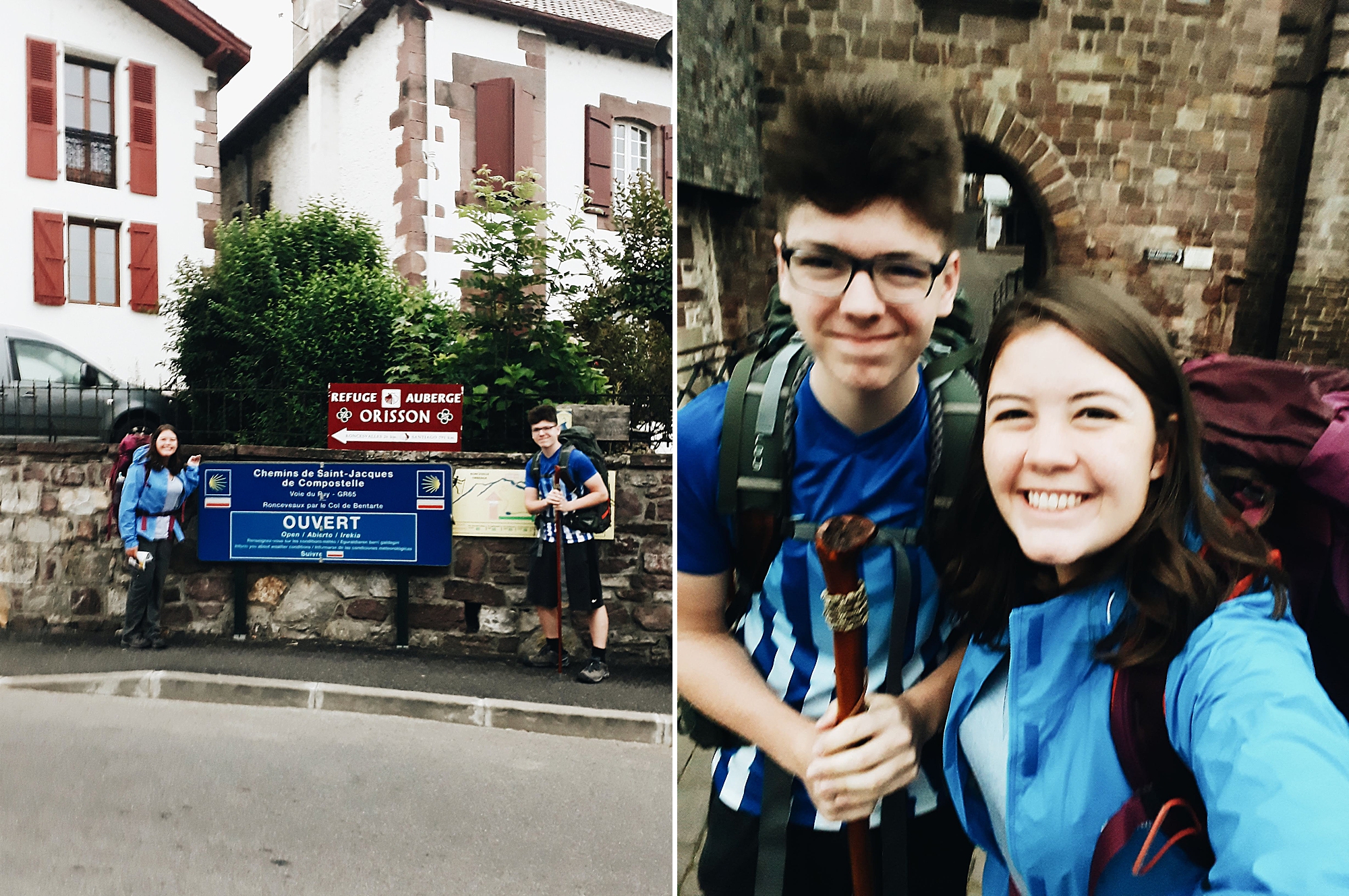
Following the other pilgrims on the road out of town, so unsure of what we were getting ourselves into:
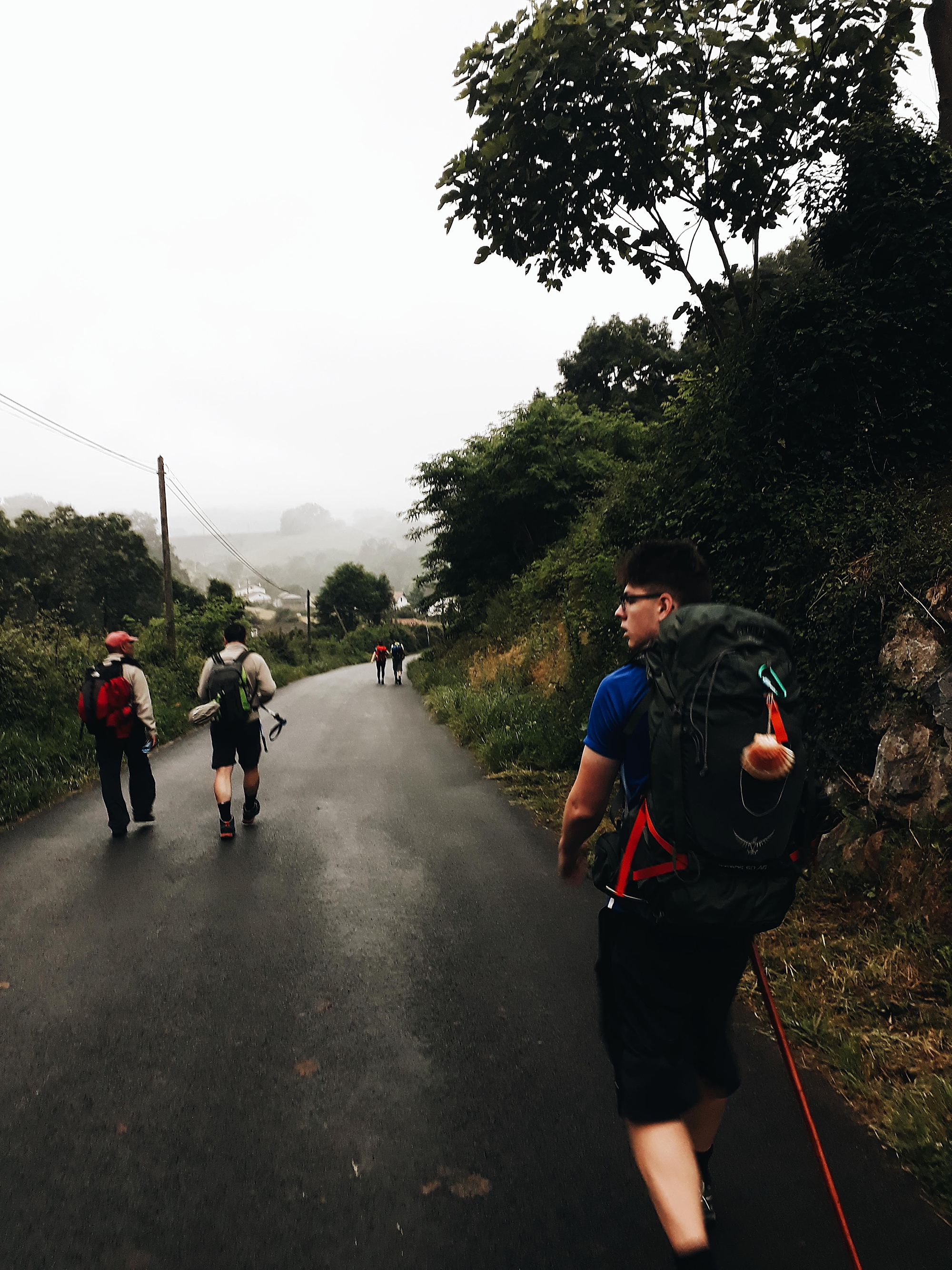
Our only “views” of the entire day happened in the first 10 minutes as we walked through the countryside just outside of St. Jean.
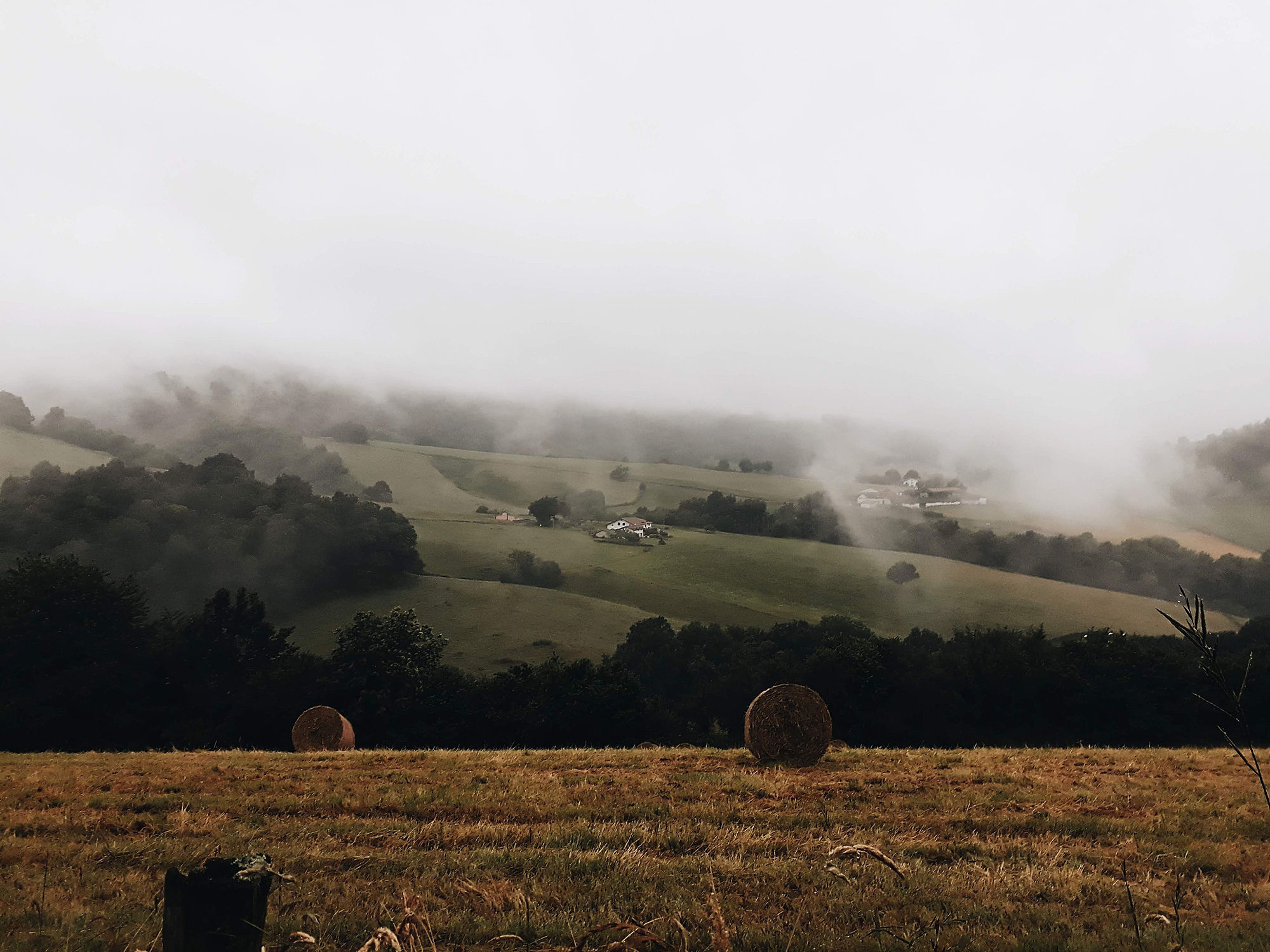
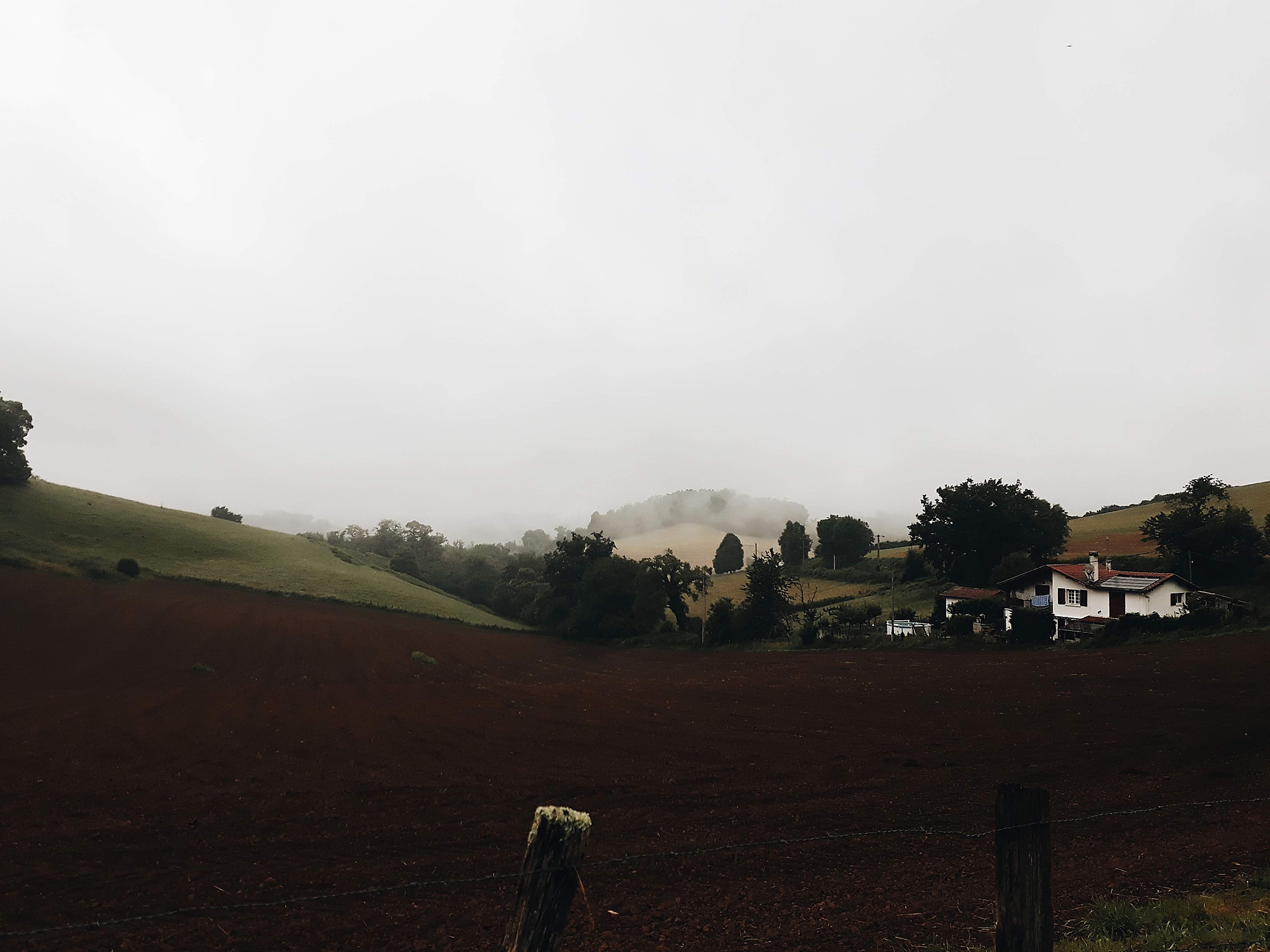

As soon as we began to climb, the fog grew thicker and thicker until we could see nothing around us.
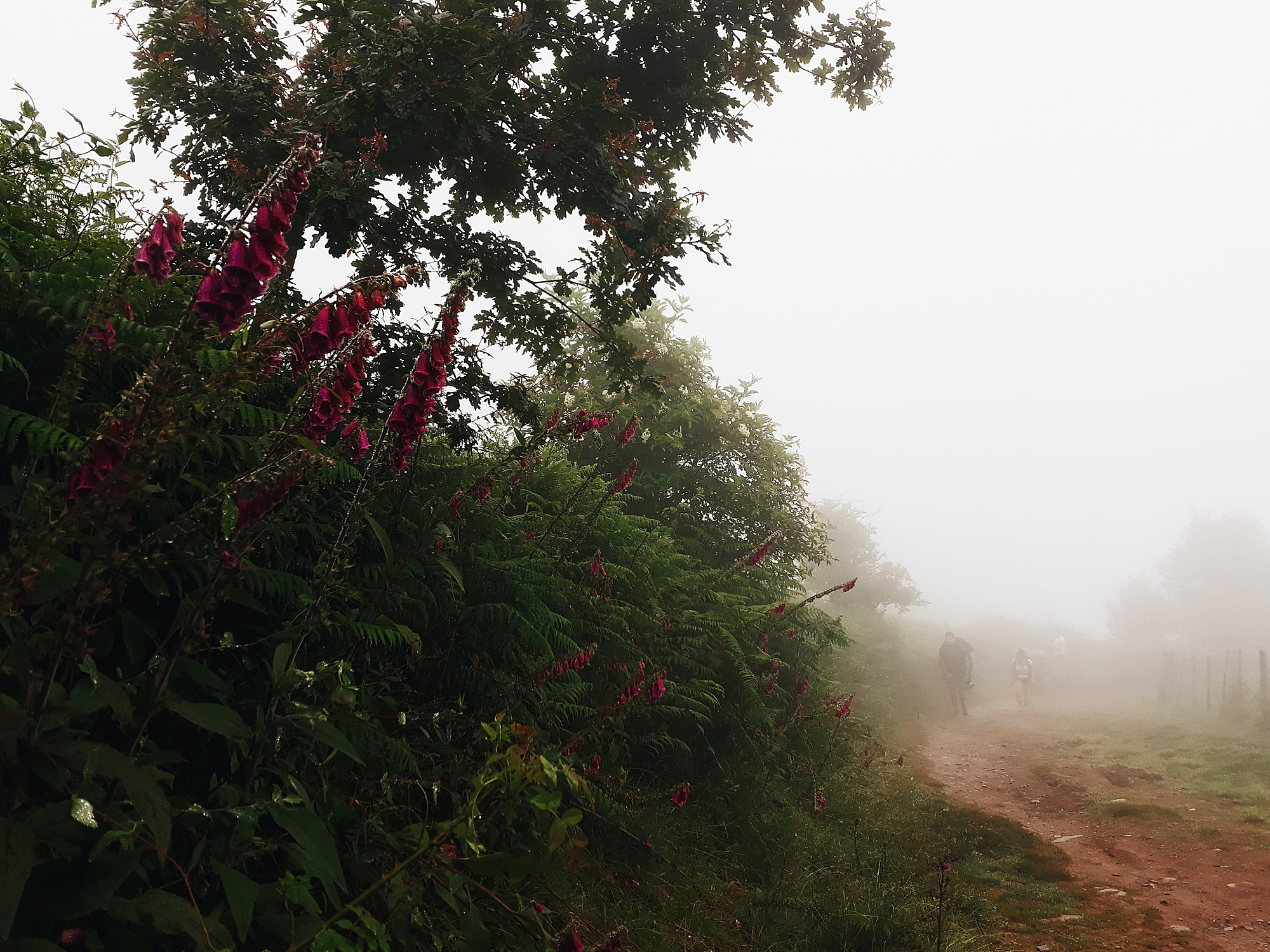
Although I was initially very disappointed by the weather, I started hunting for the beauty around us despite the unfortunate weather conditions and I became enthralled with the gorgeous wildflowers that lined our path and hung heavy with thick water droplets on each petal. I don’t think I would have appreciated their beauty if I had had the gorgeous views I wanted, and I certainly would never have noticed them if I had spent the day pining after the views I couldn’t see. Perhaps there’s a lesson to be learned there.
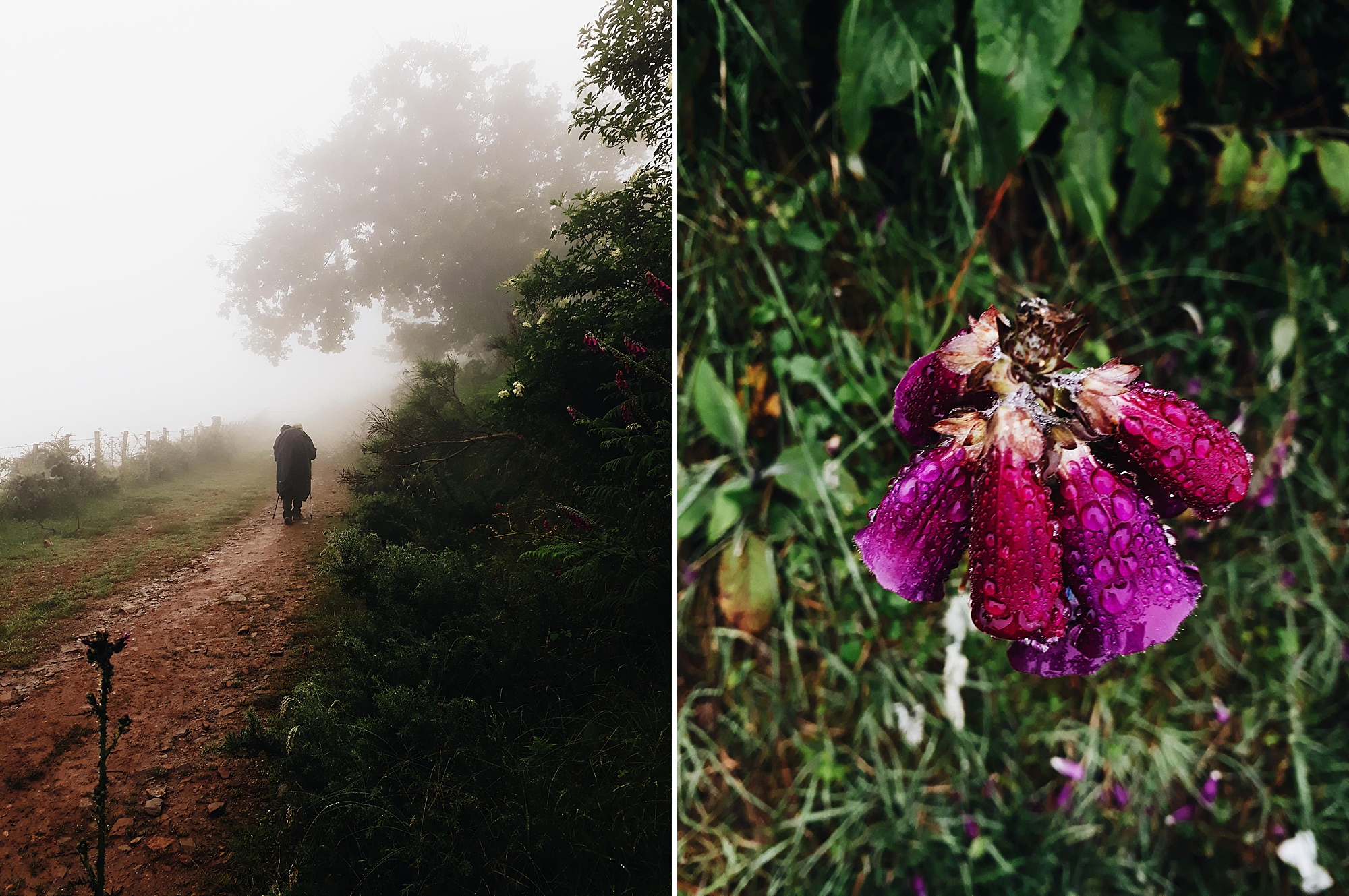
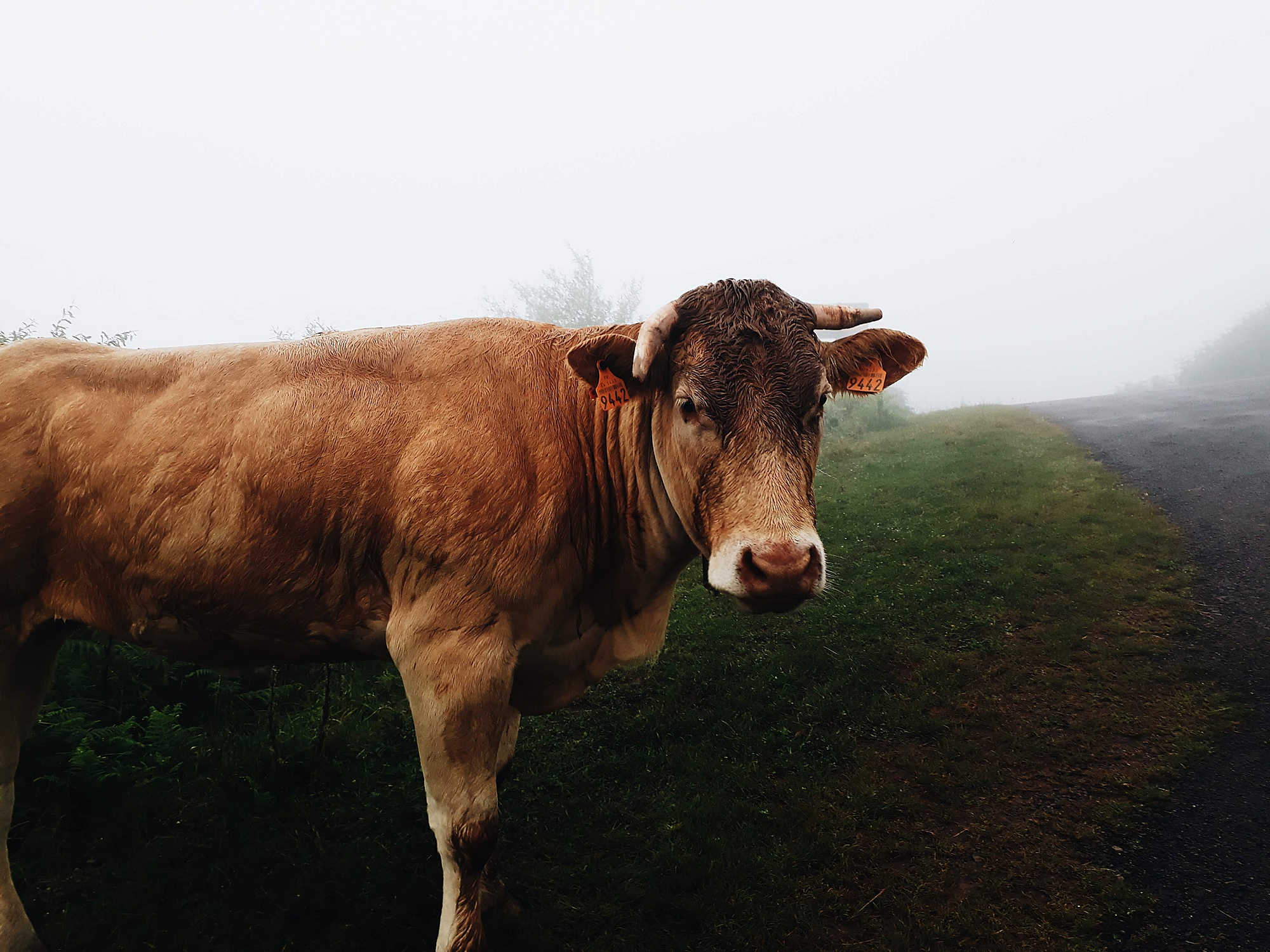
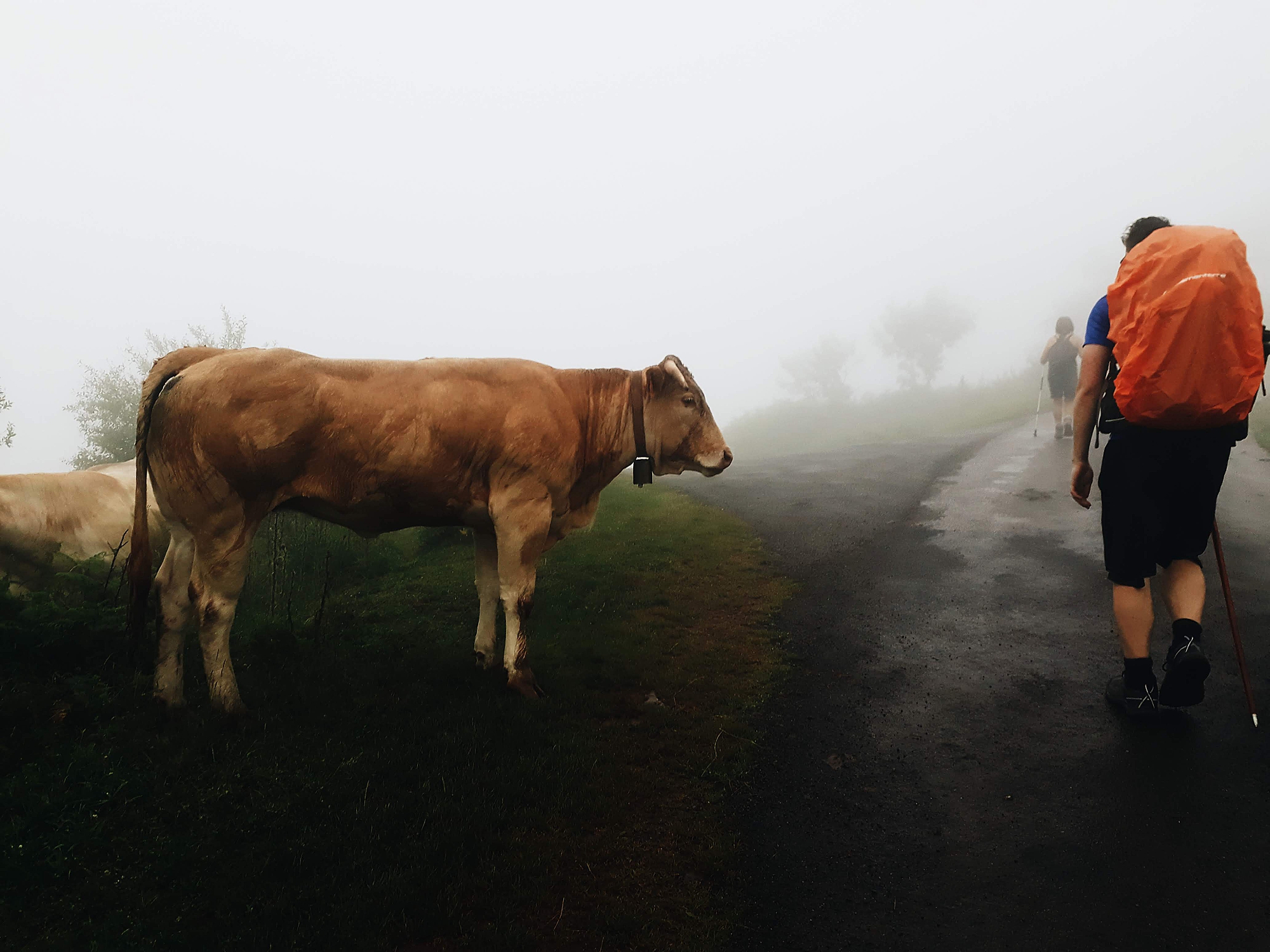
Orrison, the one and only refuge we would find all day. I wish I had taken a picture inside to show you how jam-packed it was with pilgrims. We could barely find a seat it was so full and everyone was tripping over backpacks and walking sticks as they tried to navigate their way back to their seat with a steaming cup of coffee in hand. We took a good long break here, refueled with coffee and some sort of breakfast, and bought sandwiches to take with us for lunch later on.
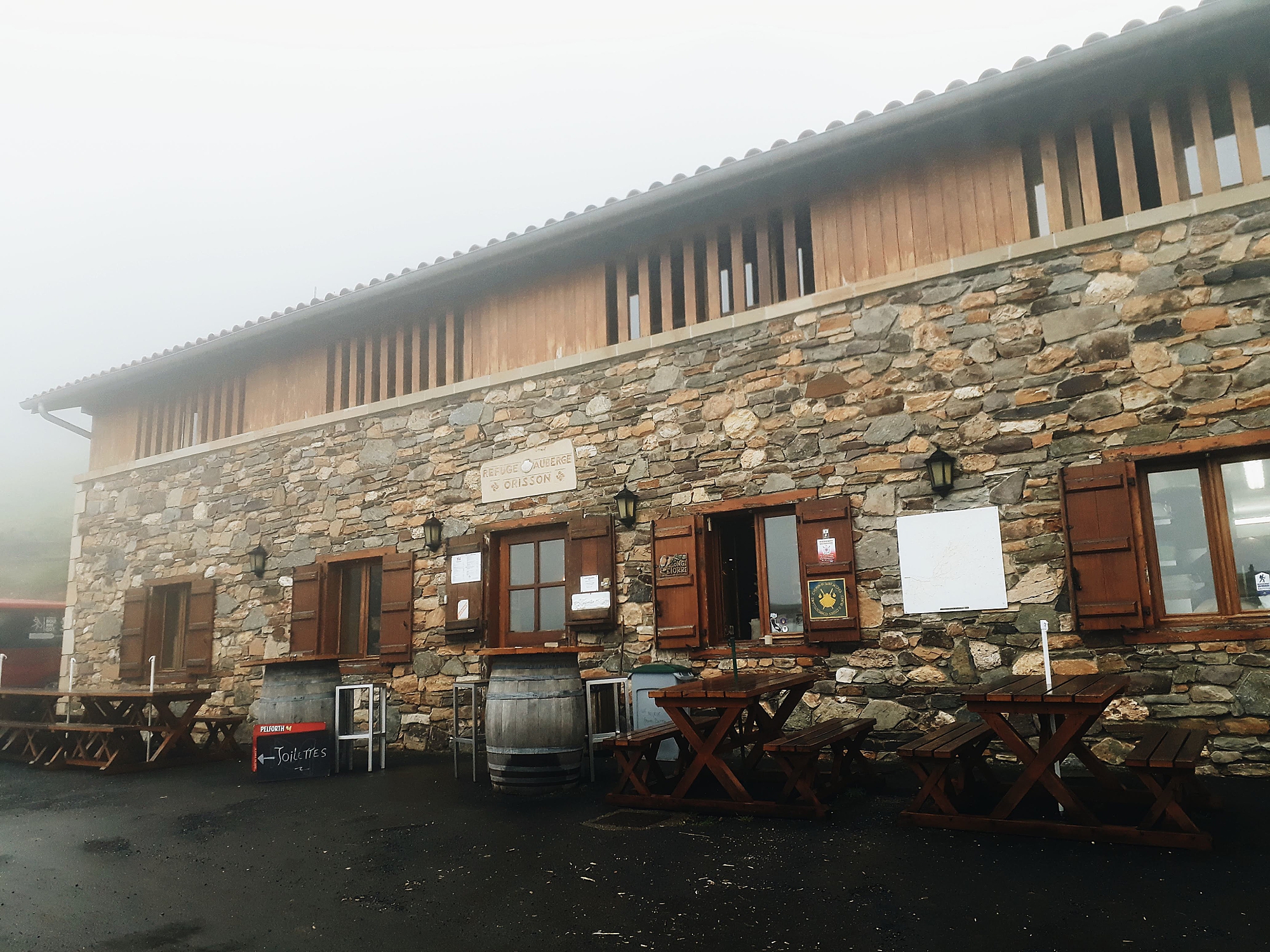
The water fountain outside of Orisson:
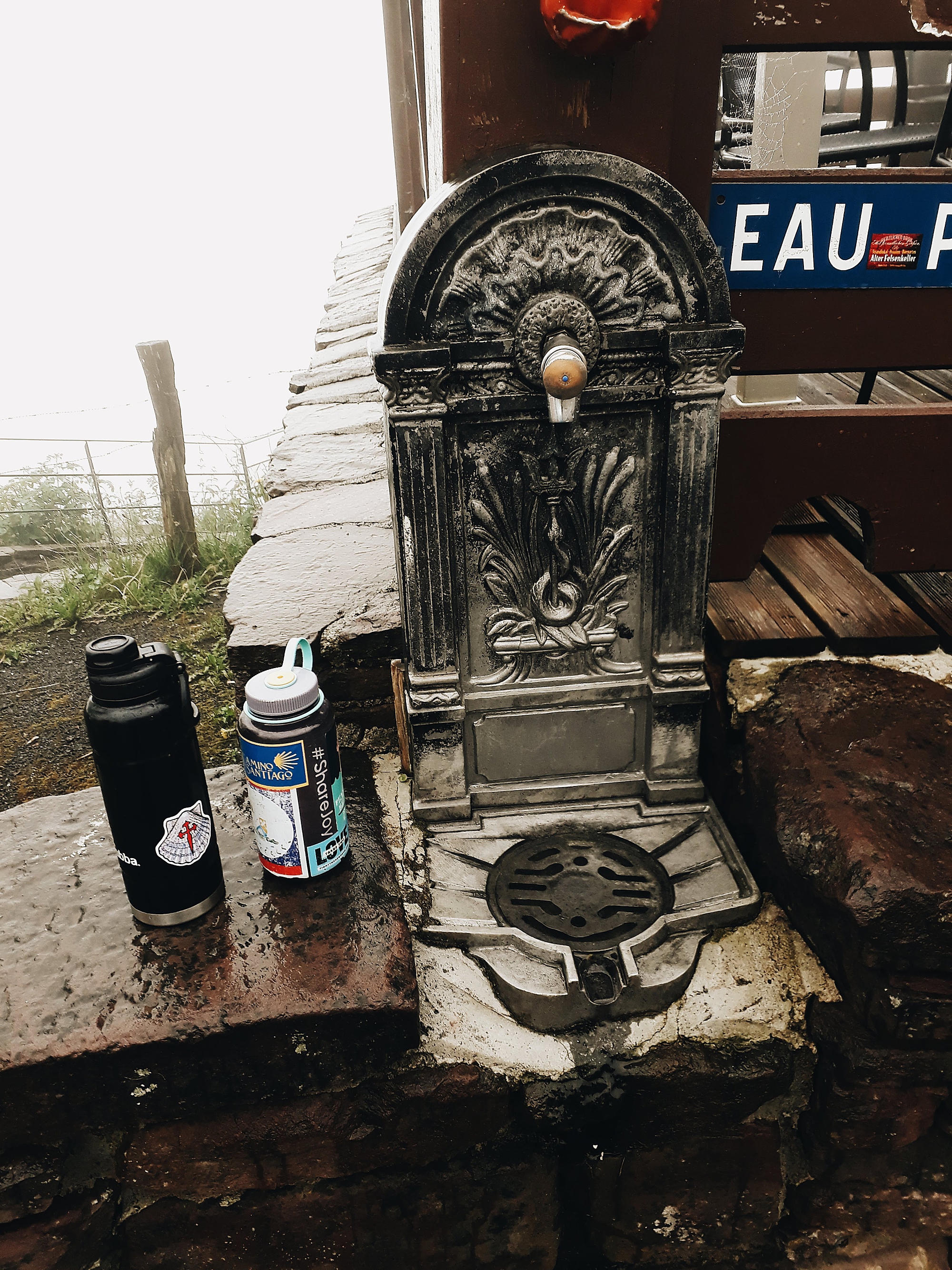
Shortly after Orisson, the fog became magnificently beautiful and my earlier frustration with the weather turned into a deep appreciation.
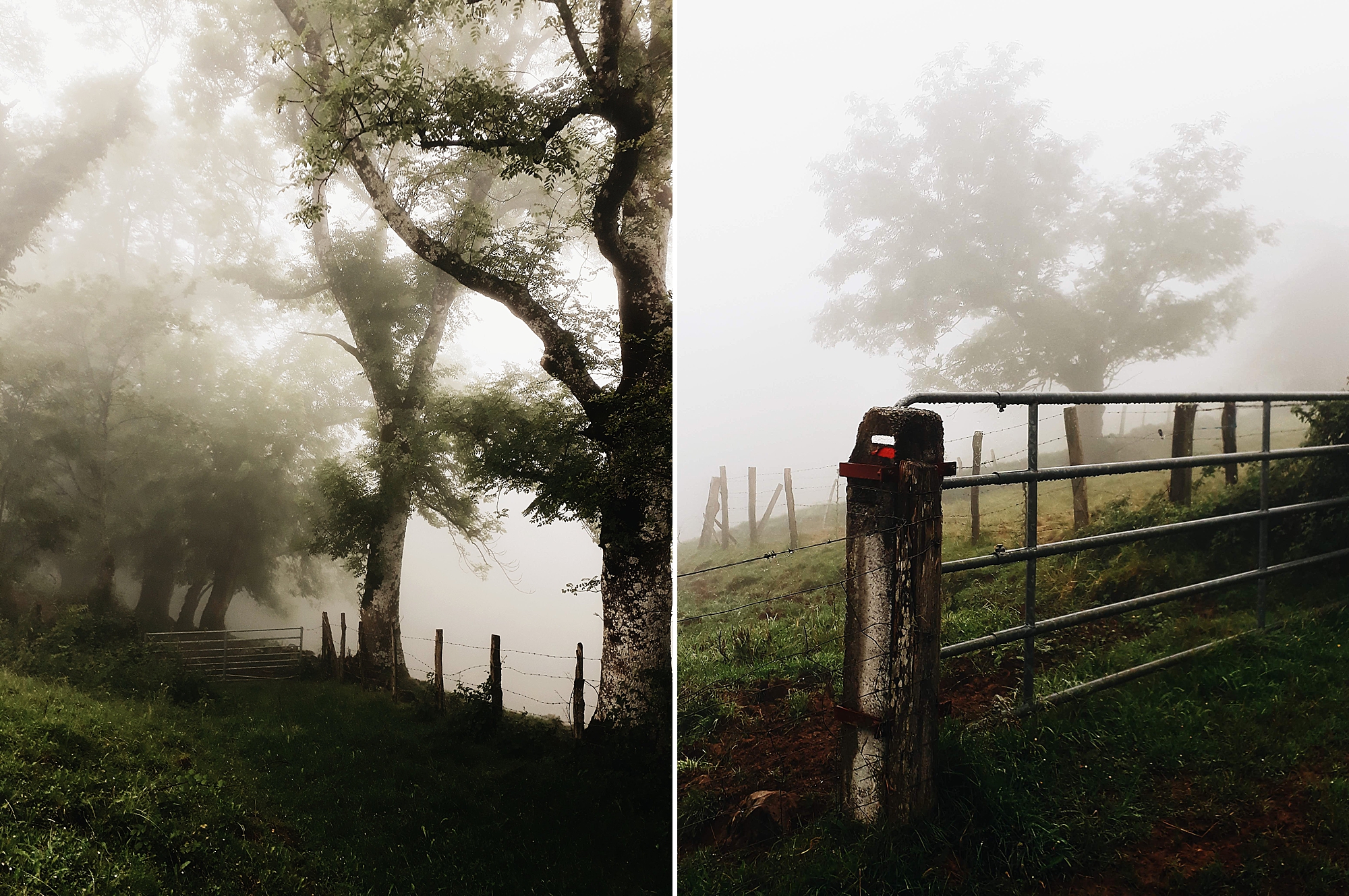
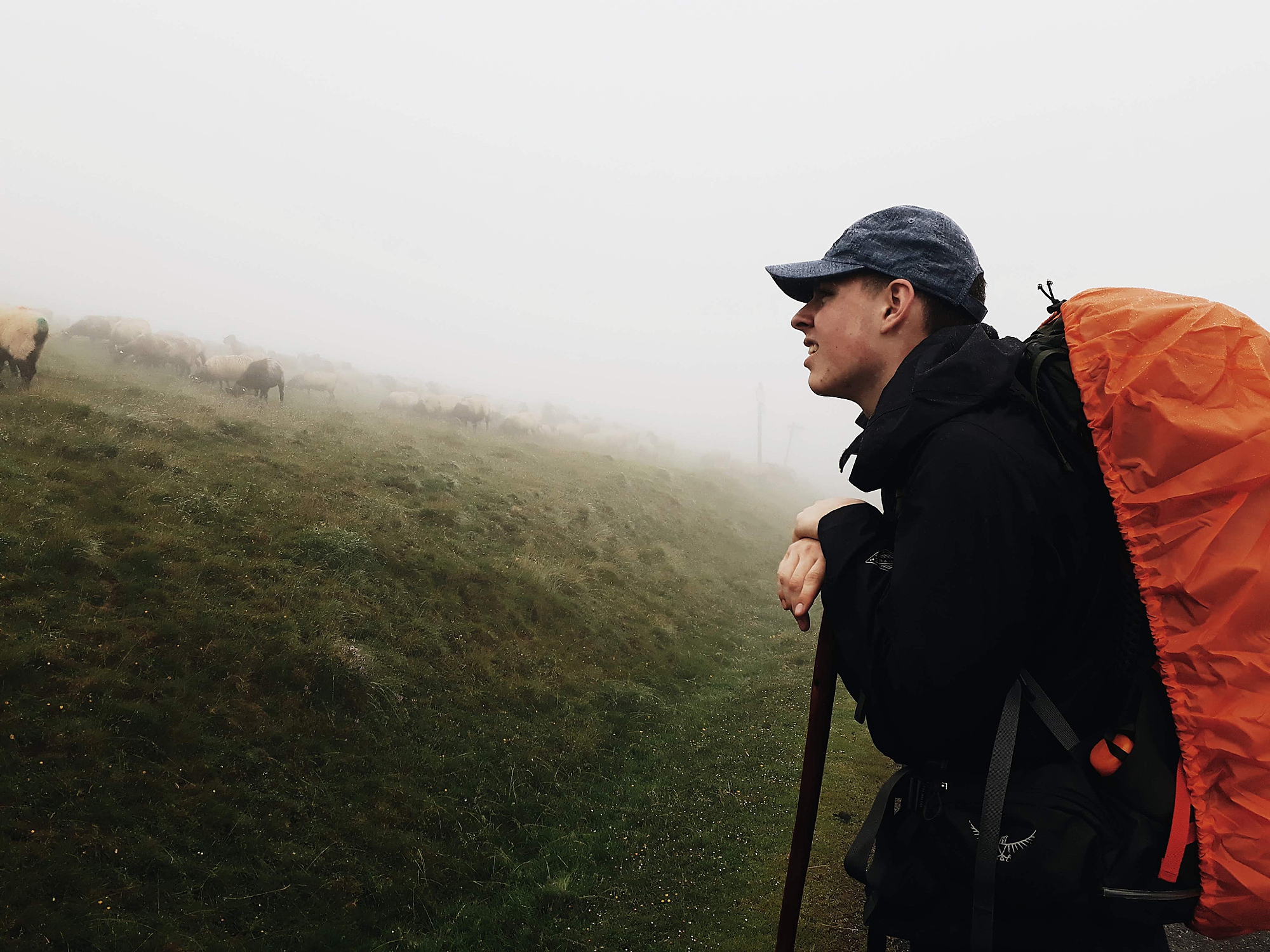

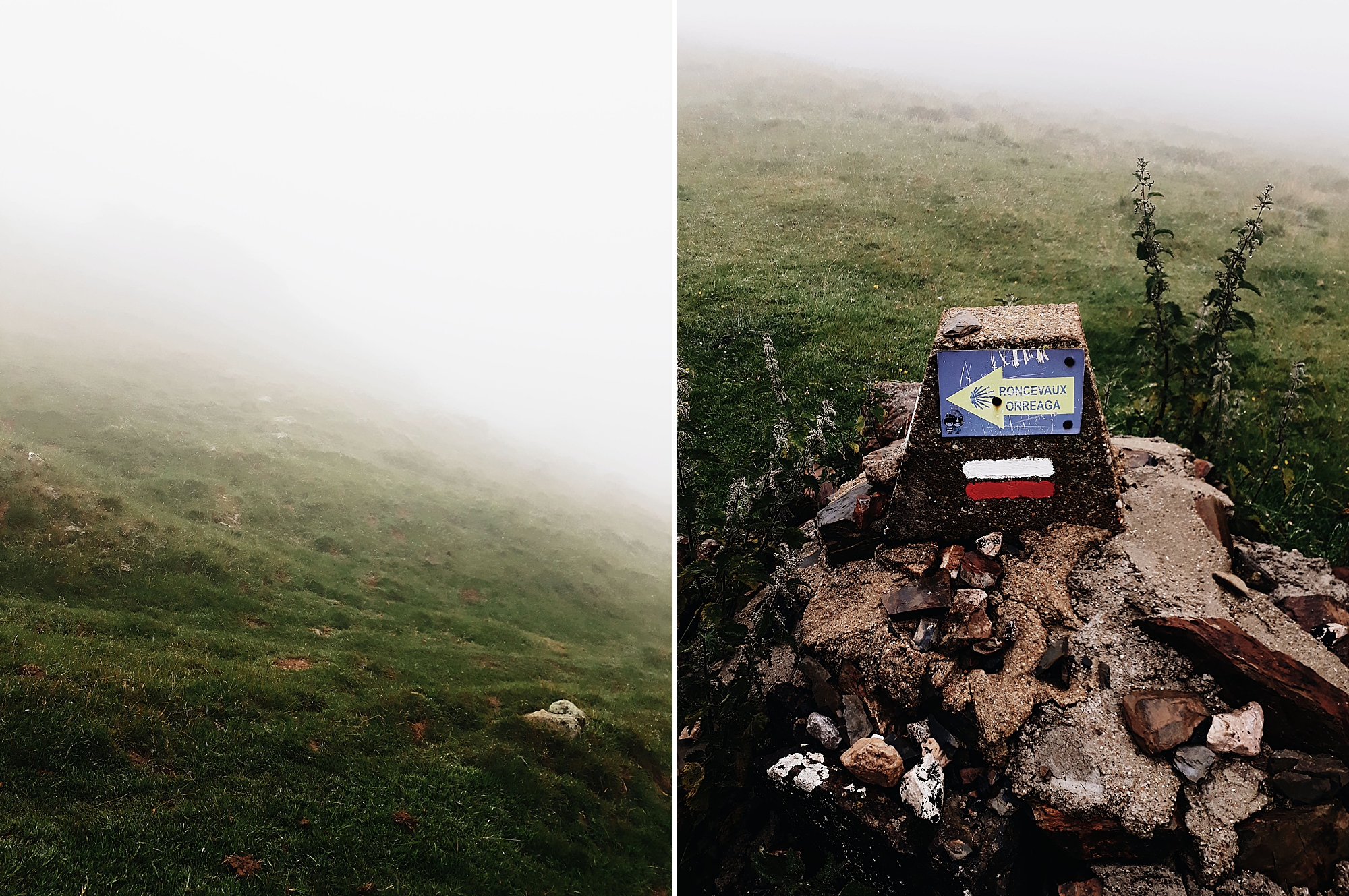
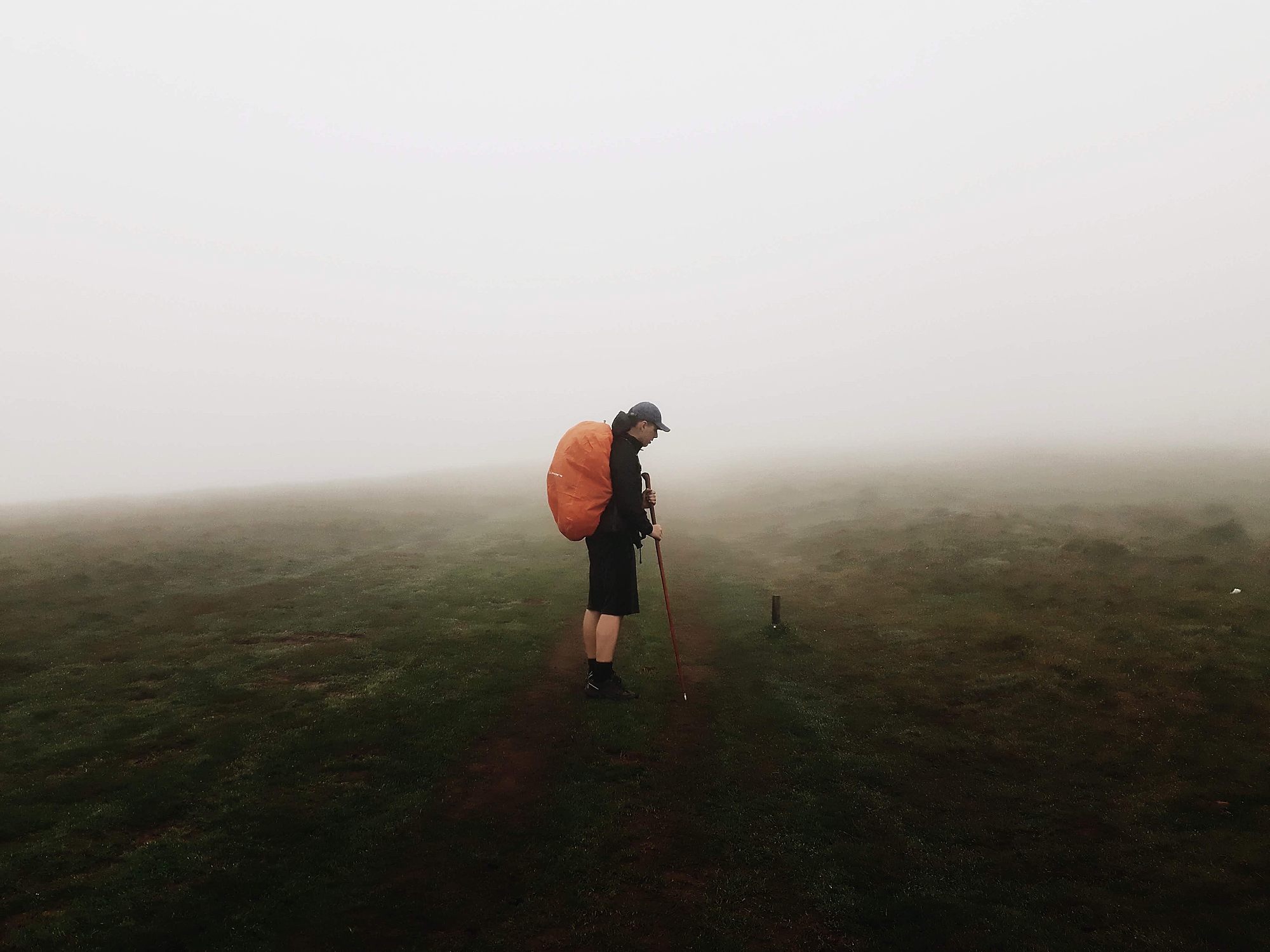
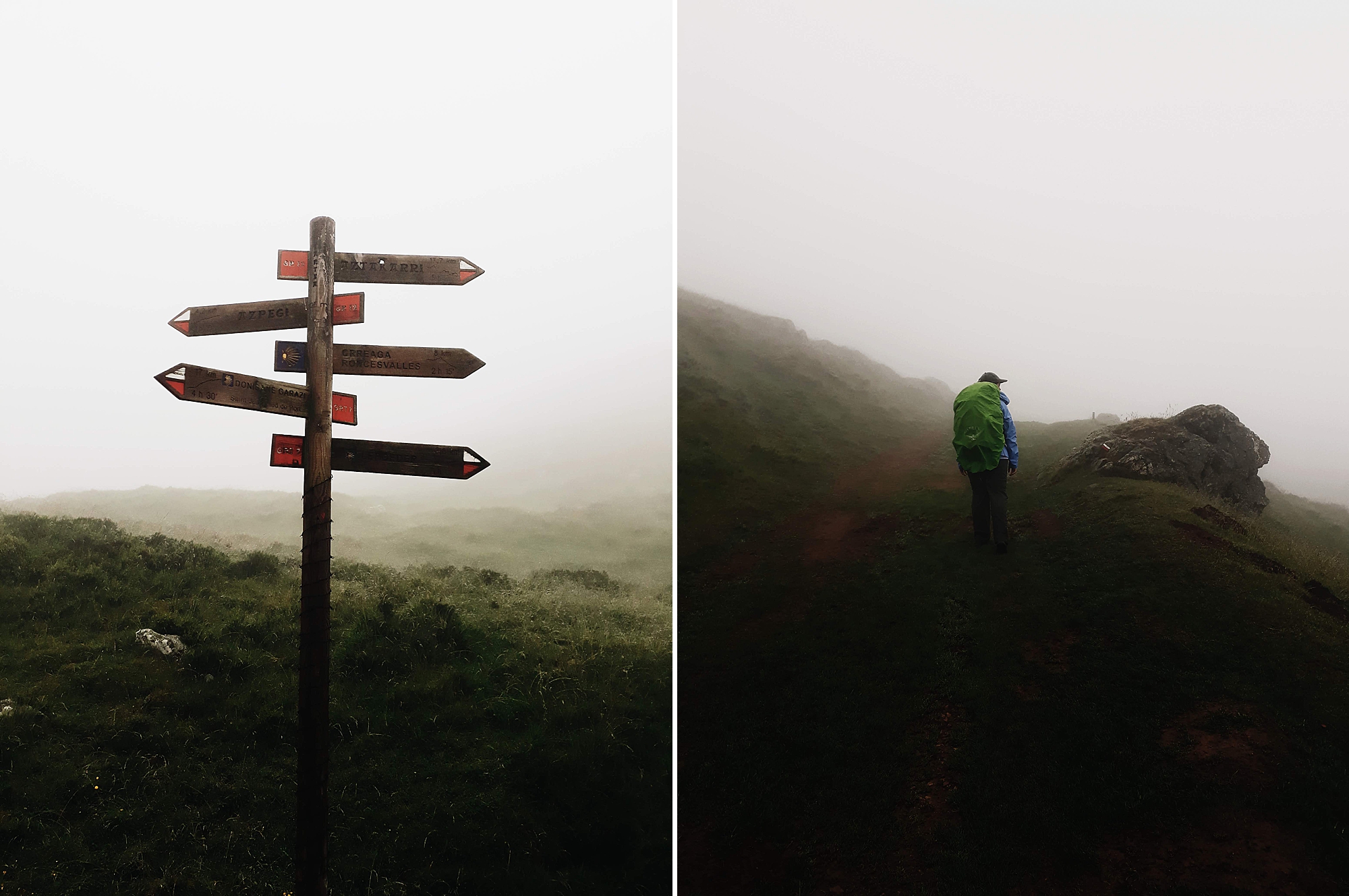
Since everything was so wet, no one was really stopping to sit down anywhere, I know we didn’t stop to sit at all between Orisson and Roncesvalles (we did pause a few times and just stood still, but it was so chilly and wet that we really just wanted to keep moving). We would occasionally pass groups of fellow pilgrims taking a break, but even they didn’t seem too inclined to sit on the wet rocks.
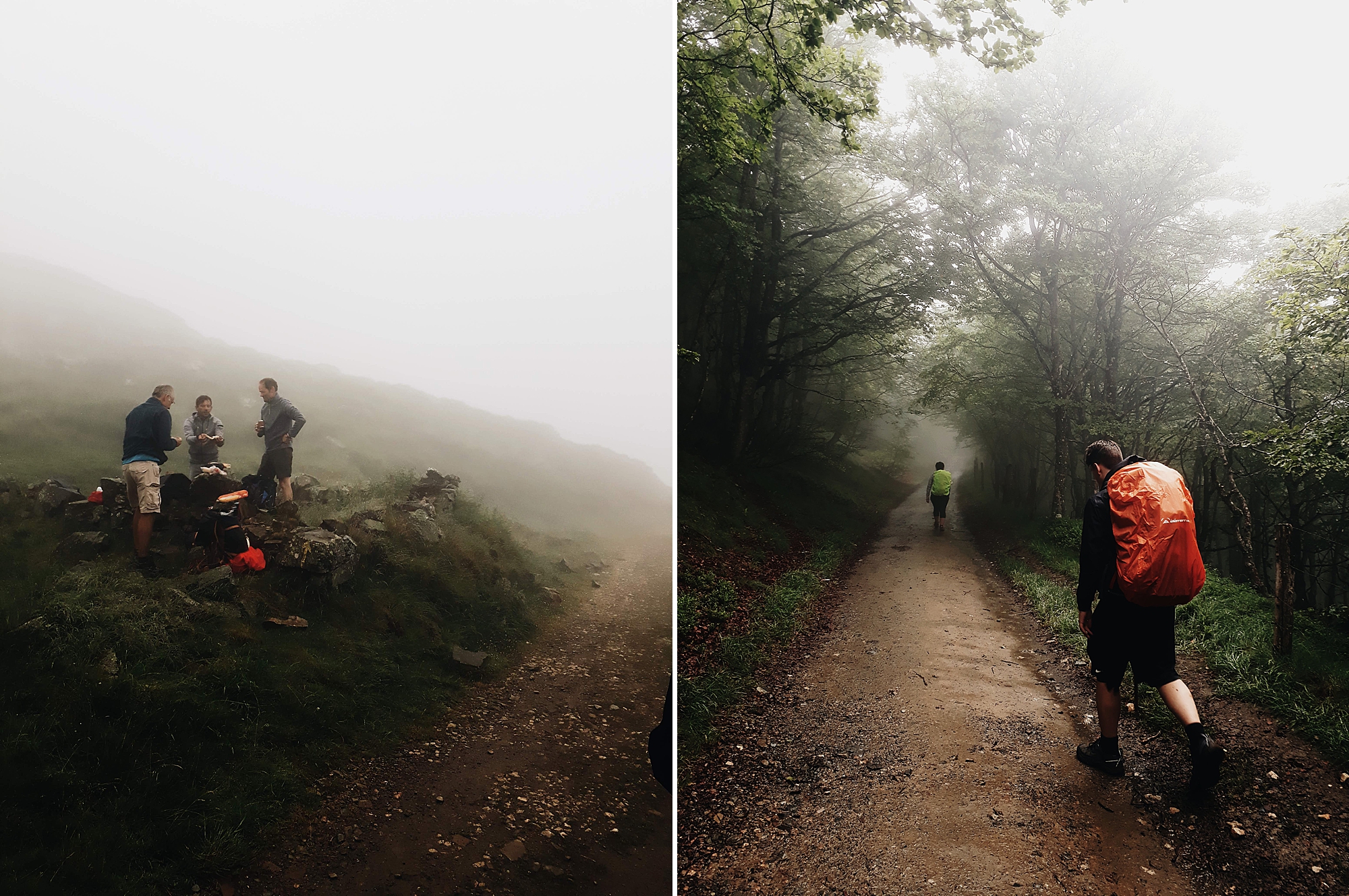
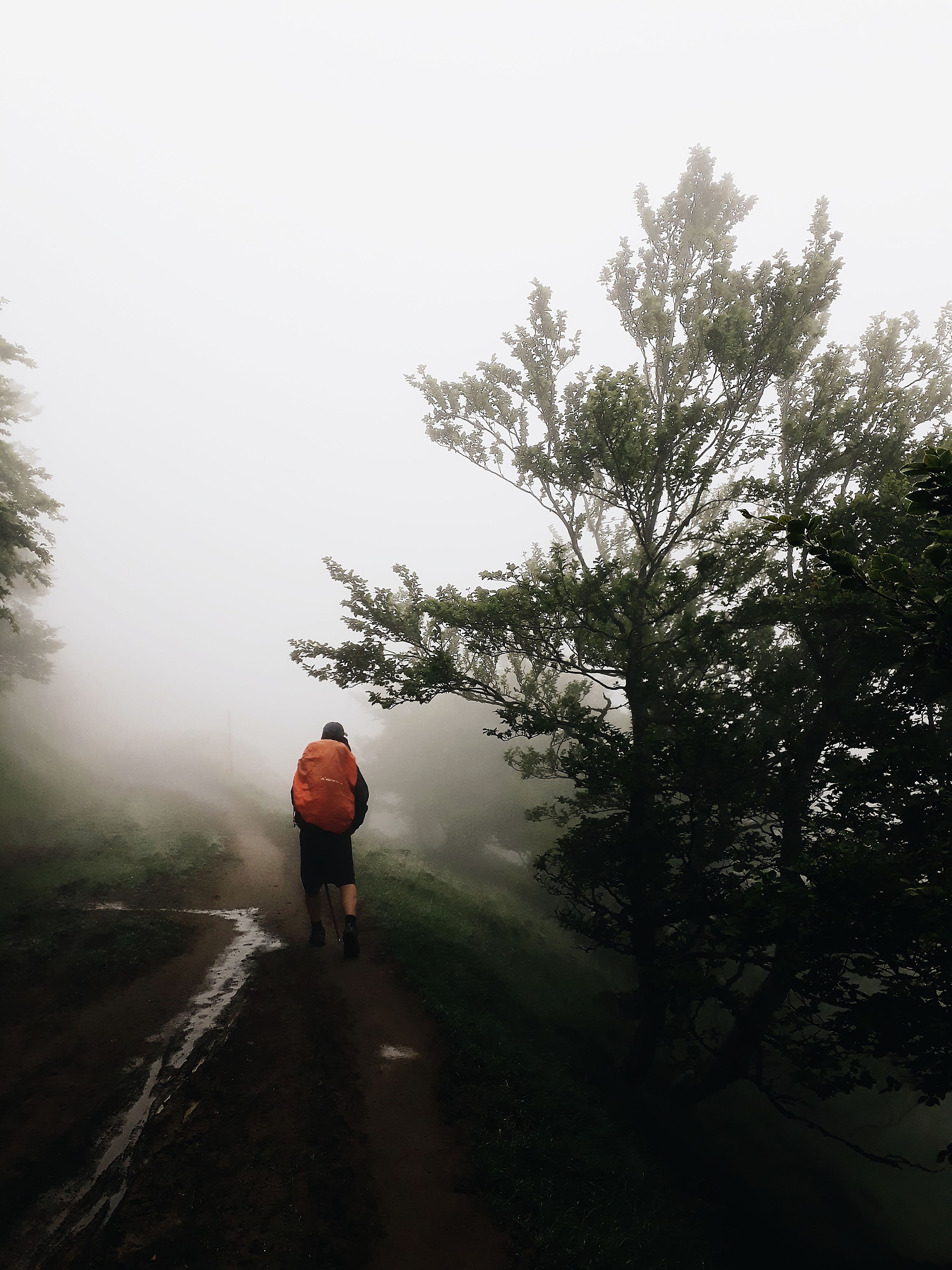
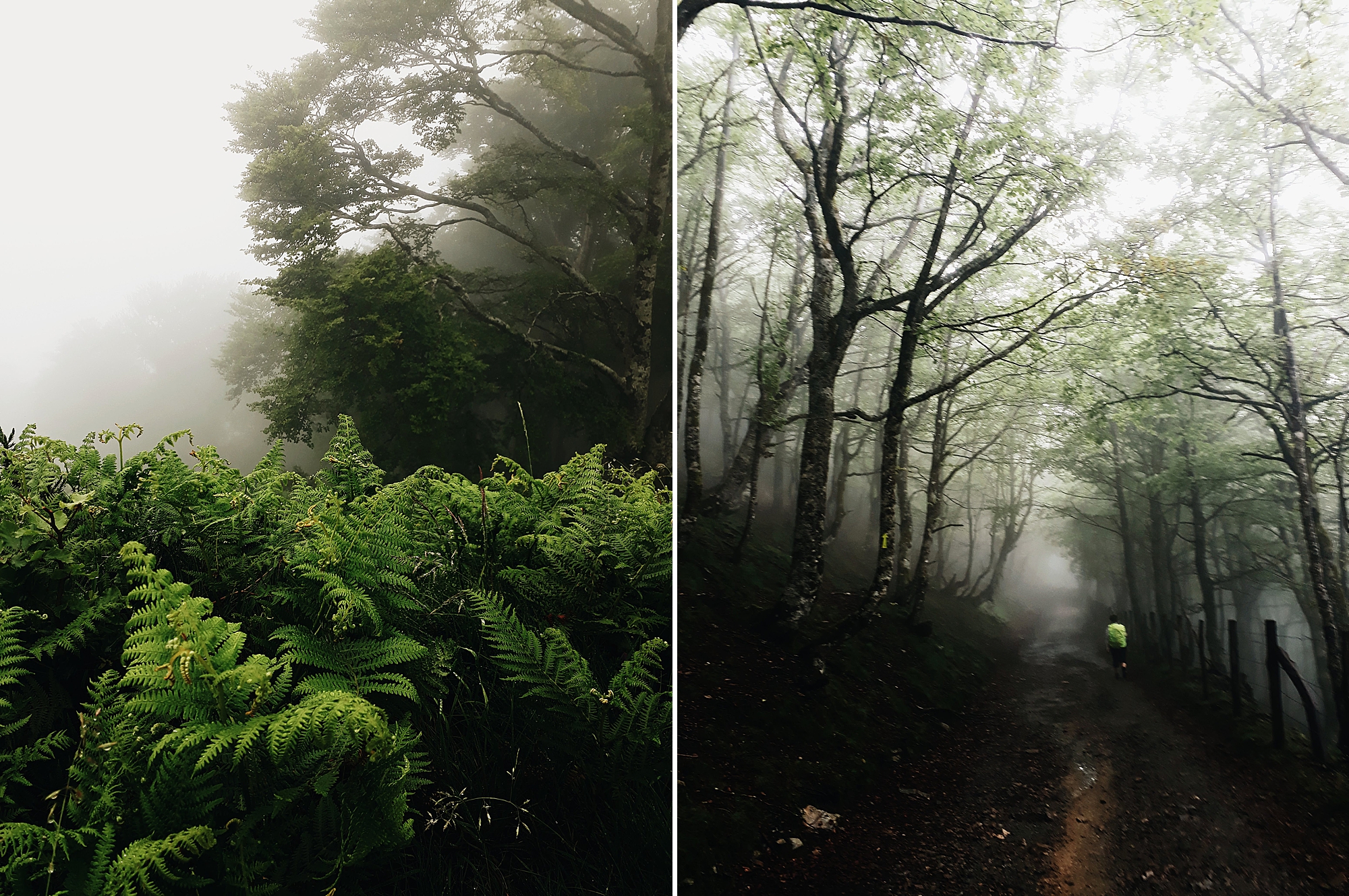
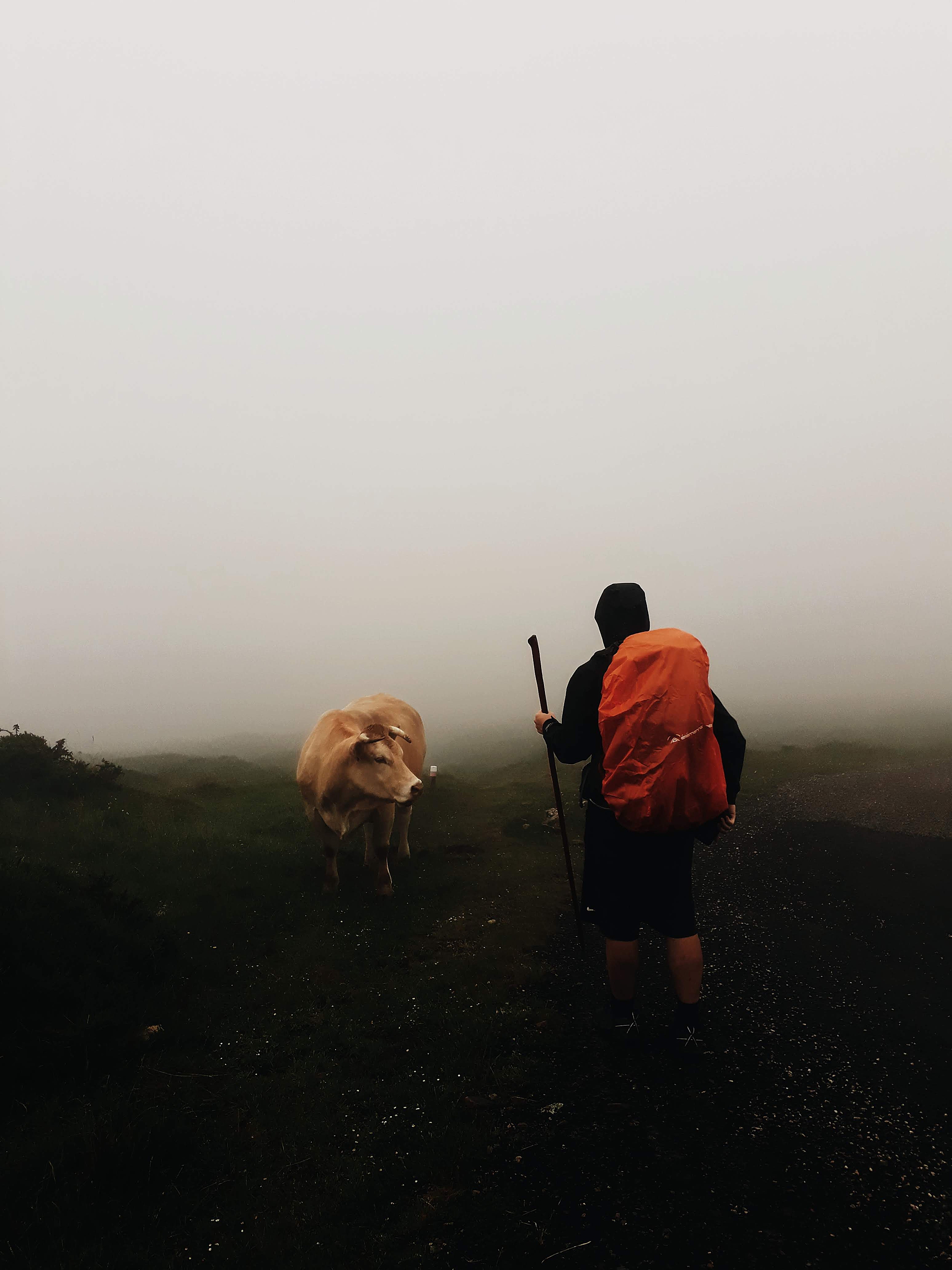
We finally arrived in Ronscesvalles around 2pm and after taking off our soaking wet shoes and heavy backpacks, we waited in line to check into the albergue. Ronscesvalles isn’t exactly a town, as there really isn’t anything there besides the huge albergue, it’s more what you would call a “medieval hamlet”. The first pilgrim guest house was built in Ronscesvalles in 1127 and it has housed pilgrims ever since which is mind-blowing. The current albergue was updated in 2011 and can house over 200 some pilgrims.
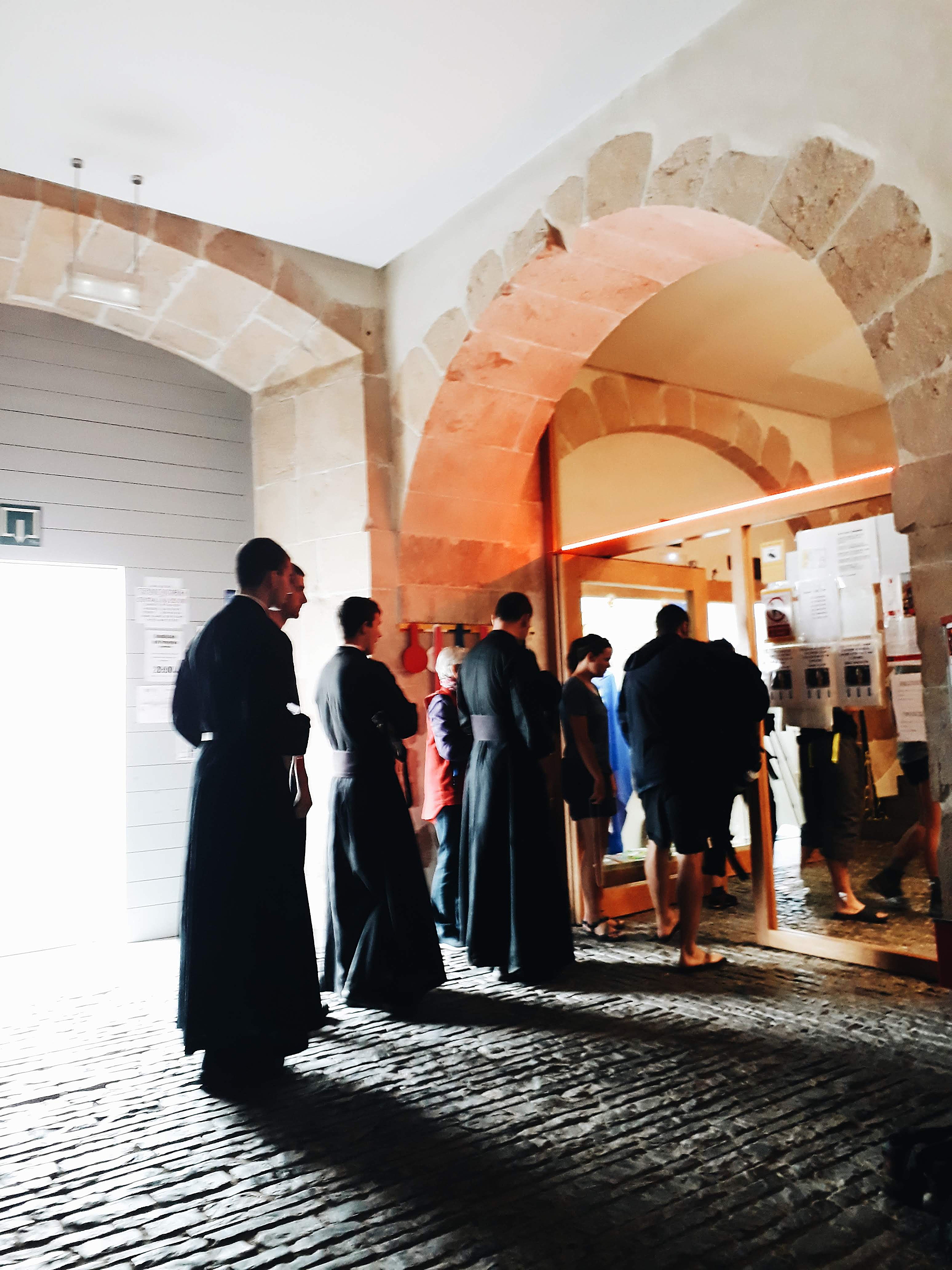
DAY TWO: Roncesvalles to Zubiri || ≈ 22 km (14 miles)
To be completely honest, this was, I think, the hardest day of the entire Camino for me personally. While it technically was less physically demanding than the first day, my body was hurting and exhausted from our trek across the Pyrenees the day before and it was screaming out in angry pain pretty much, the entire day. Although we had officially crossed out of the Pyrenees, we were now crossing the foothills of the Pyrenees which meant lots and lots of “little” hills, some rather steep ones and definitely way more than some people had implied there would be. I was so incredibly grateful when we reached the tiny town where we would be stopping for the day.
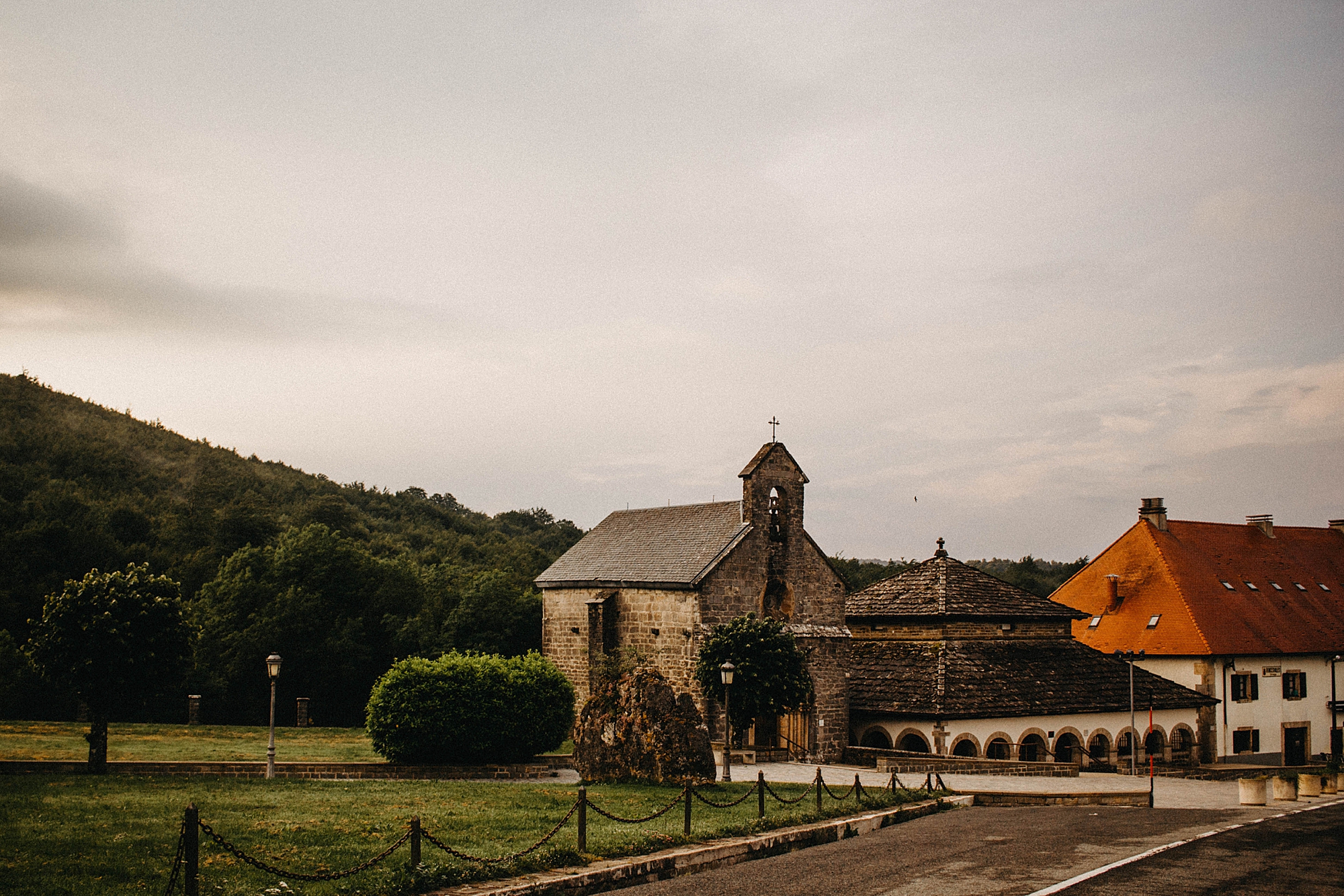
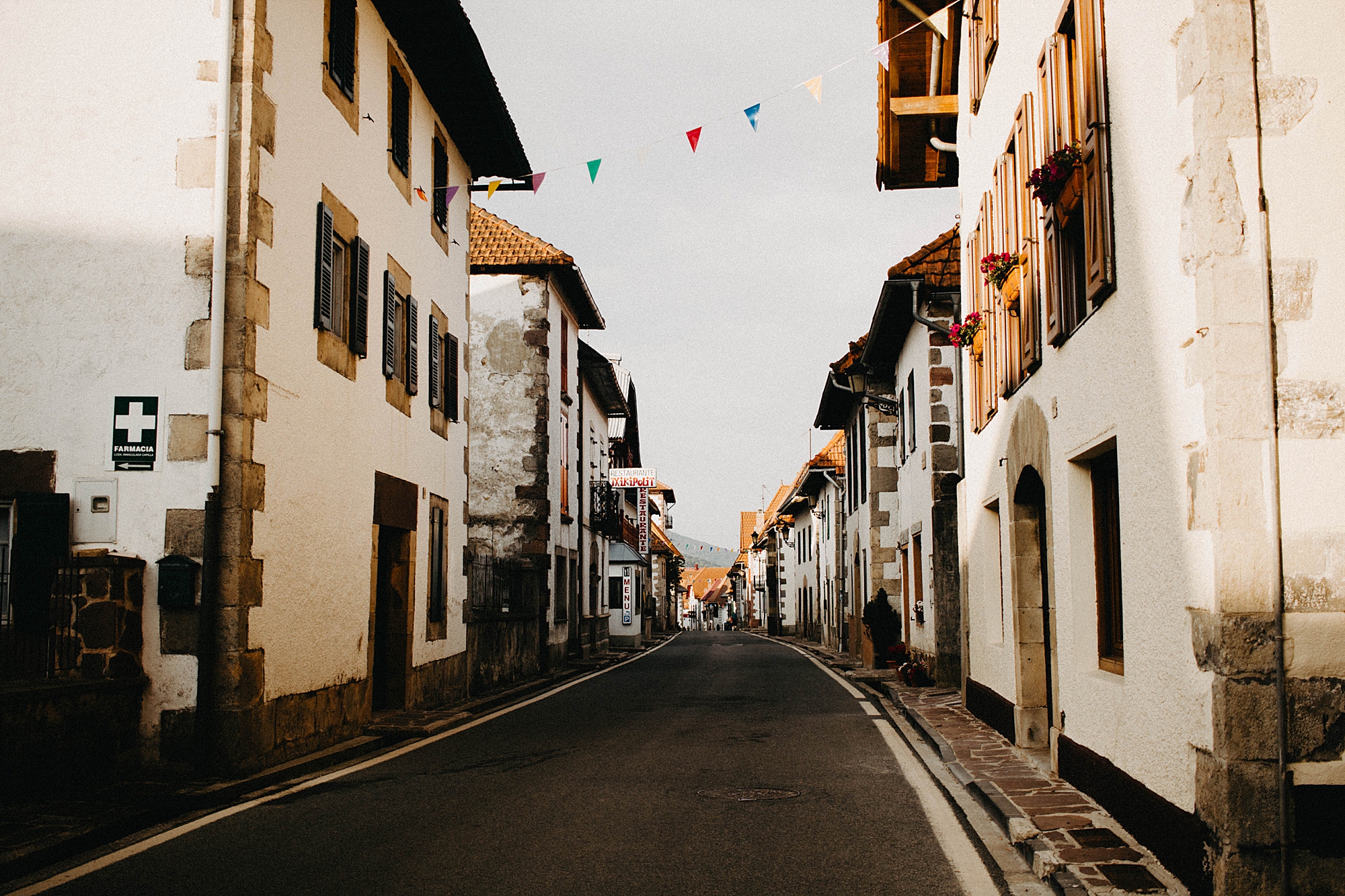
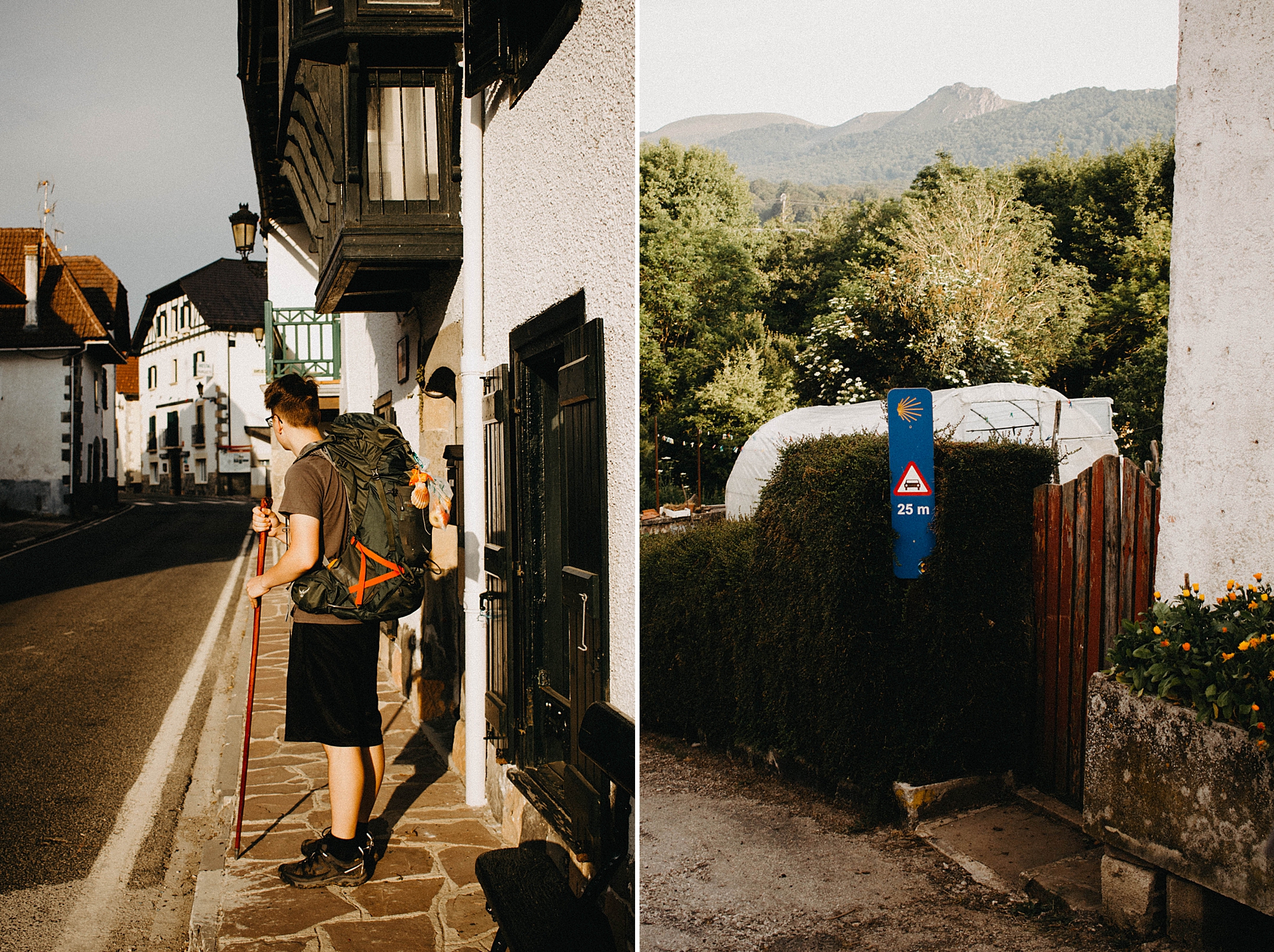
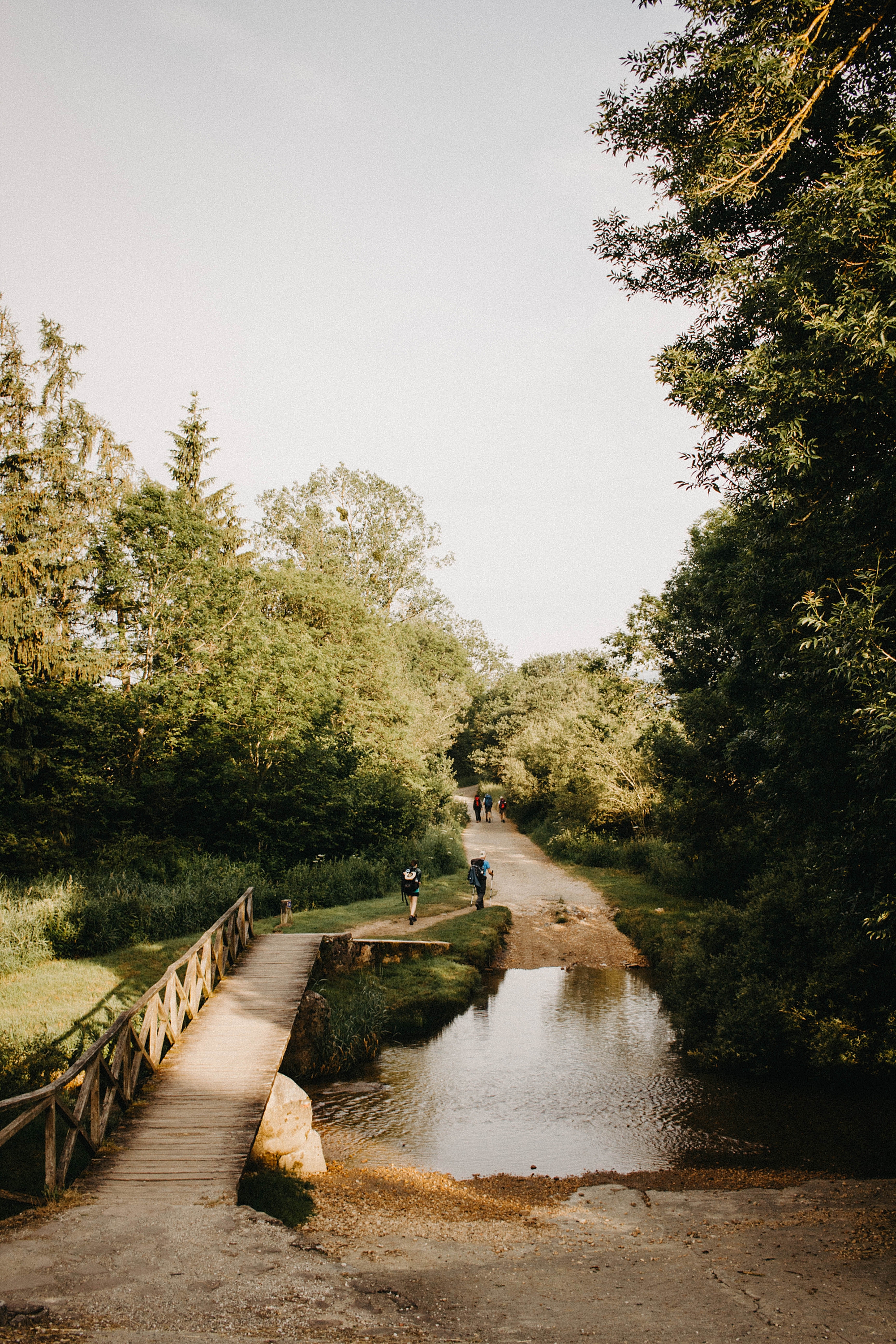
I loved starting the day outside each day and getting to soak in that glorious early morning sunshine.
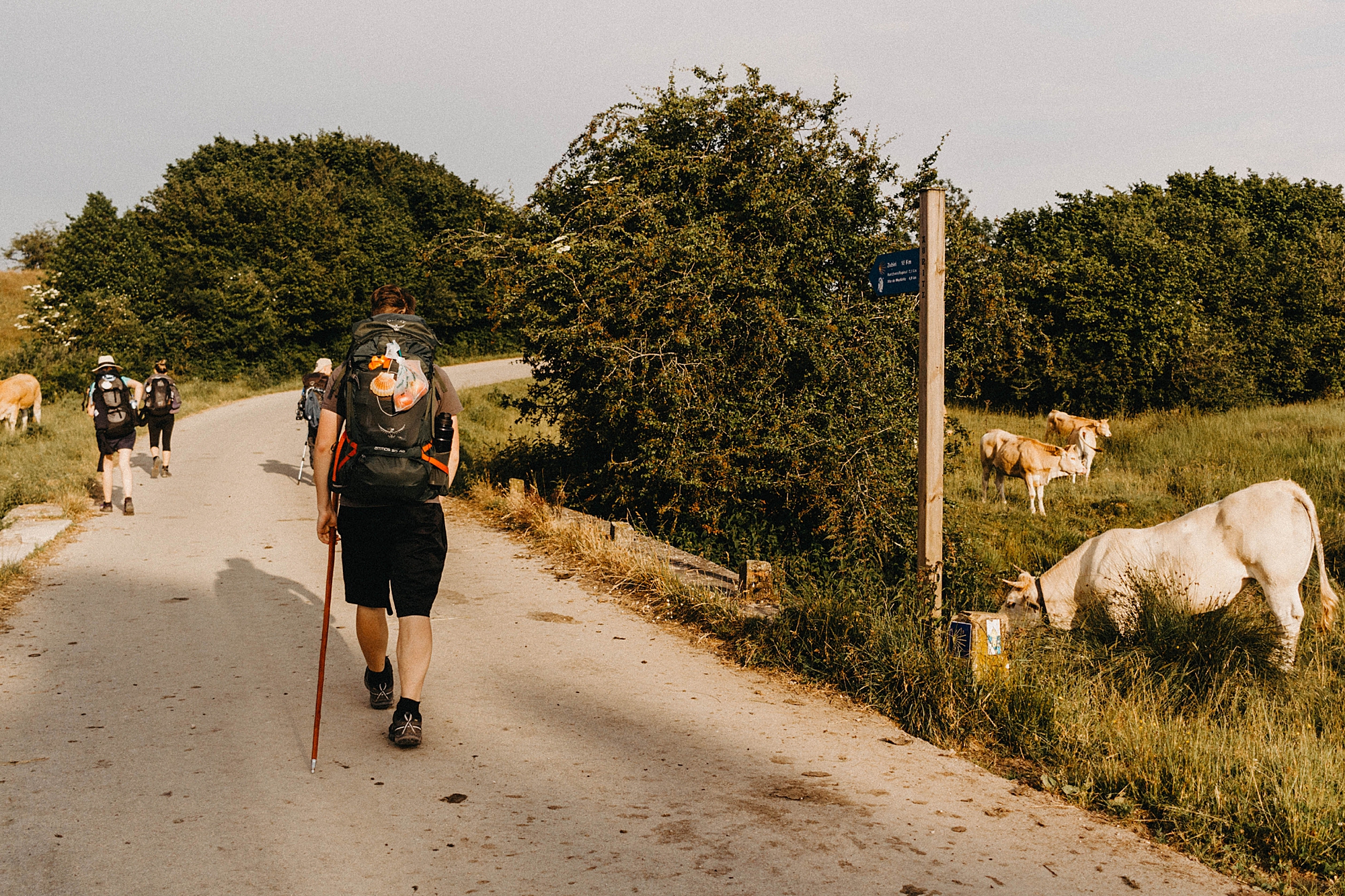
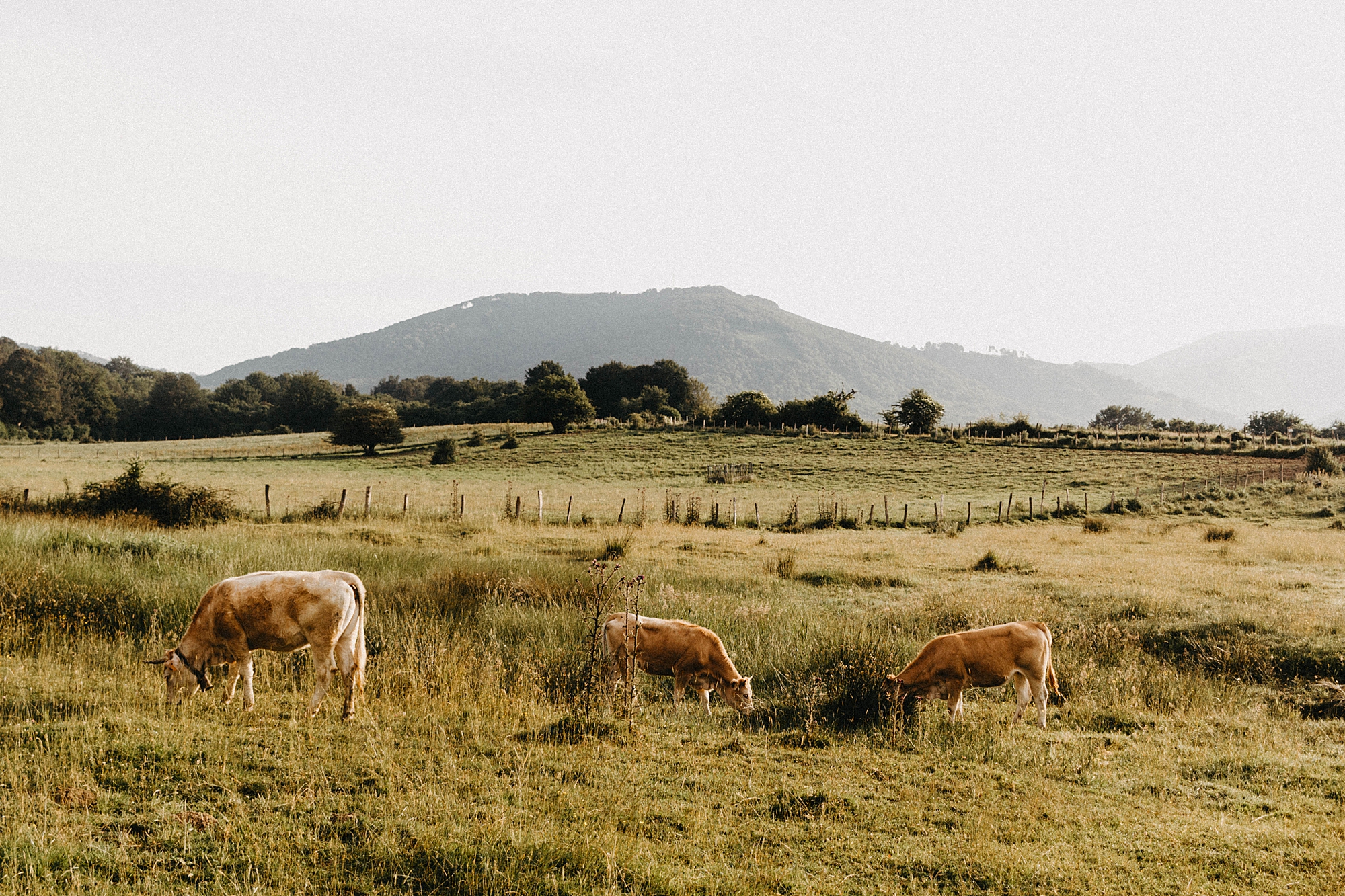
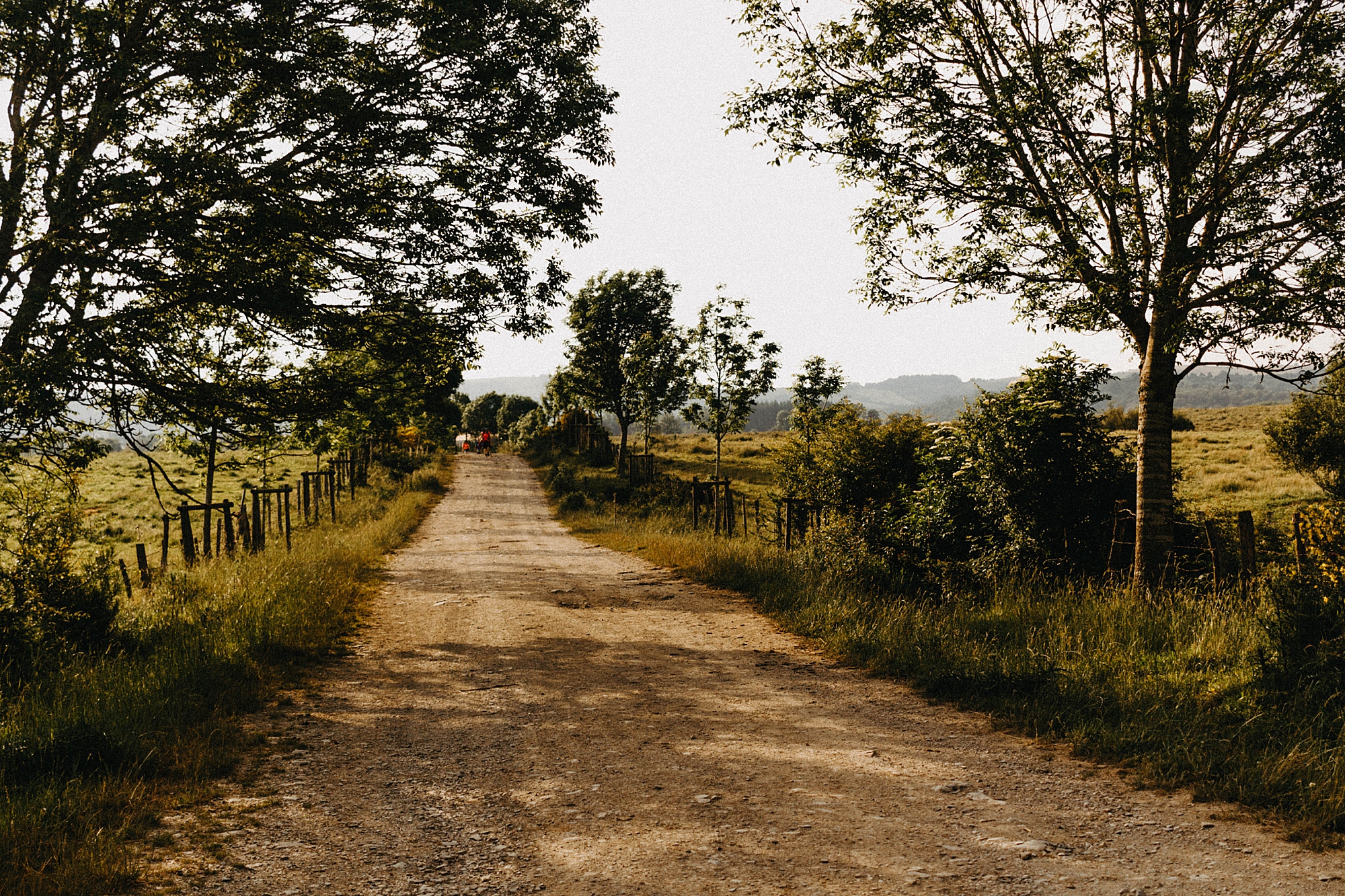
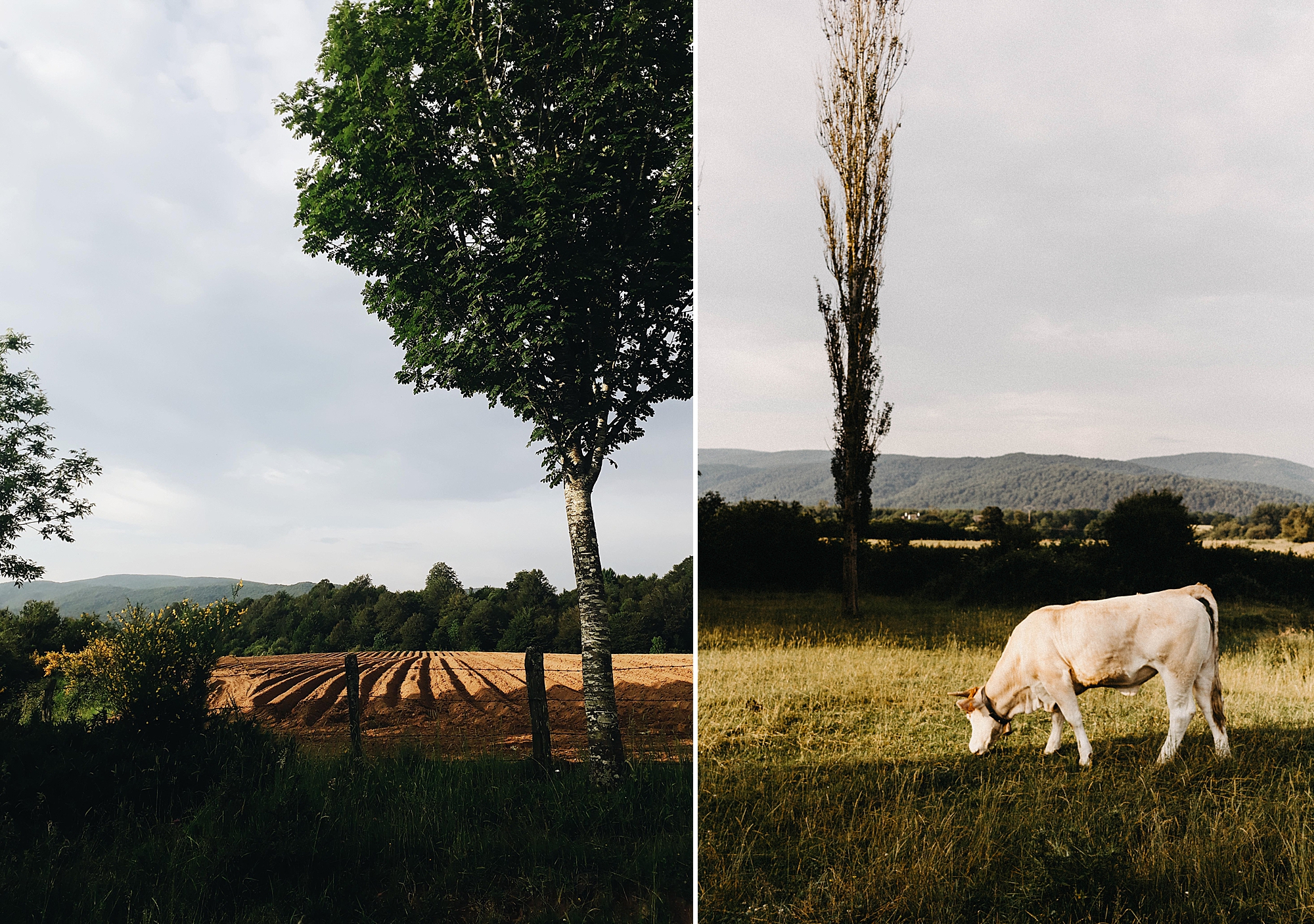
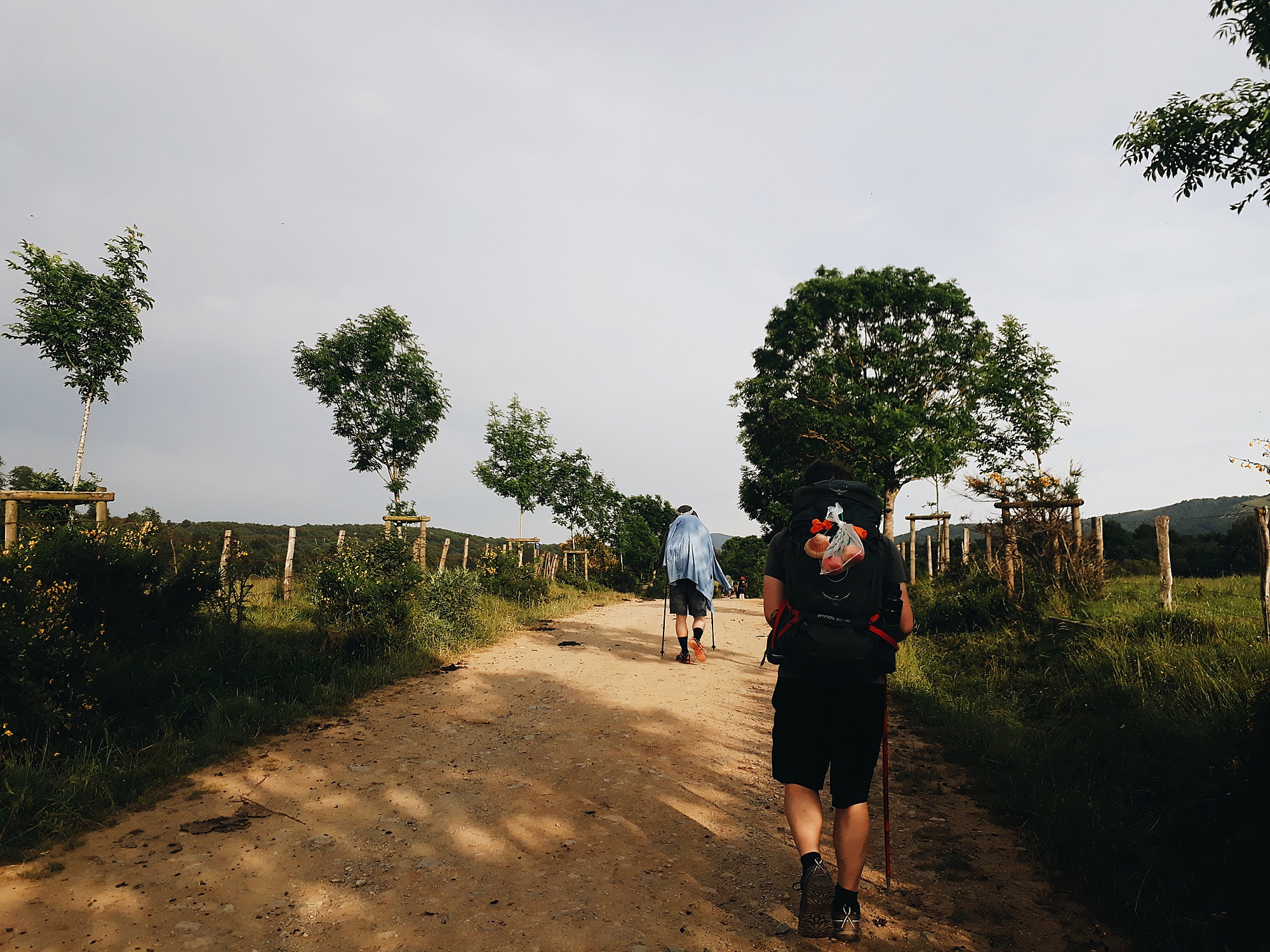
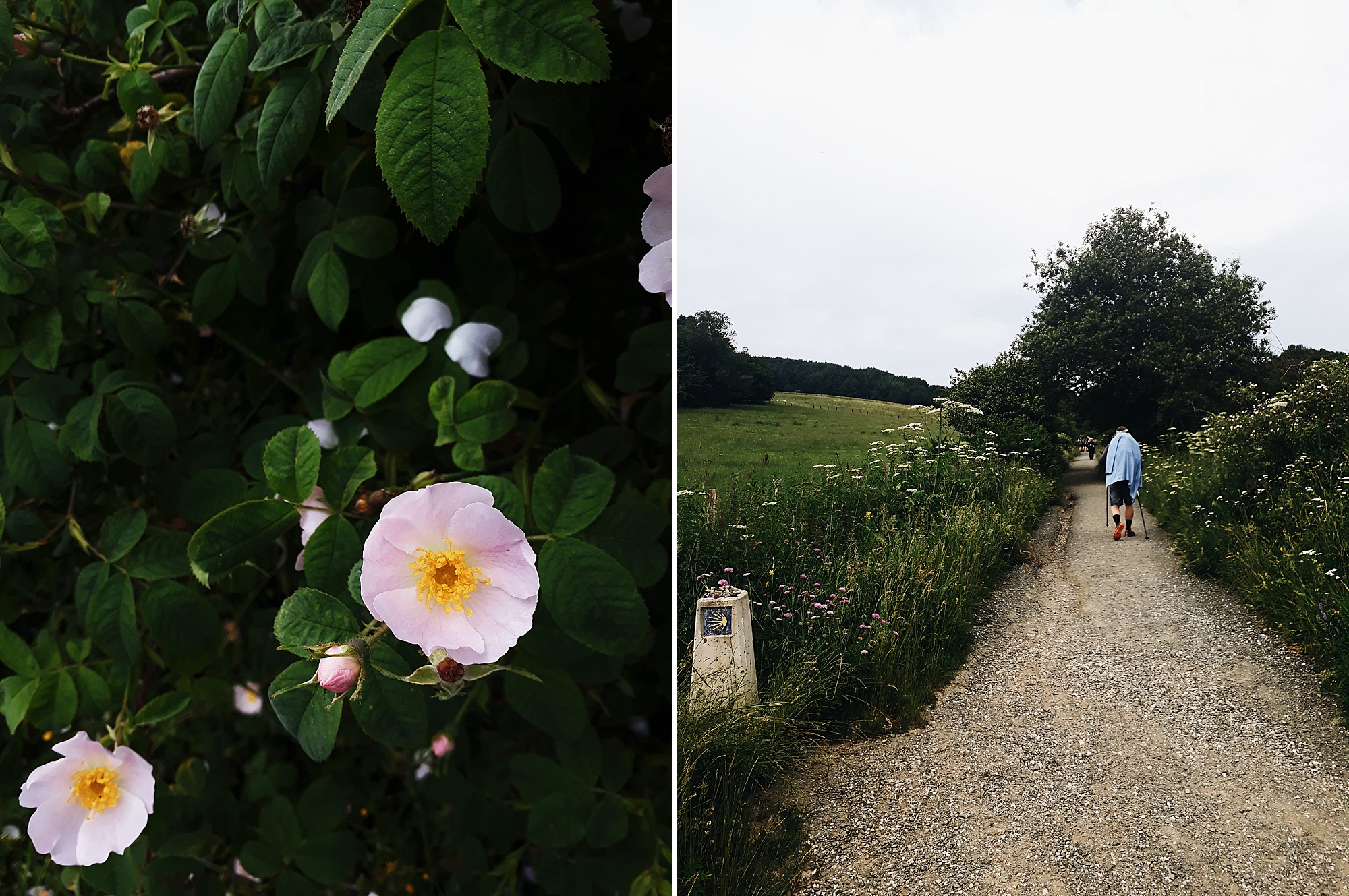
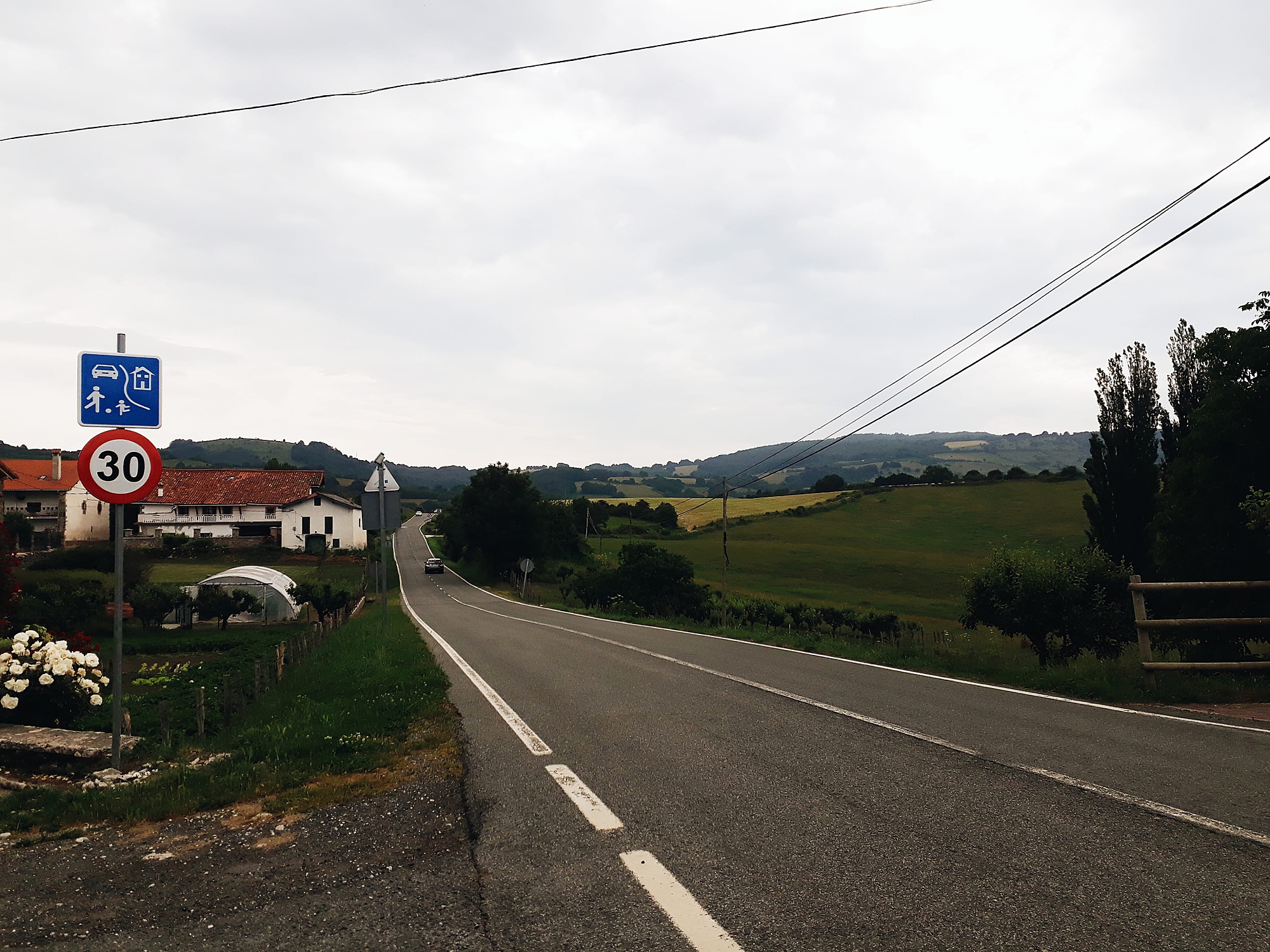 One of the steeper “hills” of the day:
One of the steeper “hills” of the day:

We got a little taste of the views we missed out on on the first day.
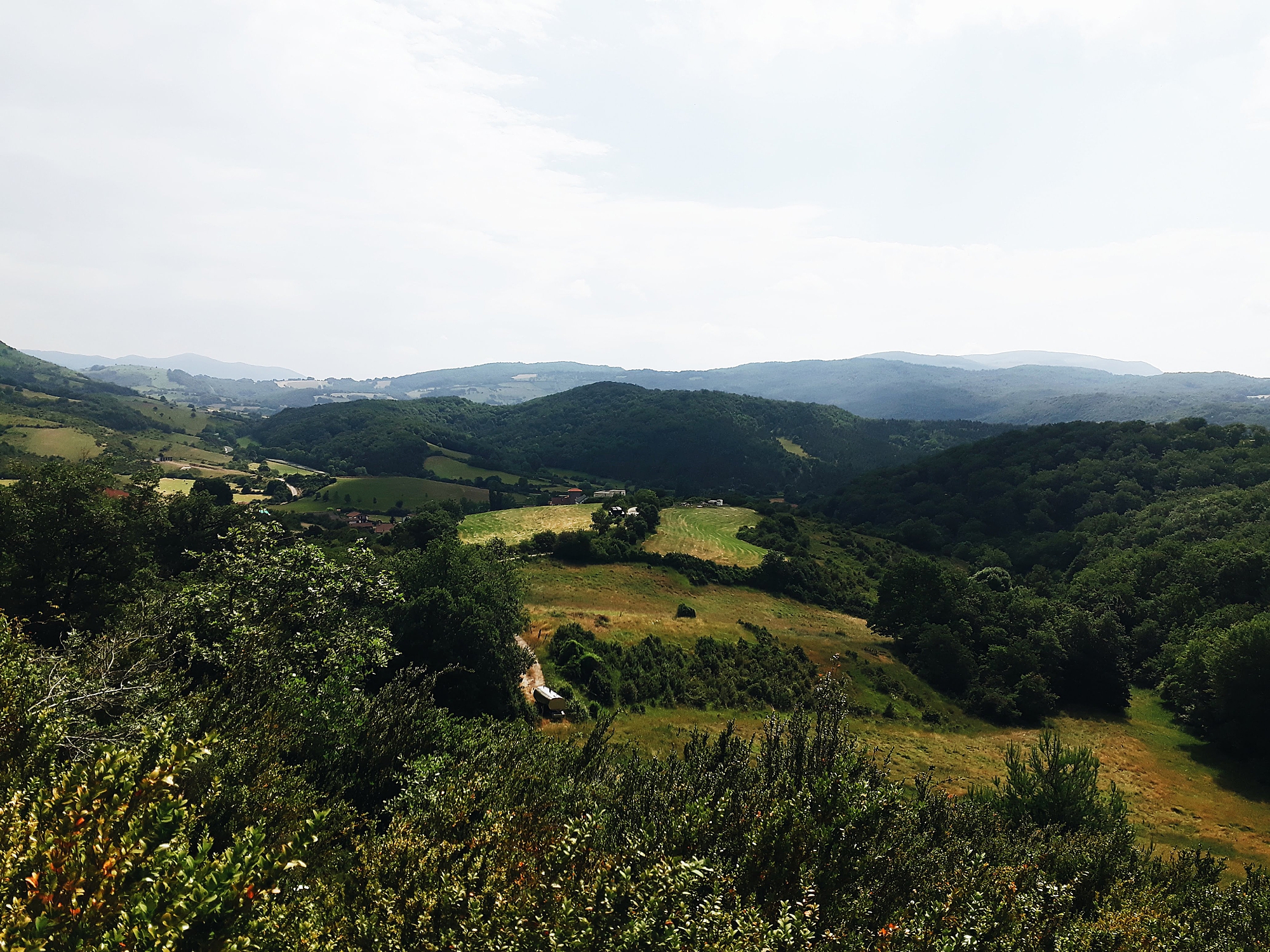
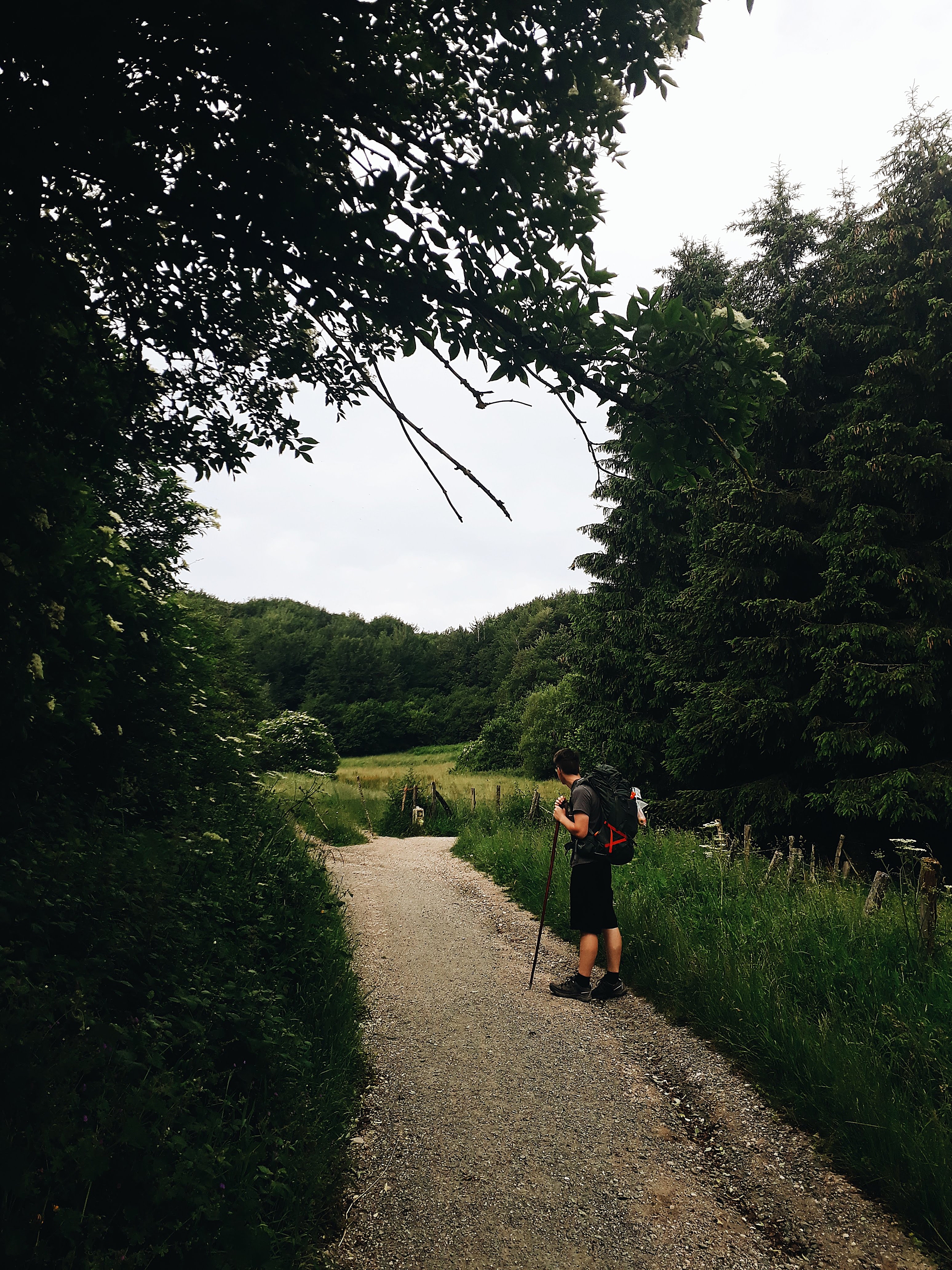

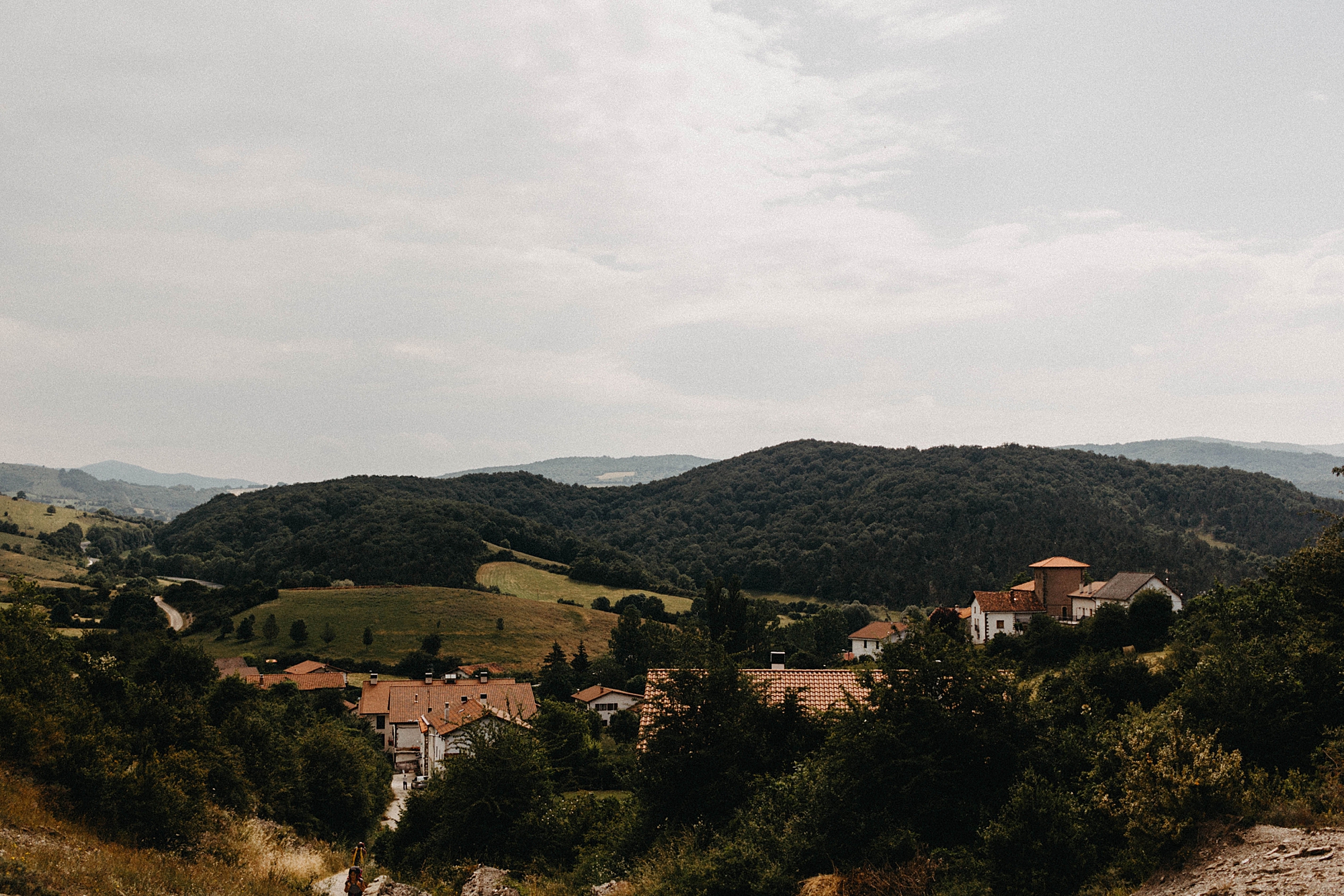
The bridge crossing into the town of Zubiri, where we stopped for the day. That stone building attached to the bridge is the very first albergue at the edge of town and I convinced my brother that it was where we needed to stay (even though it was slightly pricier than others further in town) because I was so done with the day. It actually ended up being super nice to be at the edge of the little creek. After finding some food, I walked down to the water and sat on a rock with my feet in the ice cold water which felt sooo amazing after such an exhausting day and was a peaceful place to journal. 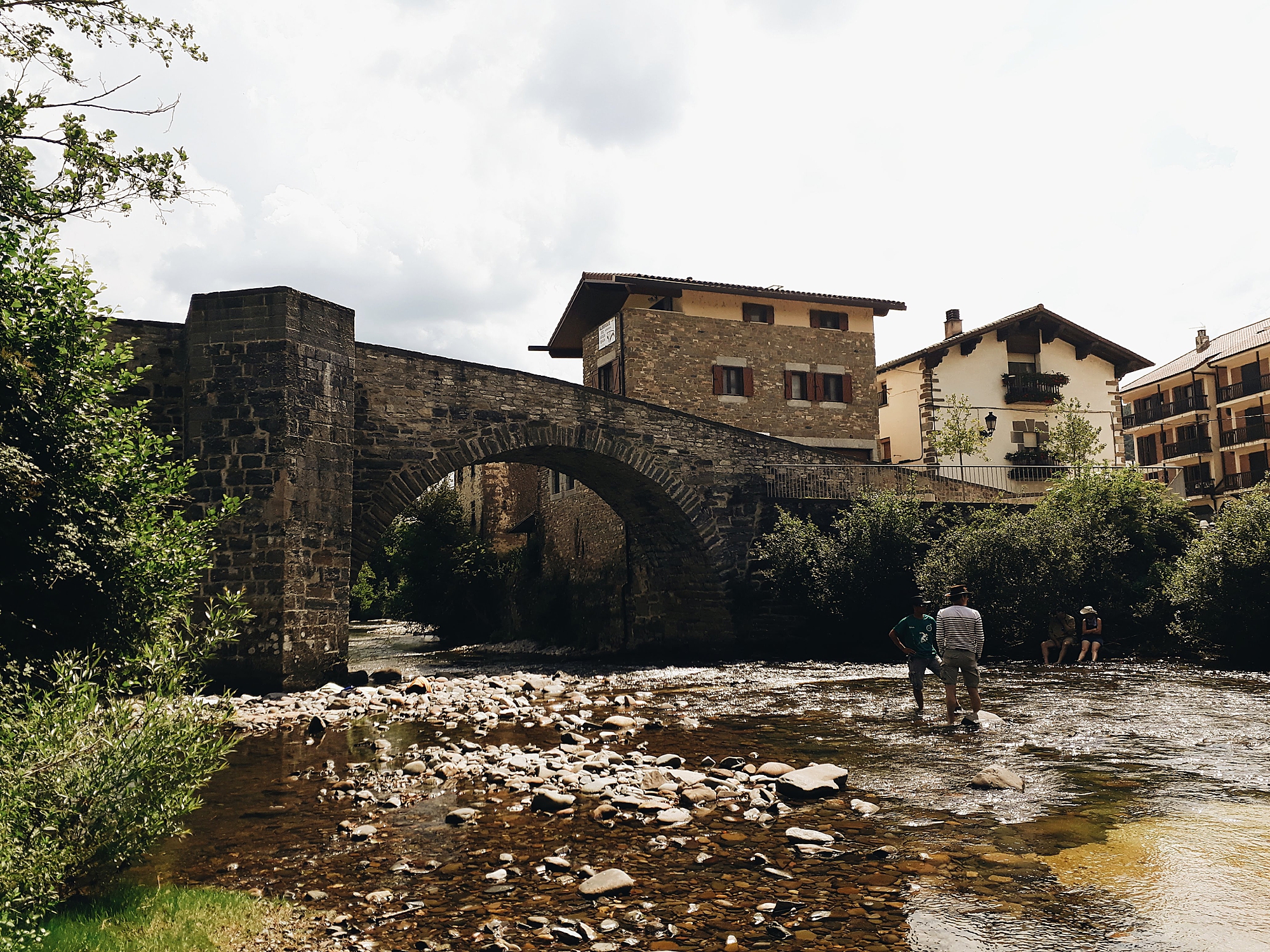 There were a lot of other tired pilgrims who had the same idea as me:
There were a lot of other tired pilgrims who had the same idea as me:

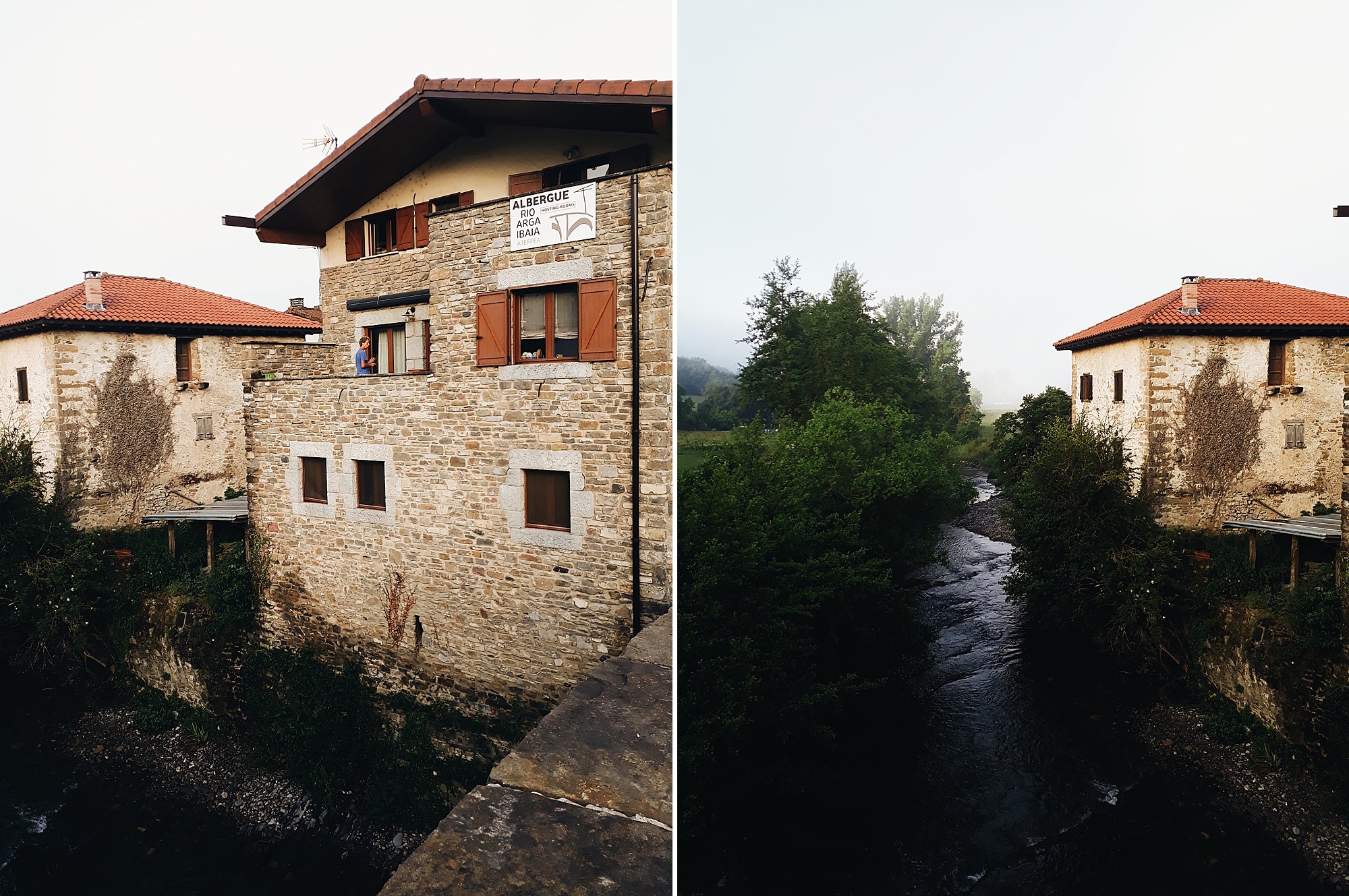
DAY THREE: Zubiri to Pamplona || ≈ 21 km (13 miles)
Pamplona was the first major city that we walked through and reaching it felt like our first mini accomplishment of the Camino (even though we were only three days in). Our day started off walking through ridiculously tall grass, in fact, it got so crazy at one point that we forged our way up to the road and decided to follow it for a bit until the path veered away from the road. We encountered more cats, beautiful flowers, more medieval bridges, and made our first Camino friends that day. Up until this day we had basically just had a few friendly conversations in passing with fellow pilgrims, but we ended up walking a good portion of this day with an American couple who have lived in China for the best several years teaching, and it was super fascinating to hear about their life and really nice to get to know some of our fellow pilgrims.
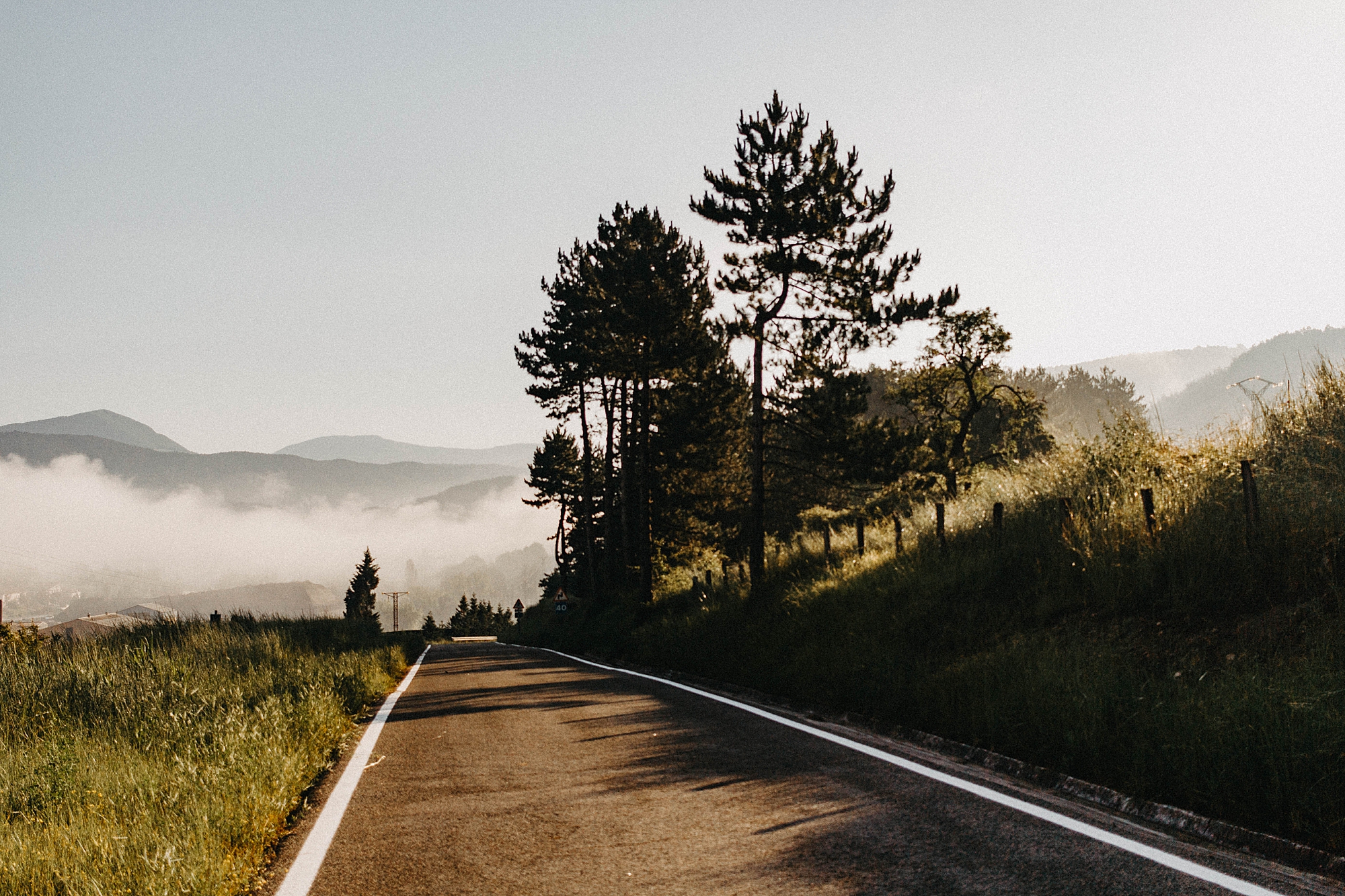
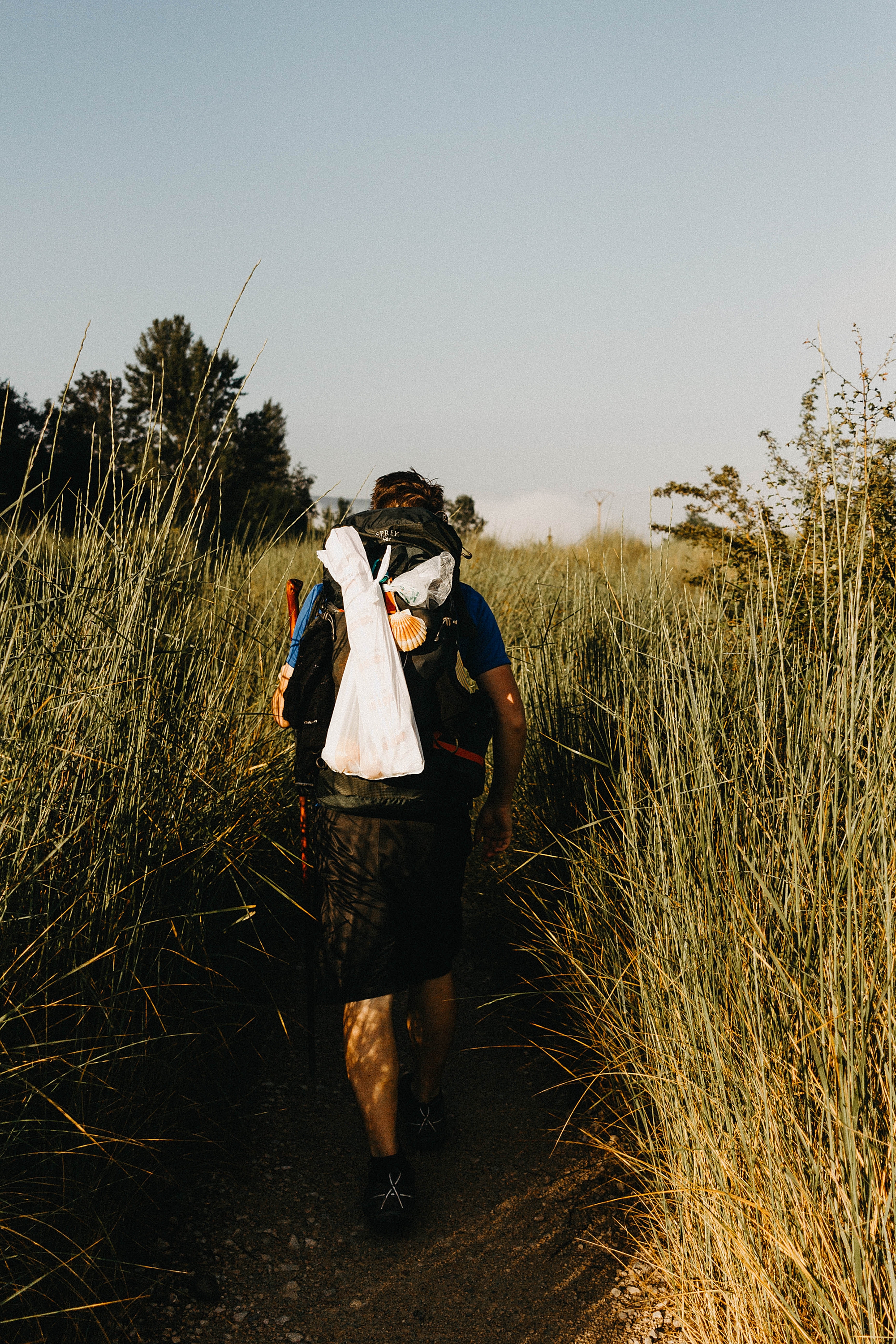
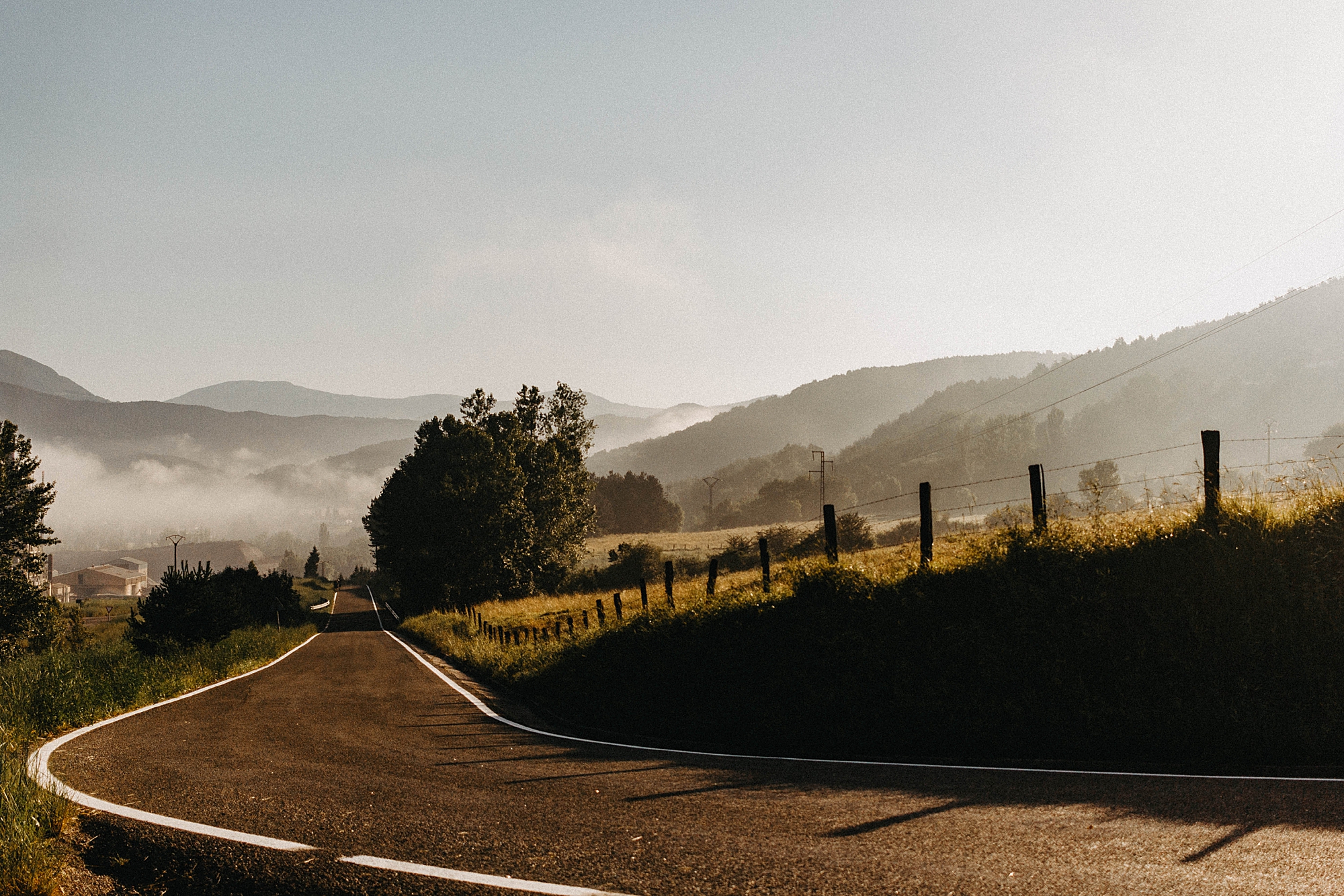
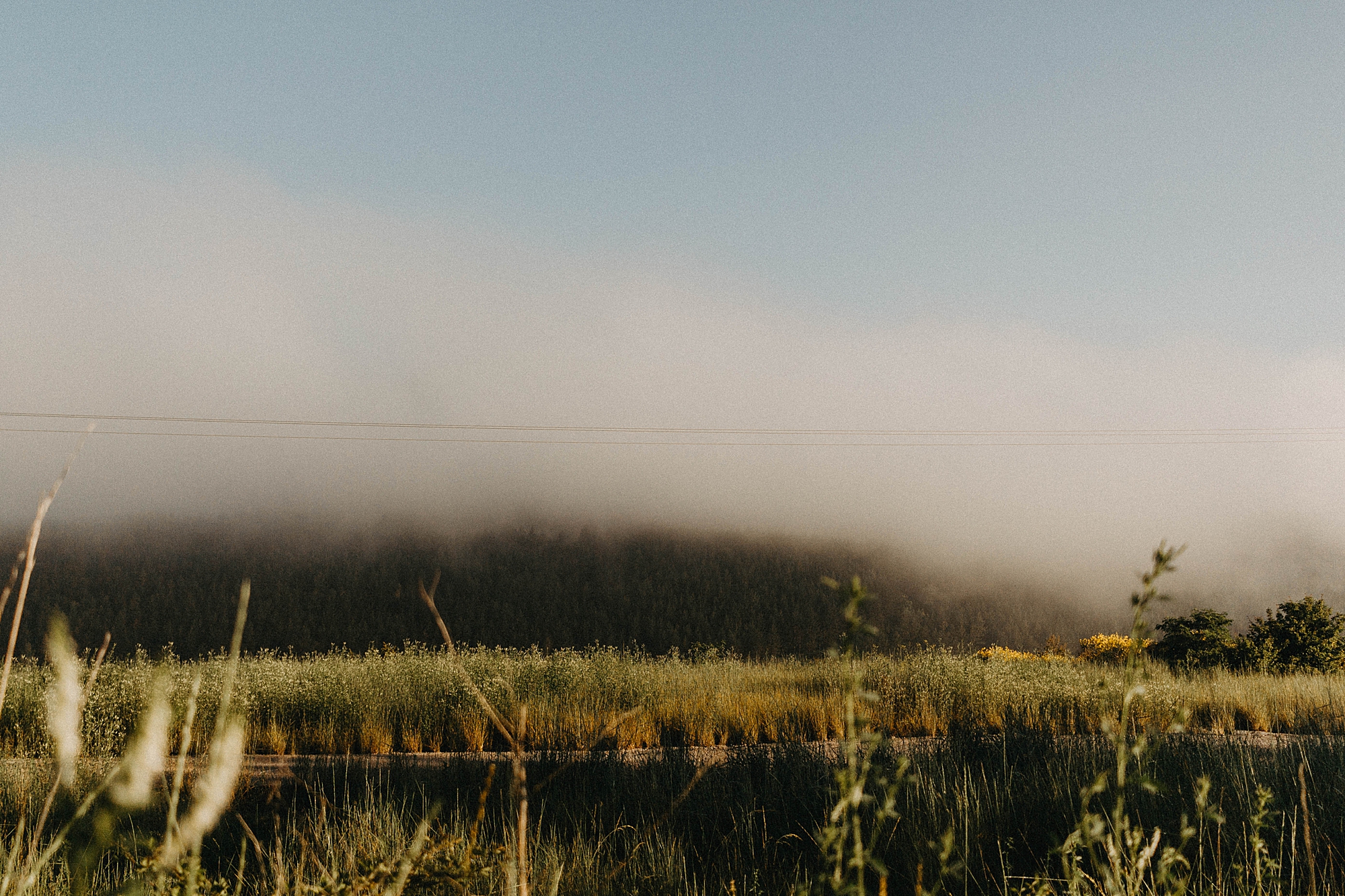
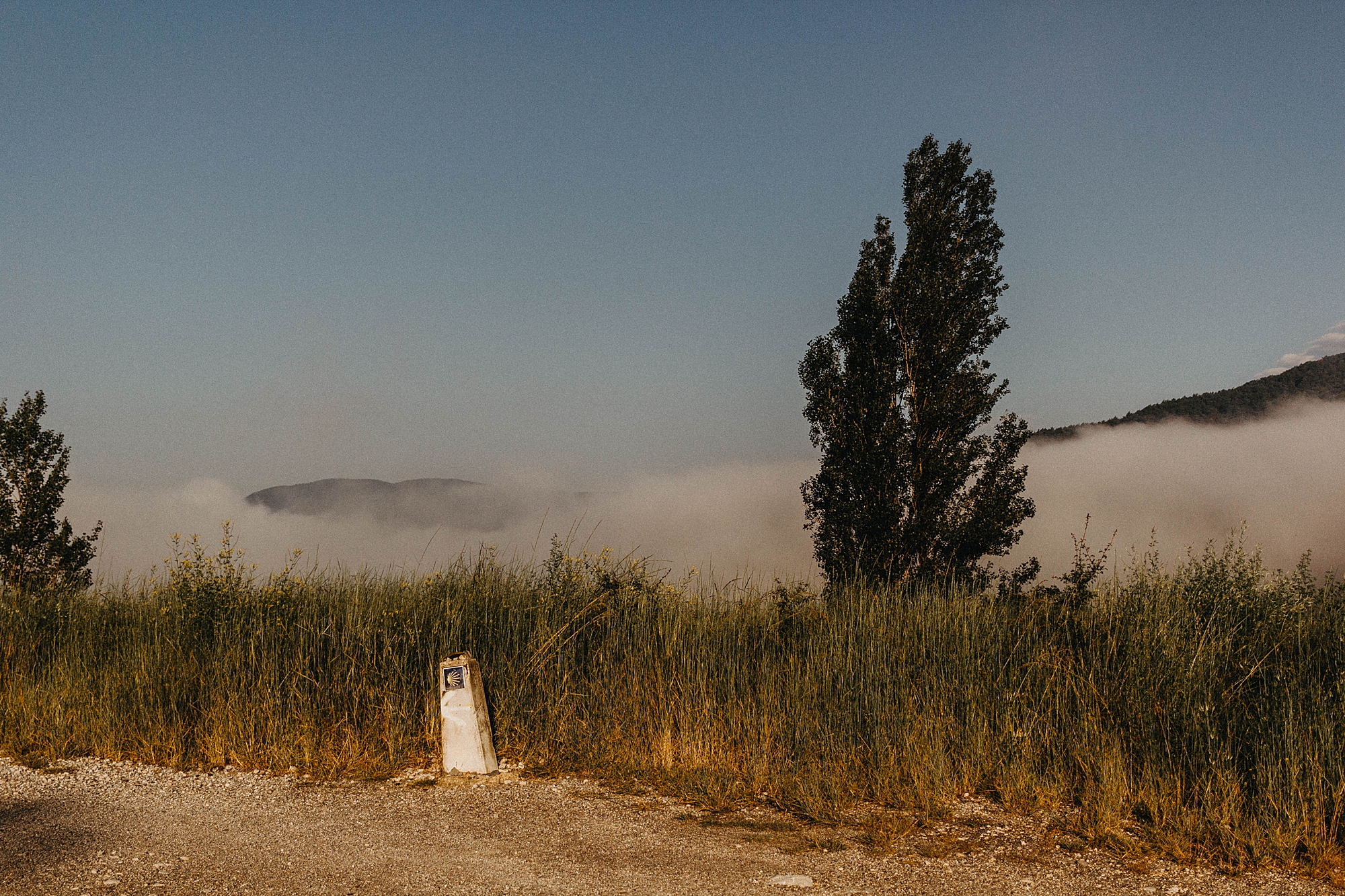
Take note of the walking stick, and the baguette tied to the back of his backpack. This was a very typical JP look.
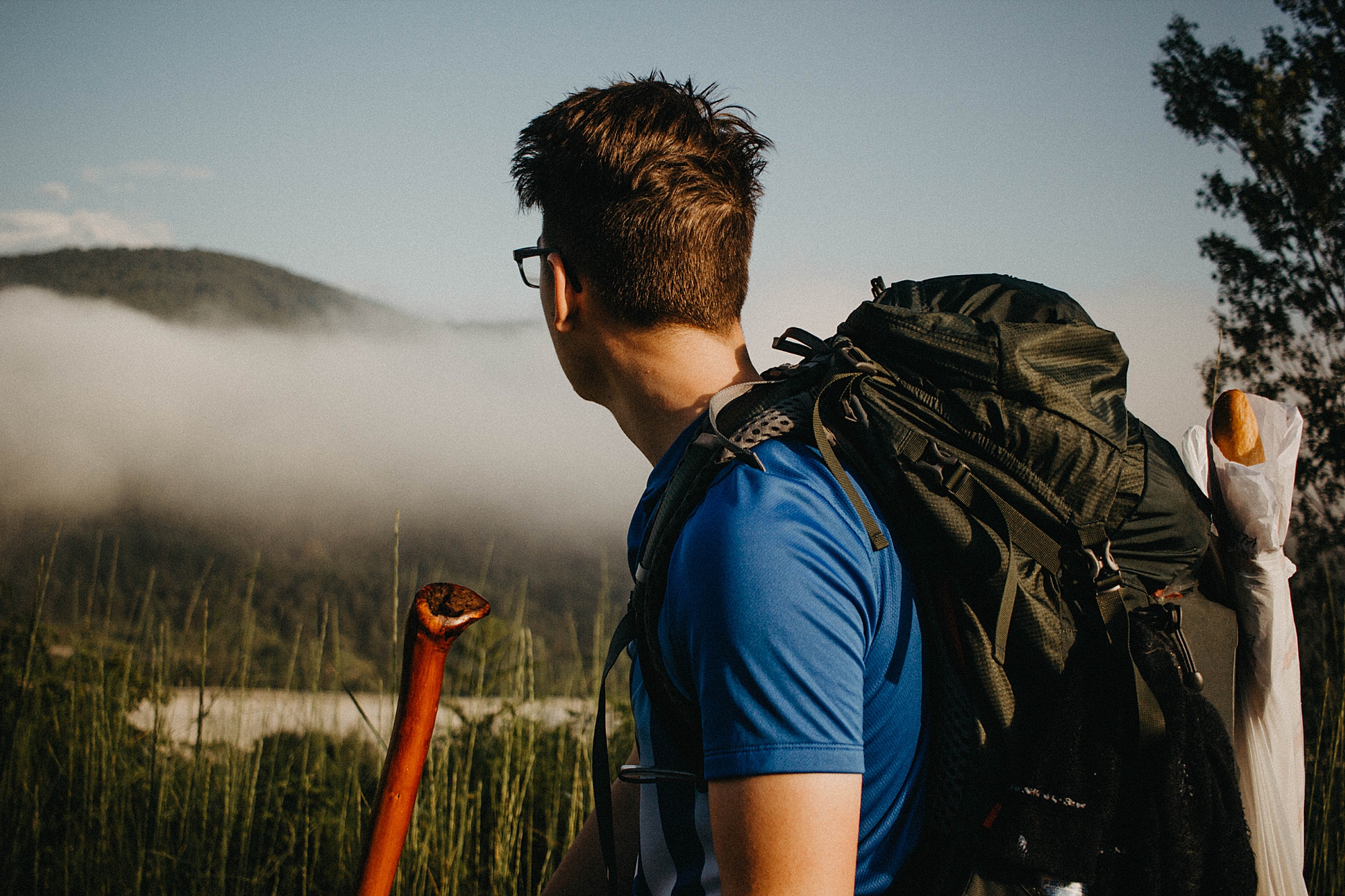
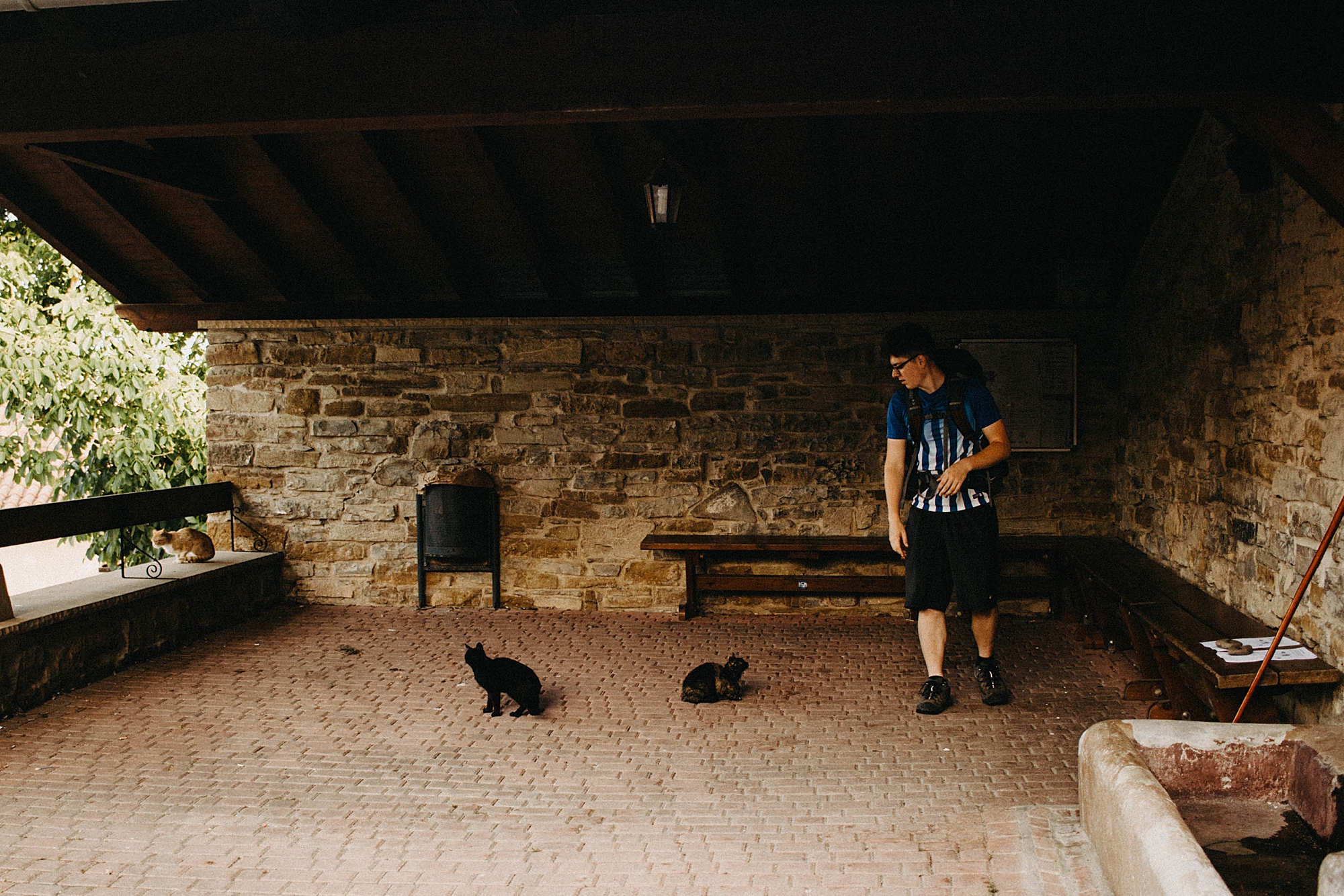
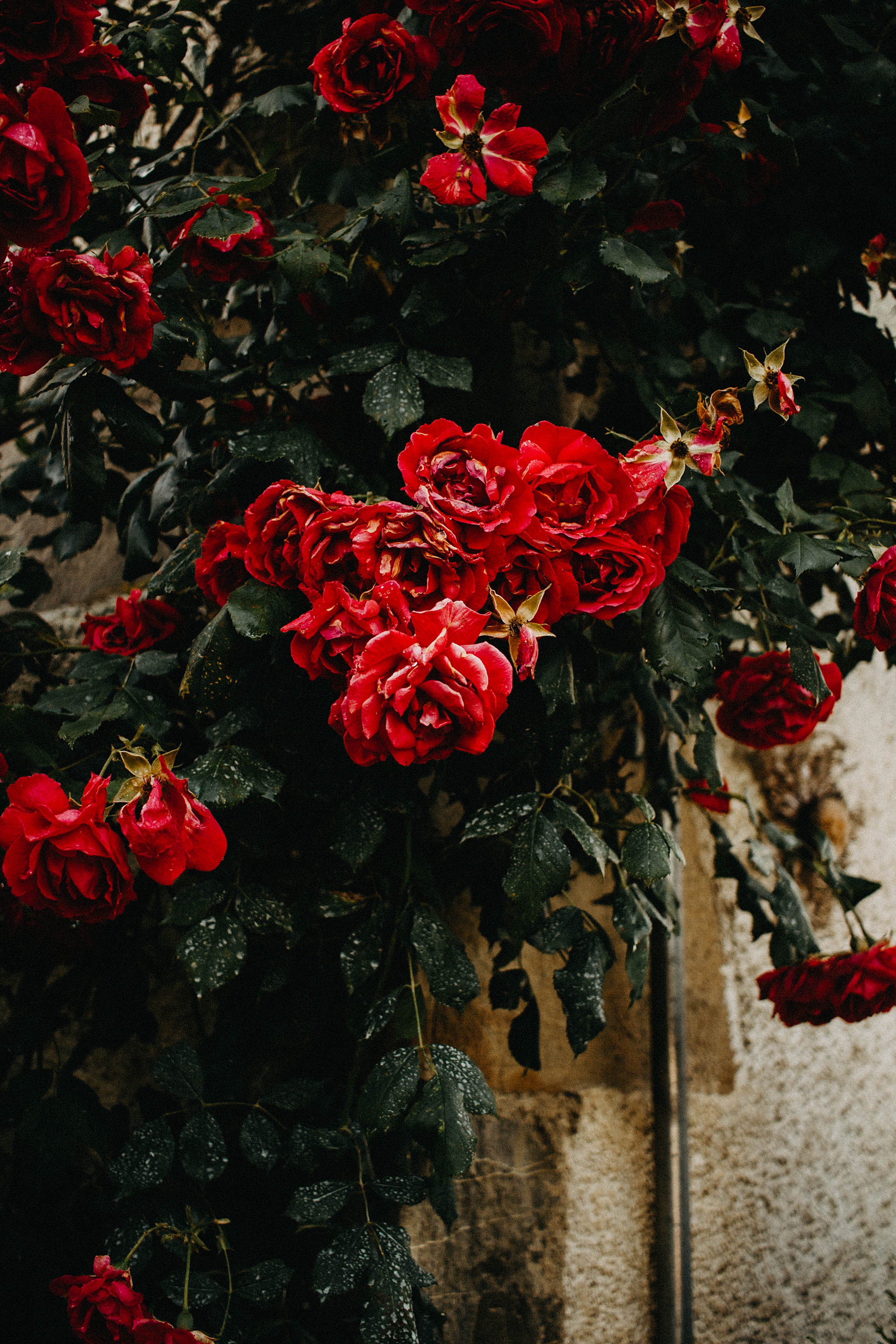
The bright yellow and blue signs guiding us along our way could be found anywhere and everywhere, from fences to the sides of houses, to lampposts, to bricks in the pavement, and everything in between.
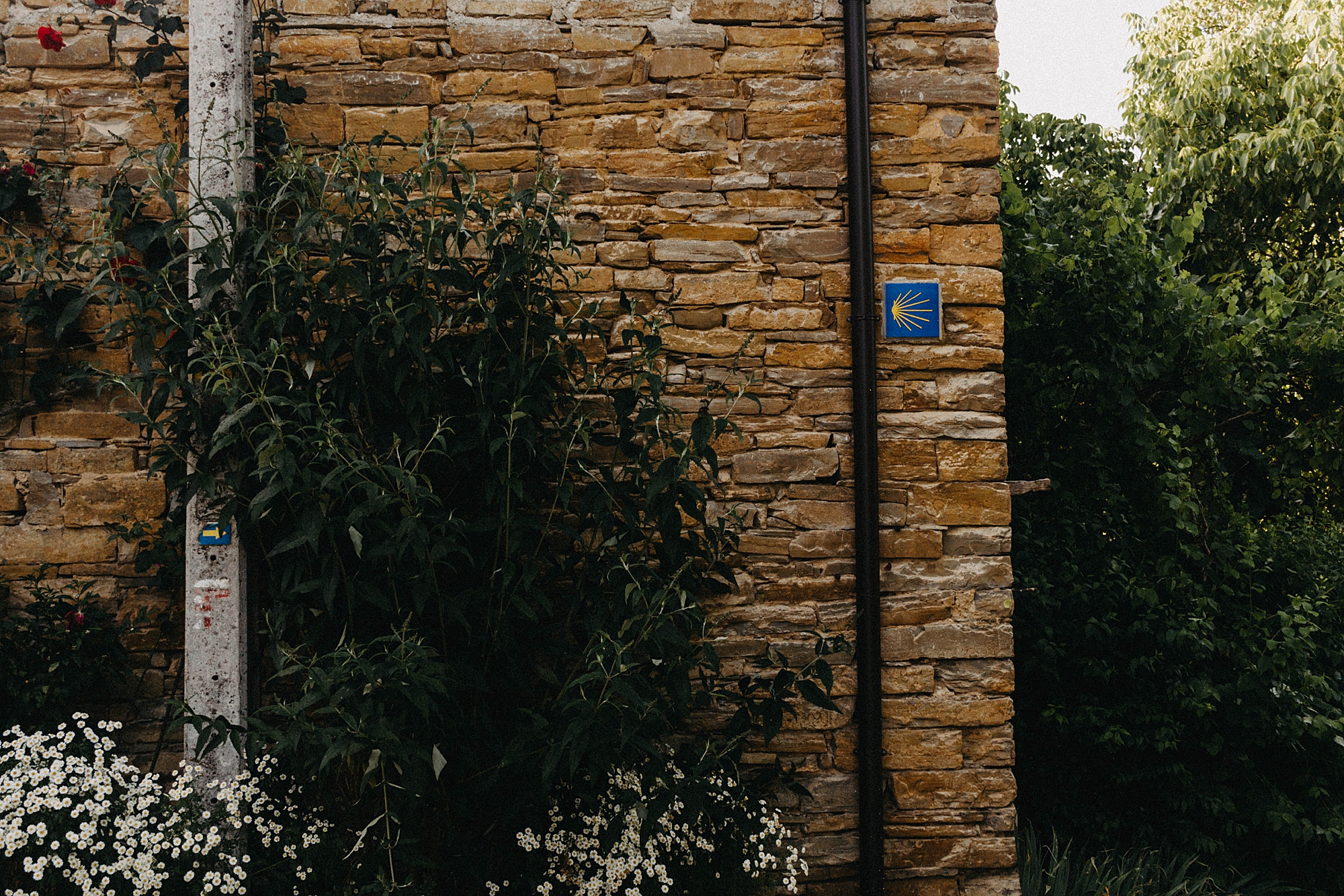
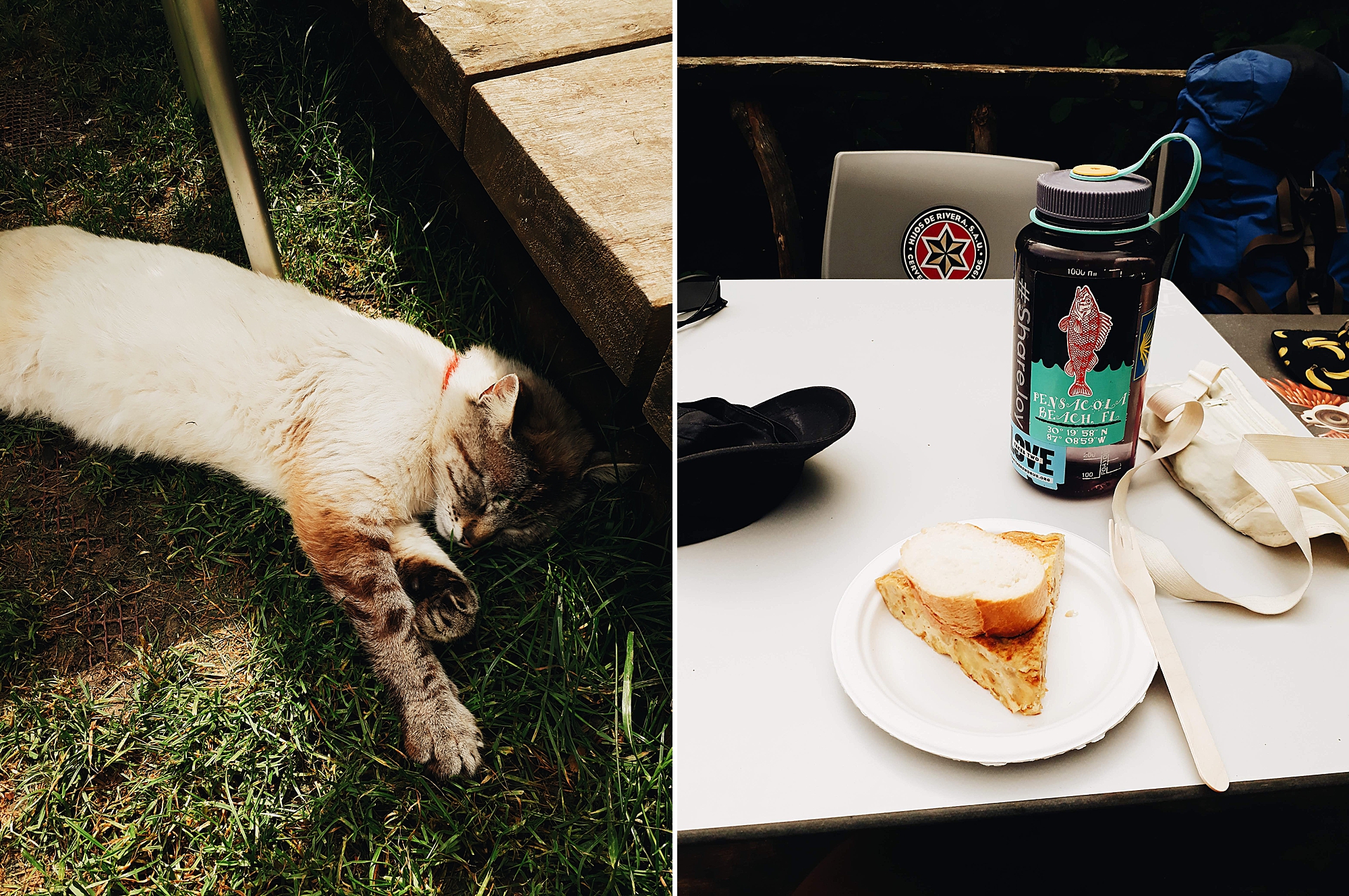
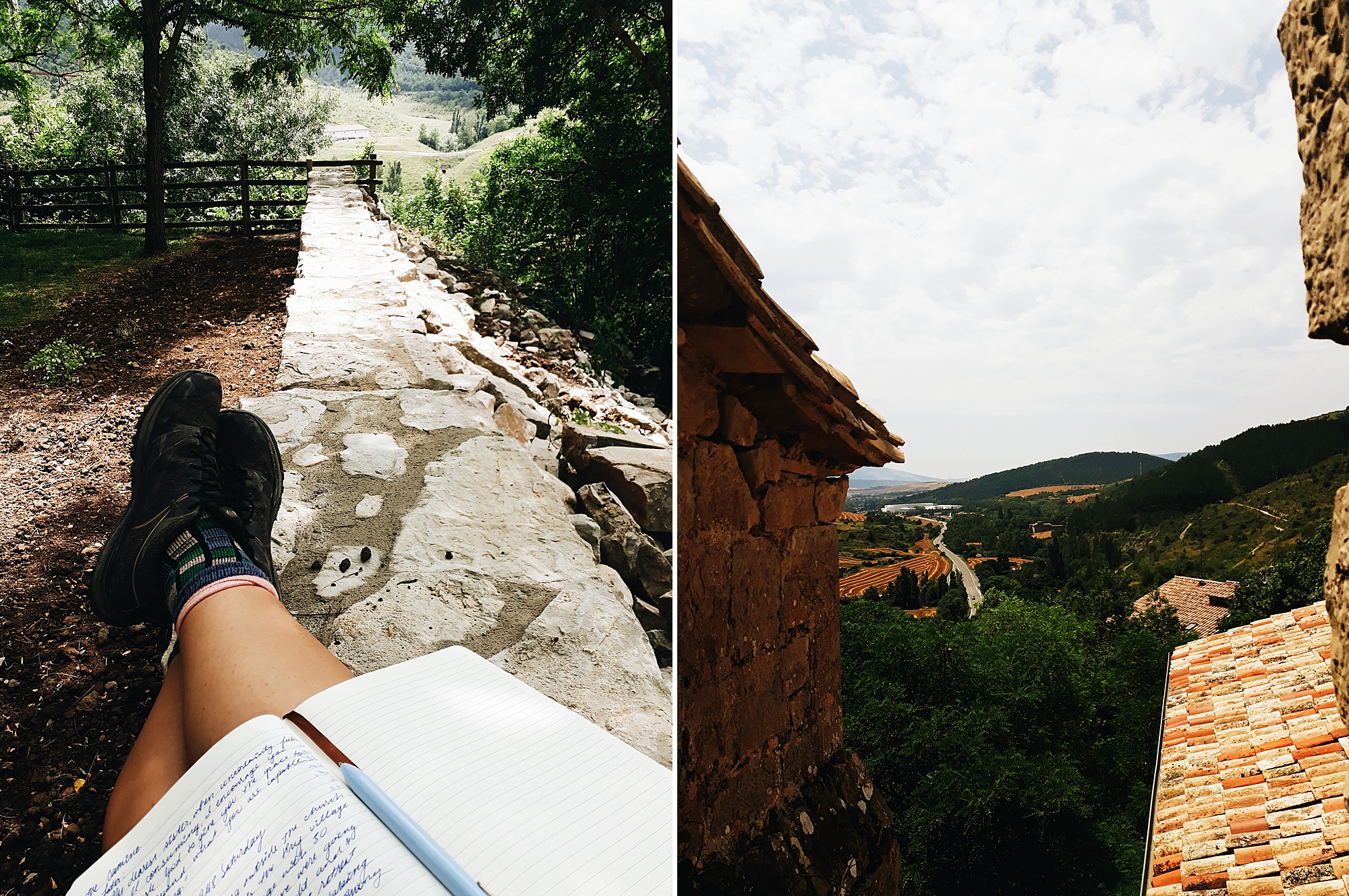
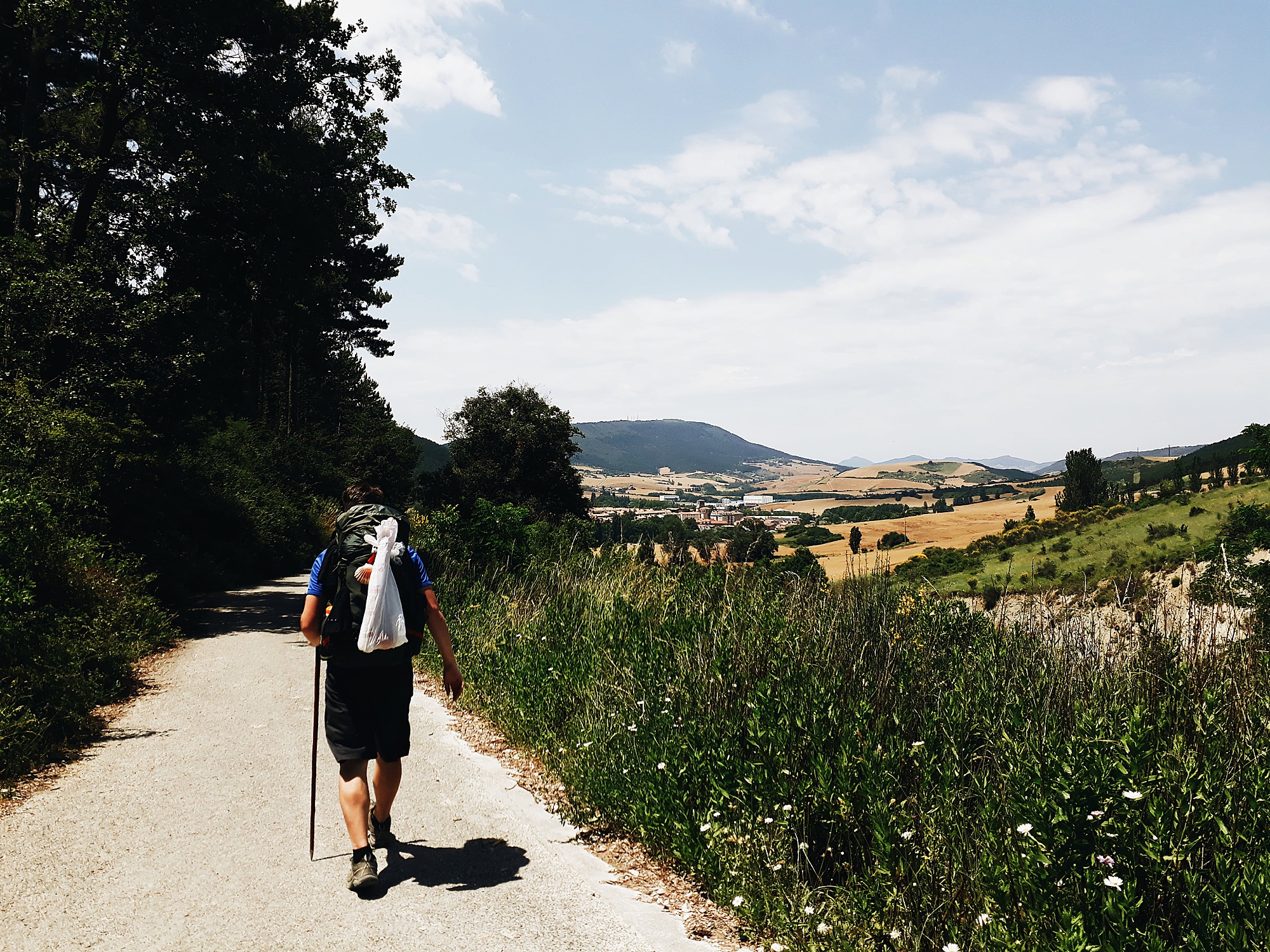
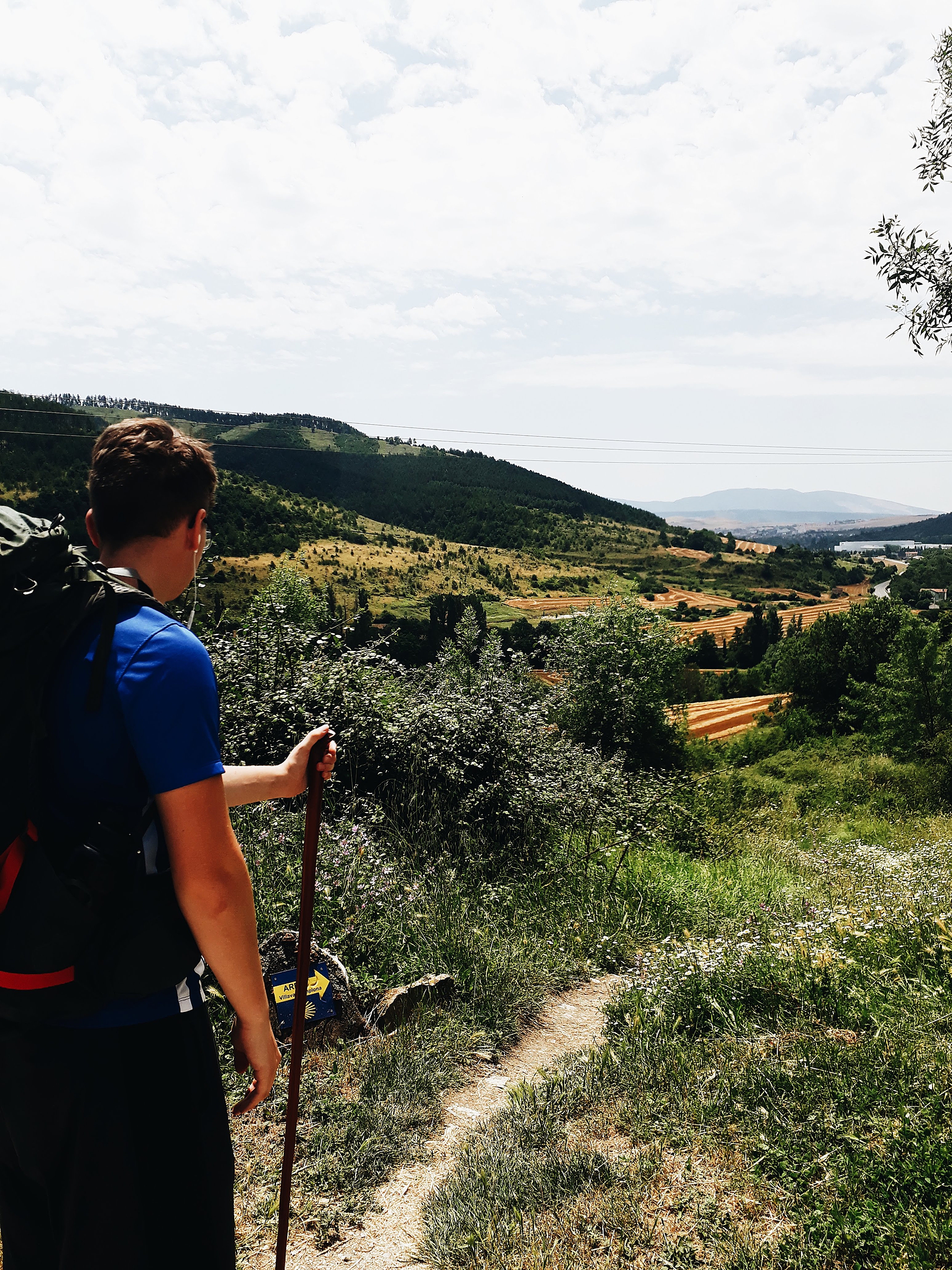
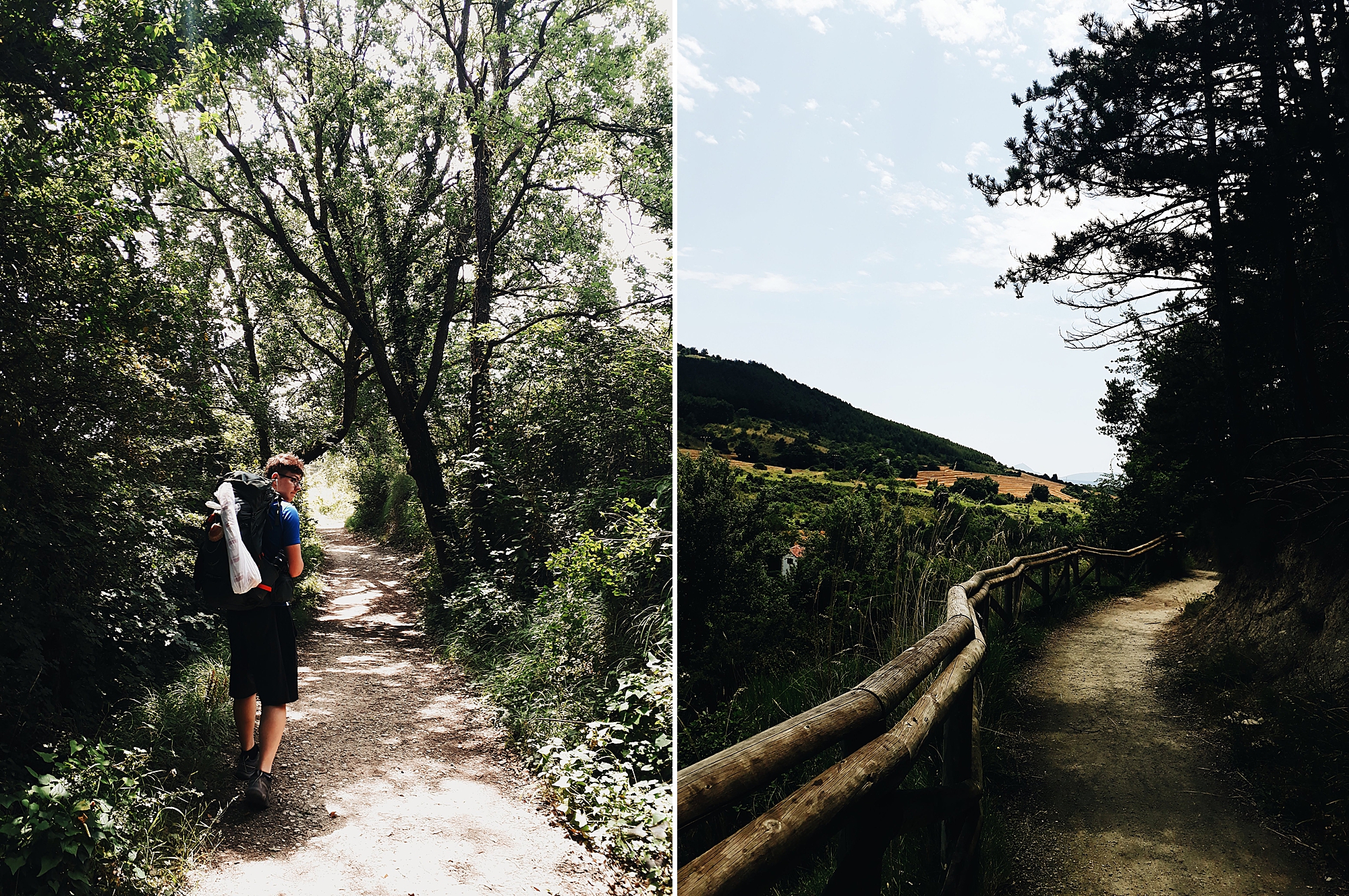
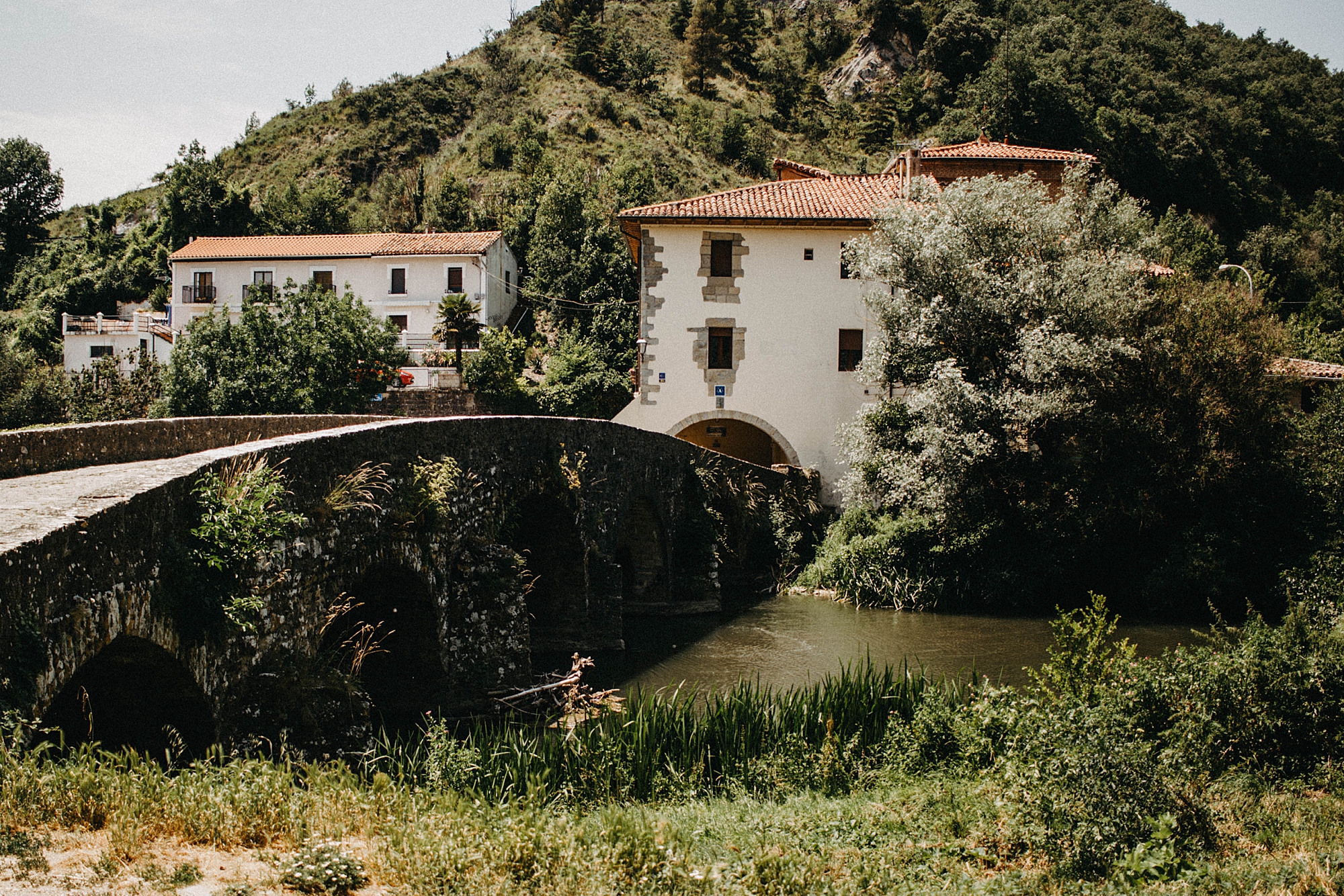
The historic center of Pamplona is still surrounded by the original medieval walls of the city.
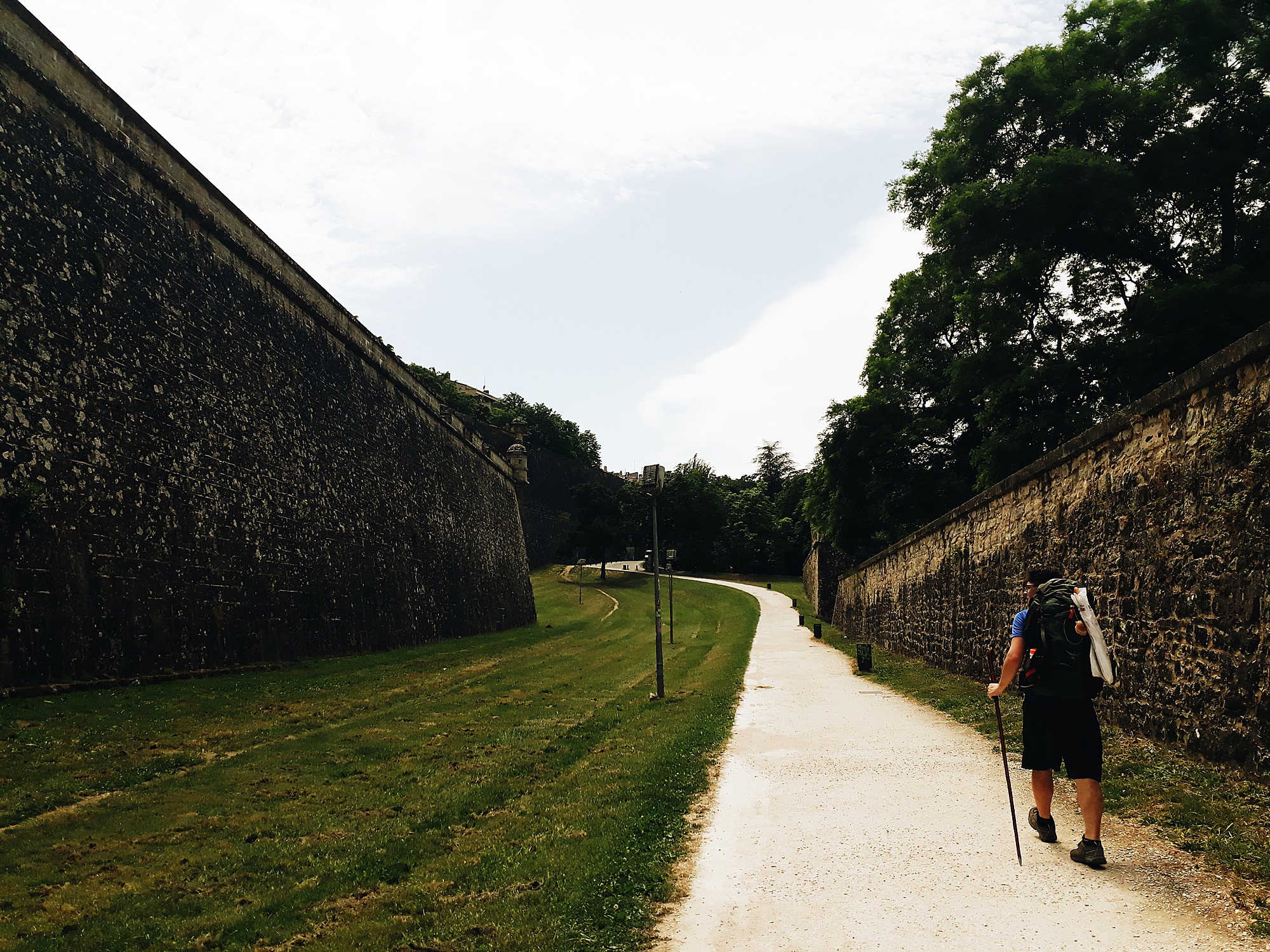
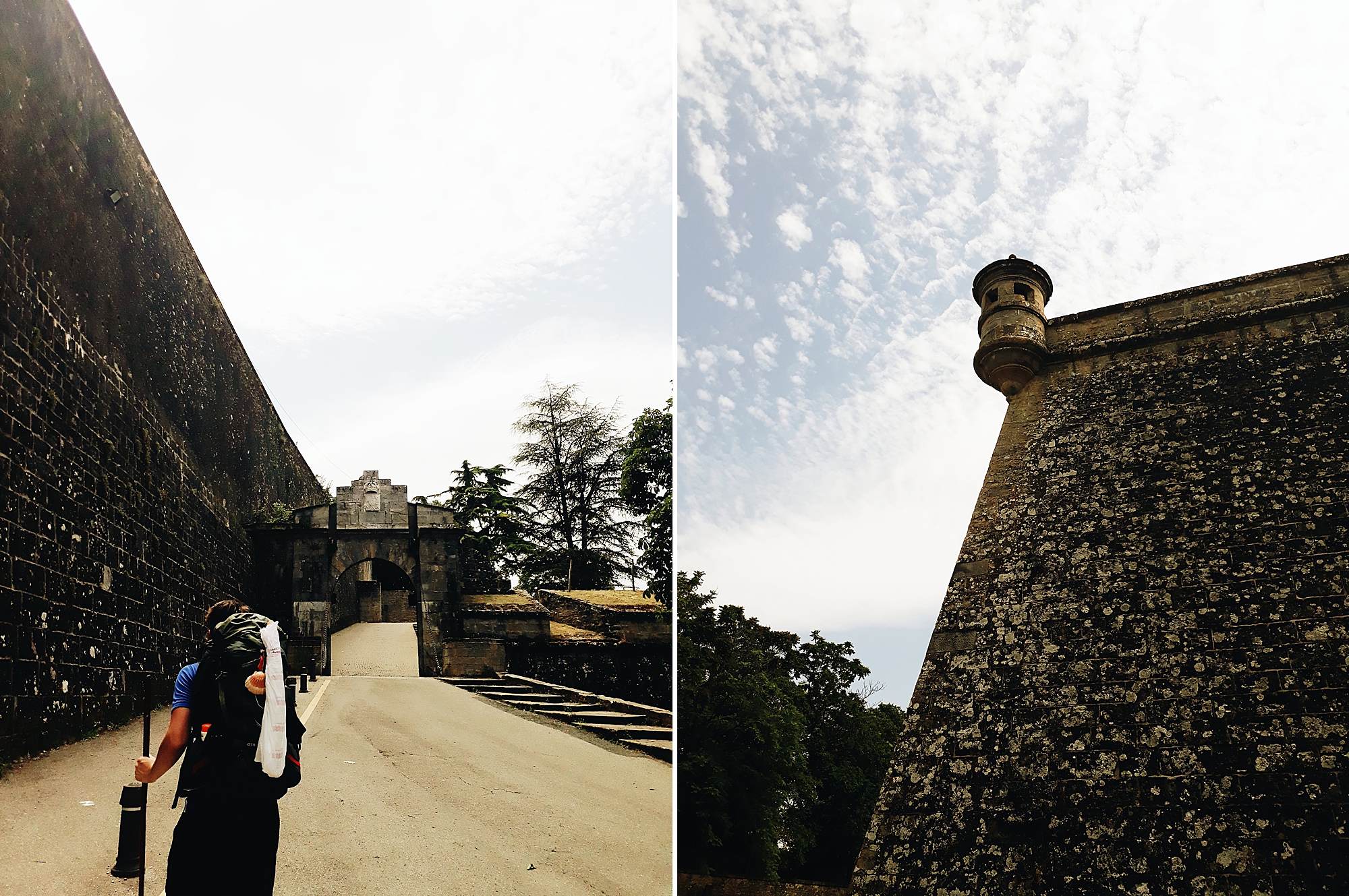
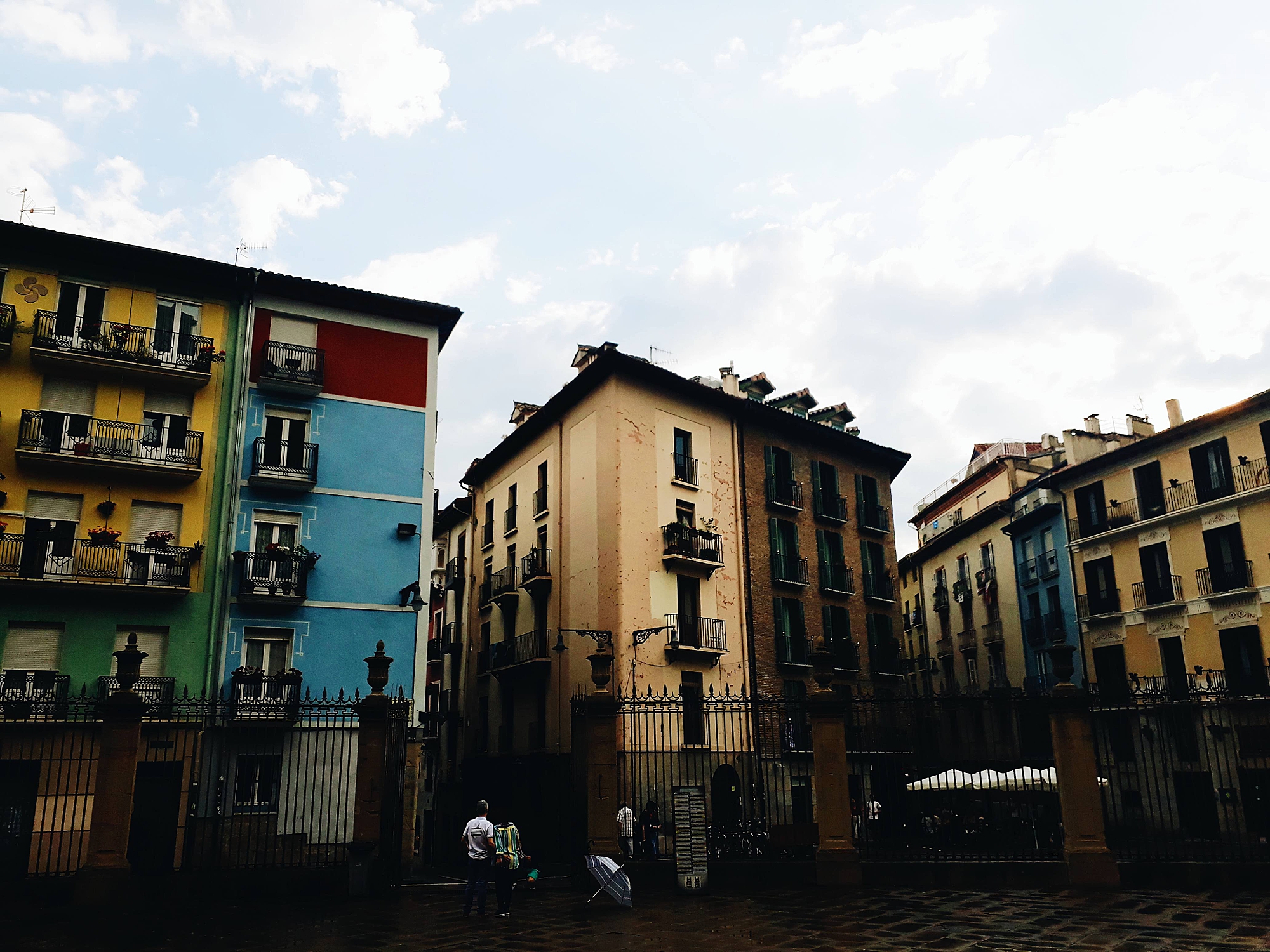 It was Saturday when we arrived in Pamplona and we were able to get to a Vigil Mass for Sunday in one of the many gorgeous Churches in town. One of the pilgrims we had met on the first day was a Catholic seminarian and he joined us for the Vigil Mass. One of the many reasons I love the Catholic faith.
It was Saturday when we arrived in Pamplona and we were able to get to a Vigil Mass for Sunday in one of the many gorgeous Churches in town. One of the pilgrims we had met on the first day was a Catholic seminarian and he joined us for the Vigil Mass. One of the many reasons I love the Catholic faith.
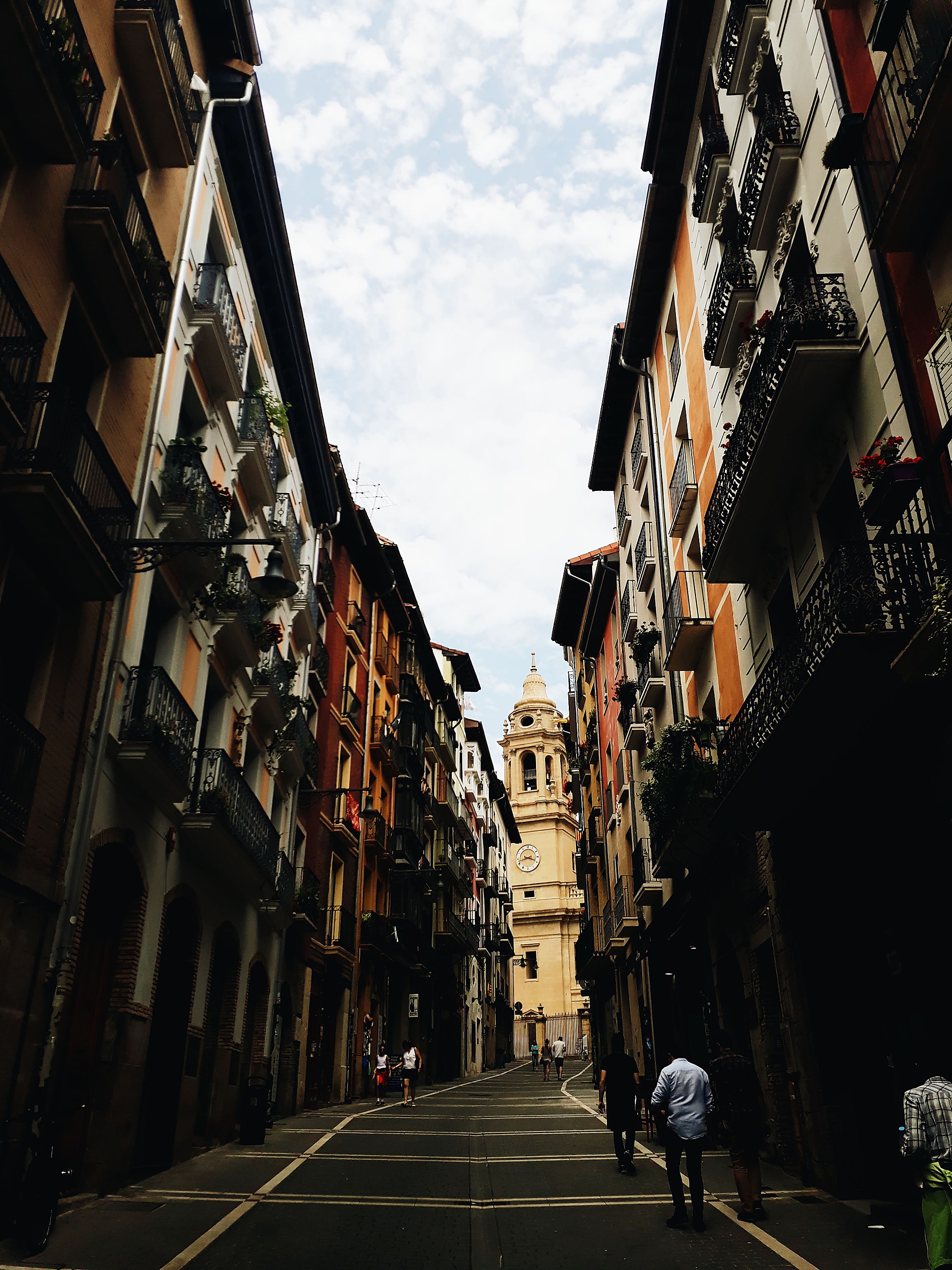

The albergue that we stayed in was one of the coolest ones we stayed in. It is an old church converted into a modern albergue and has 112 beds, decent bathrooms, a kitchen, and a nice courtyard where pilgrims could do their laundry and hang it out to dry.
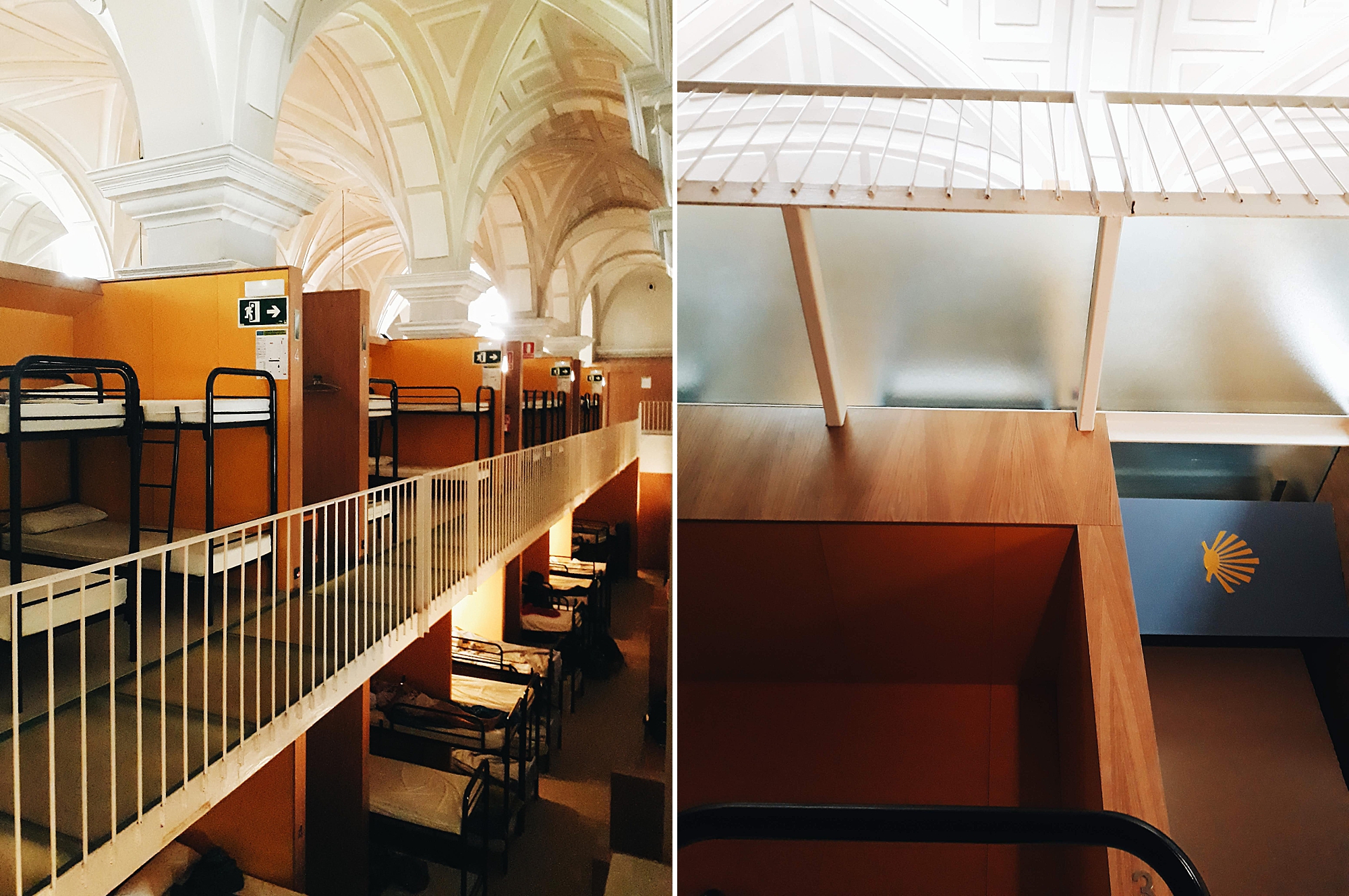
If this meal looks familiar….it’s because it was our typical go-to meal in our week in France prior to the Camino and it was a cheap, quick and easy meal to make when we were in a larger city that had a decent sized grocery store.
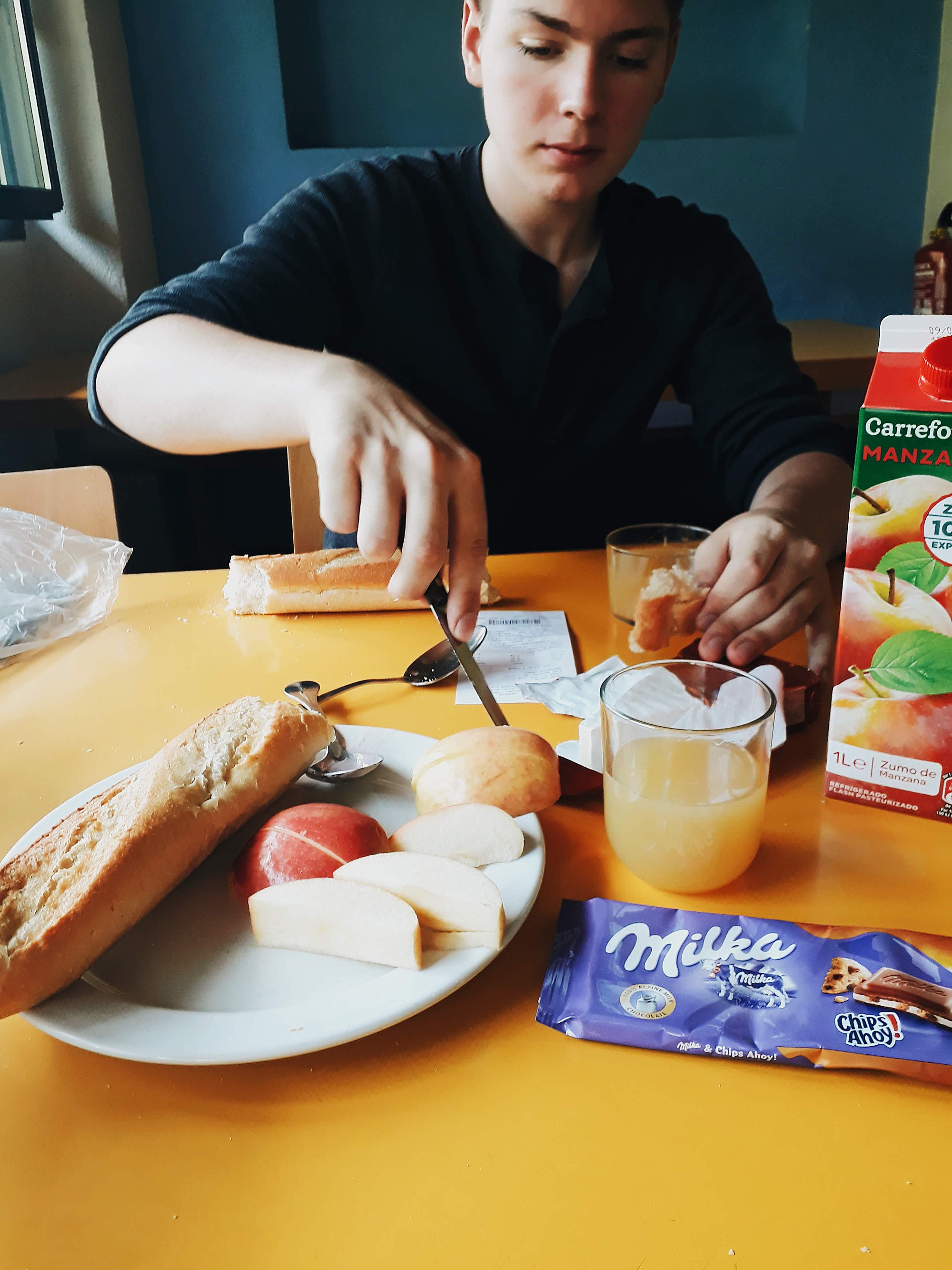
DAY FOUR: Pamplona to Puente La Reina || ≈ 23.8 km (14.8 mi)
Upon leaving Pamplona the landscape changed suddenly and dramatically. We had left the forested foothills and had begun to enter wheat country, although it was still a very hilly portion of the Camino.
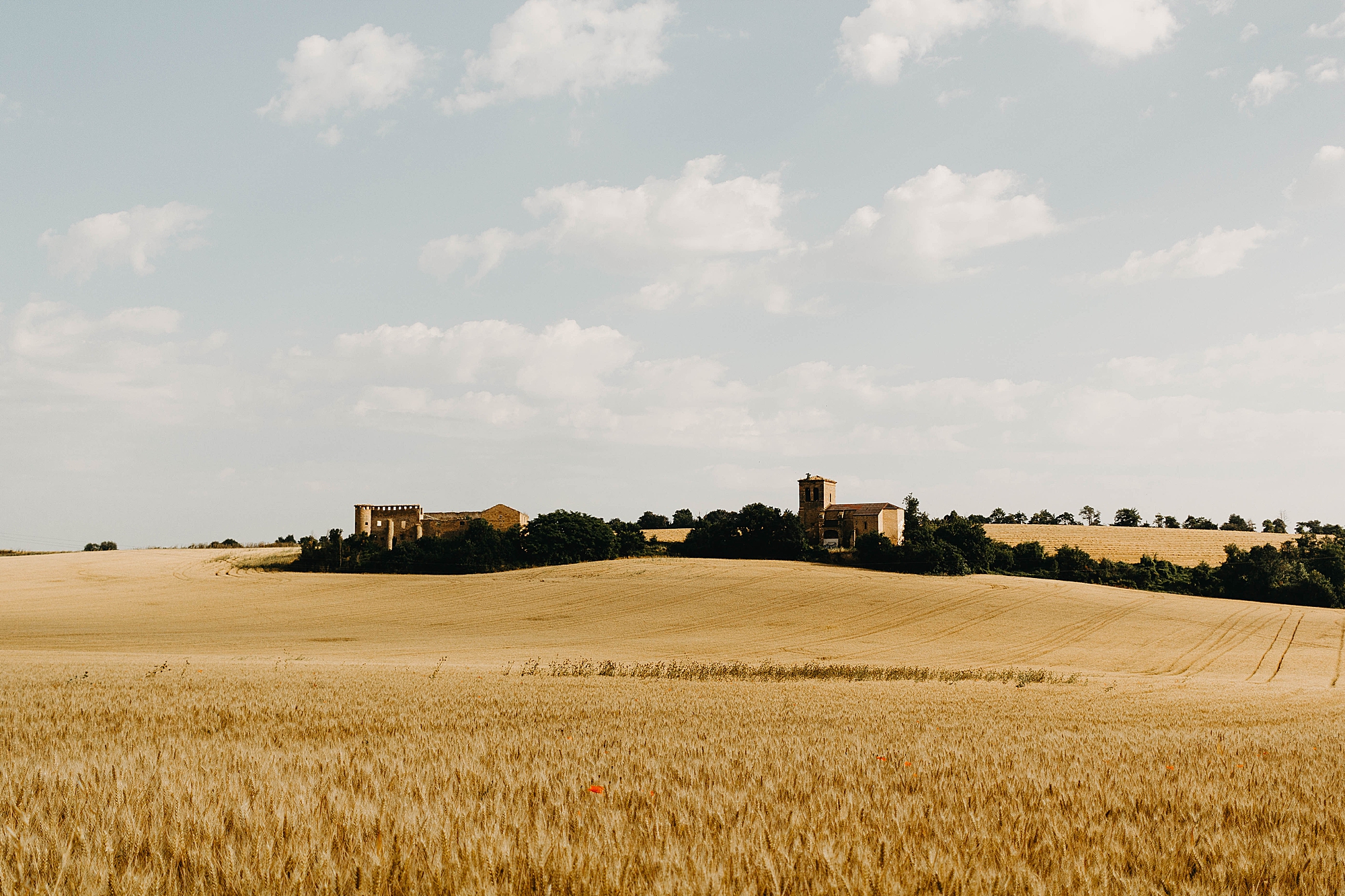
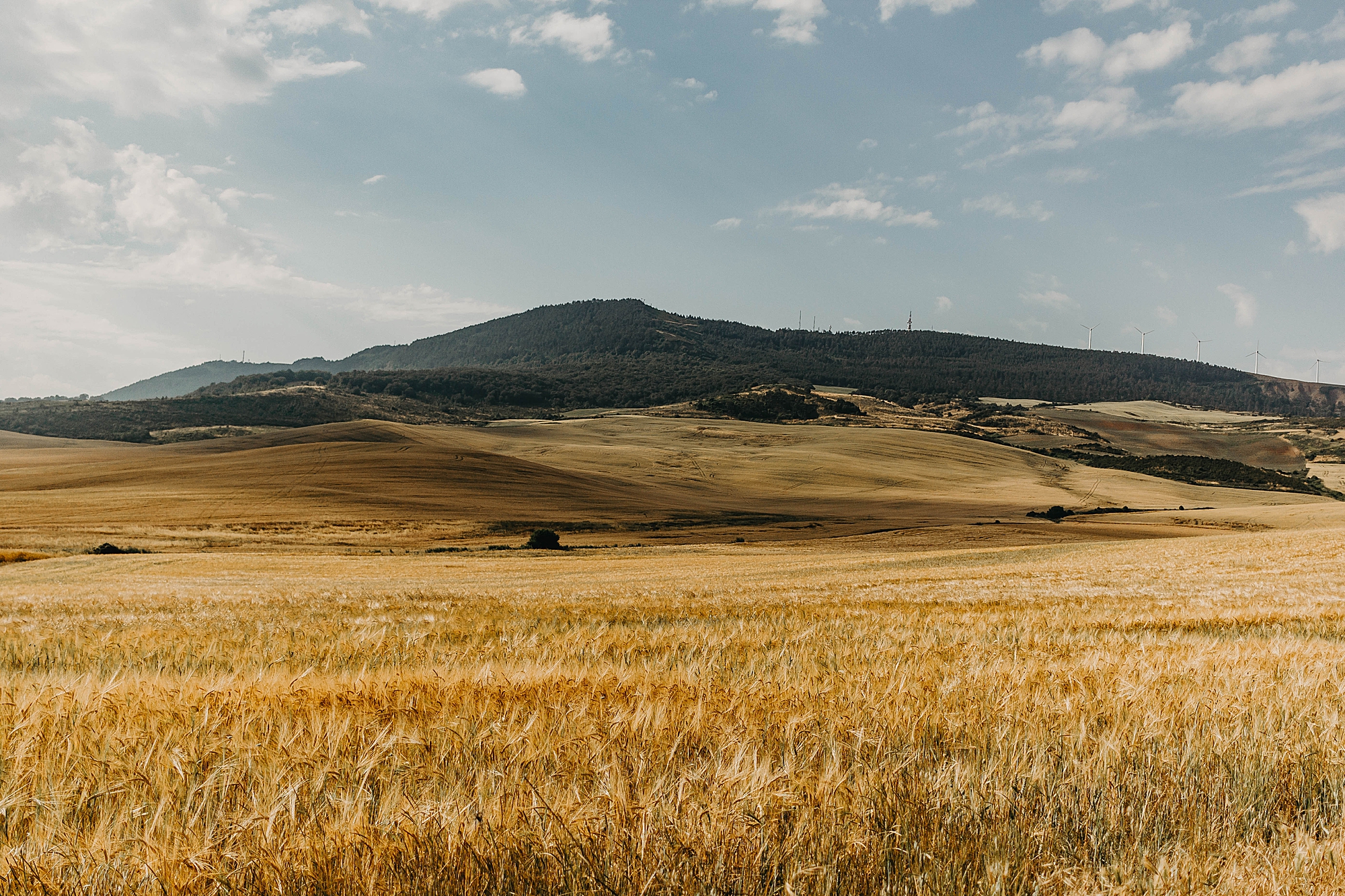
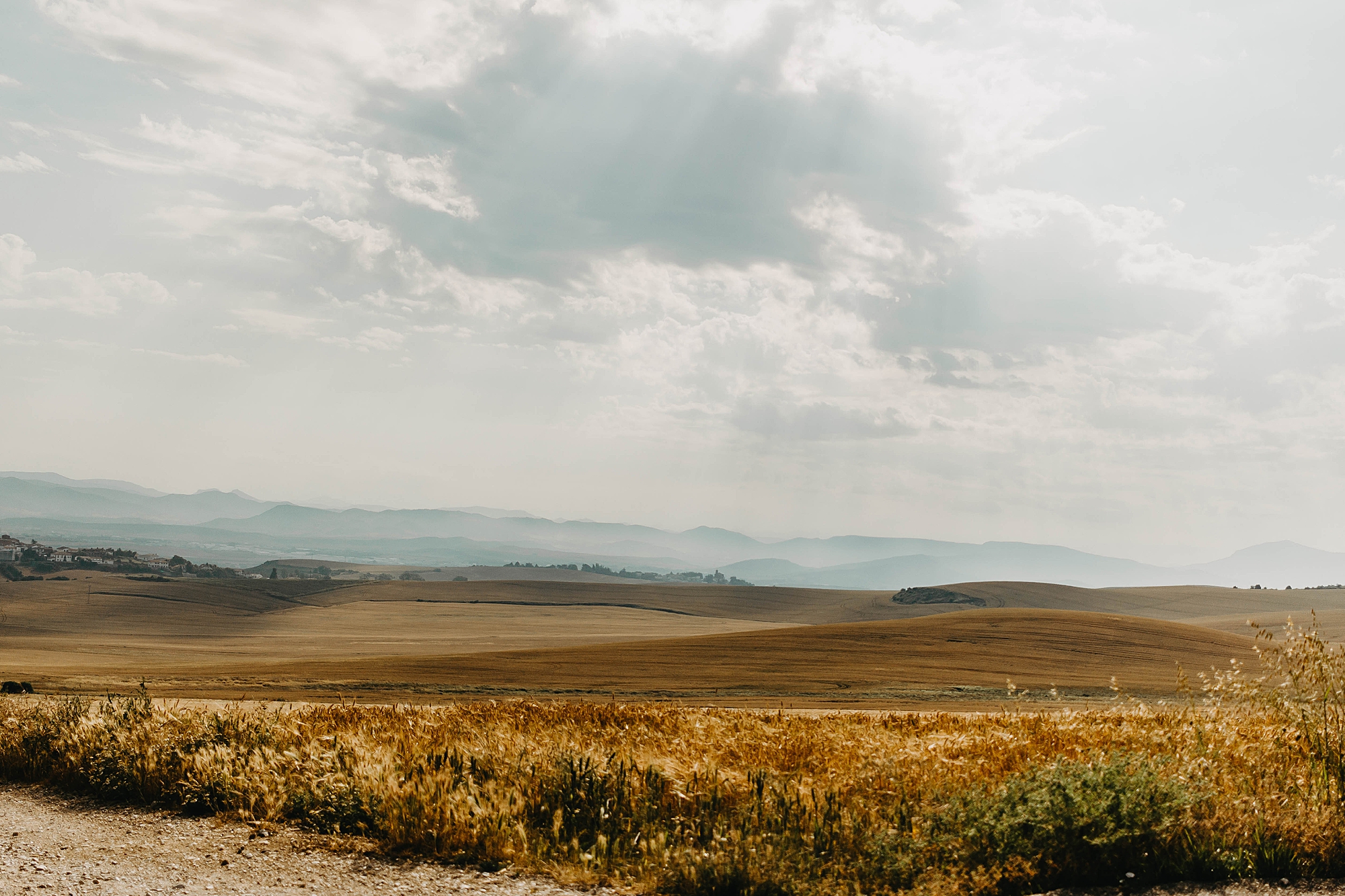
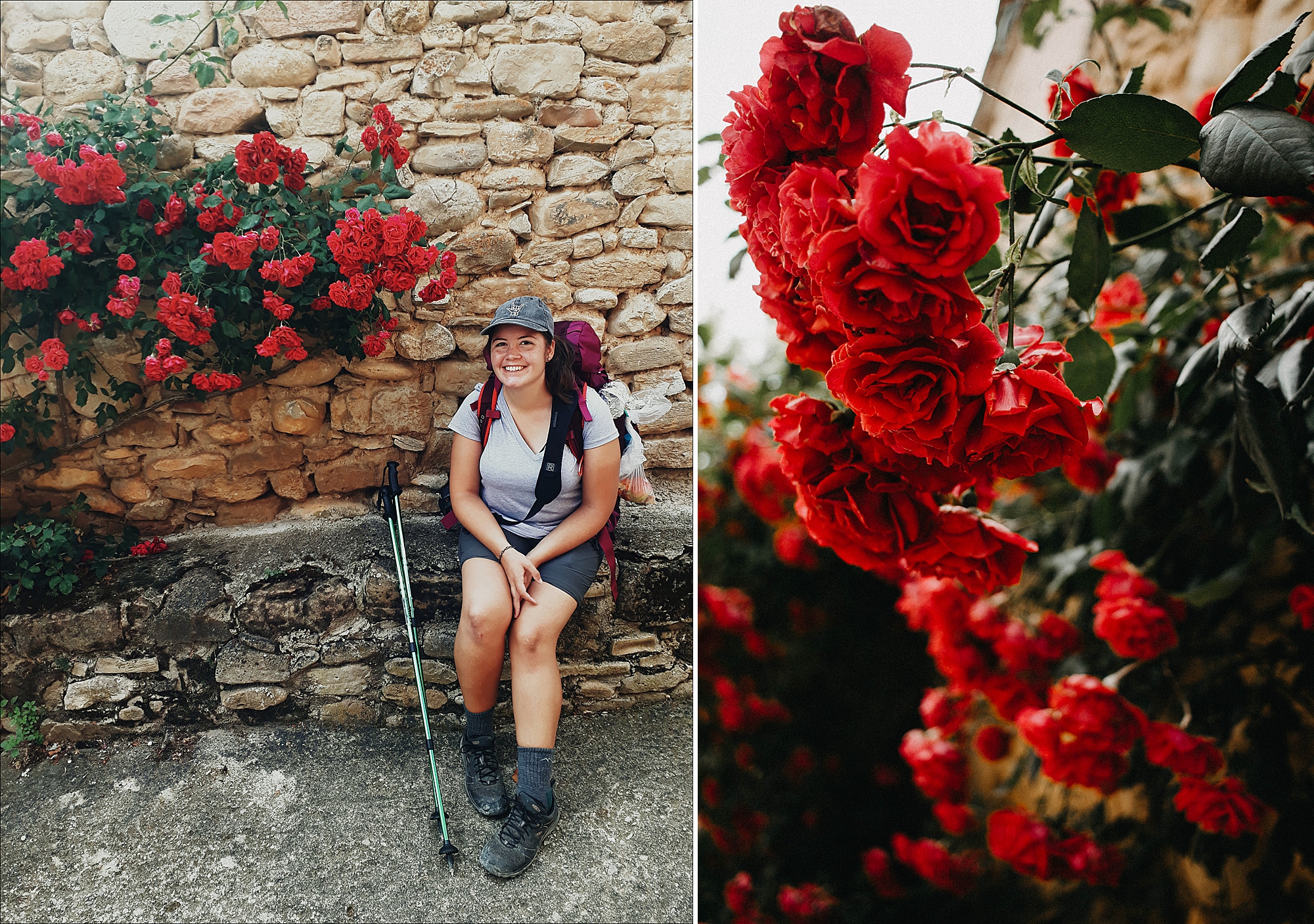
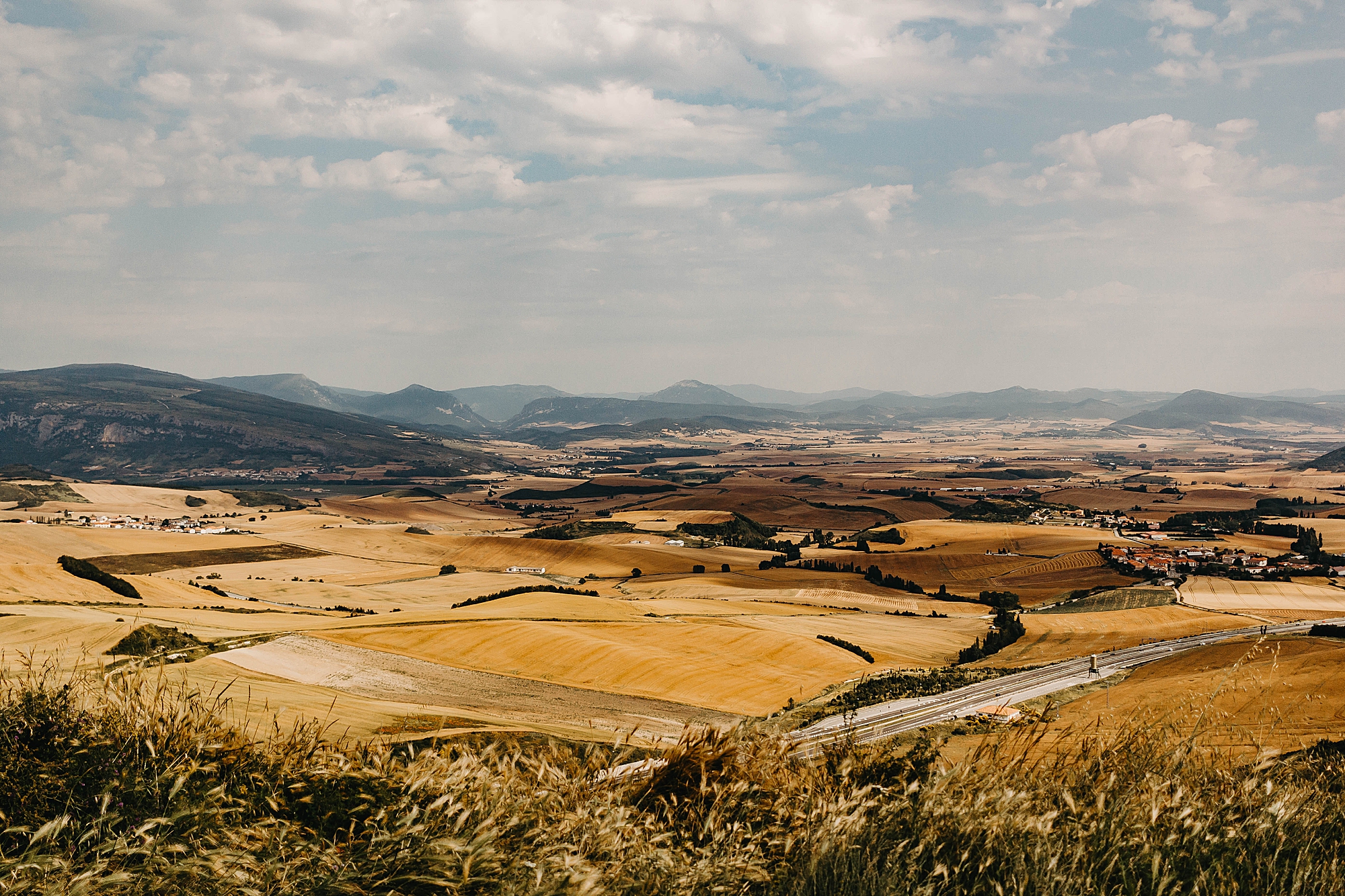

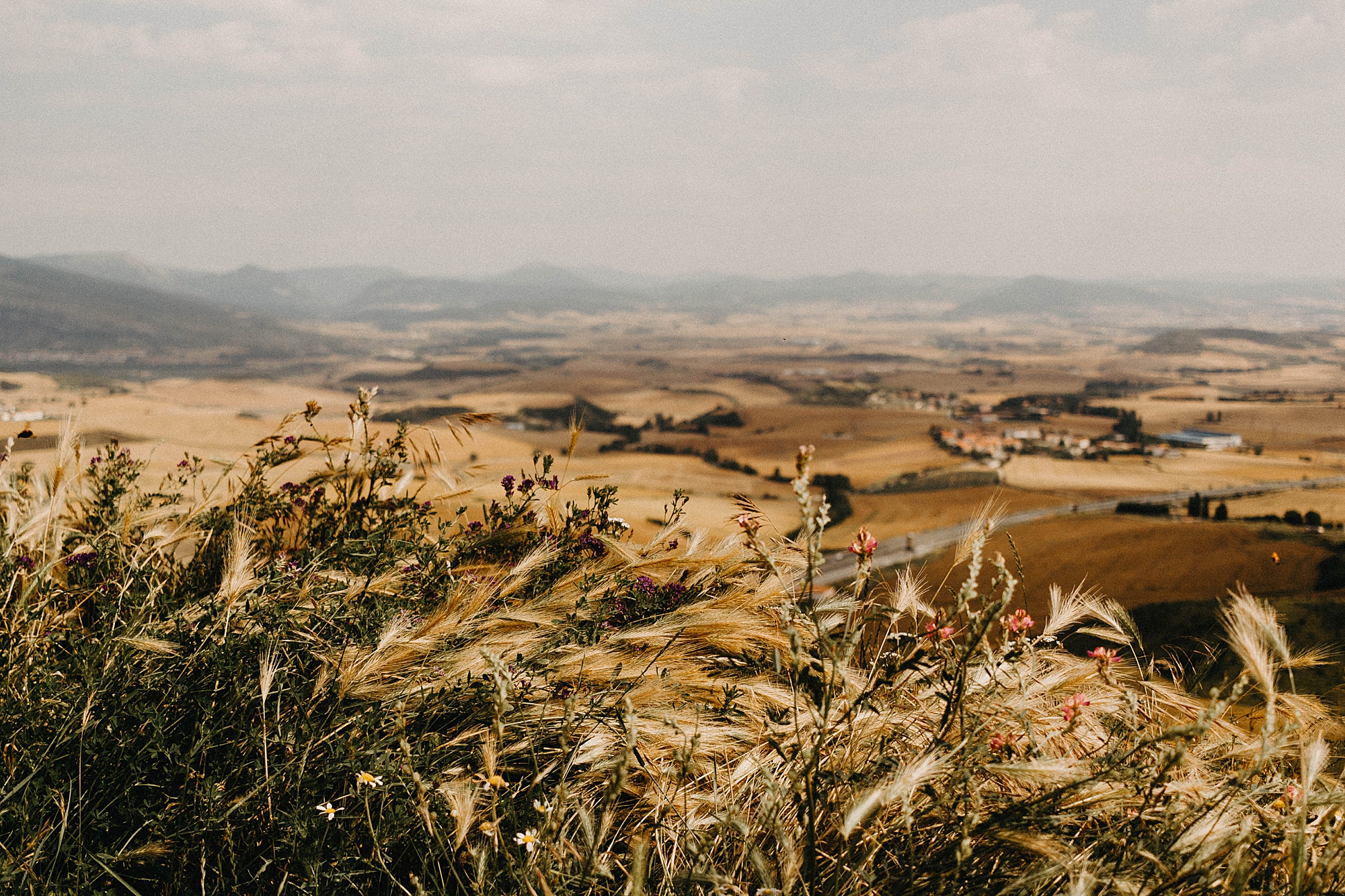
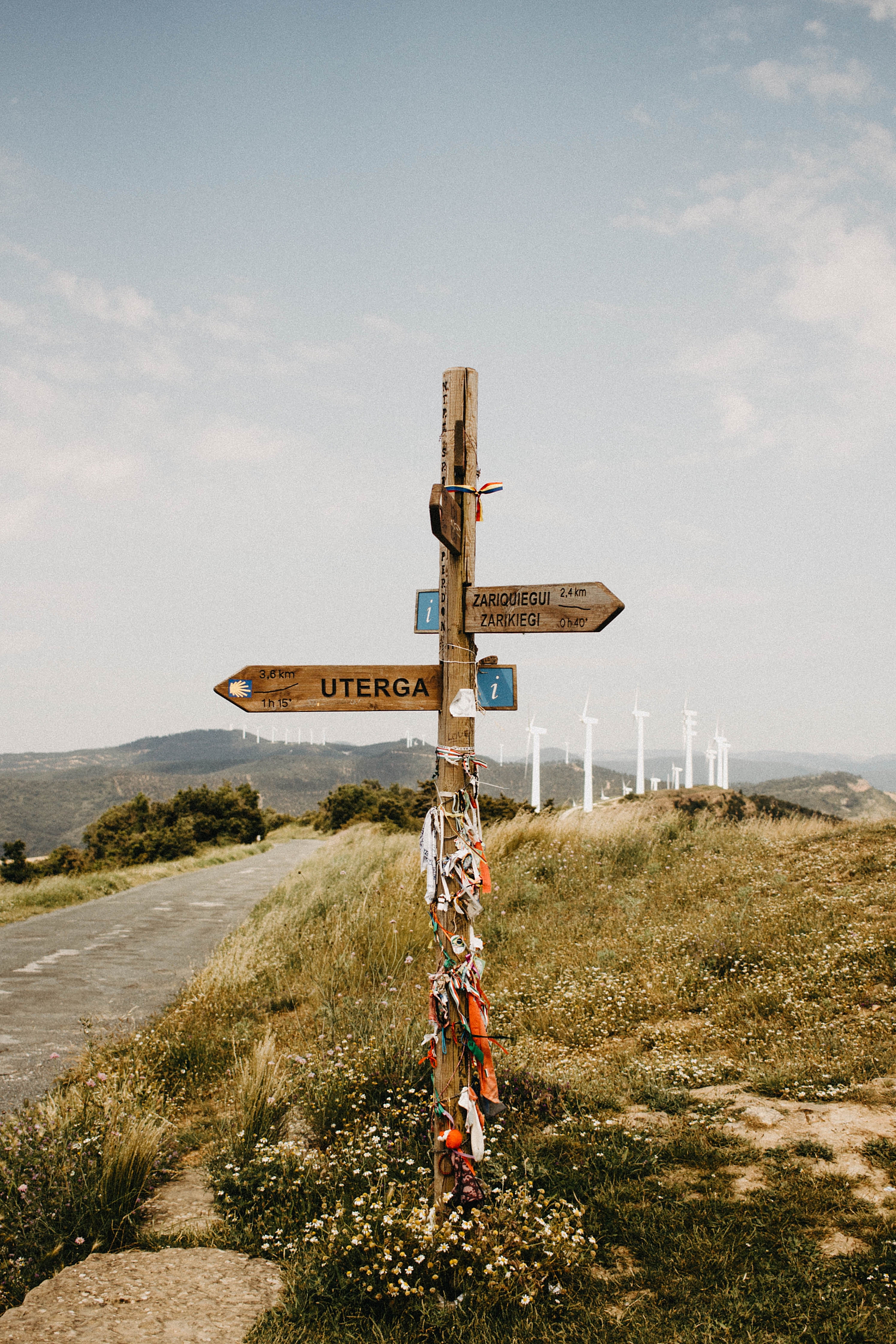 It was a super steep climb up to “Alto de Perdón” but the views were incredible. Apparently, this spot used to hold a basilica and a pilgrim albergue hundreds of years ago, but today it is simply a long row of windmills and this pilgrim statue.
It was a super steep climb up to “Alto de Perdón” but the views were incredible. Apparently, this spot used to hold a basilica and a pilgrim albergue hundreds of years ago, but today it is simply a long row of windmills and this pilgrim statue.

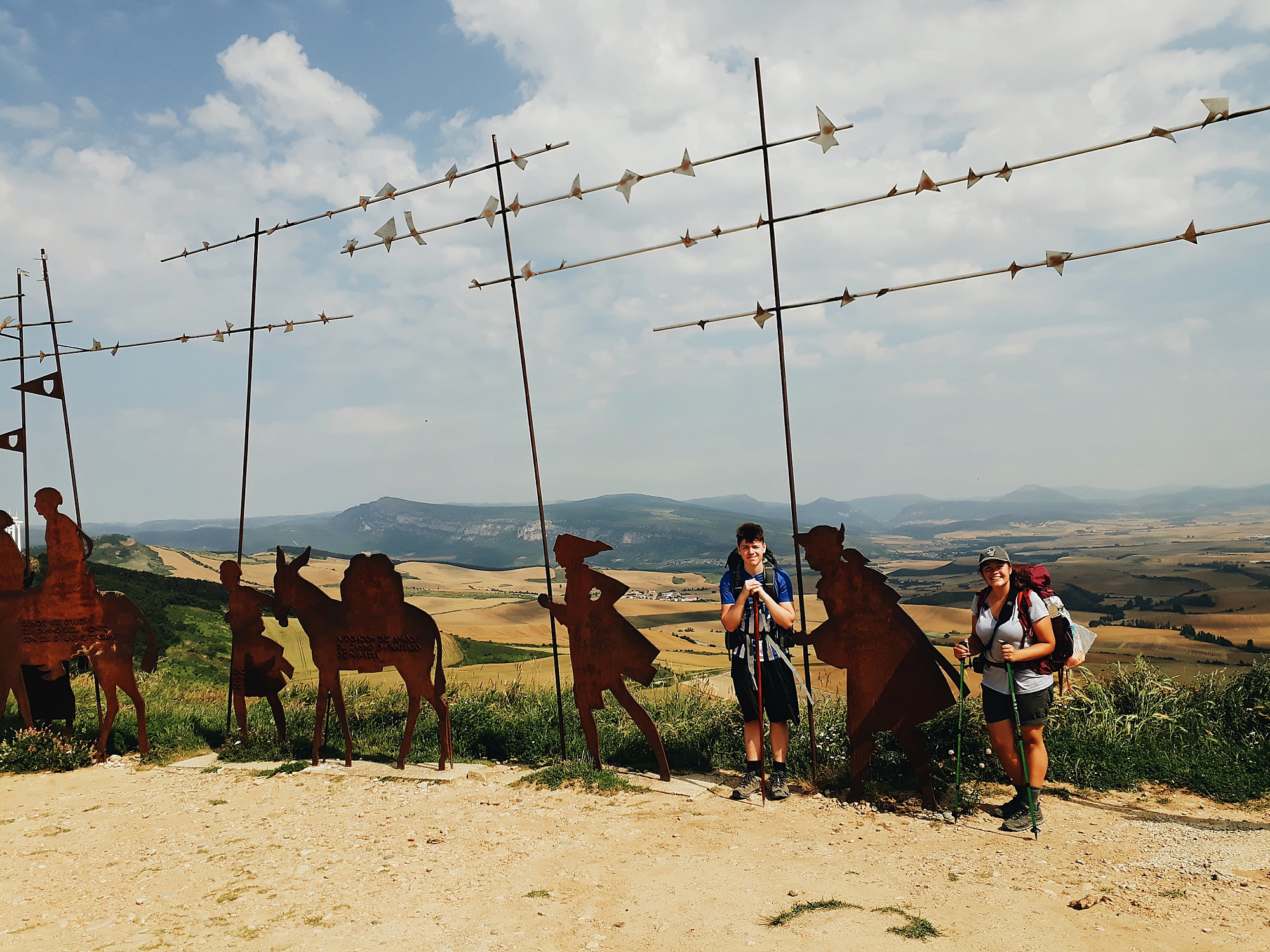
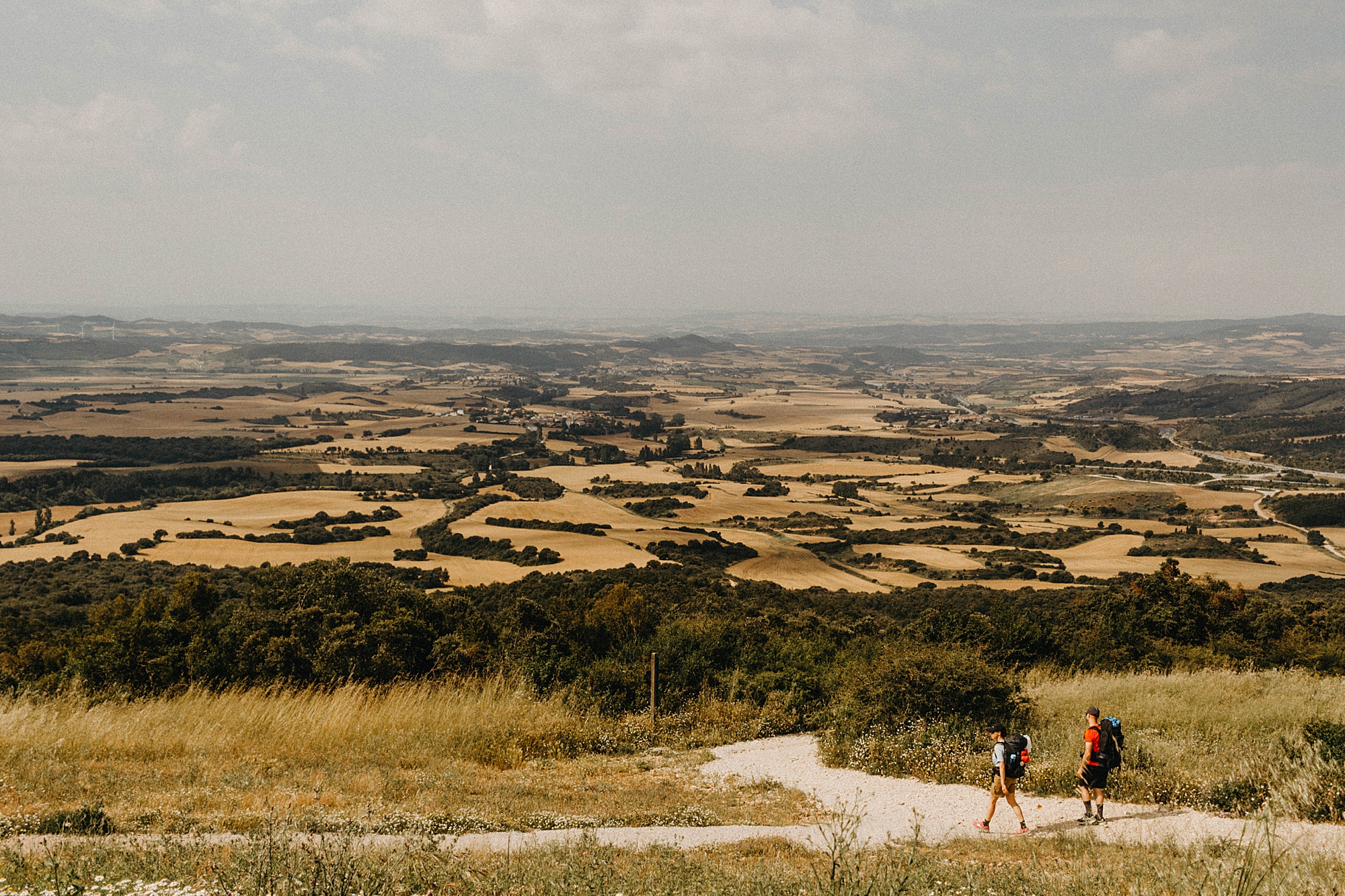
We stopped for a solid half an hour at the top and ate our lunch and took a break from the weight of our backpacks.
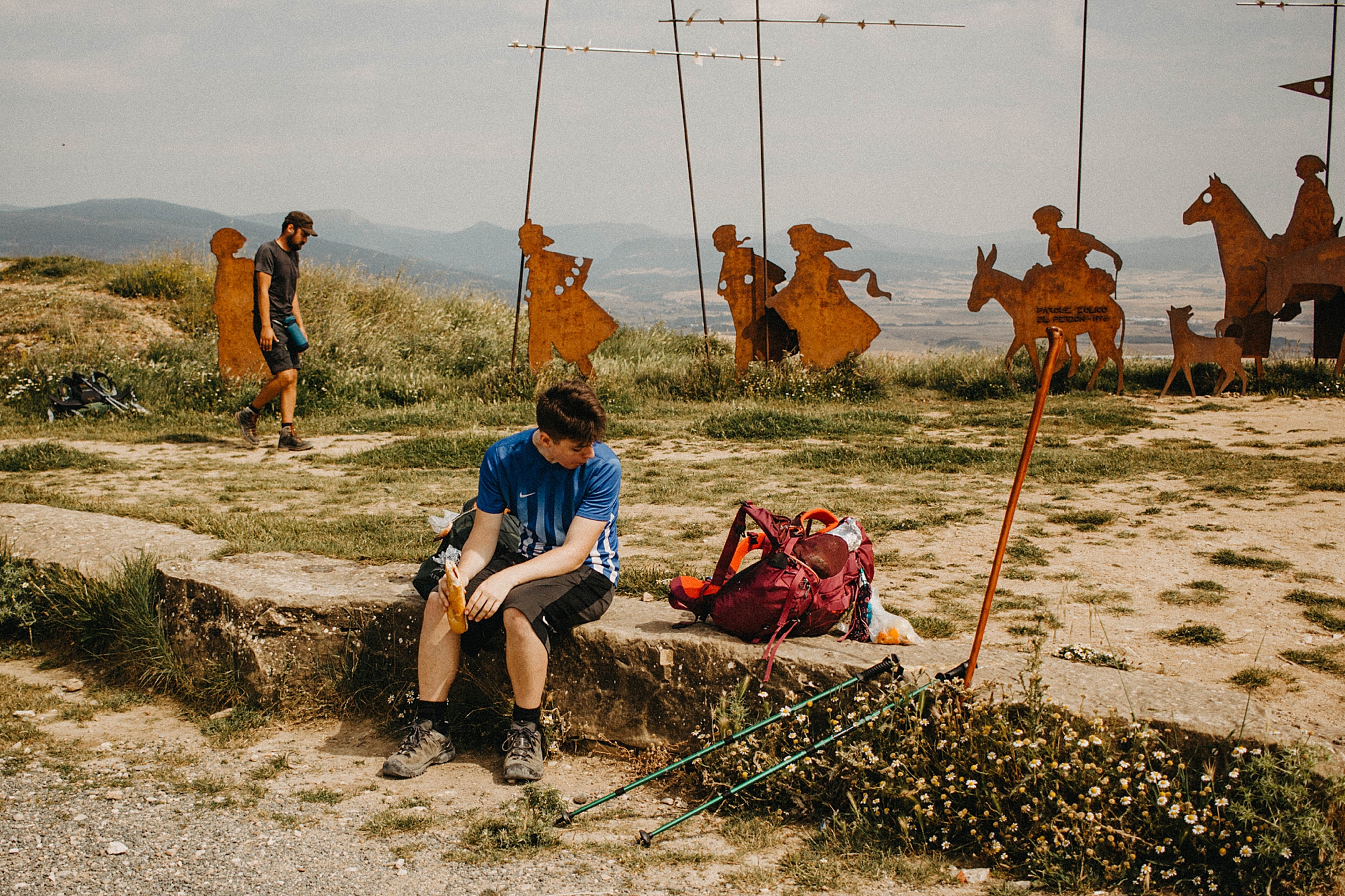
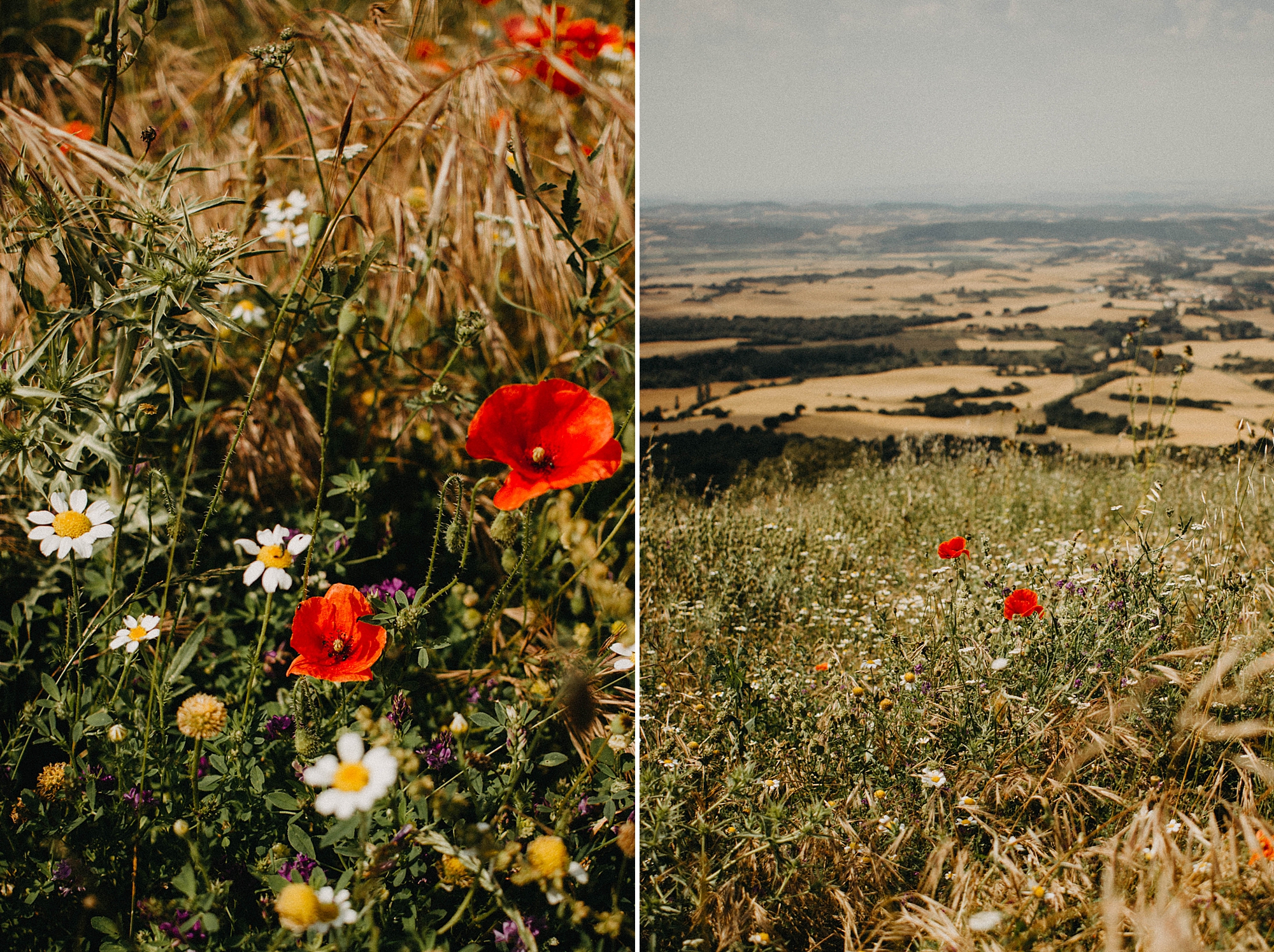
The remaining portion of the day entailed walking through several little towns nestled between endless hills of wheat. Can you spot the yellow arrow on the house below that tells us which way to go?? (It’s very hard to see)
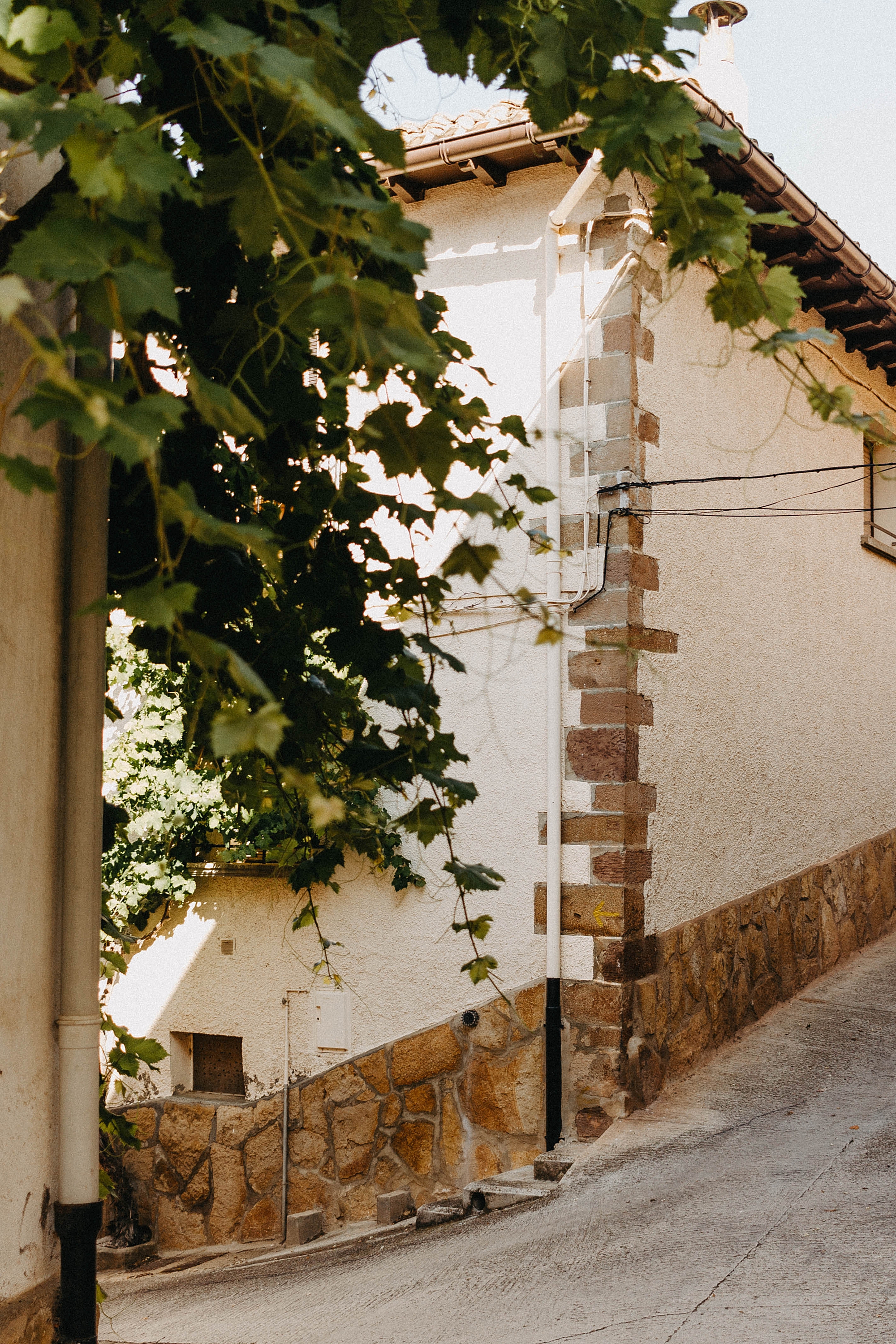
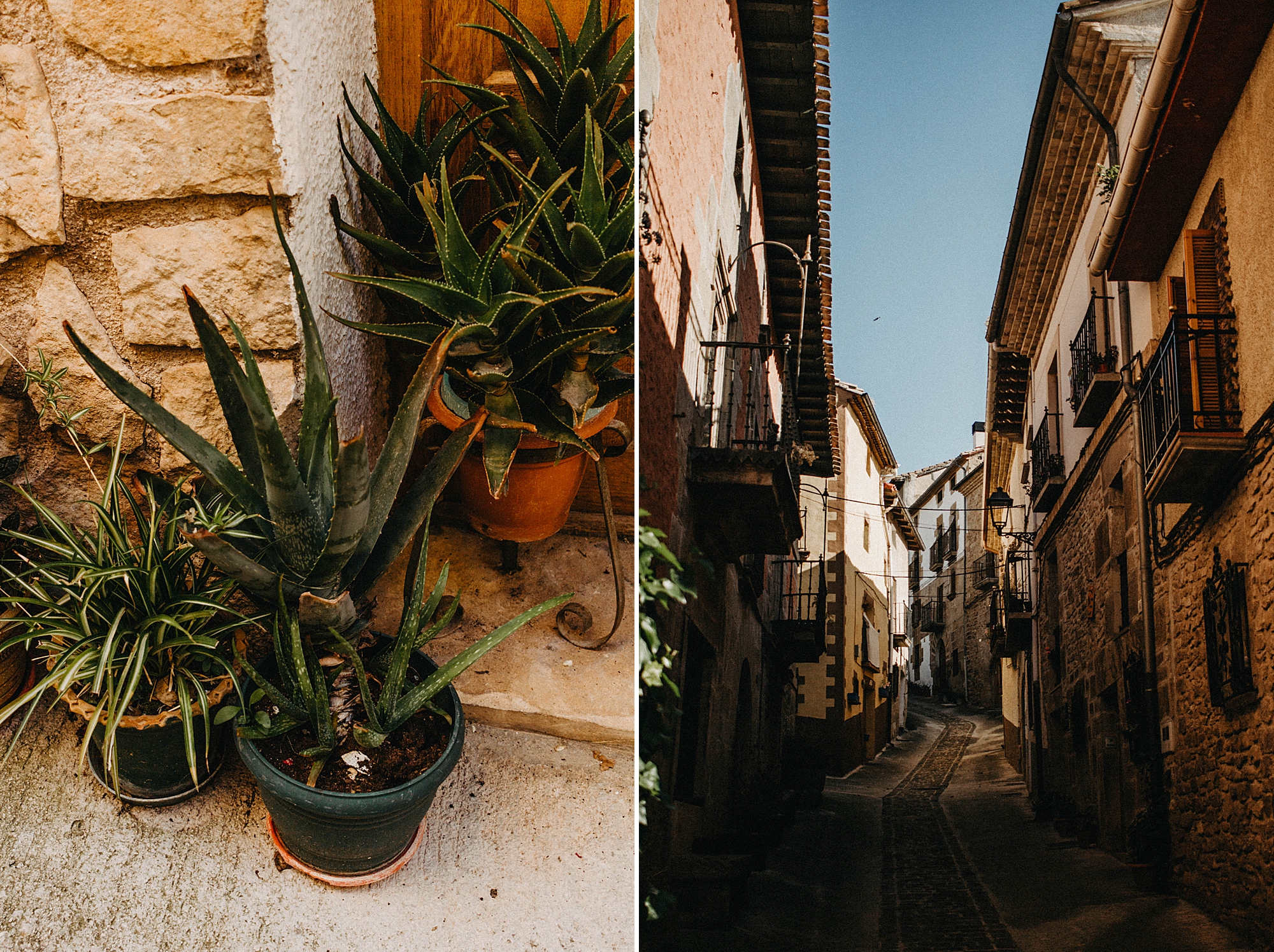
How about this one, where the Camino shell symbol told us that our path was to go straight through the middle arch. (Seriously sometimes it felt like we on a giant scavenger hunt and only knew the clue that was right in front of us).
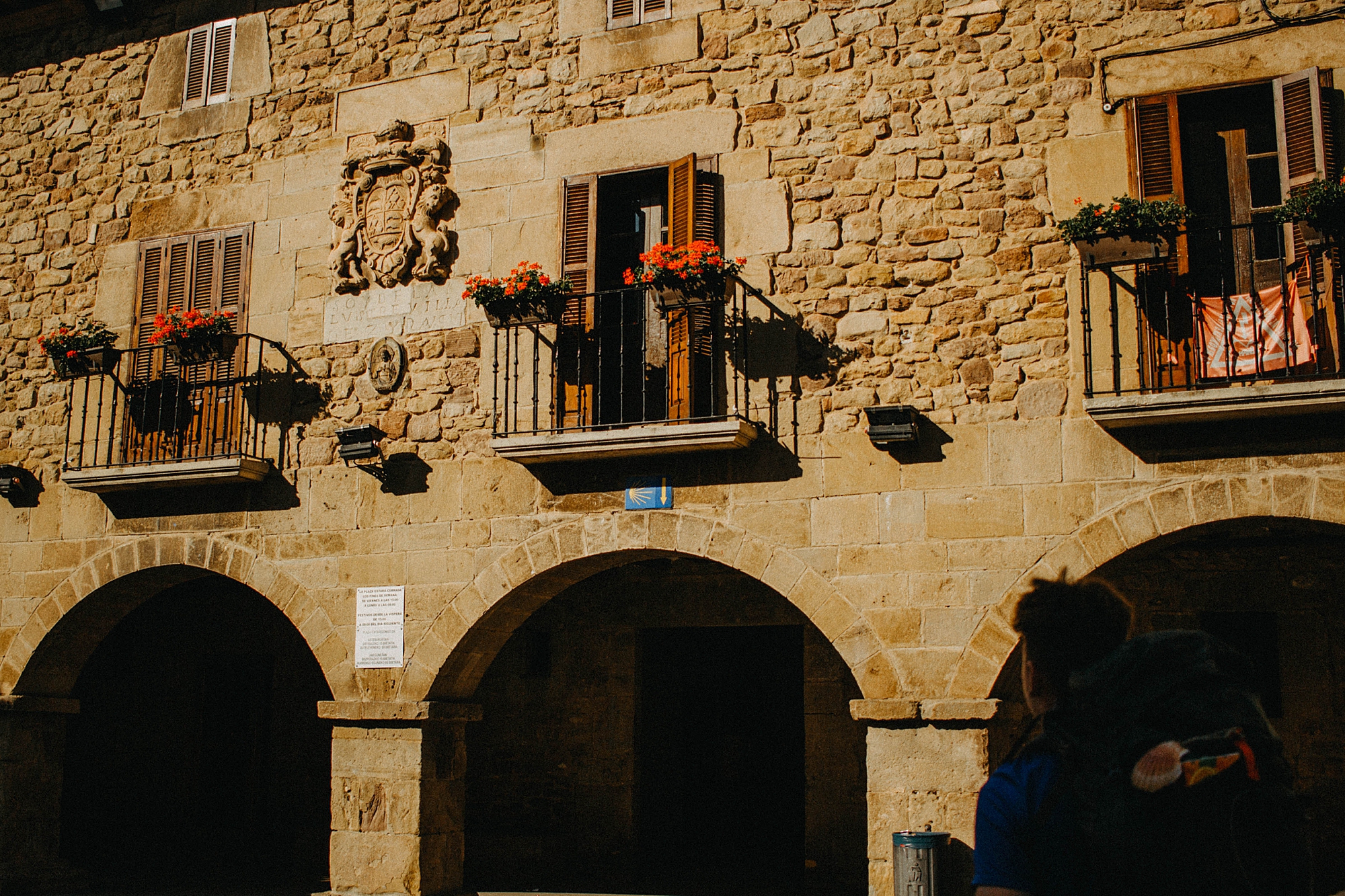
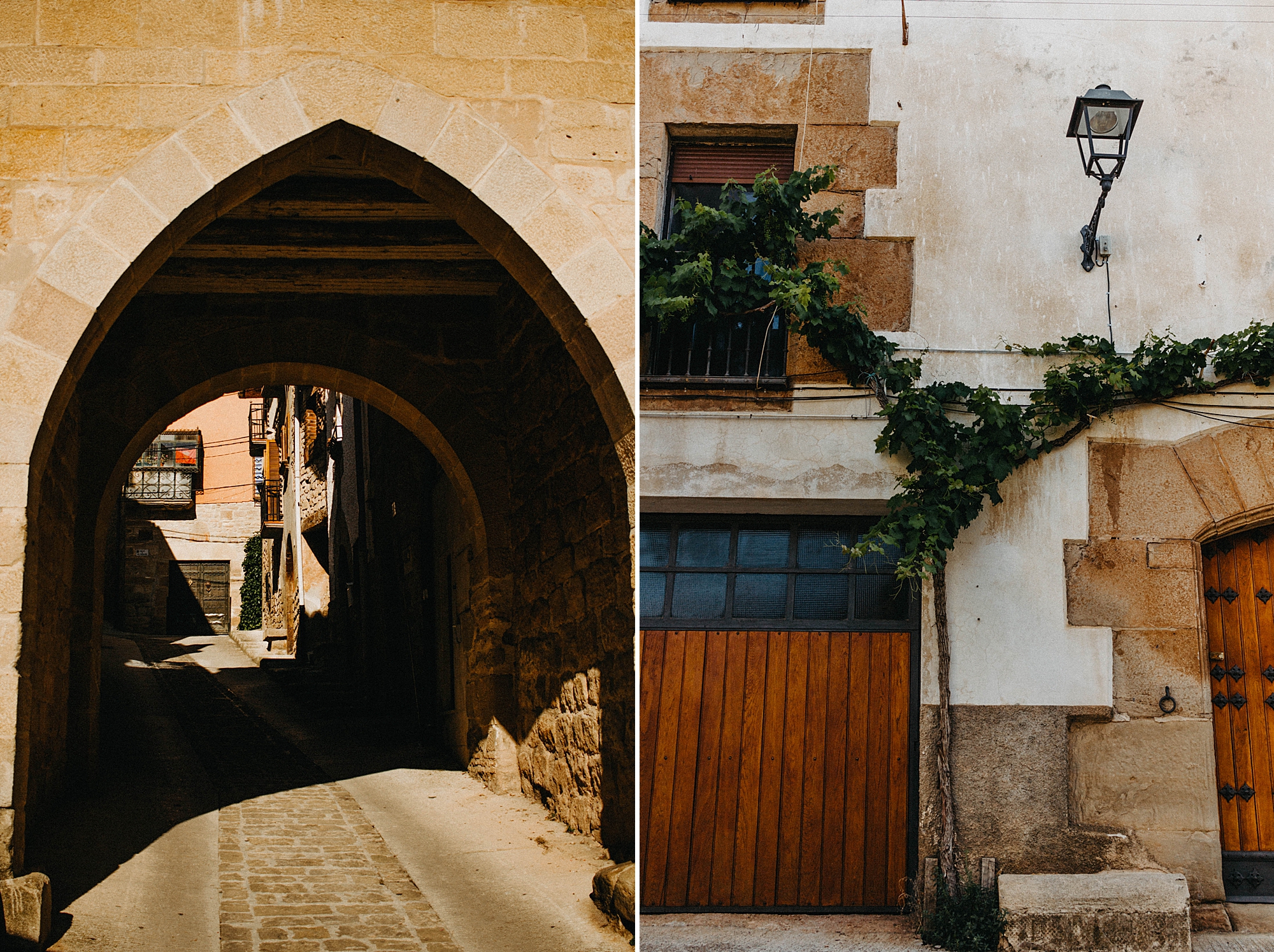
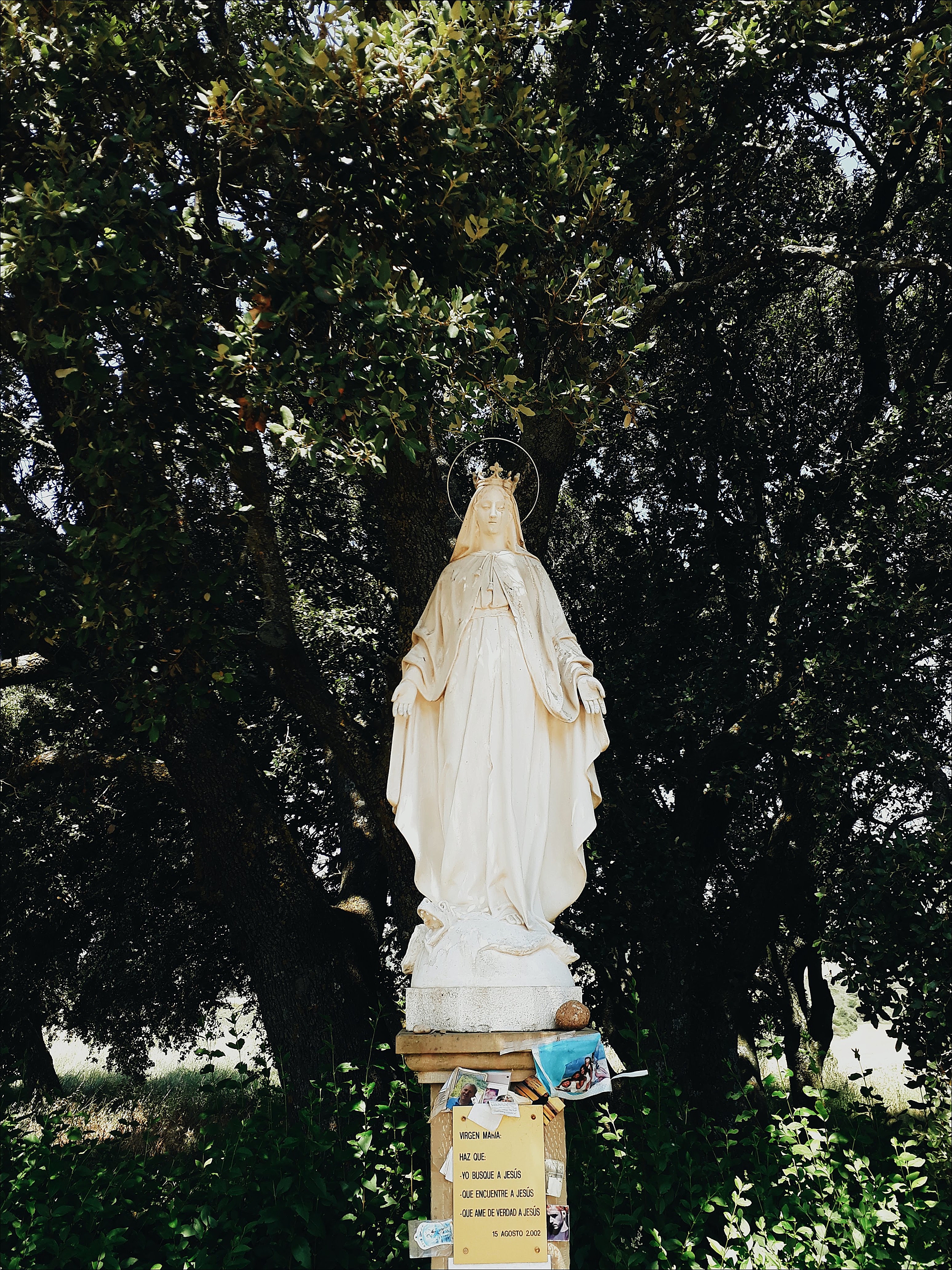 One of the most priceless features of the guidebook turned out to be the fact that it told us how far each town was from each other. It was literally our only way of judging how much further we had to go each day, or how much further we had until we would reach a bathroom/water fountain/cafe/etc. There was very little shade on this day’s hike so we took a break under the covered archway of a church in the second to the last town of the day. Our guidebook told us we had only 2.3 kilometers to go (approx half an hour or so) but we were so hot and exhausted that it was very tempting to just give in and stop early. However, we persevered and made it those last 2.3 km.
One of the most priceless features of the guidebook turned out to be the fact that it told us how far each town was from each other. It was literally our only way of judging how much further we had to go each day, or how much further we had until we would reach a bathroom/water fountain/cafe/etc. There was very little shade on this day’s hike so we took a break under the covered archway of a church in the second to the last town of the day. Our guidebook told us we had only 2.3 kilometers to go (approx half an hour or so) but we were so hot and exhausted that it was very tempting to just give in and stop early. However, we persevered and made it those last 2.3 km.
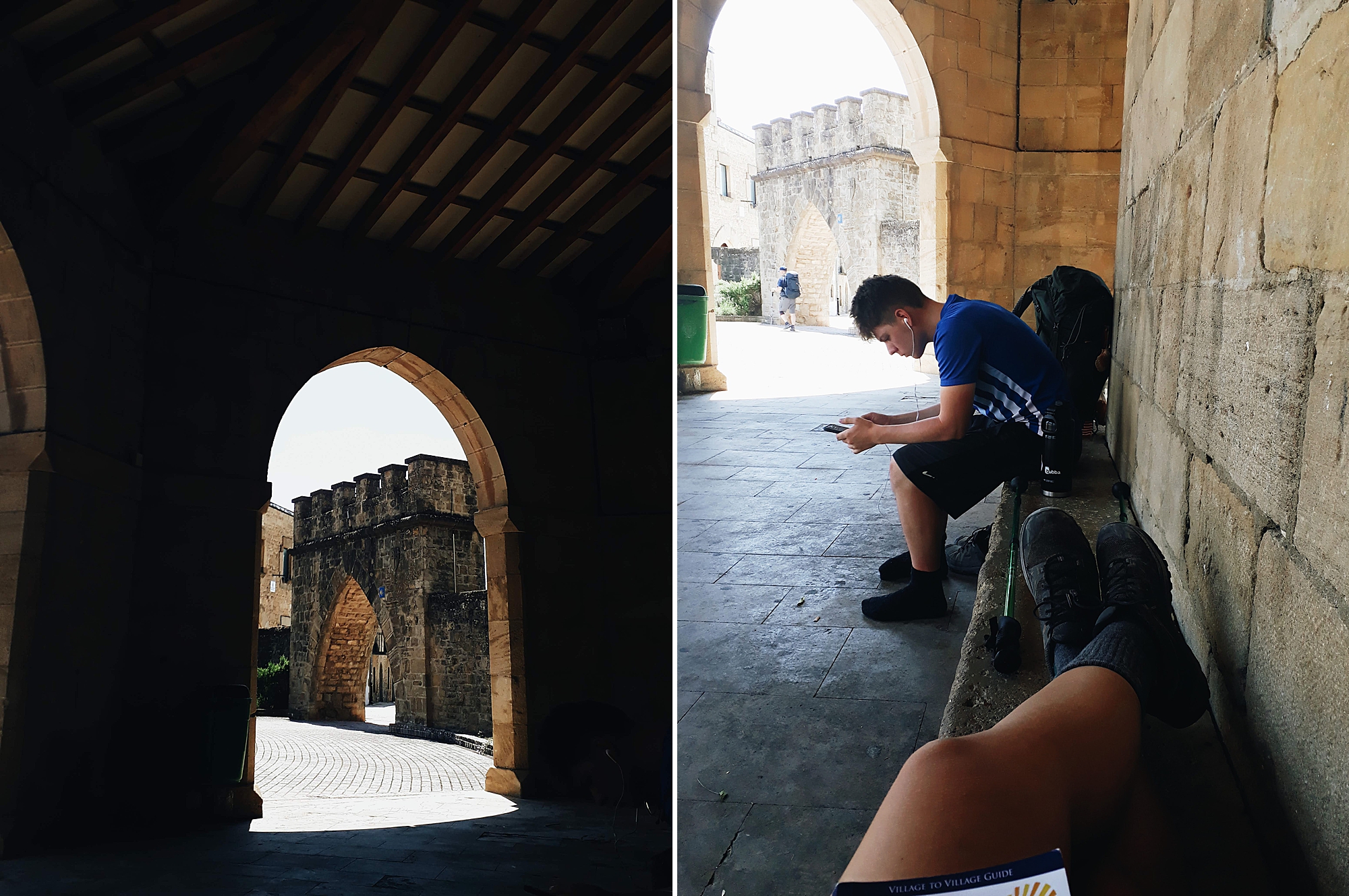
According to my guide book, this bridge was built in the 11th century for the Queen of the time (hence, the name of the town “Puente la Reina – The Queen’s Bridge”).
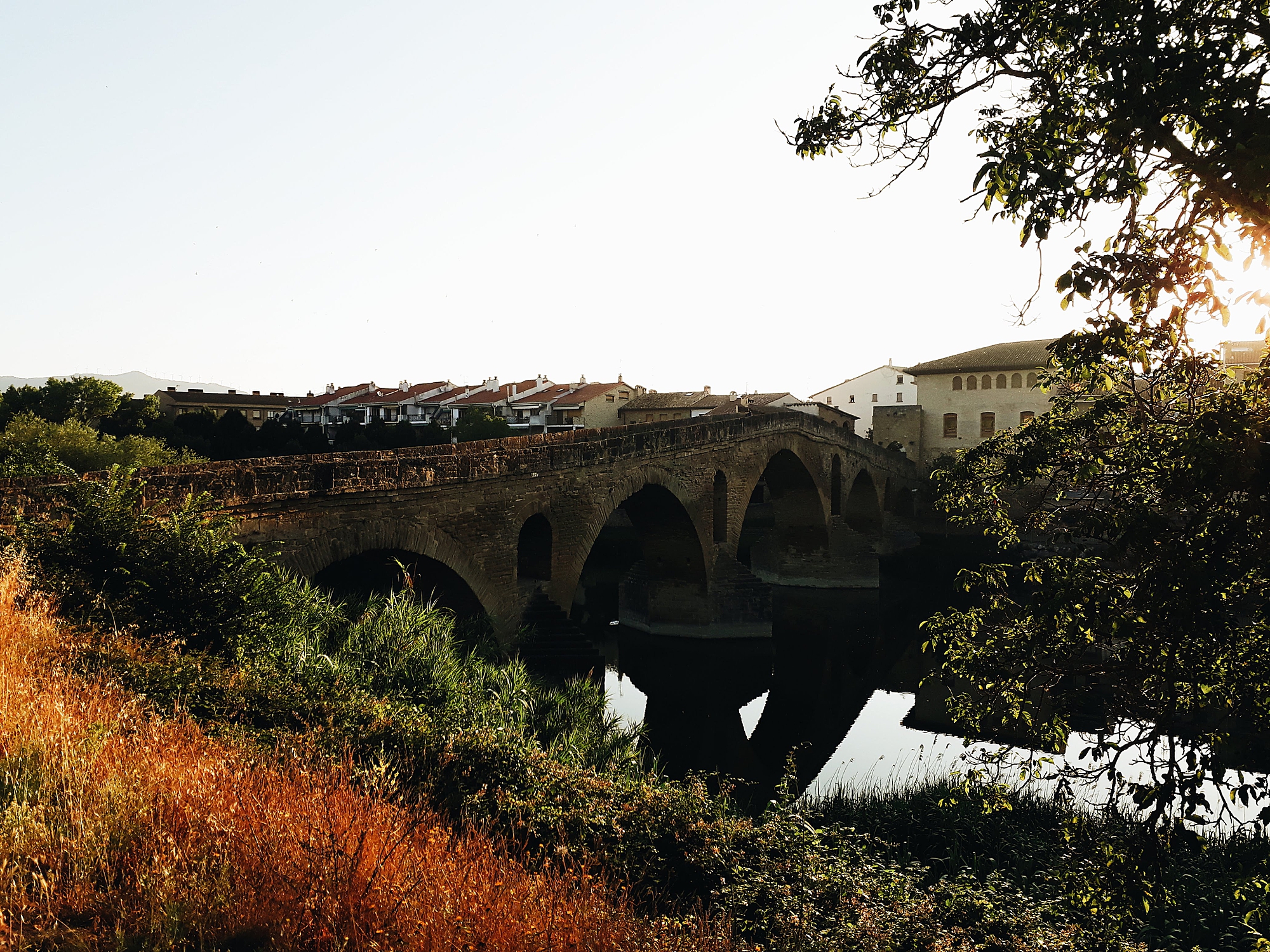
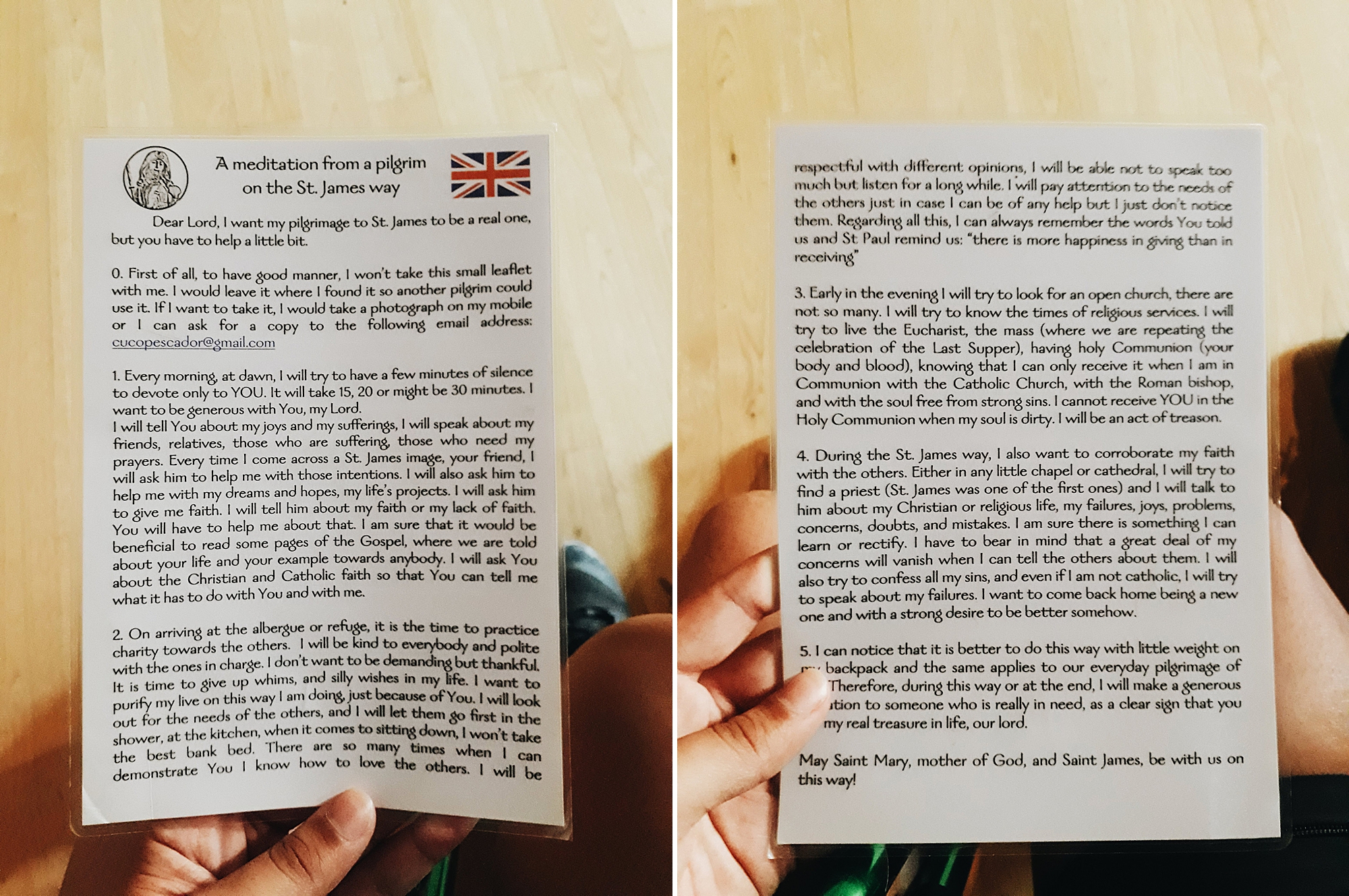
The glamorous view from my bunk in Puente la Reina.
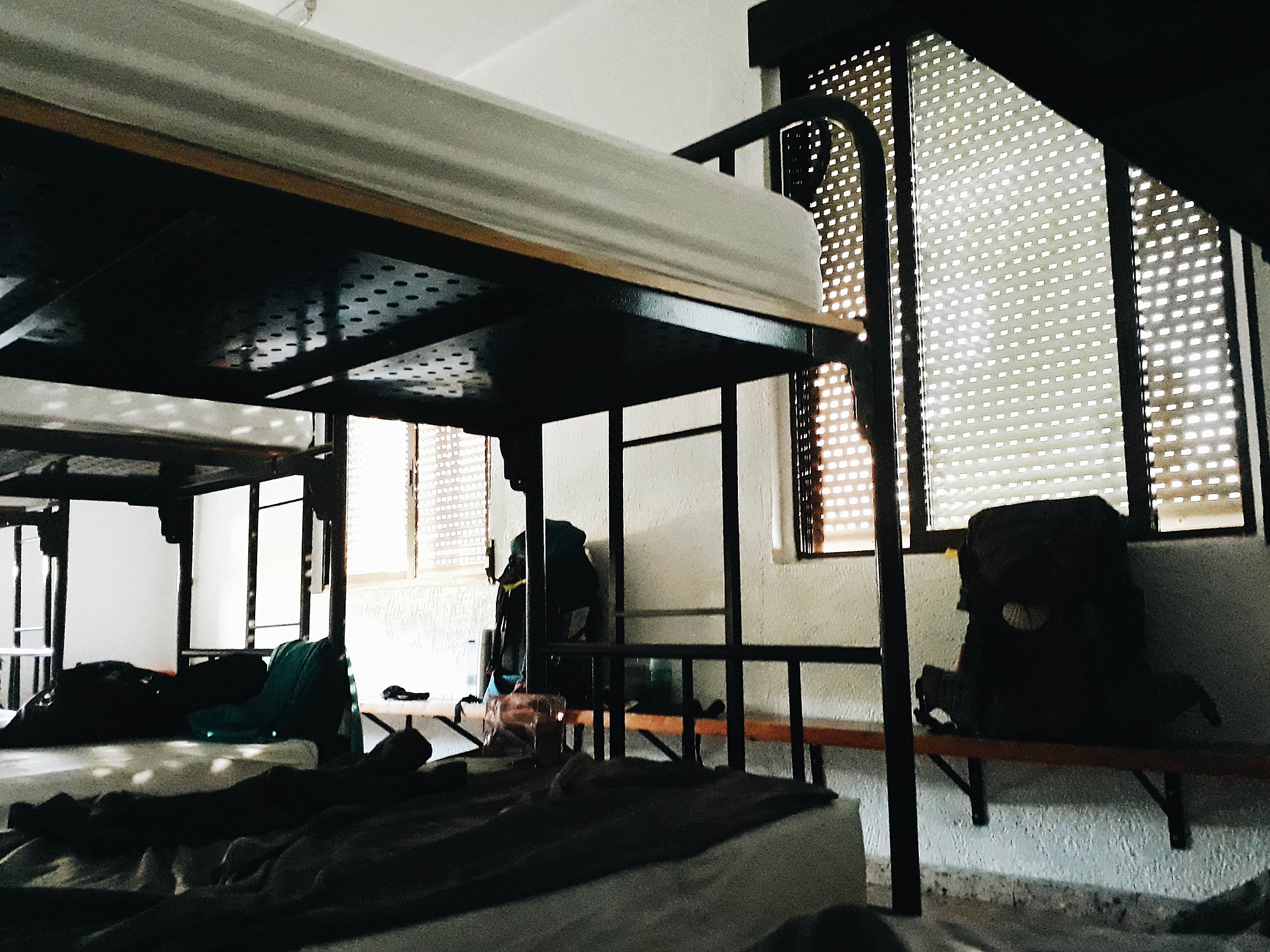
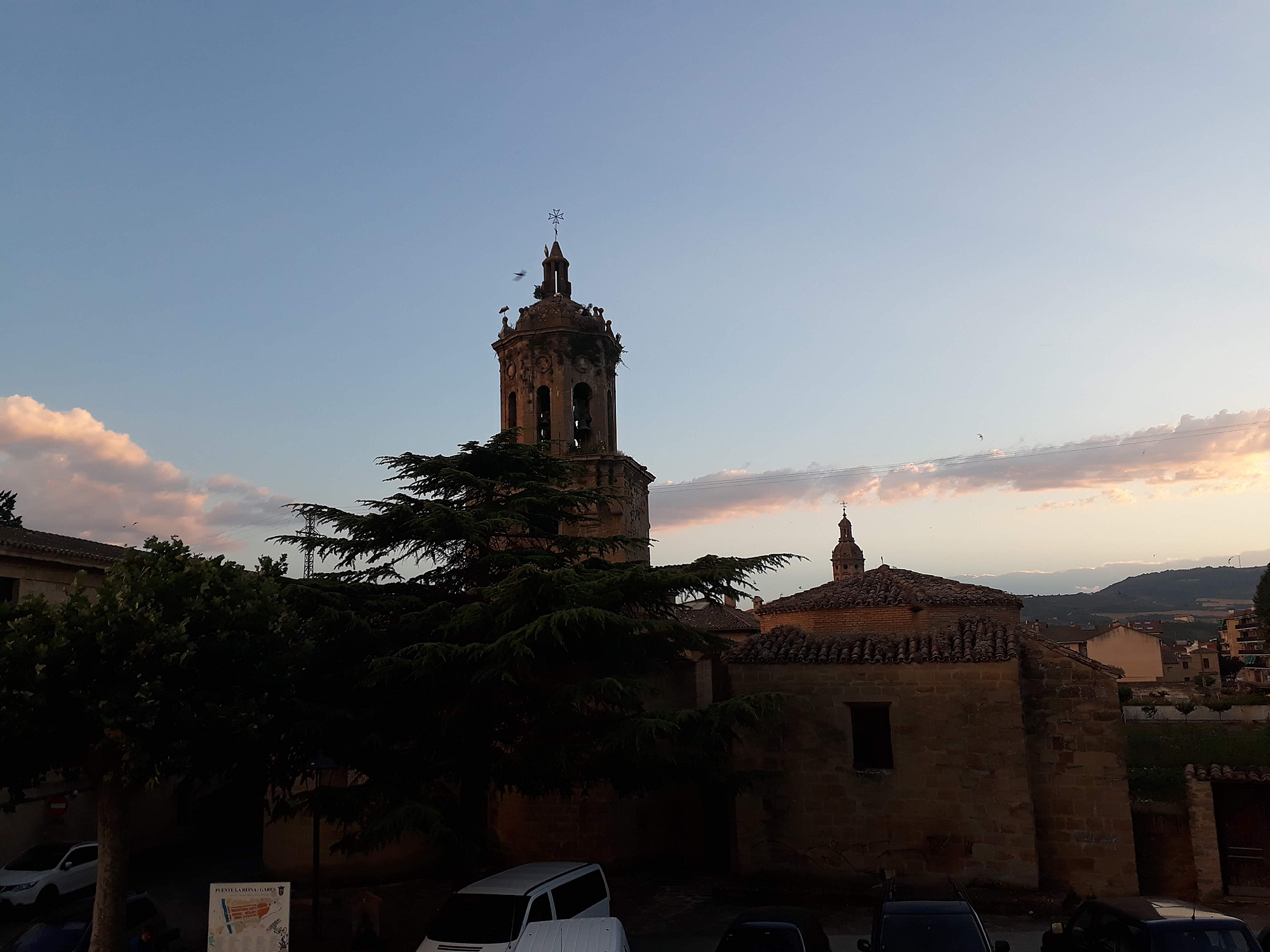
DAY FIVE: Puenta La Reina to Estella || ≈ 21.8 km (13.5 mi)
This is how my guidebook described this day “A stage primarily on dirt paths with gently rolling ups and downs, passing through picturesque medieval towns. Authentic stretches of Roman road and a Roman bridge invite walkers to step back in time. Be prepared for little shade and some road noise from A-12 highway around Lorca. A day of beautiful scenery with fields and vineyards.” (The Village to Village Guide p. 66)
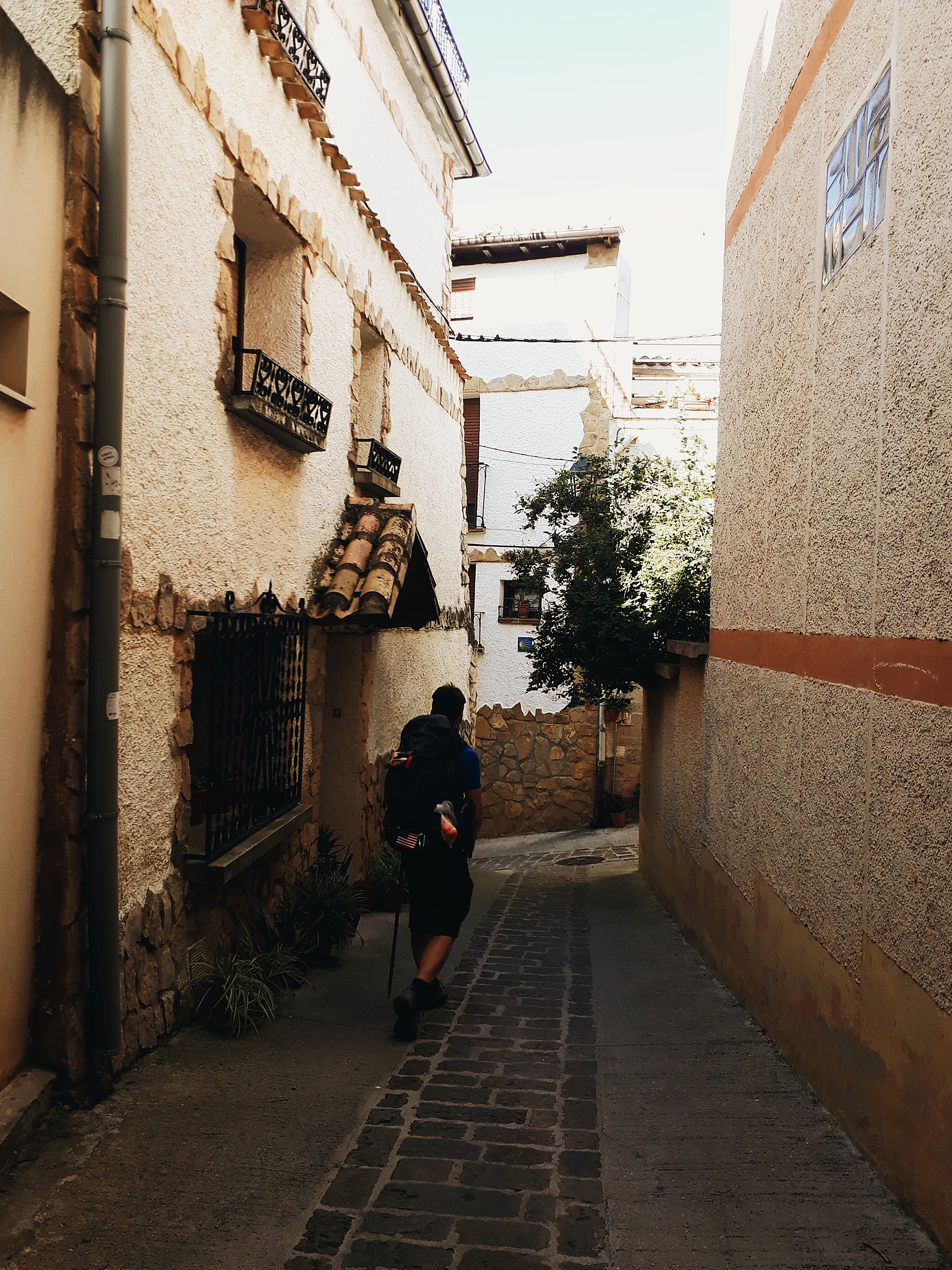
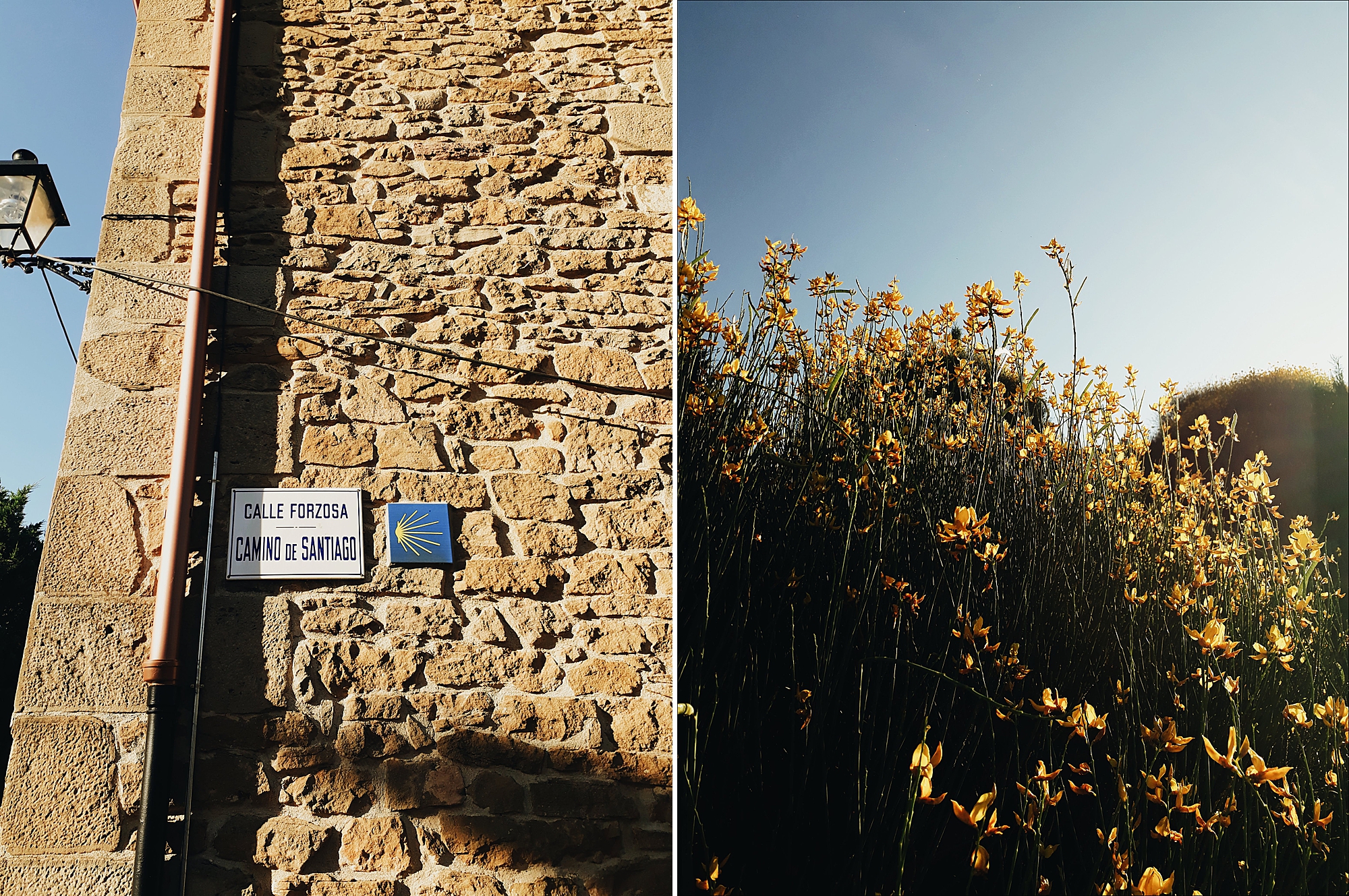
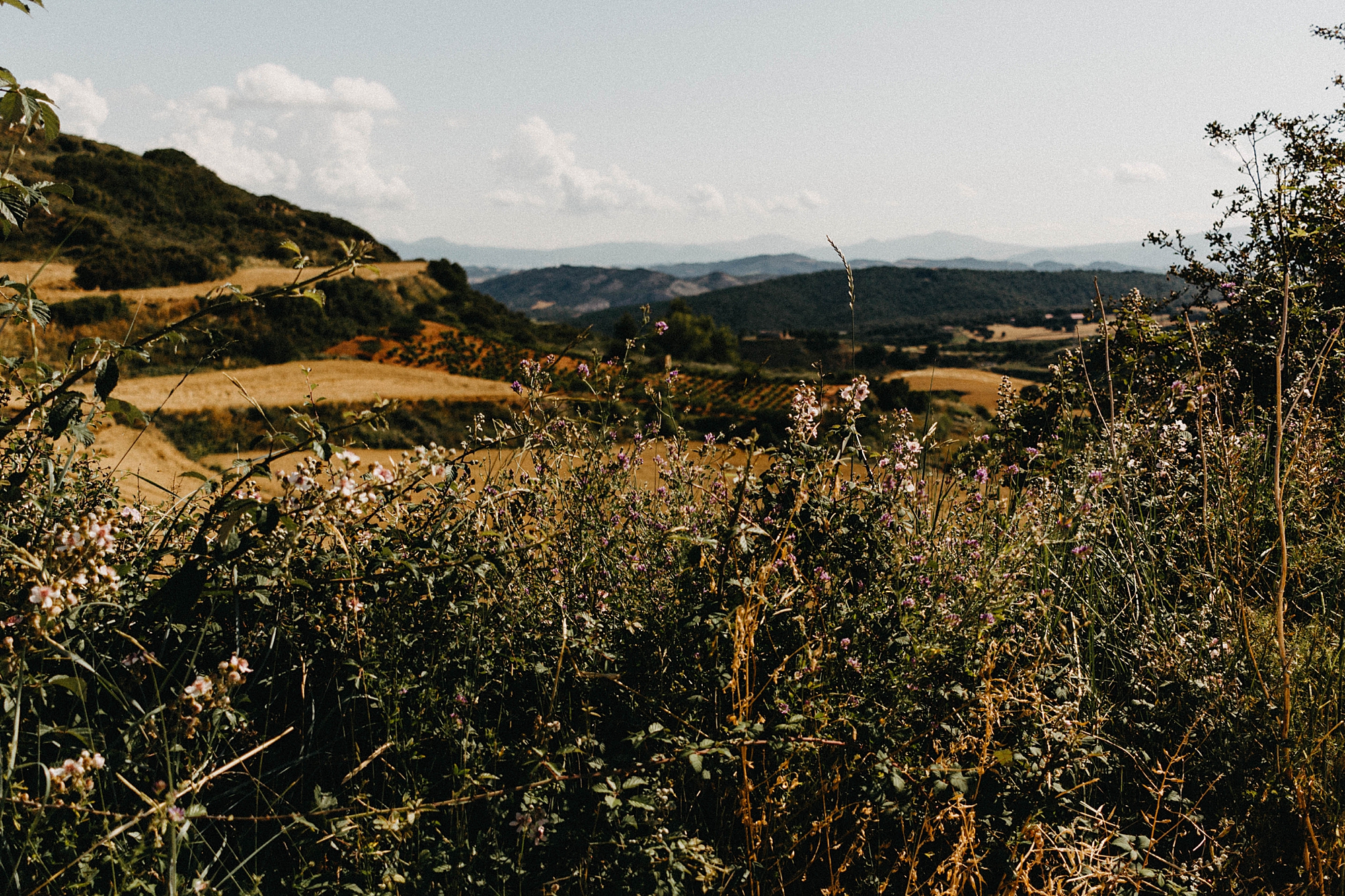
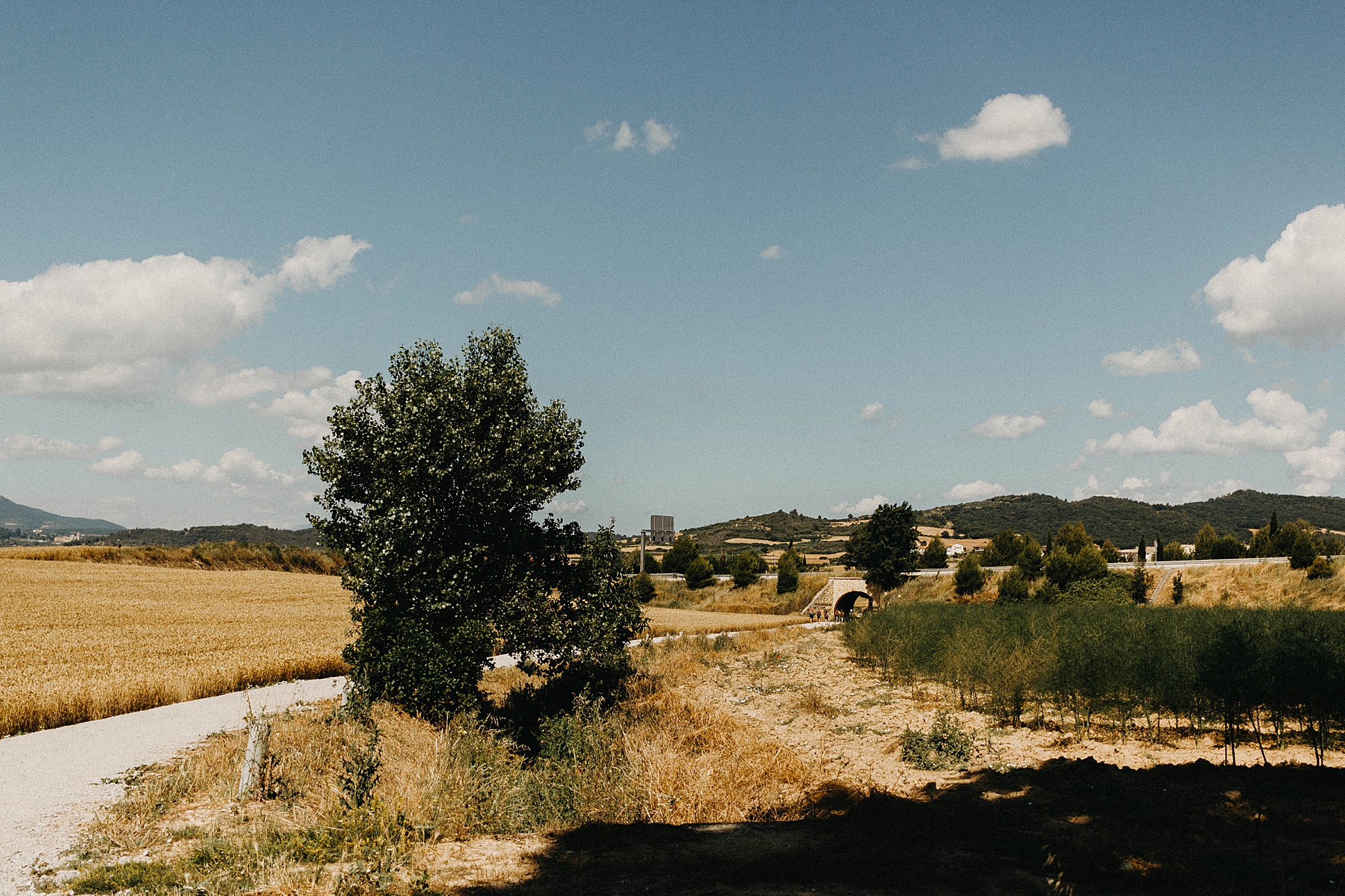
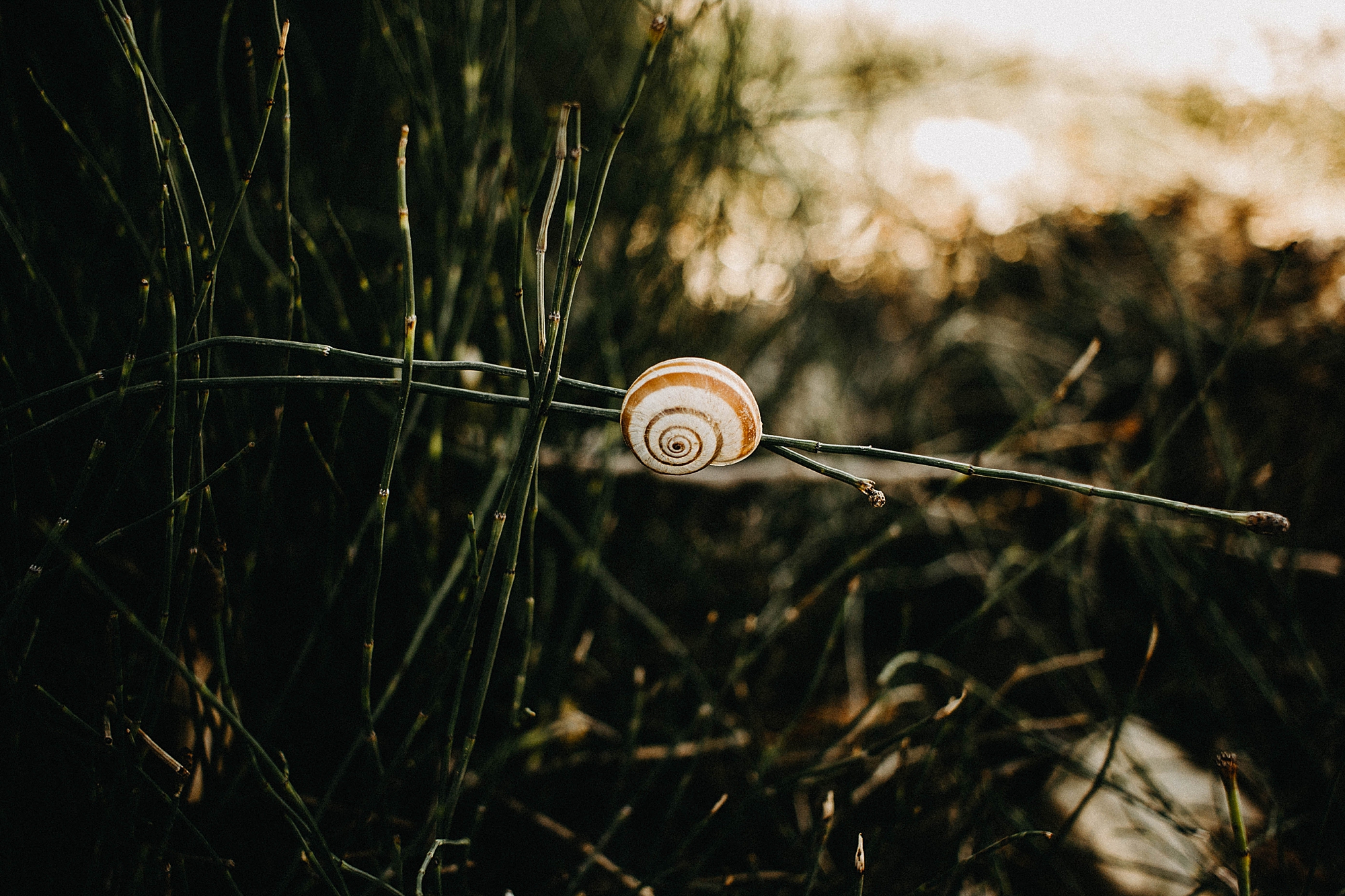
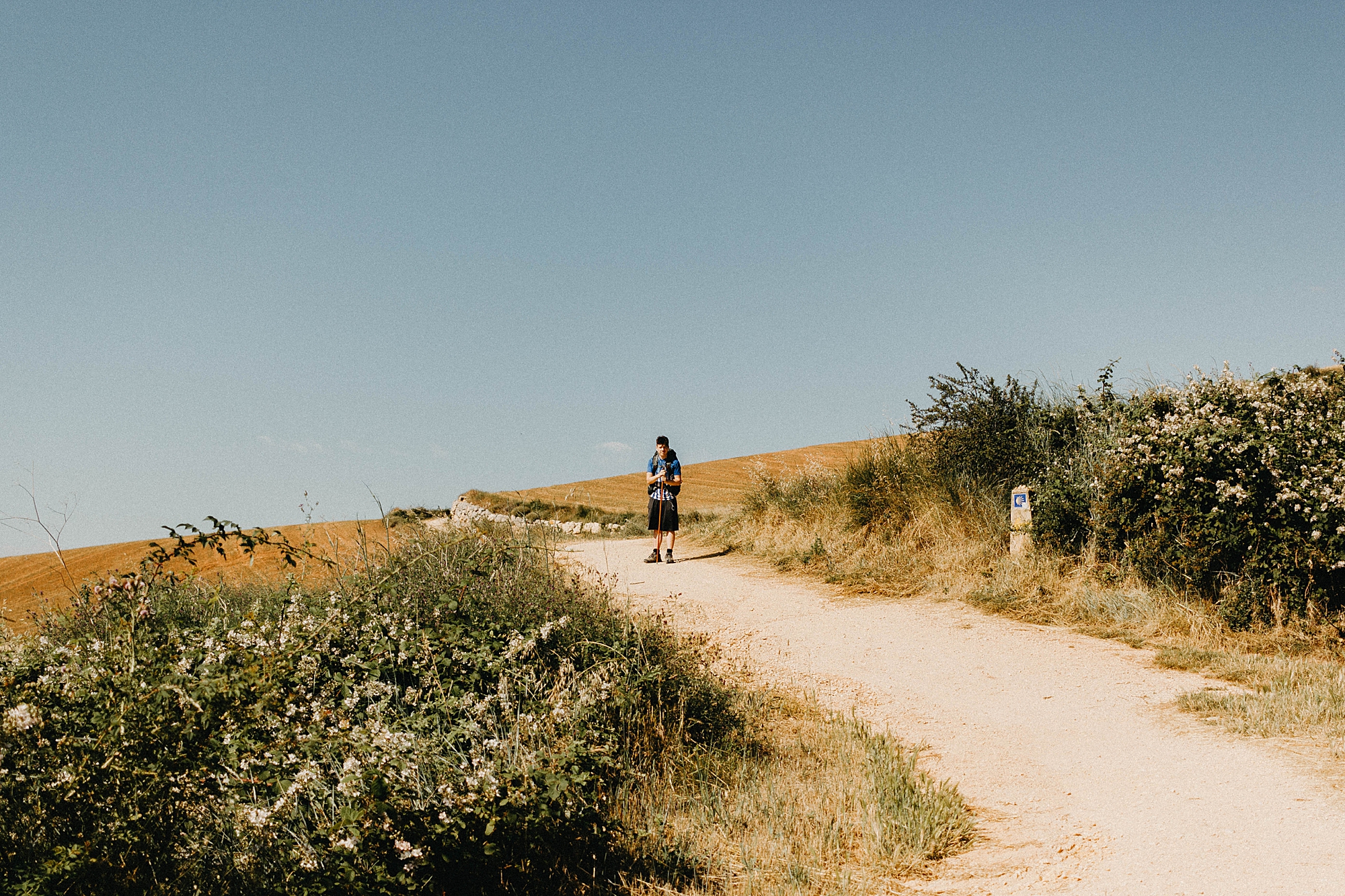
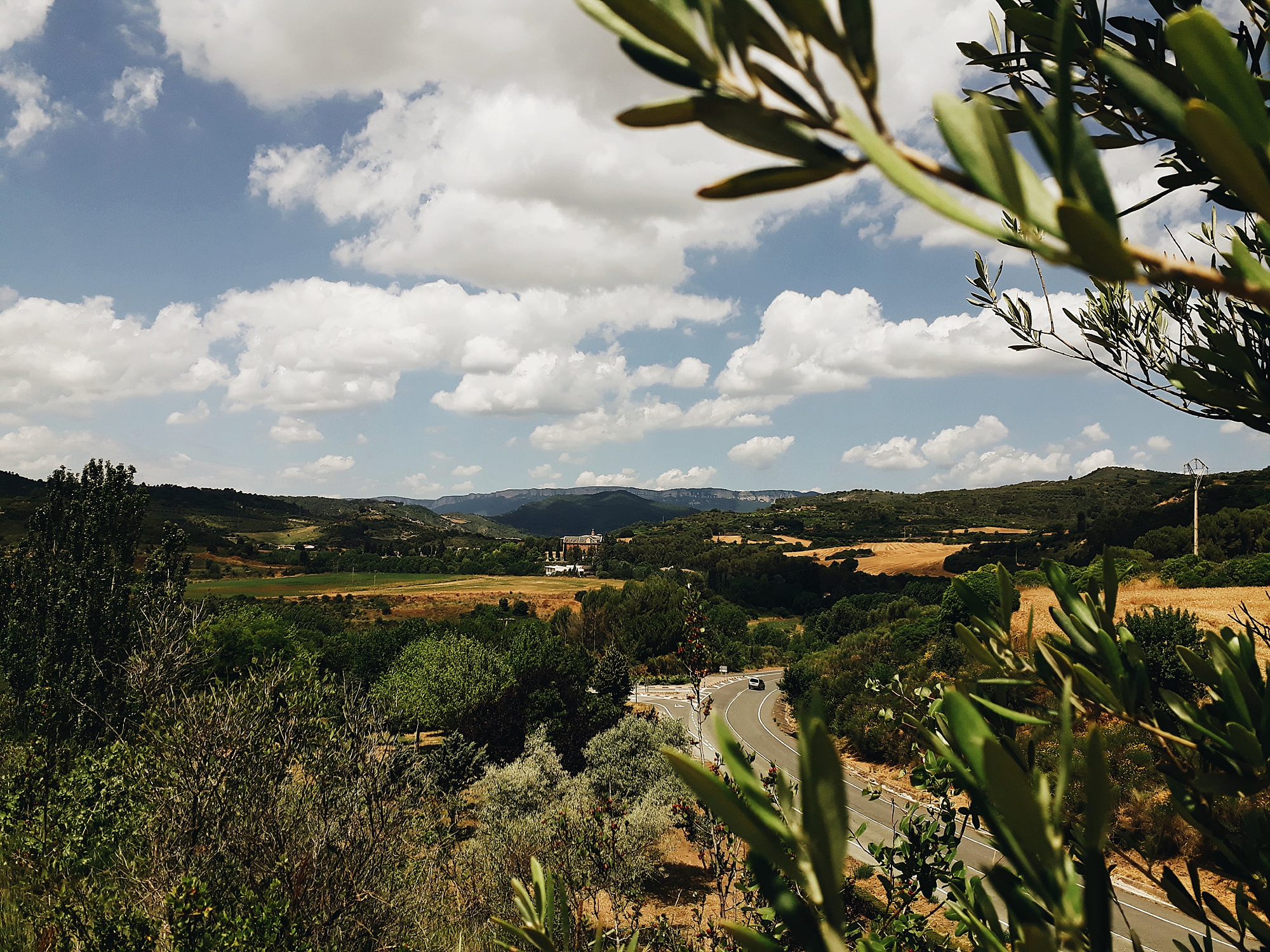
Estella is known for its many beautiful medieval churches. We were able to go to daily Mass in one of them, and I spent a solid hour or two by myself in this one that was across the street from the albergue we were staying in. Occasionally someone would wander in to look around but for the most part, it was just me and Jesus.
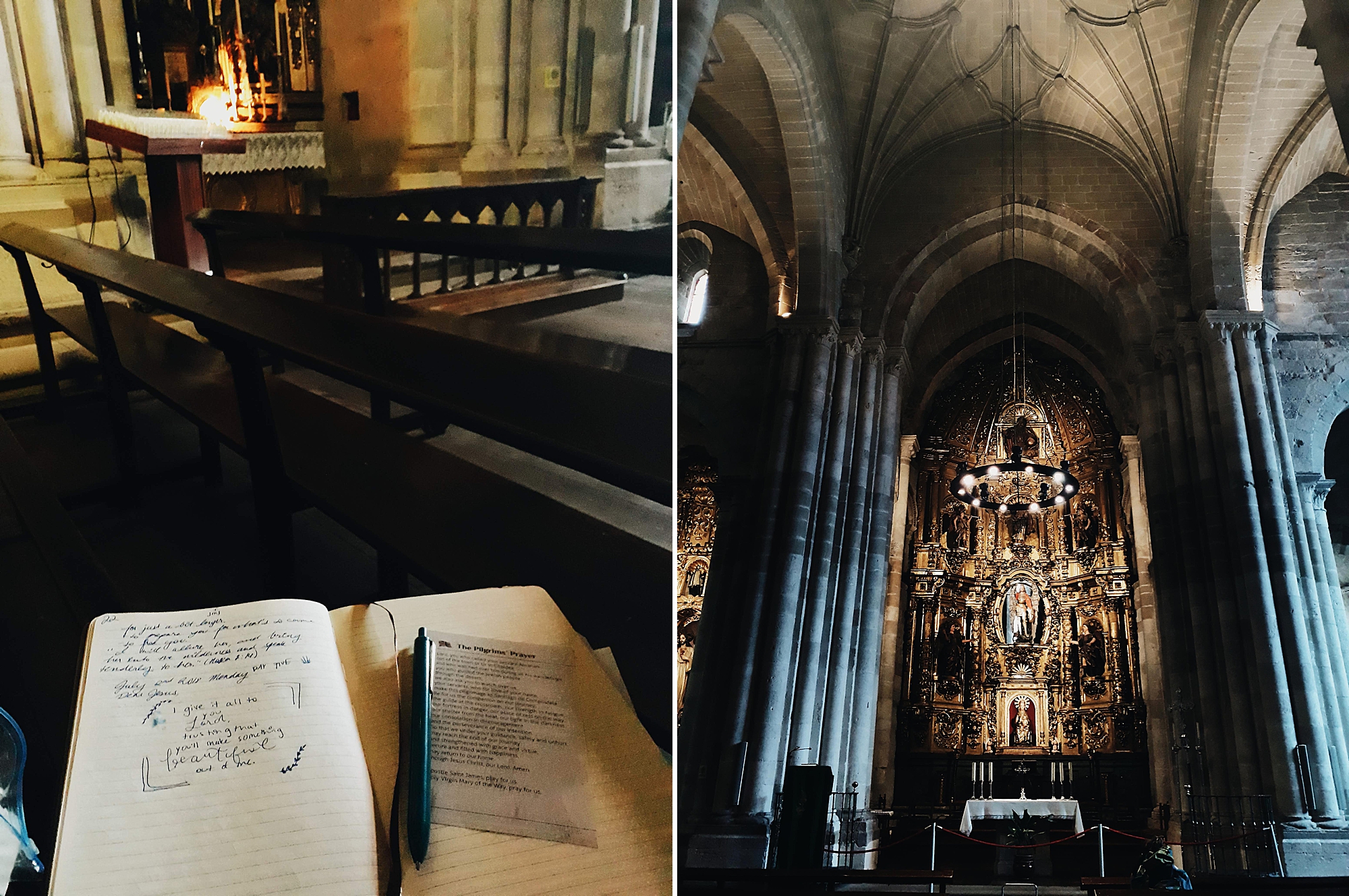
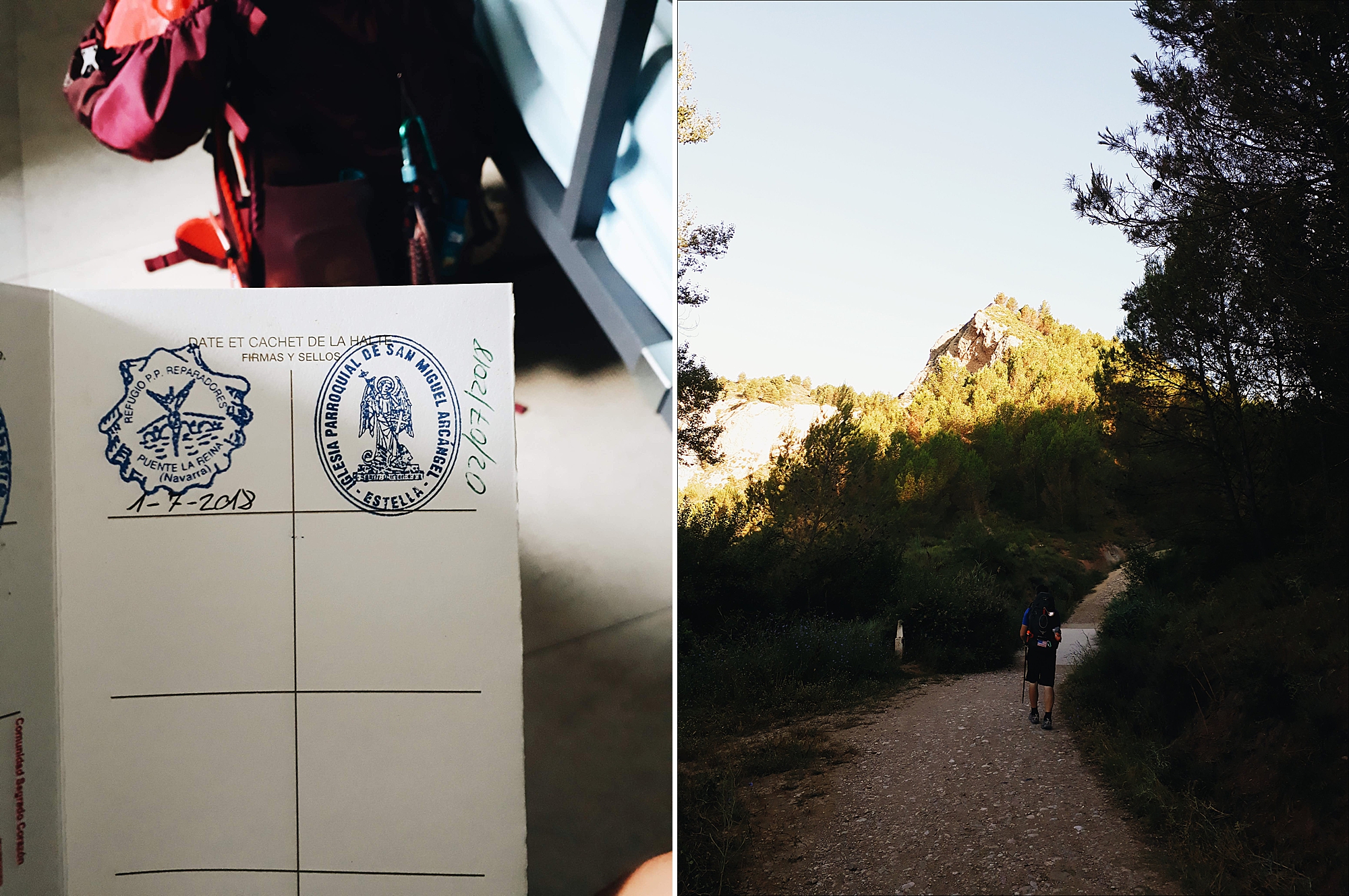
DAY SIX: Estella to Villamayor de Manjardin || ≈ 9.5 km (6 mi)
This ended up being our first “half day” because I made us stop in the town of Villamayor de Manjardin so that we could hike up to the remains of a medieval fortress at the top of the mountain behind the town.
Leaving Estella the next morning involved following the trail of shell markers that led us out of the residential area of the city:
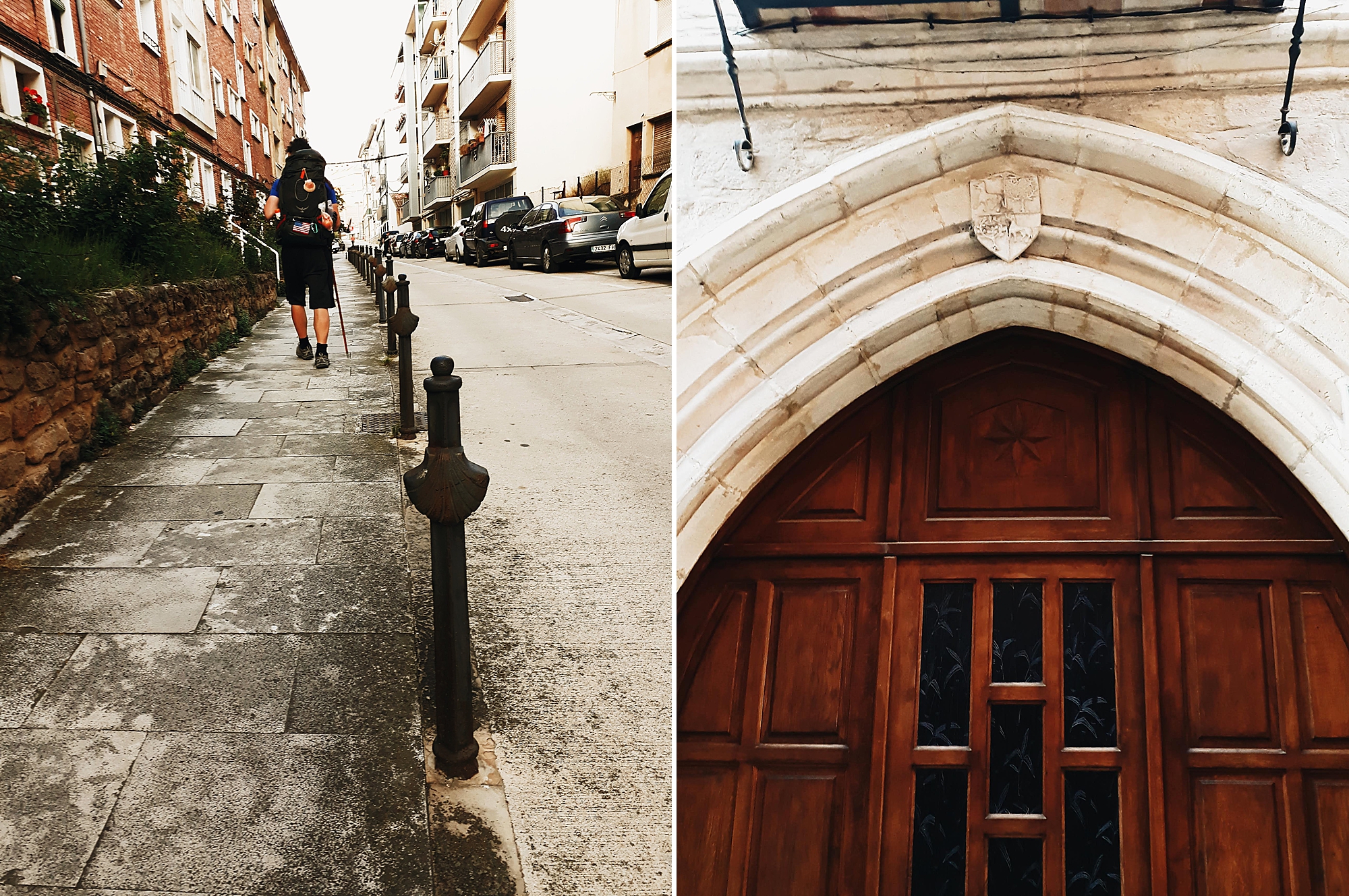
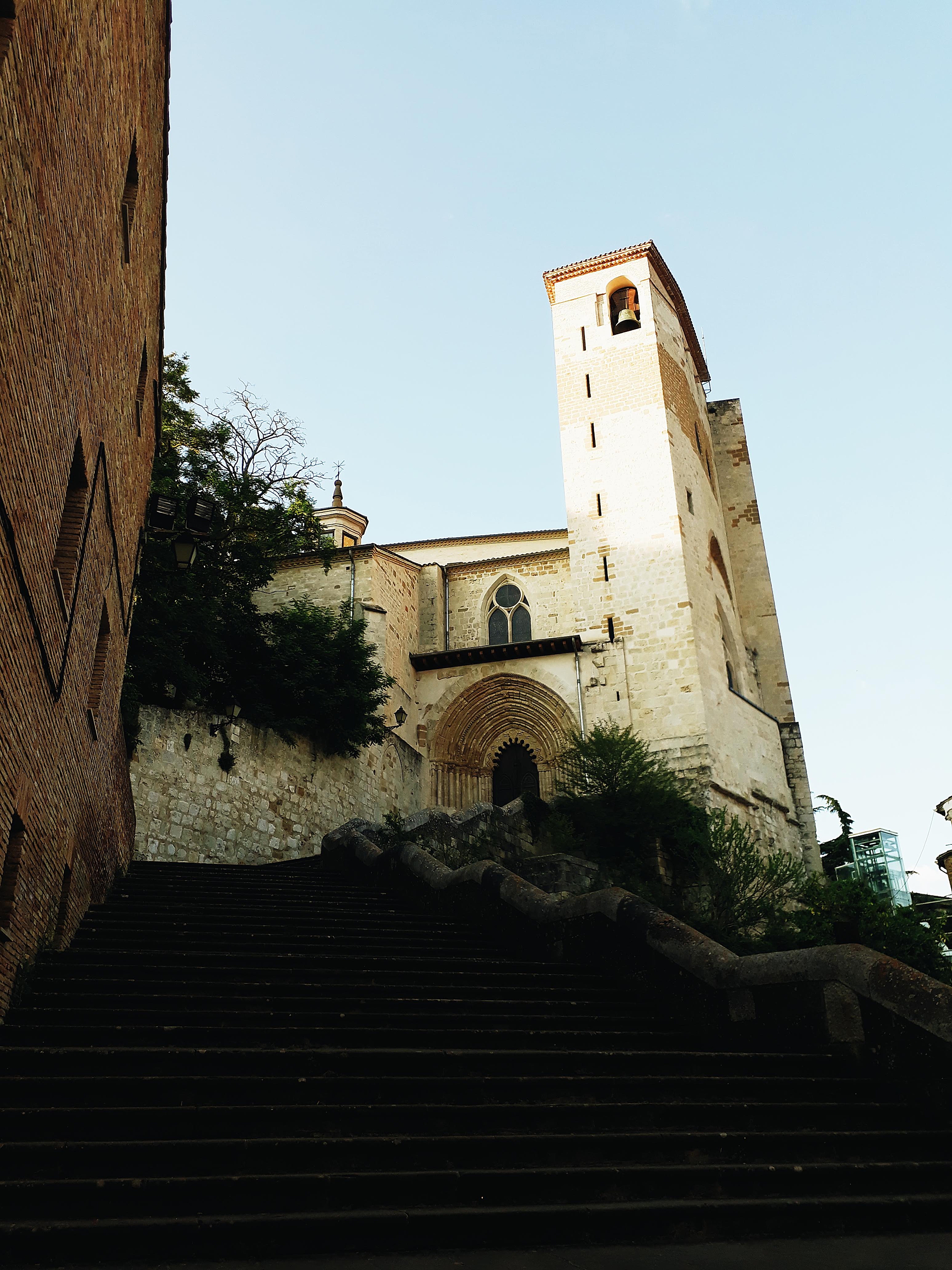 Shortly outside of Estella lies one of the novelties of the Camino that we were looking forward too: the infamous Wine Fountain. It is on the side of the Irache Winery and from 8am-8pm every day, it is open to visits. One side has a spout where a delicious red wine comes out and the other side is a regular water fountain (it is entirely free and there is just a sign on the wall which politely asks guests to take only 8 ounces of wine so that all visitors can have some).
Shortly outside of Estella lies one of the novelties of the Camino that we were looking forward too: the infamous Wine Fountain. It is on the side of the Irache Winery and from 8am-8pm every day, it is open to visits. One side has a spout where a delicious red wine comes out and the other side is a regular water fountain (it is entirely free and there is just a sign on the wall which politely asks guests to take only 8 ounces of wine so that all visitors can have some).
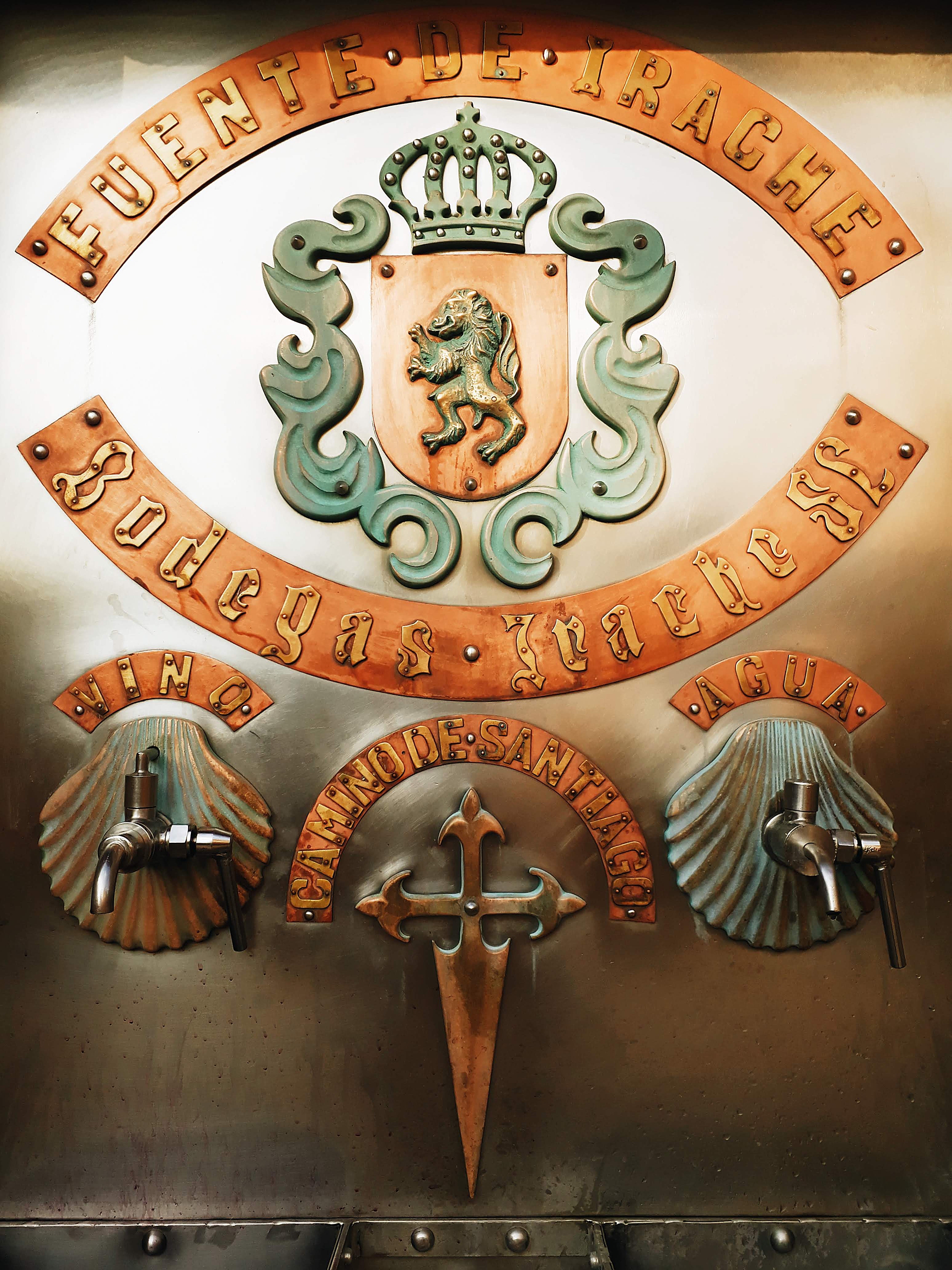
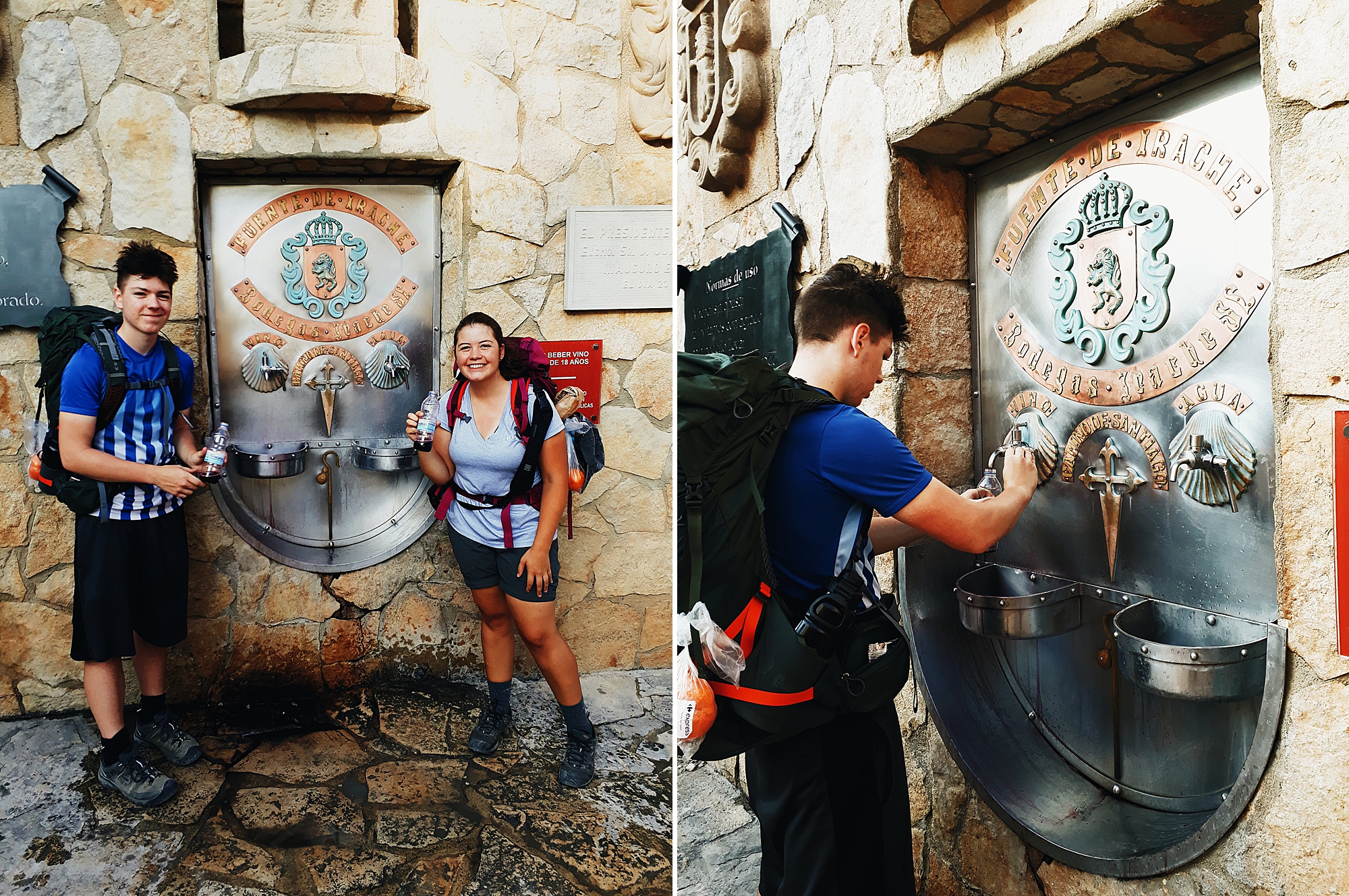
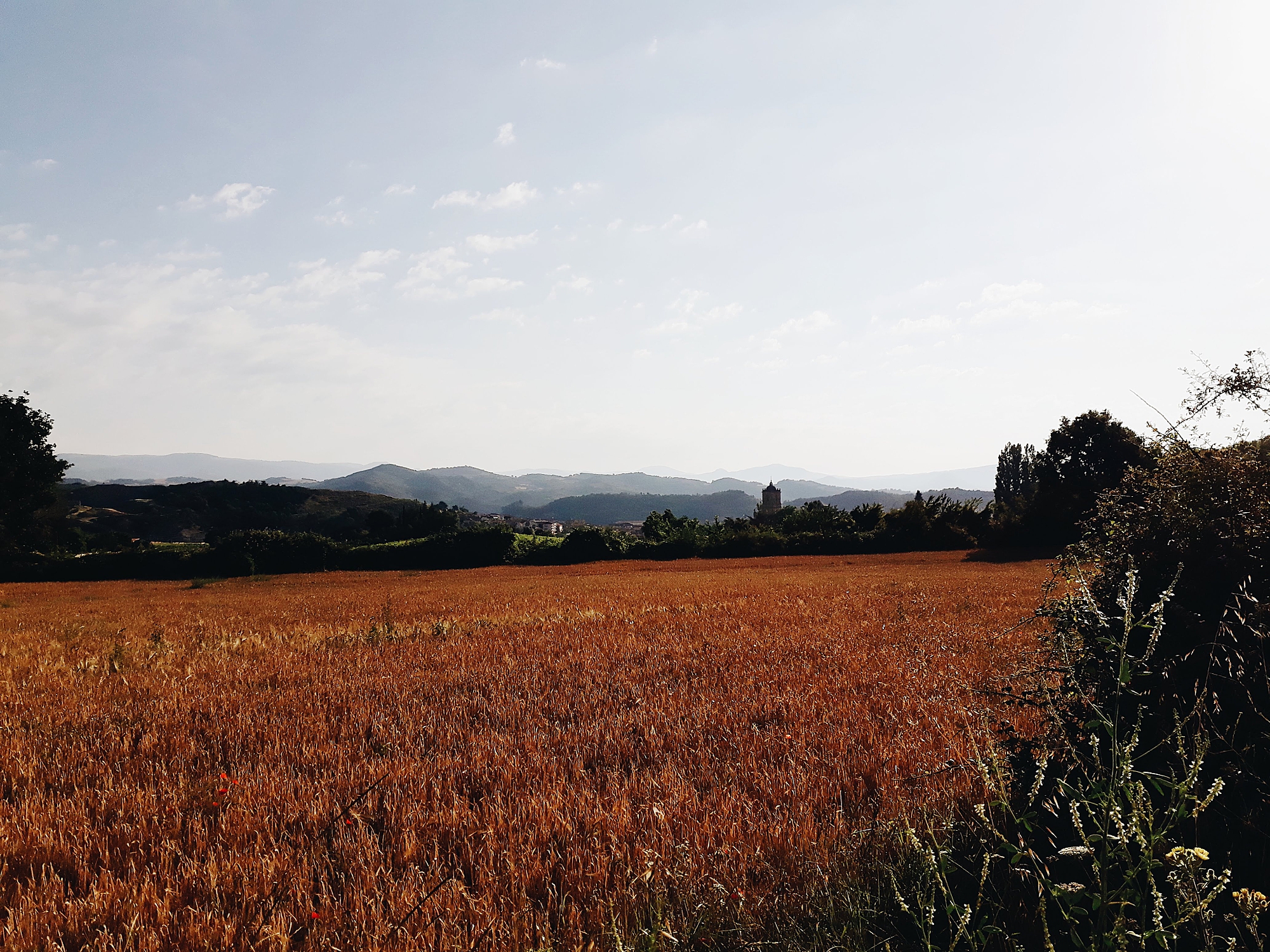
Can you make out the square building at the top of that pointy hill/mountain in the photo below? It’s the remains of the medieval fortress that we hiked up to later in the day for the most amazing 360º views.
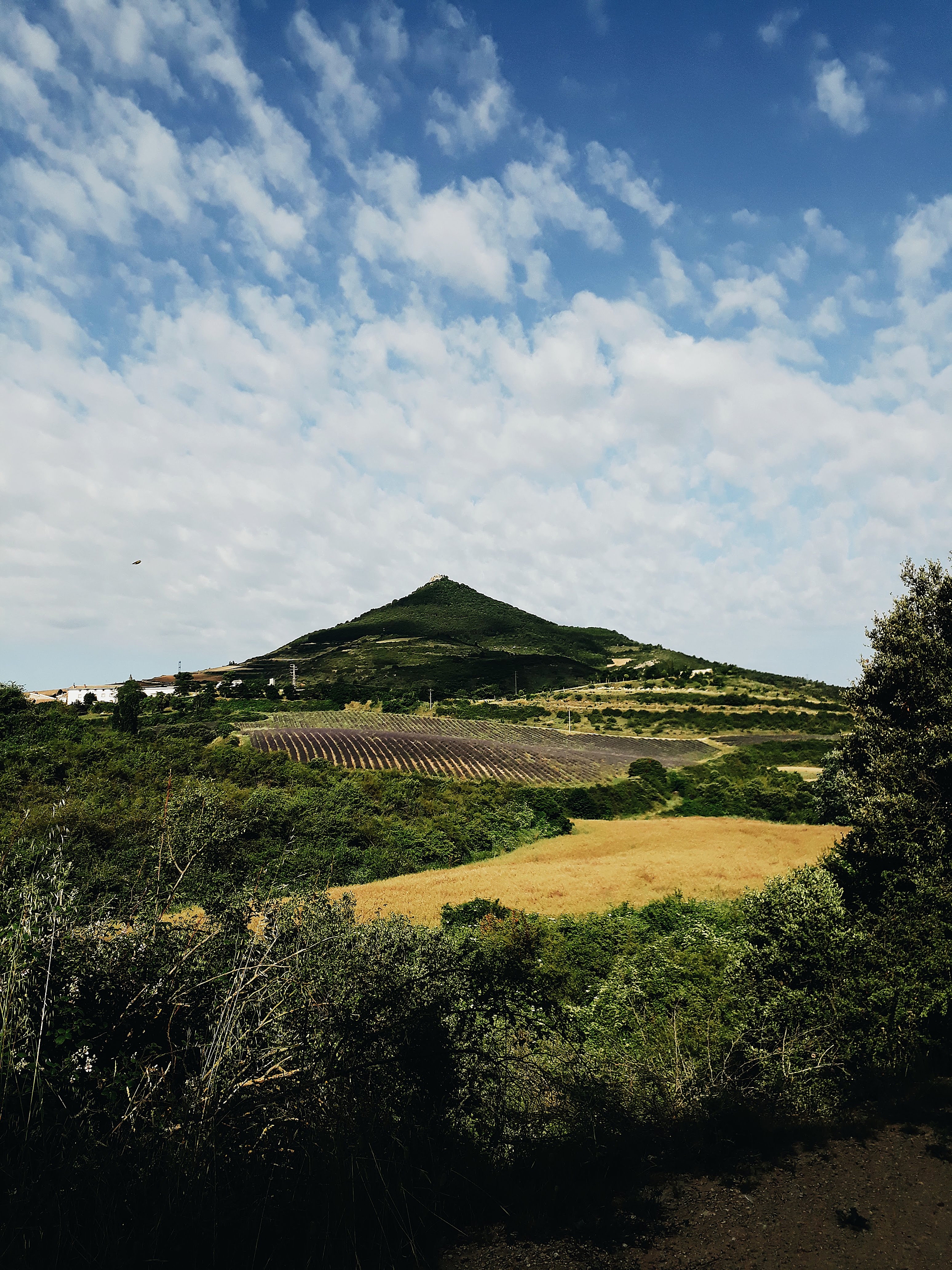
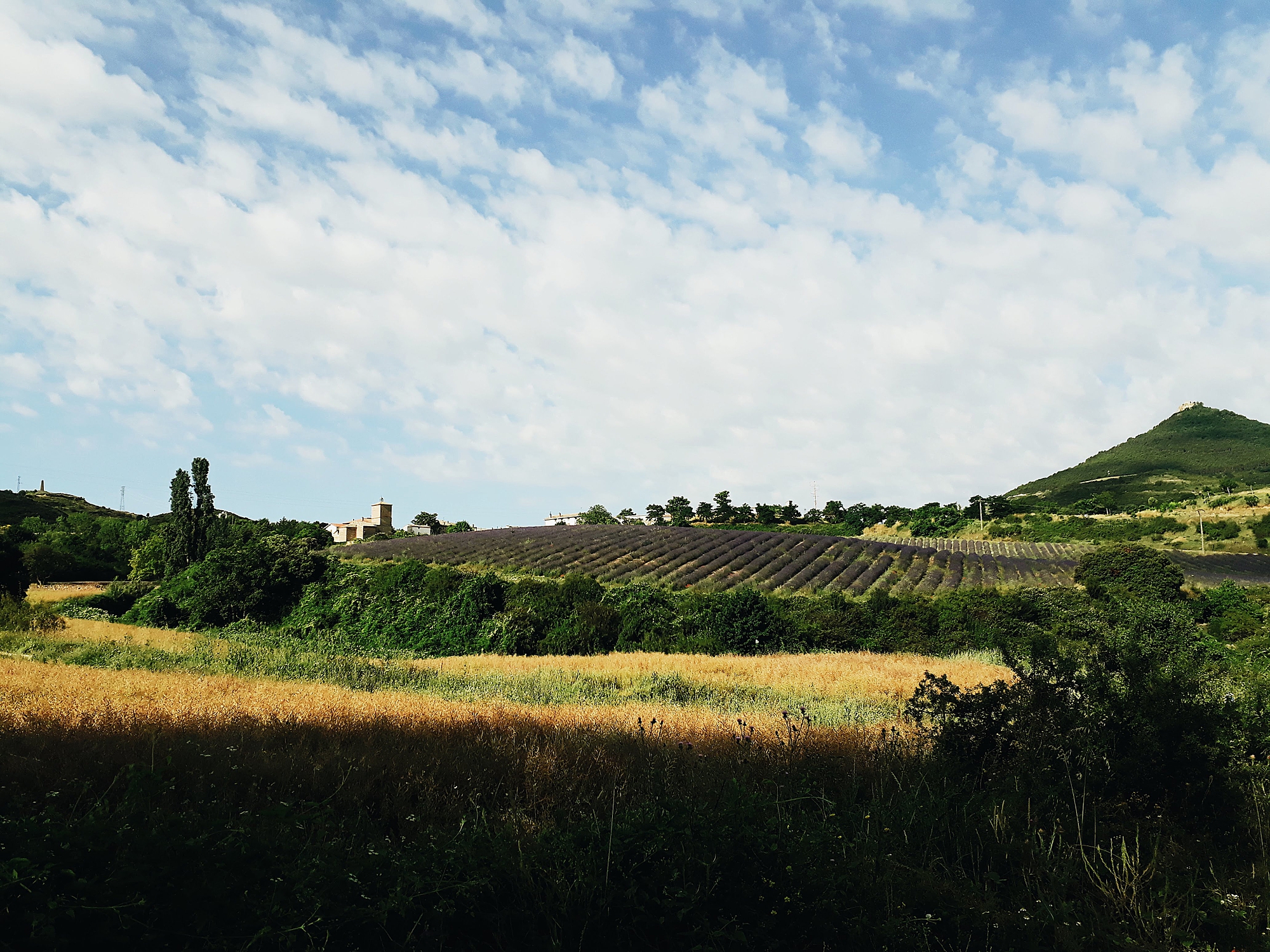
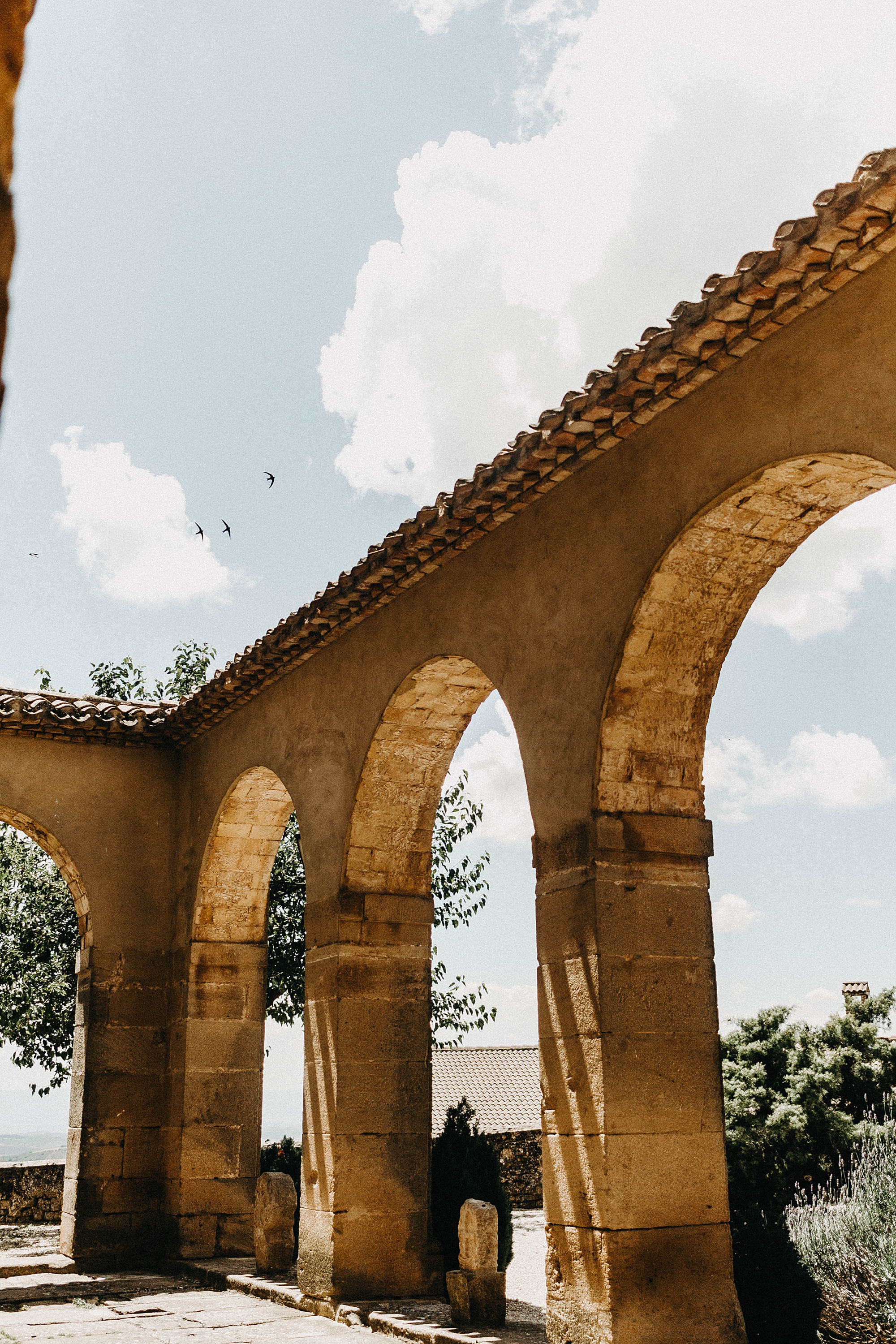
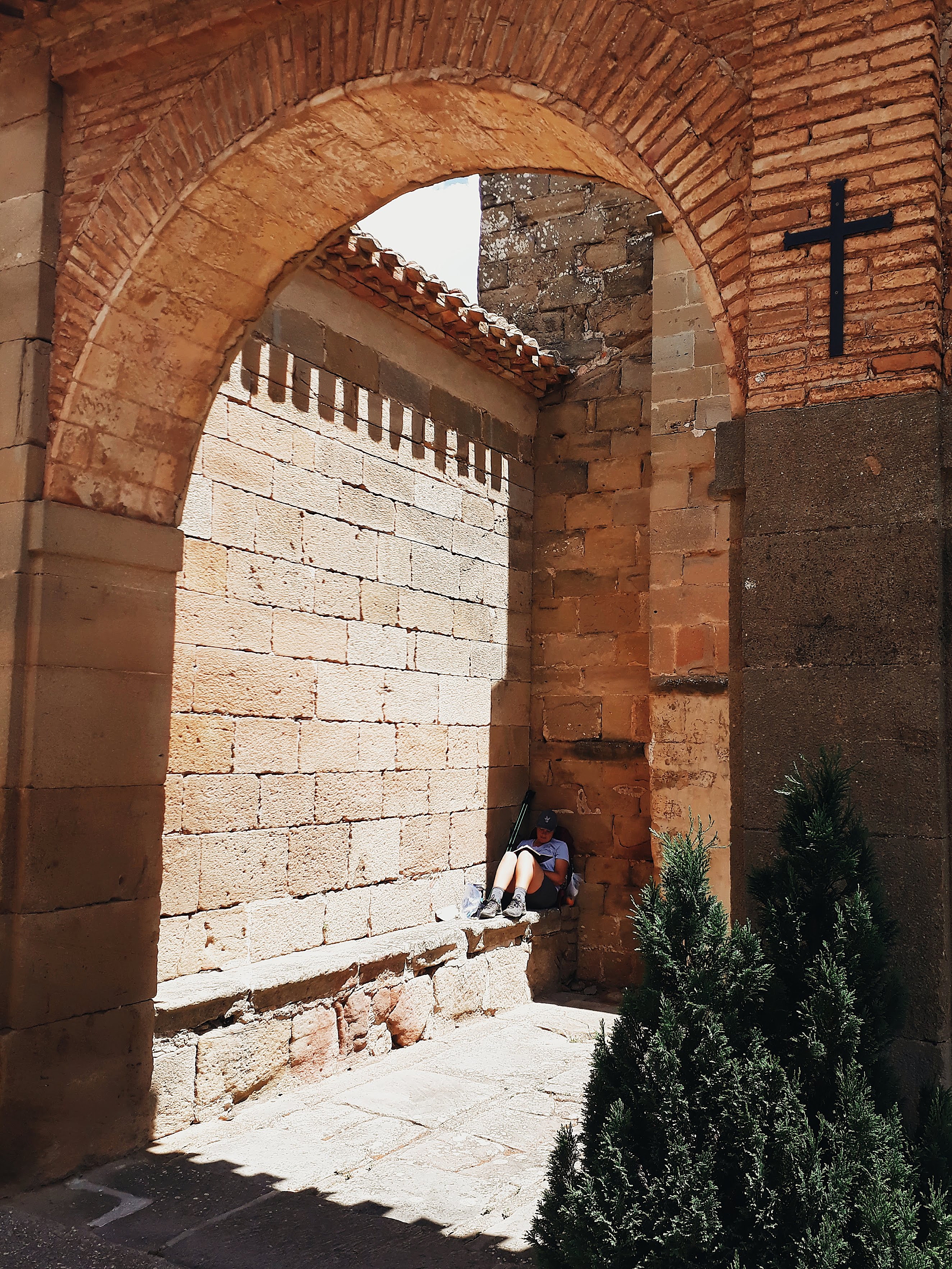
The albergue we stayed in had this awesome rooftop balcony where I came out for some sunshine and journal time while we rested before starting our hike up to the fortress.

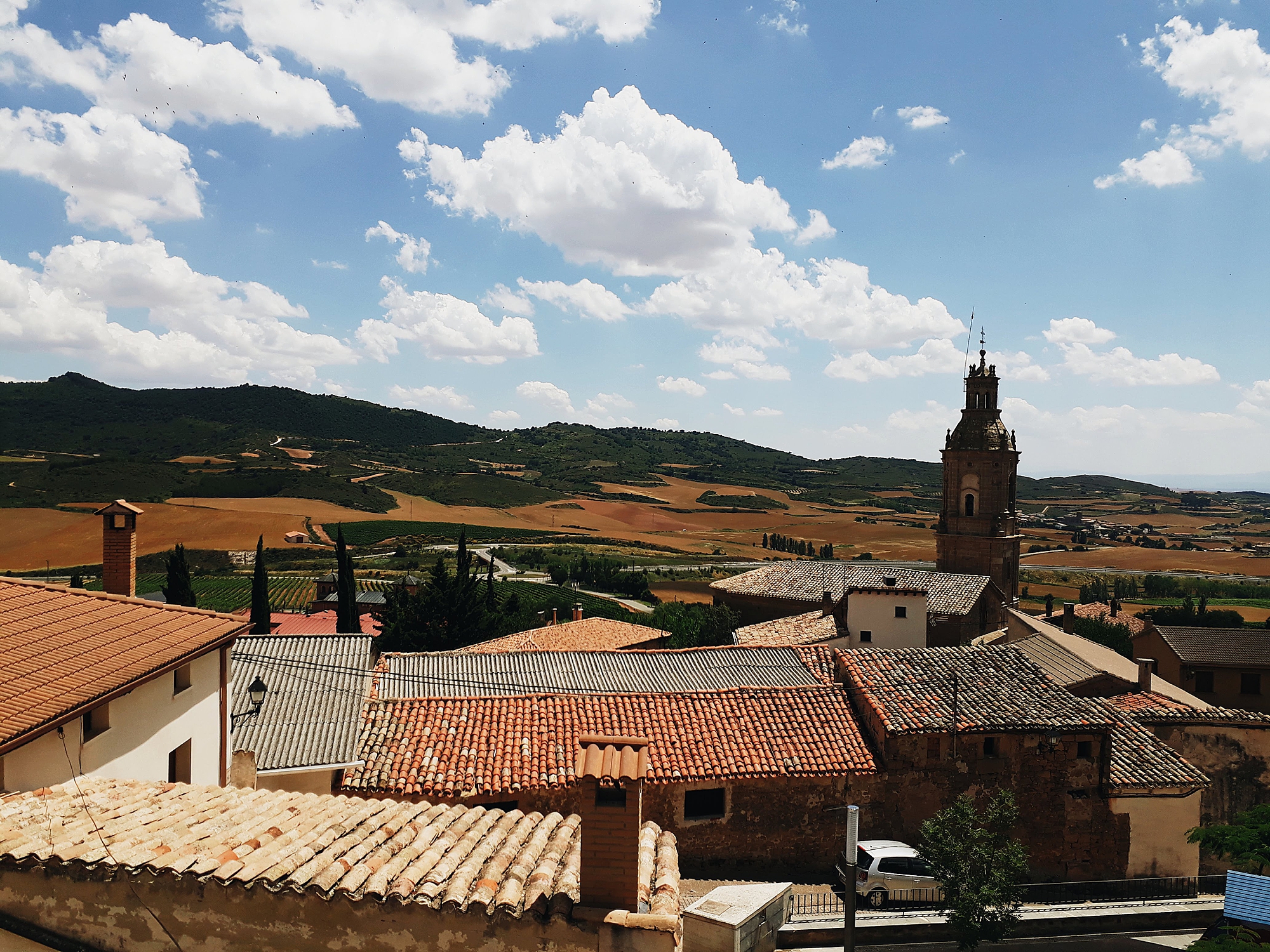
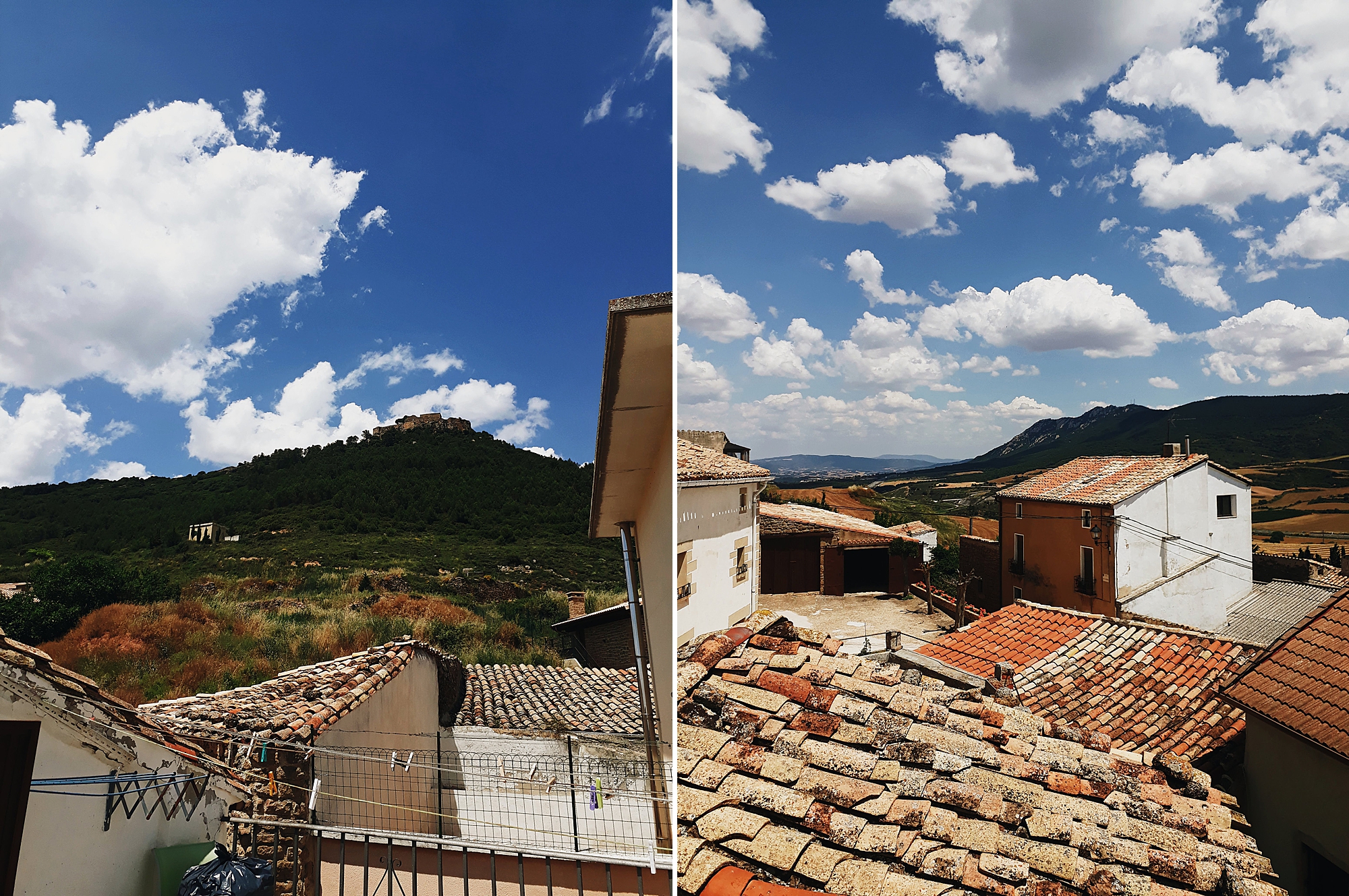
It took about an hour to hike up to the fortress, so although we walked a shorter distance this day, we didn’t end up making it a true rest day. But this was totally worth it (and John Paul even agreed) and if I were to walk the Camino again I would absolutely want to hike up here again. It was one of my favorite spots along the whole Camino. This was the sign by the entrance of the fortress (if you’re curious about the history):

We were the only souls up here and we stayed for over an hour and a half and honestly probably could have stayed up there much longer except for the fact that we were starving and hadn’t brought any food with us and we had to make it back down into town before the only store closed for the day.

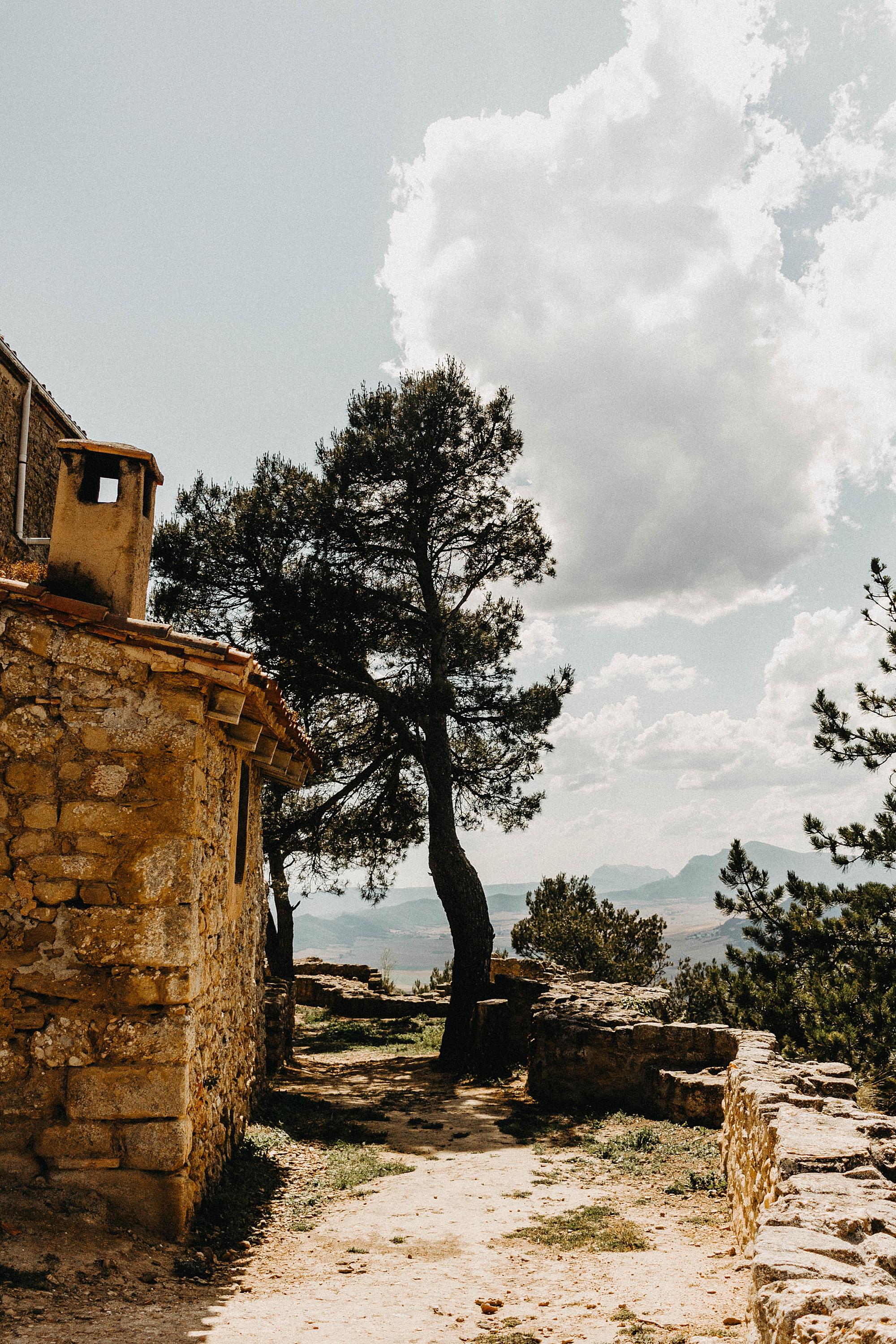
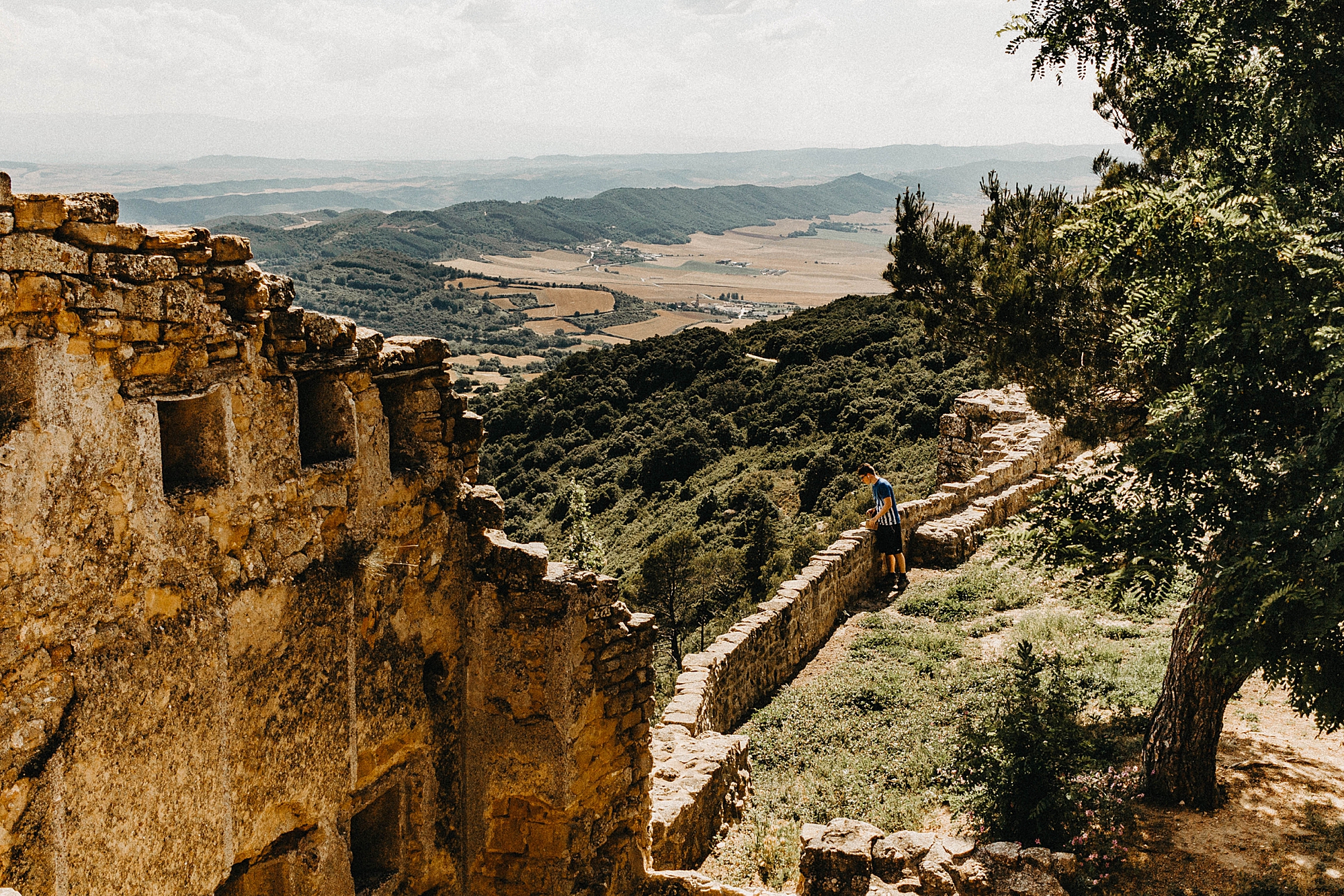
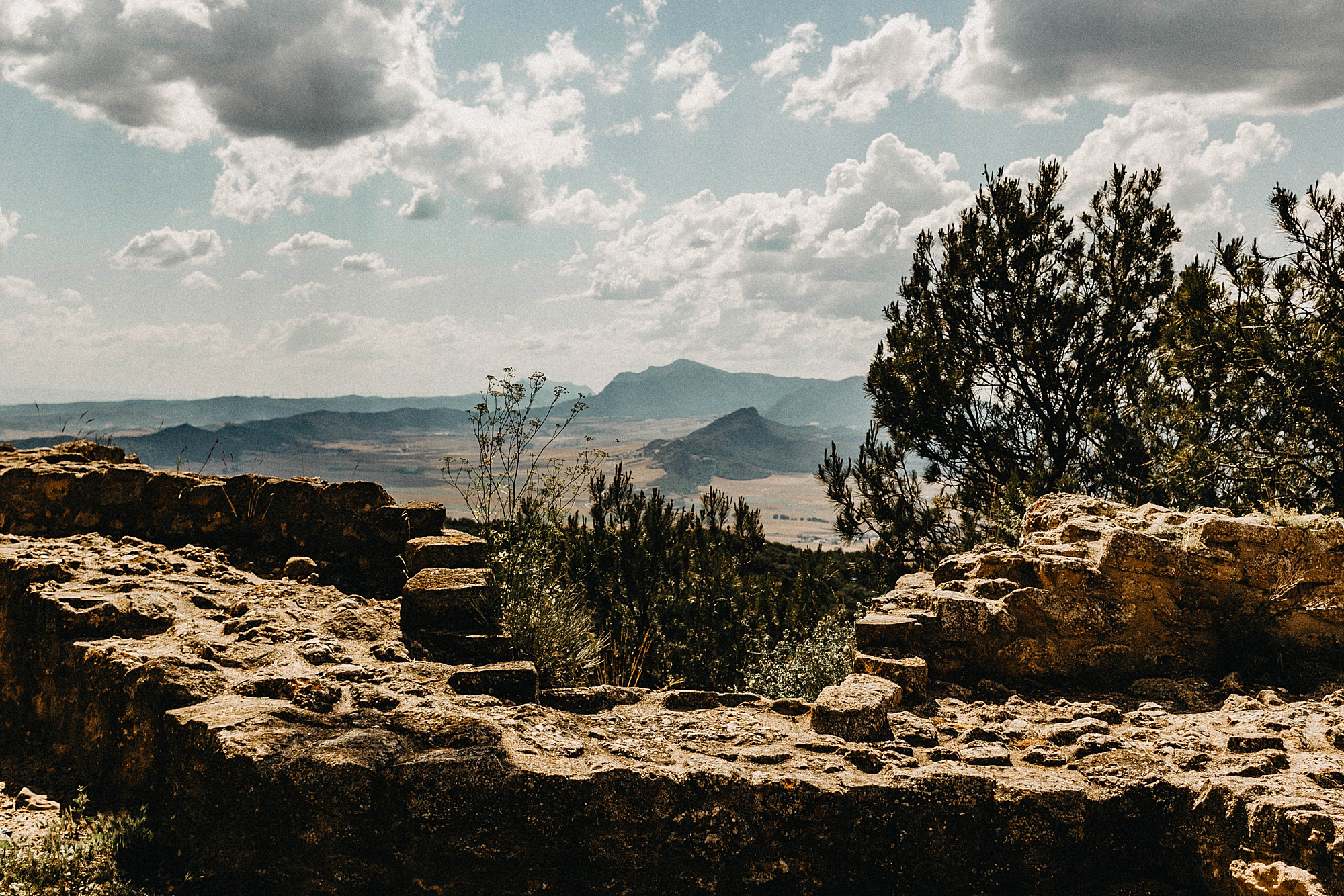
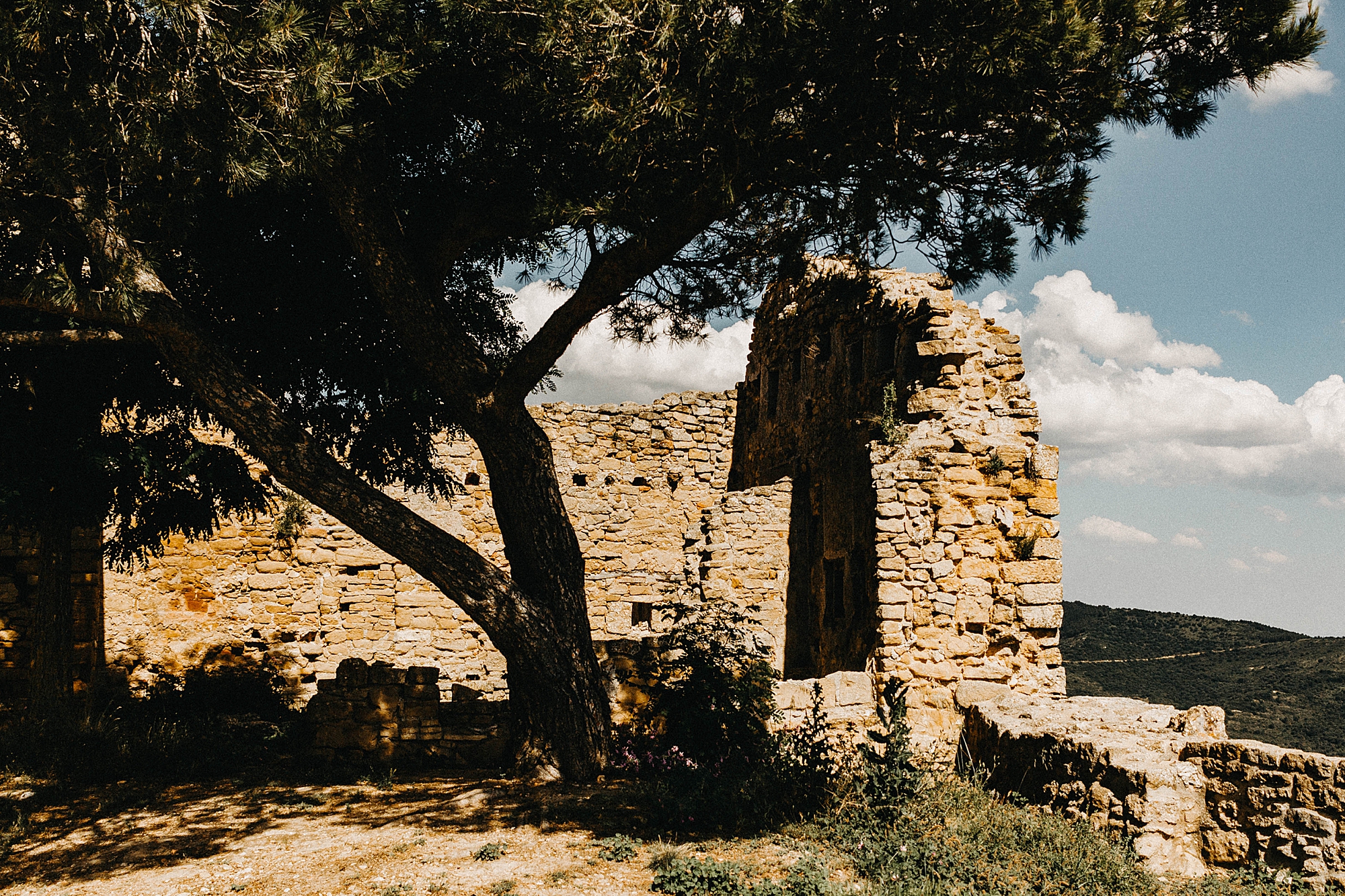
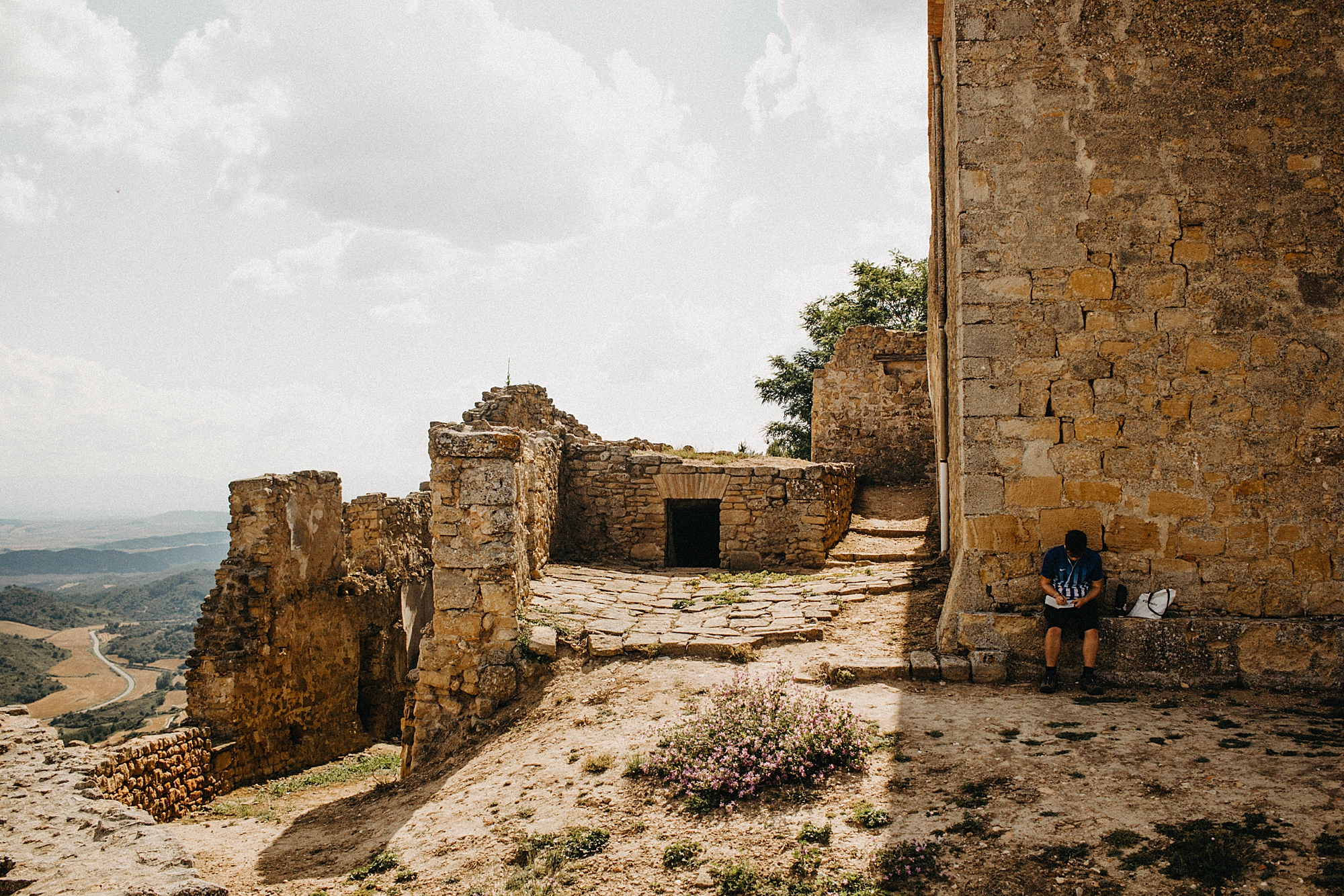
In the photo below on the right is the town of Villemayor de Monjardín where we stayed the night (the church you can see is the same one from a few photos above where I was sitting under the archways and journaling).
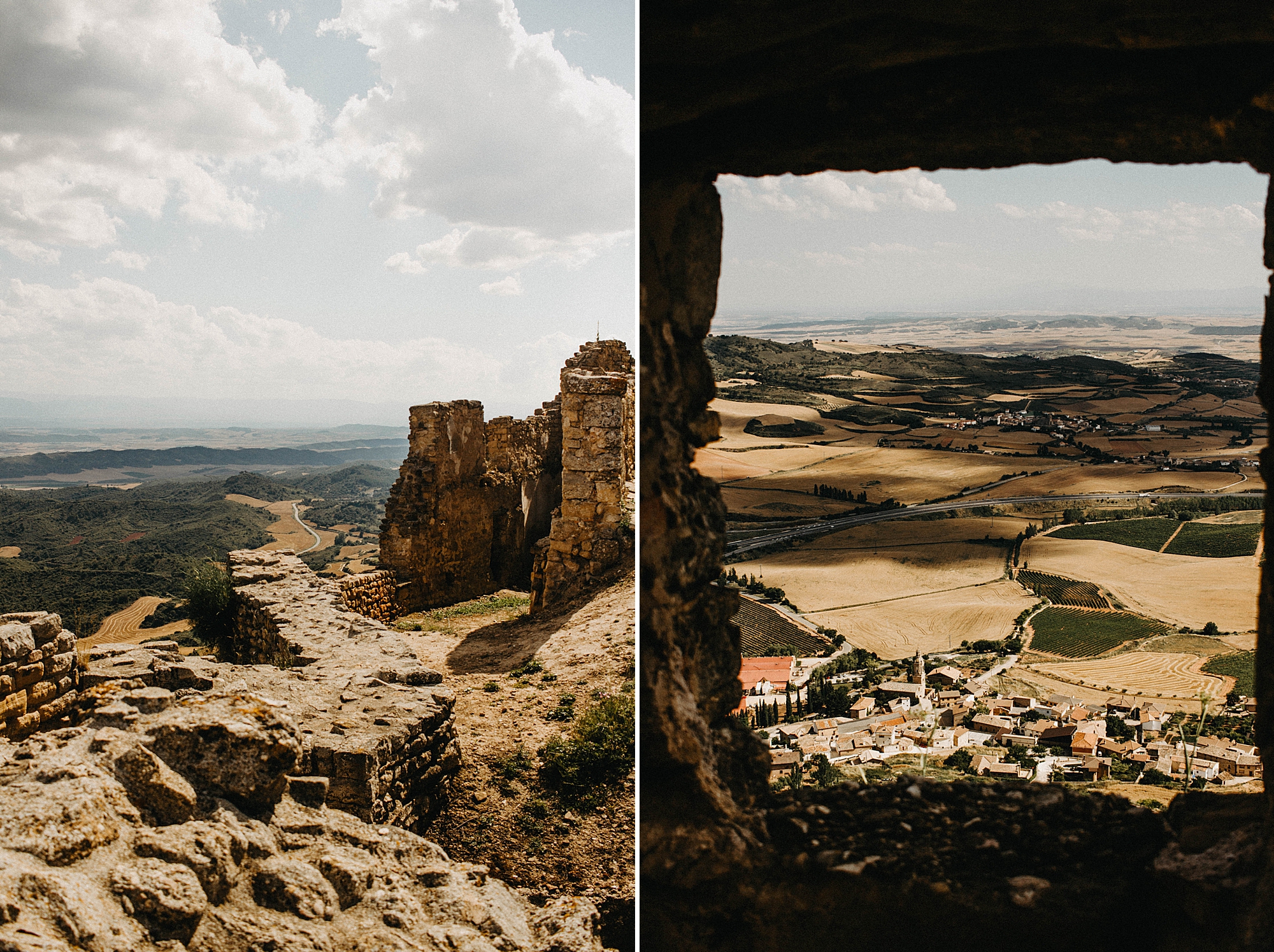
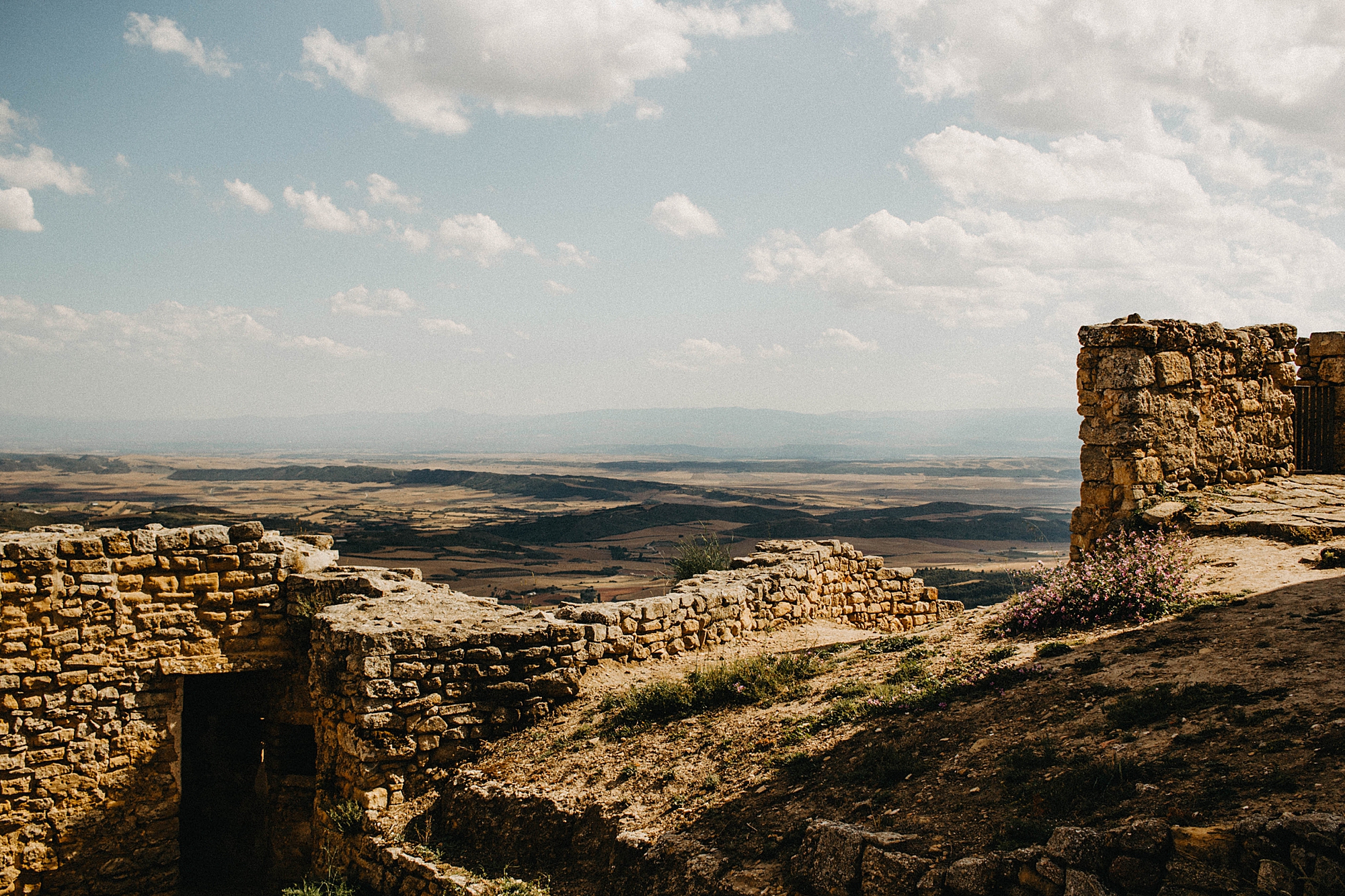
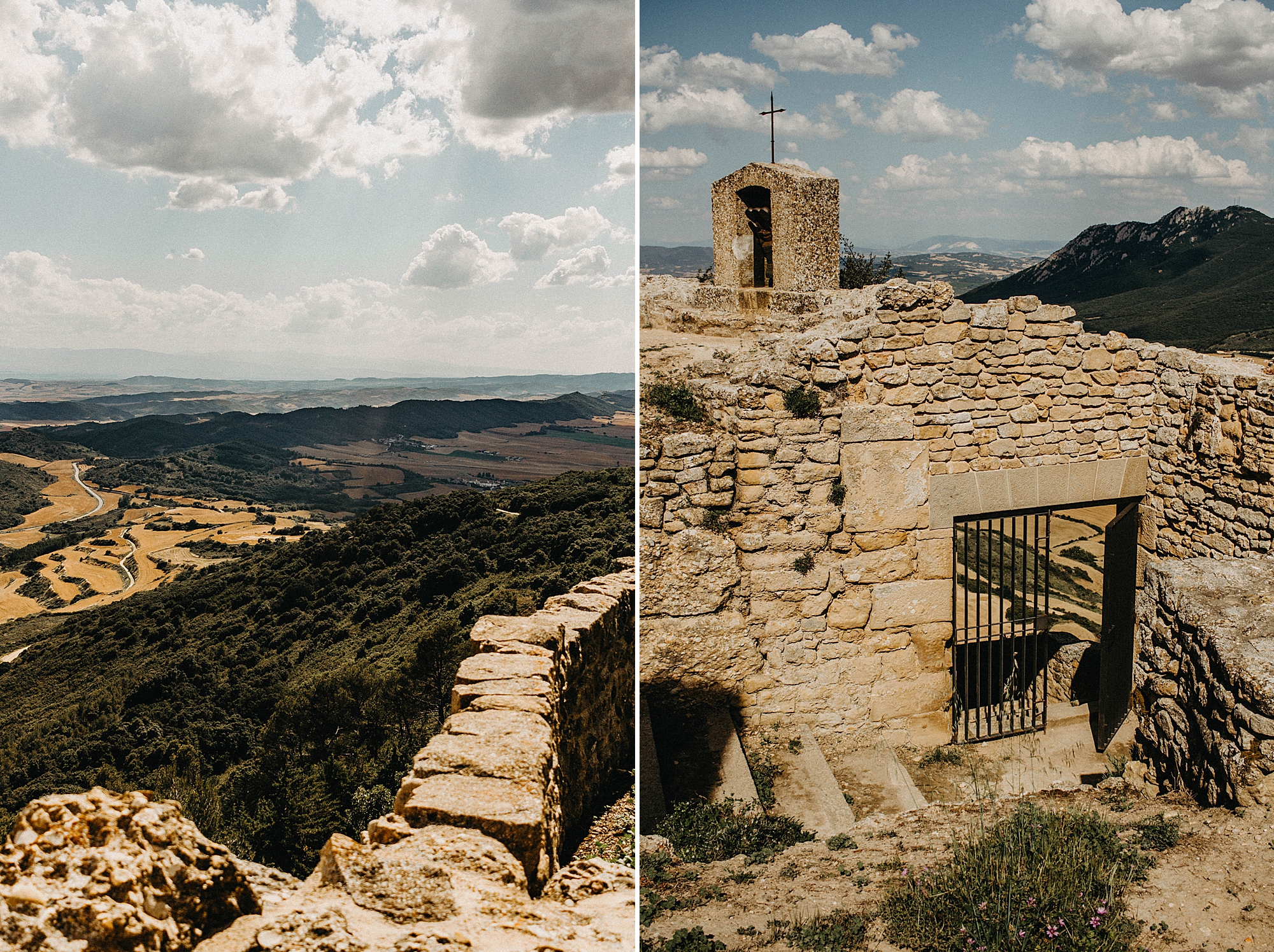

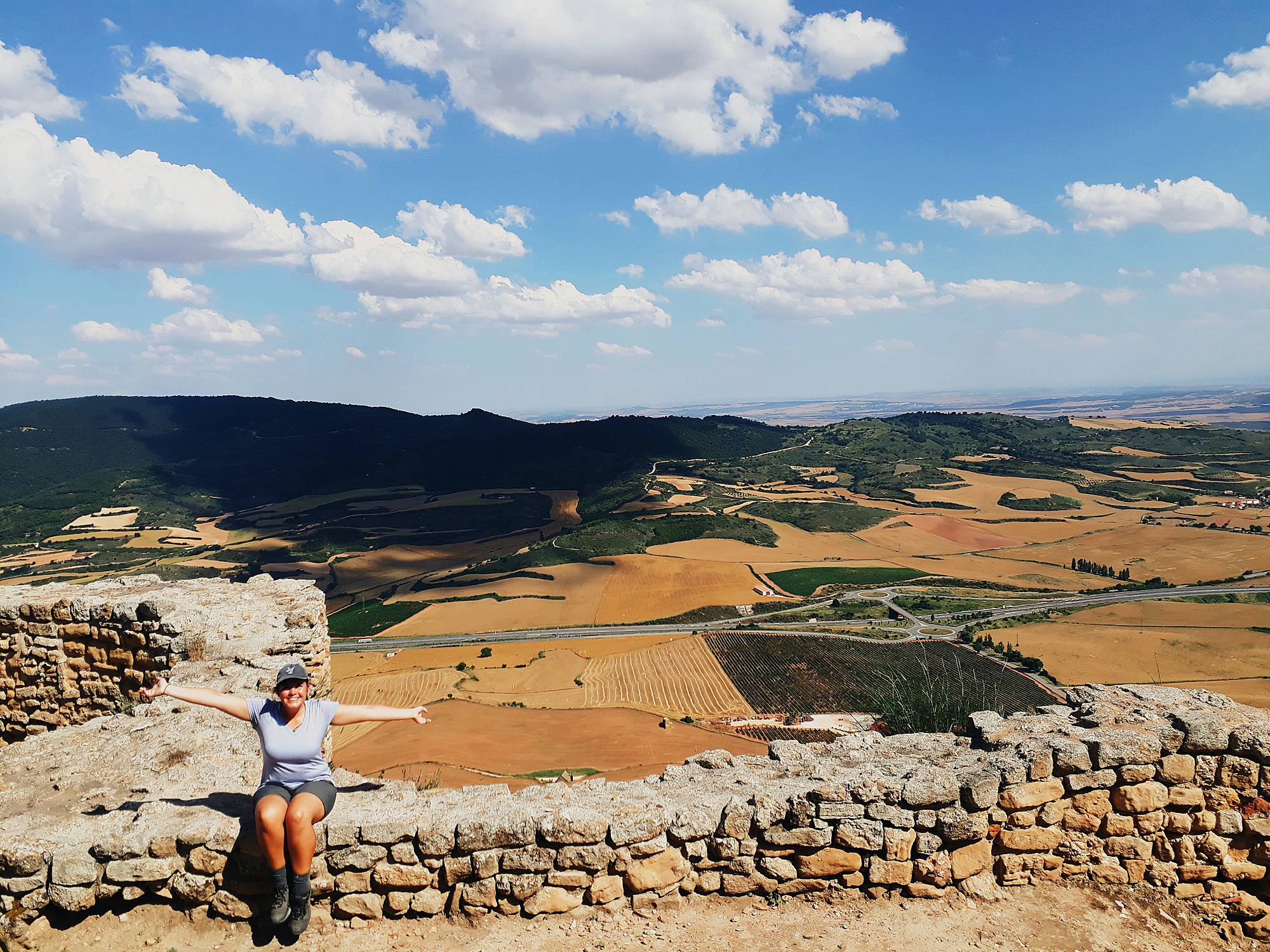
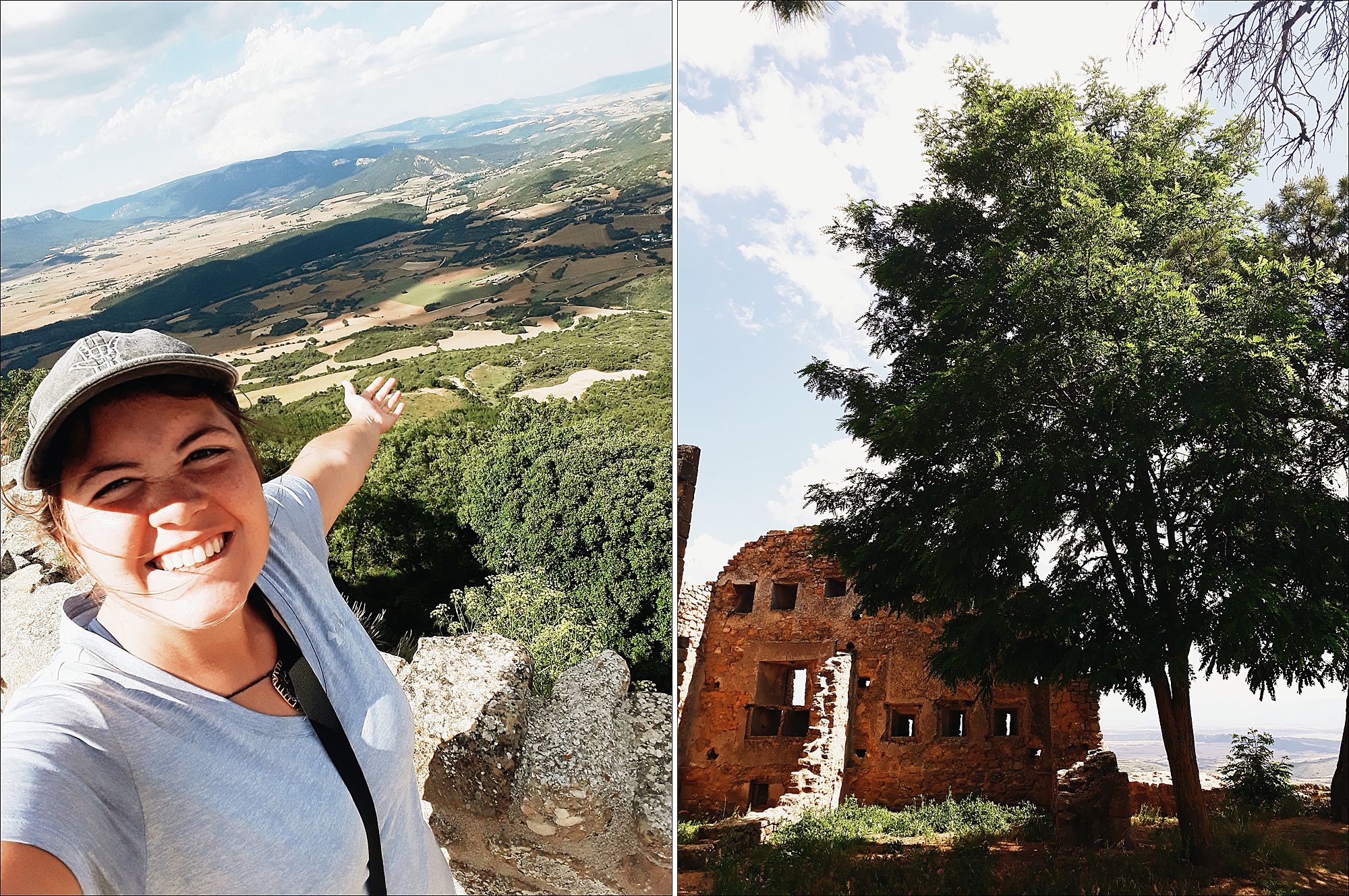


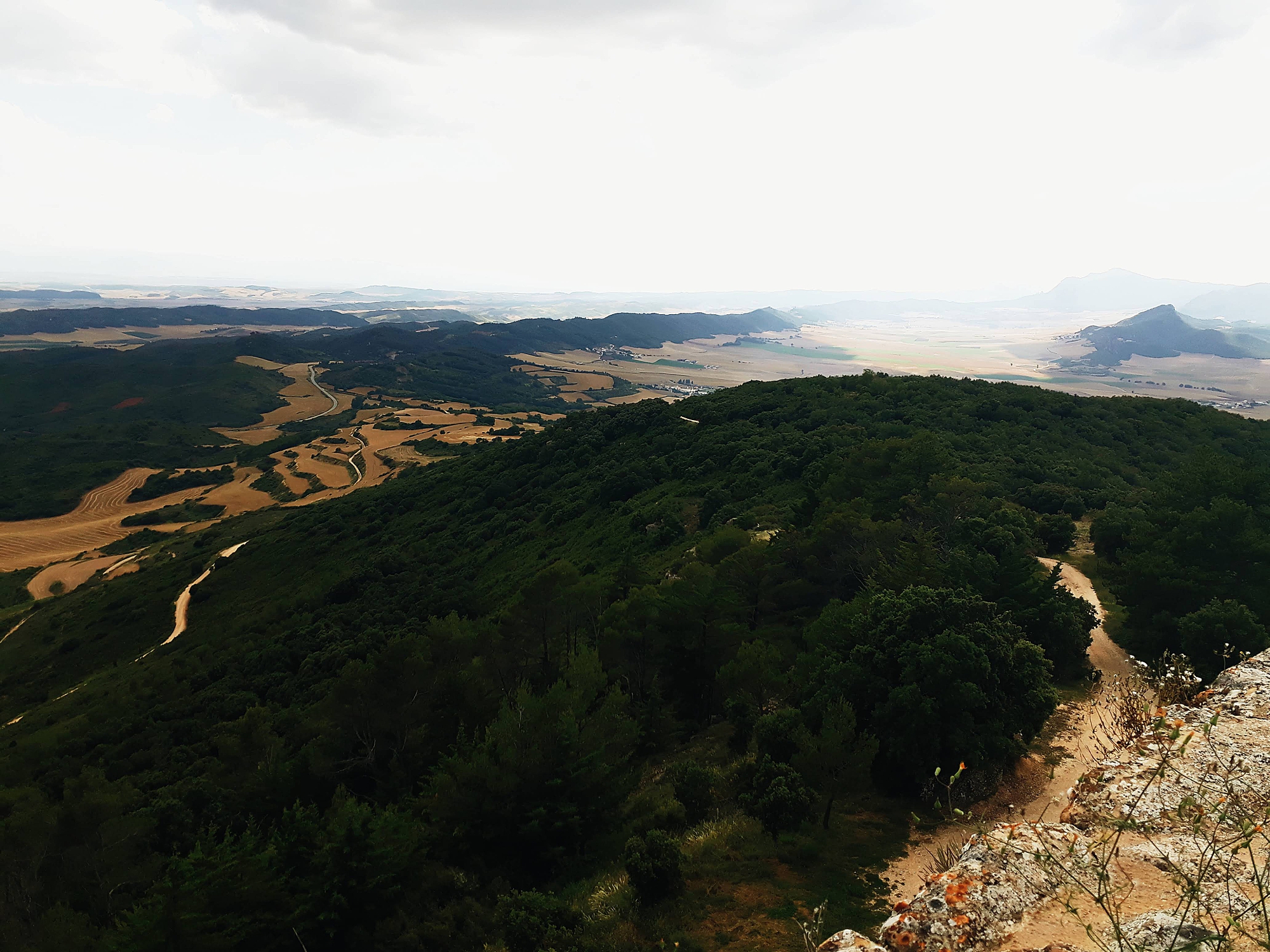
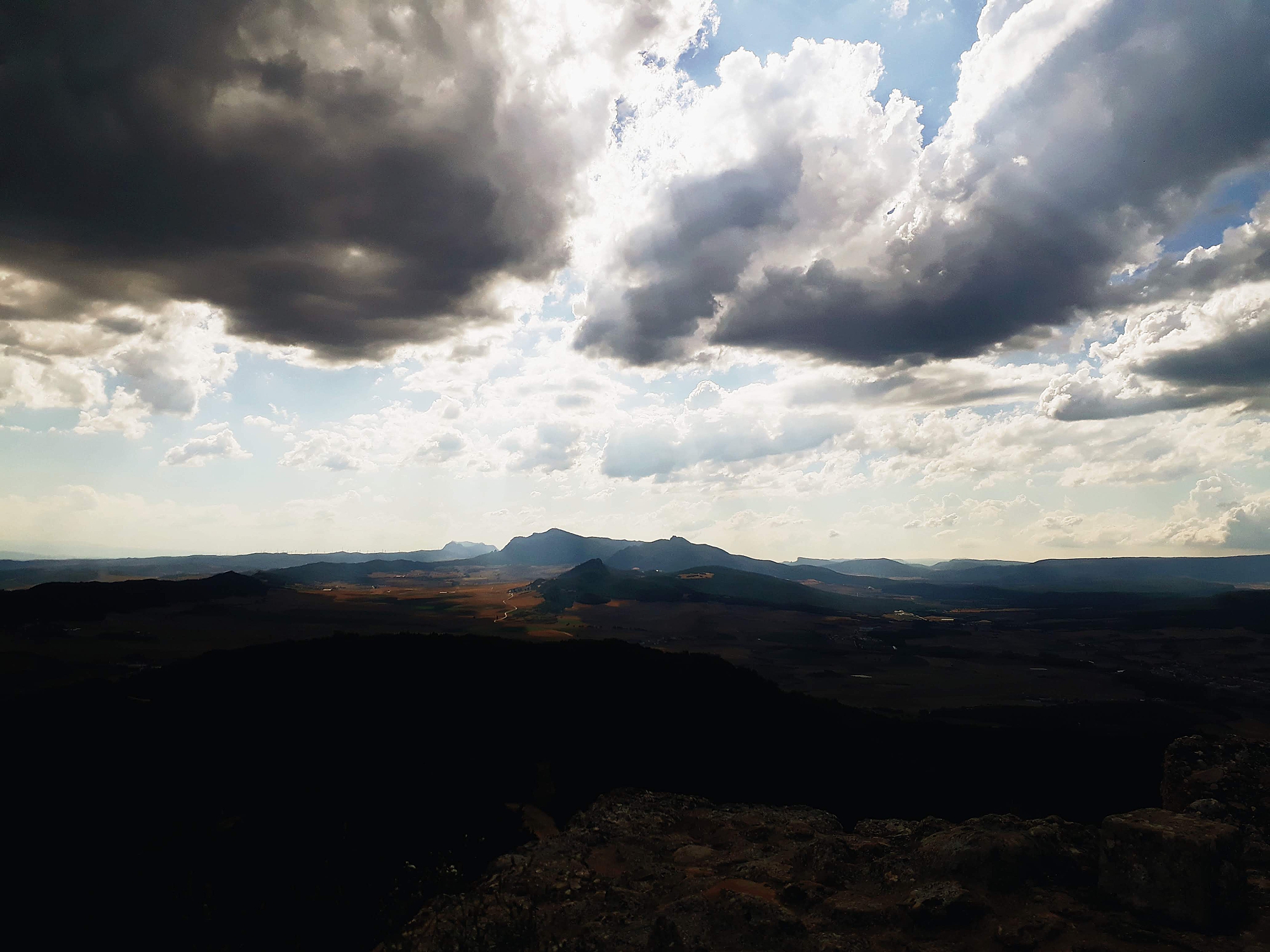
DAY SEVEN: Villamayor de Manjardin to Torres del Rio || ≈ 20 km (12.4 mi)
The first part of the day was the 12 km stretch between Villamayor de Manjardin and Los Arcos, these 12 km had absolutely no signs of civilization, aka, no places to stop to refill water or food or take a bathroom break. This was another reason I was inclined to stop in Villamayor the day before, I thought it would be better to do this long stretch first thing in the morning and not at the end of the day when we were exhausted and super hot. This turned out to be a wise decision because this stretch had basically no shade and would have been brutal in the afternoon sunshine.
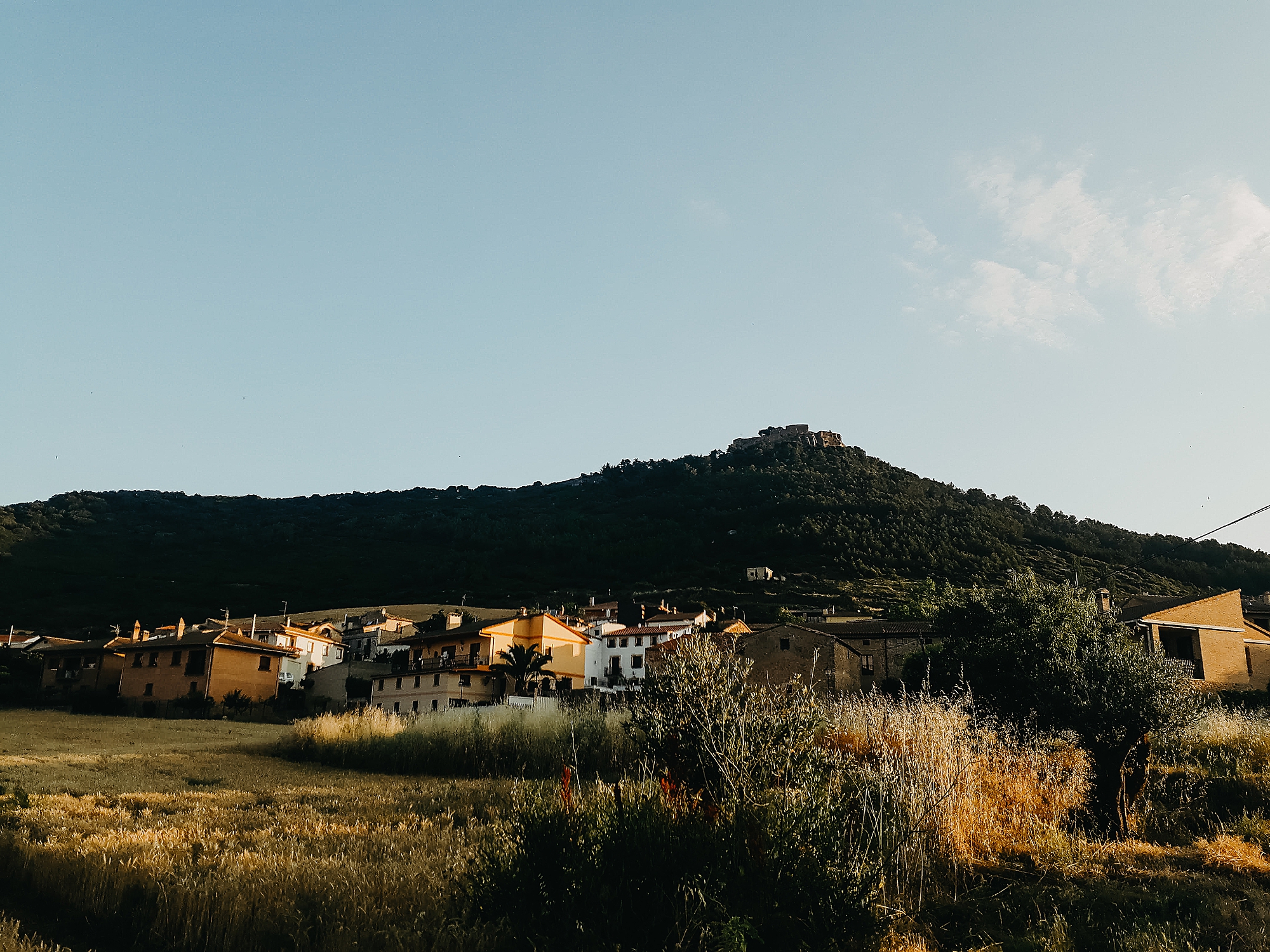
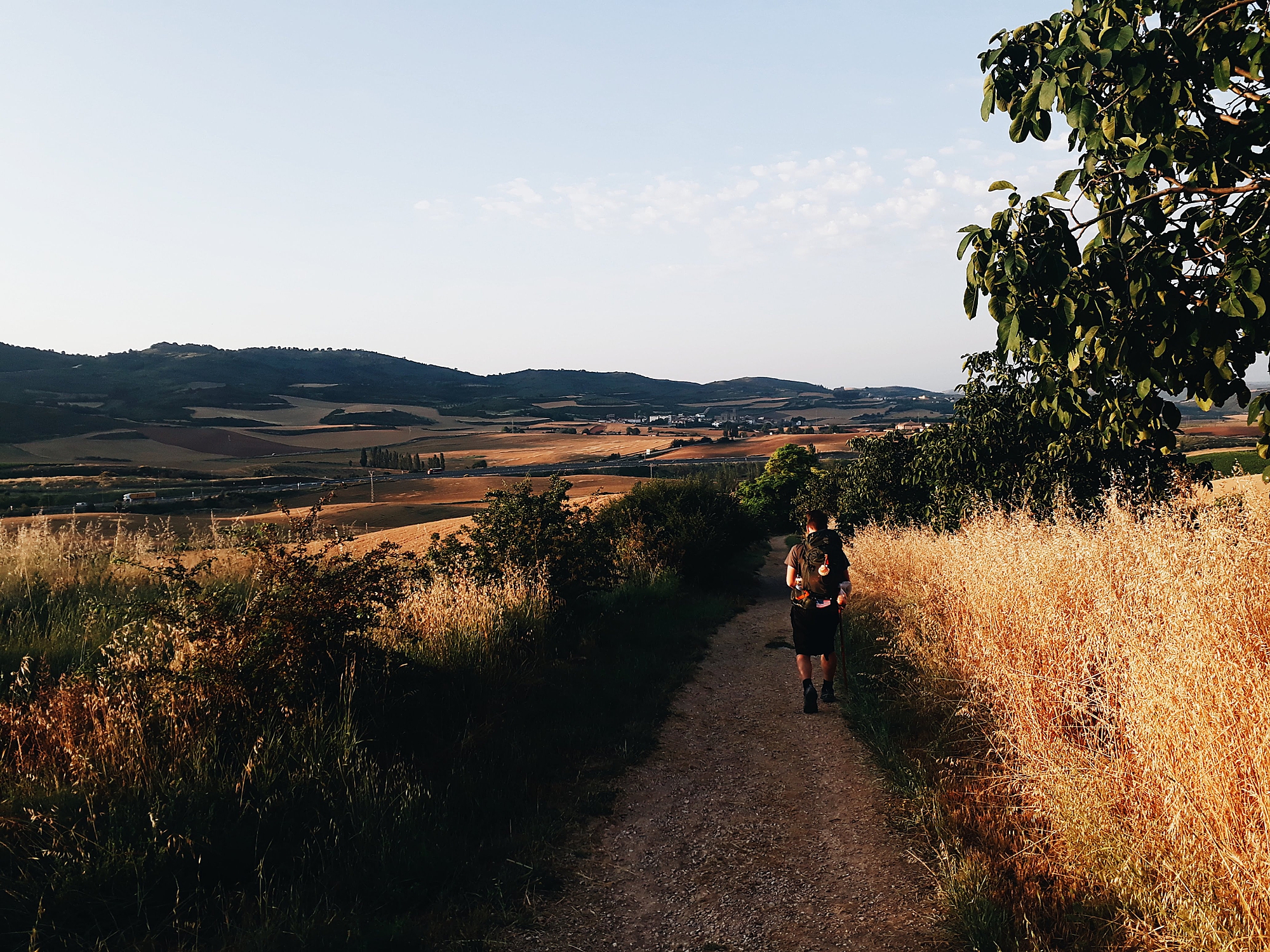

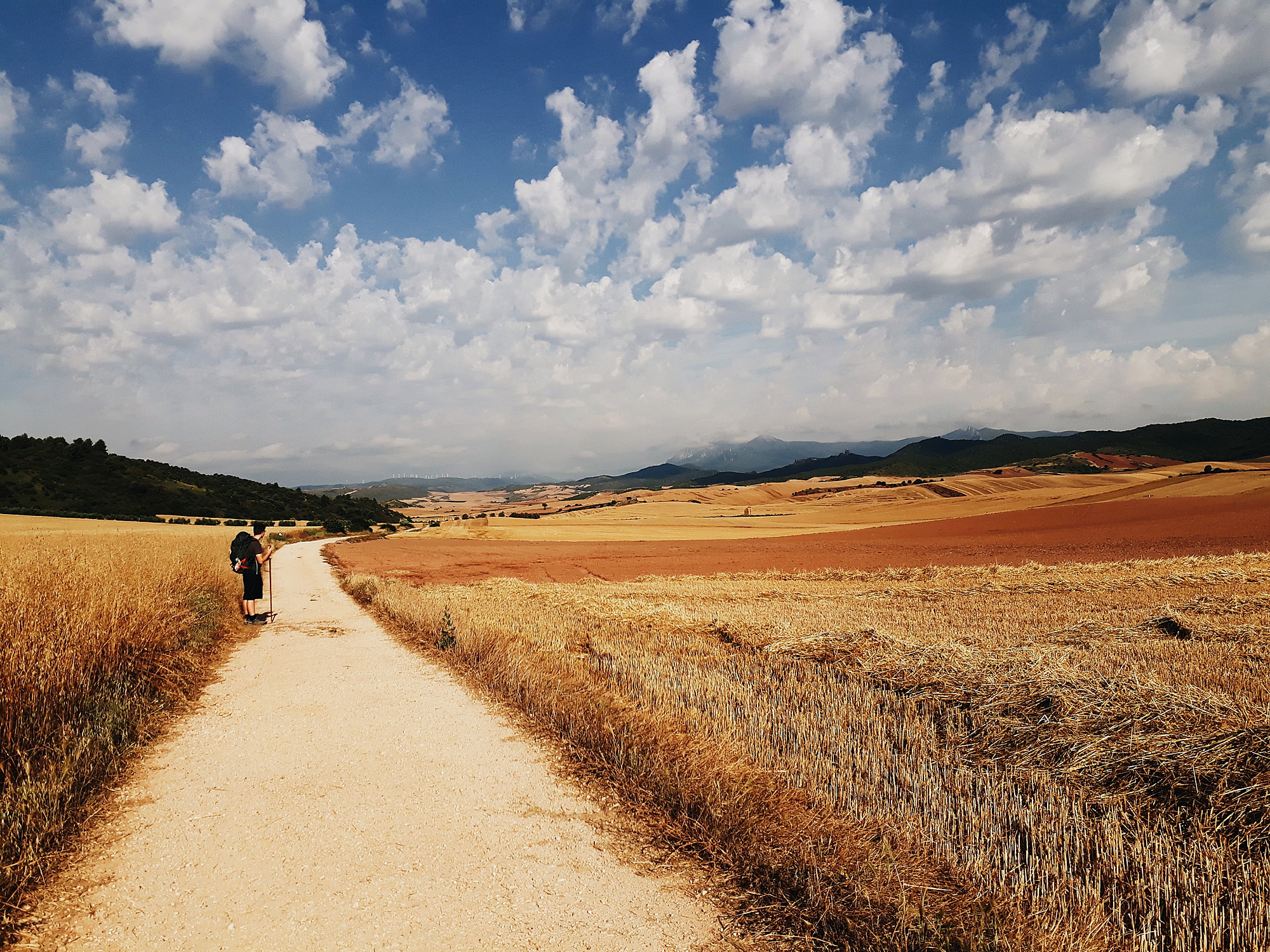
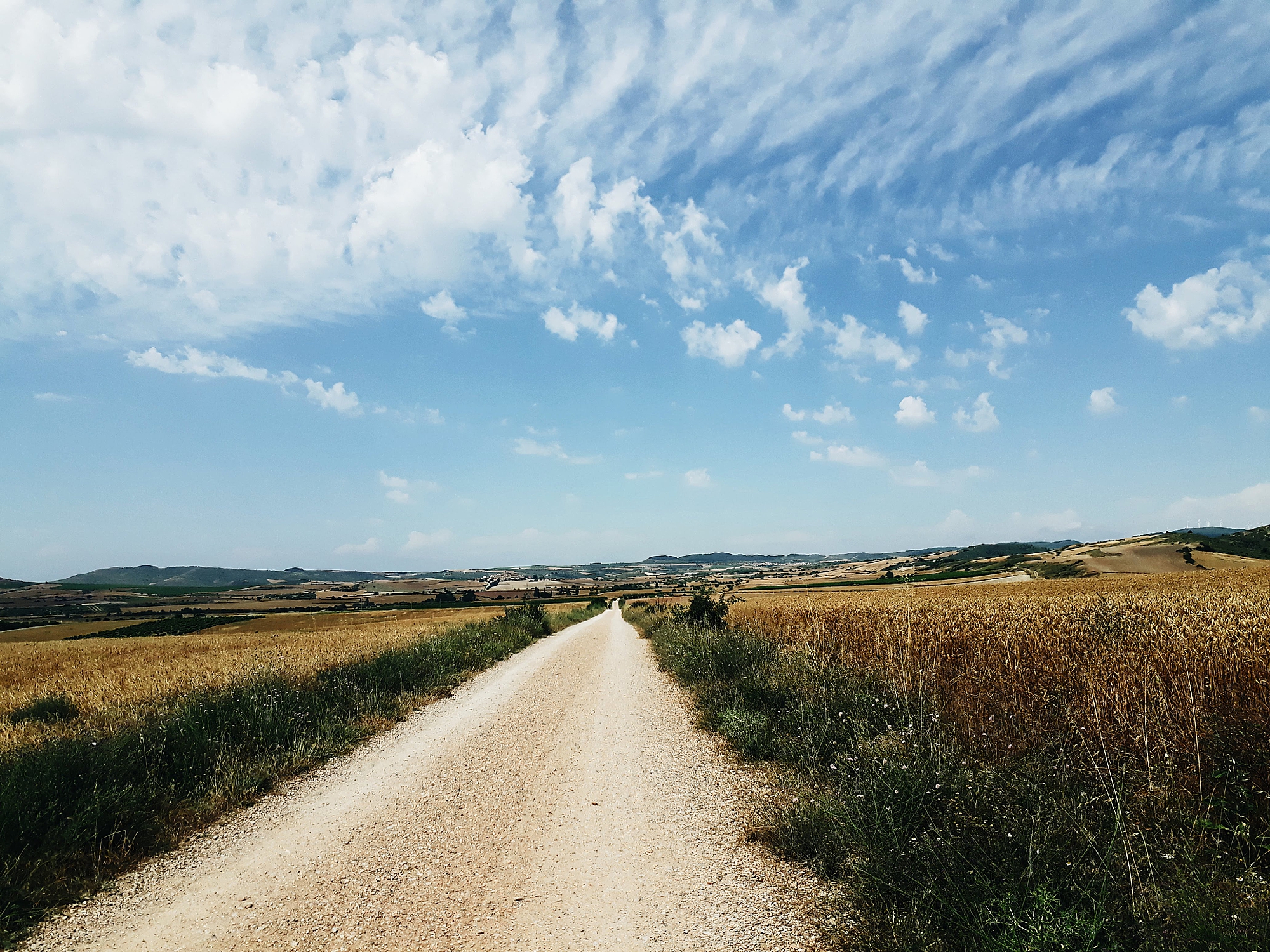
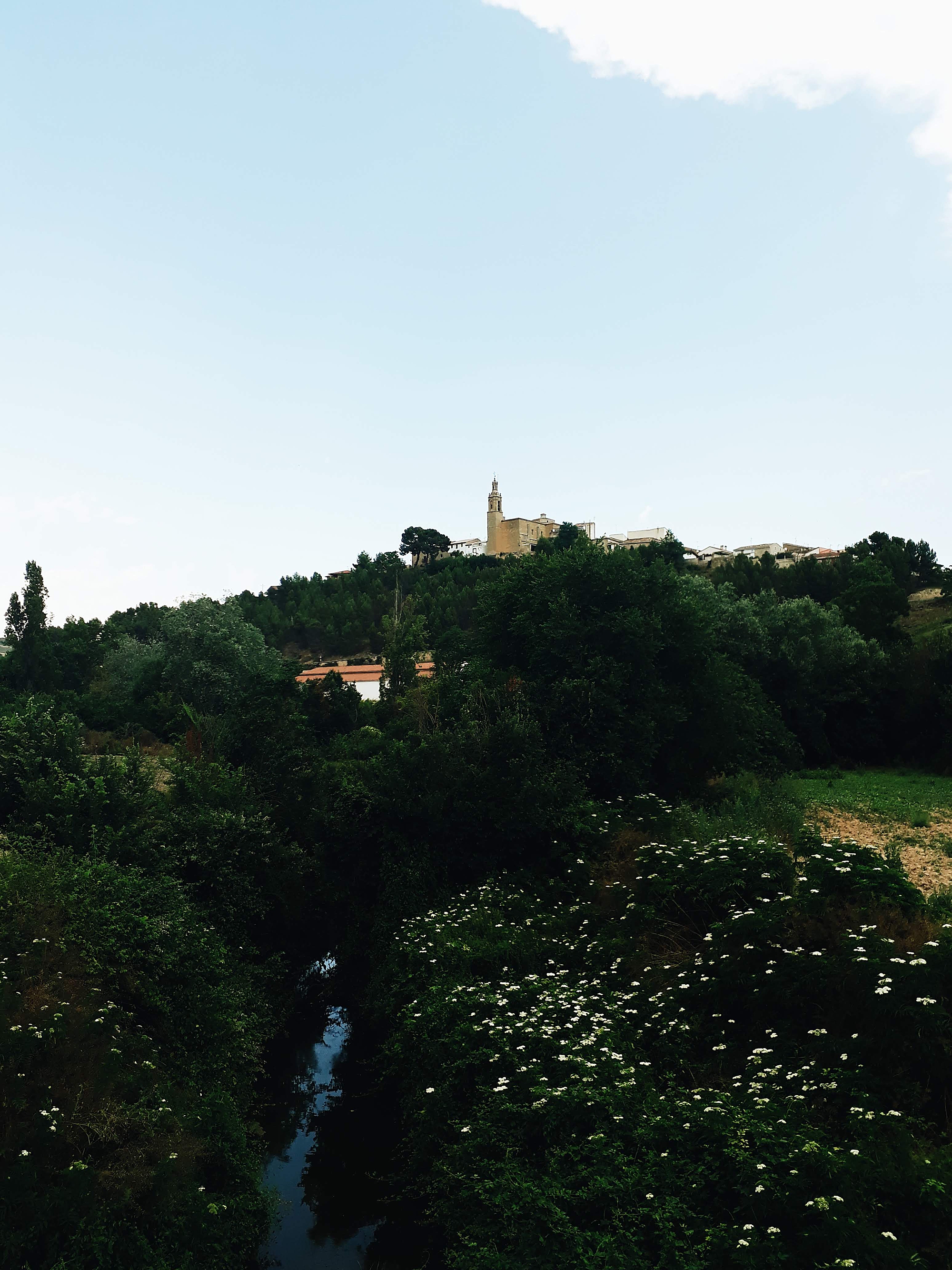
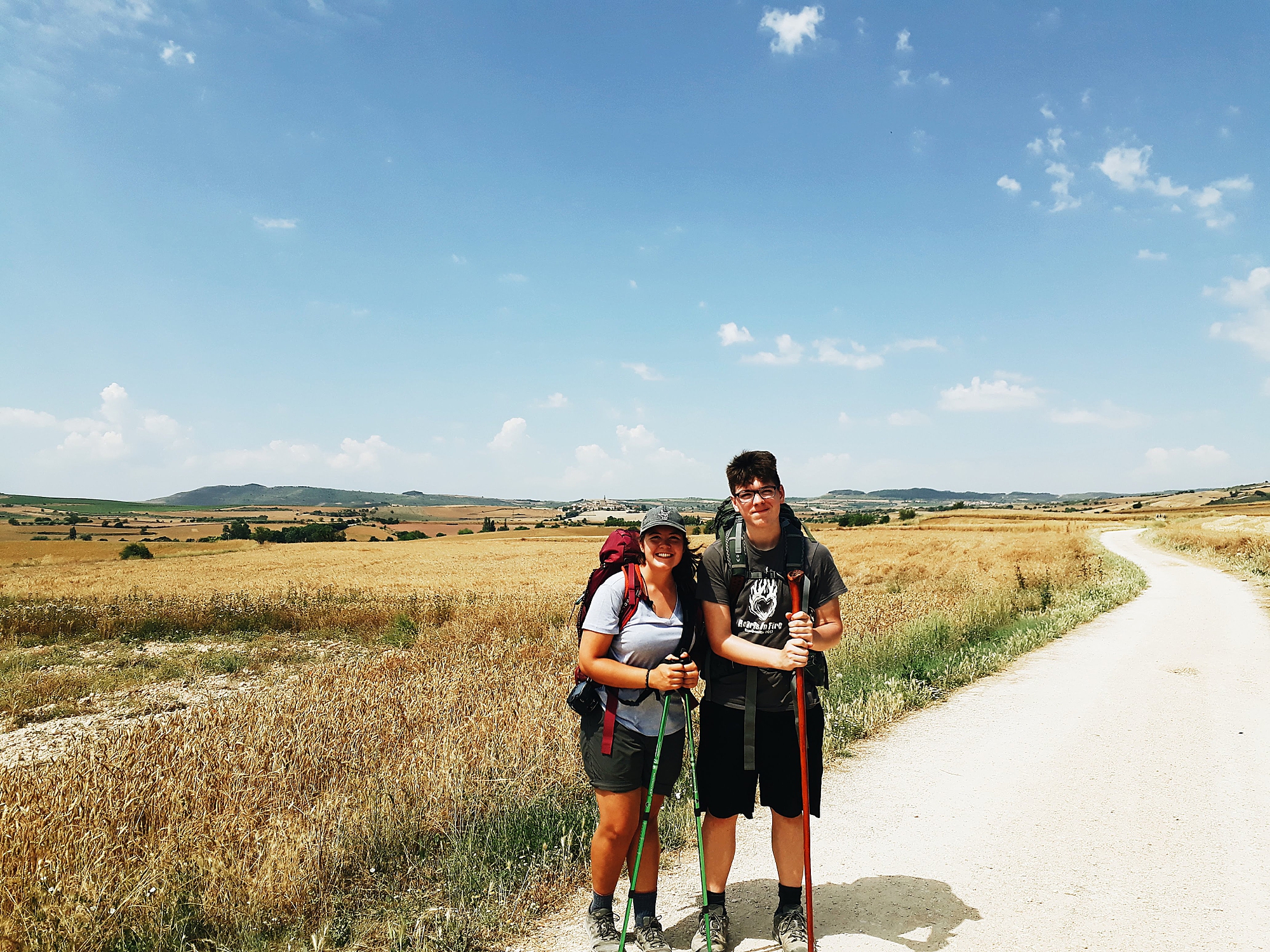
That night we could hardly believe we had officially been walking for one full week. I think we both knew that if we had survived this first week, we would really, truly make it to Santiago. (This day also happened to be the 4th of July. Neither of us even thought about that as we were walking, but that night we splurged on one of the pilgrim dinners and there were several other Americans at our table and we all realized it was the 4th of July and it was super nice to celebrate our country together.)
Stay tuned for week two!!
Xoxo,
Mary Kate
We walked portions of the Camino in 2018, 22 days, and are starting our 2nd Camino on April 5th. We started in Pamplona and stayed there at the same Albergue as you. We fly into Dublin then a separate flight to Lourdes and then god-knows-how to St. Jean. This is a wonderful blog, particularly for those who would never make this journey. I’m reluctant to keep reading this as it is so complete and detailed that I don’t want to have to compare it with our upcoming pilgrimage!!! We learned about proper pack weights on the first walk. I hauled a cooking stove across Spain; never used it. We are using 33 liter packs and will tone down the weight to no more than 20#
You might advertise this blog a little bit. There are several websites devoted to the various caminos and thousands of people who would gain much from reading this fine travel blog. The one we read is ‘Ivars’ and you can easily link this travelogue to their site.
Thanks for this, MK, you are both a solid writer and photographer!! Charley and Karen
Share Post:
1 Comment on El Camino De Santiago || Week One